


















The Gilchrist Valet Service:
• Online or over-the-phone sales purchase and delivery
• Service pick-up and delivery
Experience the Gilchrist Difference:
• Family owned and operated
• Purchase process tailored to your needs
• Three stores to choose from where each General Manager personally assists you
• Customer relationships do not end with the sale
• Each experience is special when you work with Gilchrist Automotive


54 Catholic
By Michael H. Price
By Brian Kendall
serving the population here and 27 other surrounding counties for more than 100 years, has developed and implemented a case-management model to ending poverty. And it’s working.
By John Henry
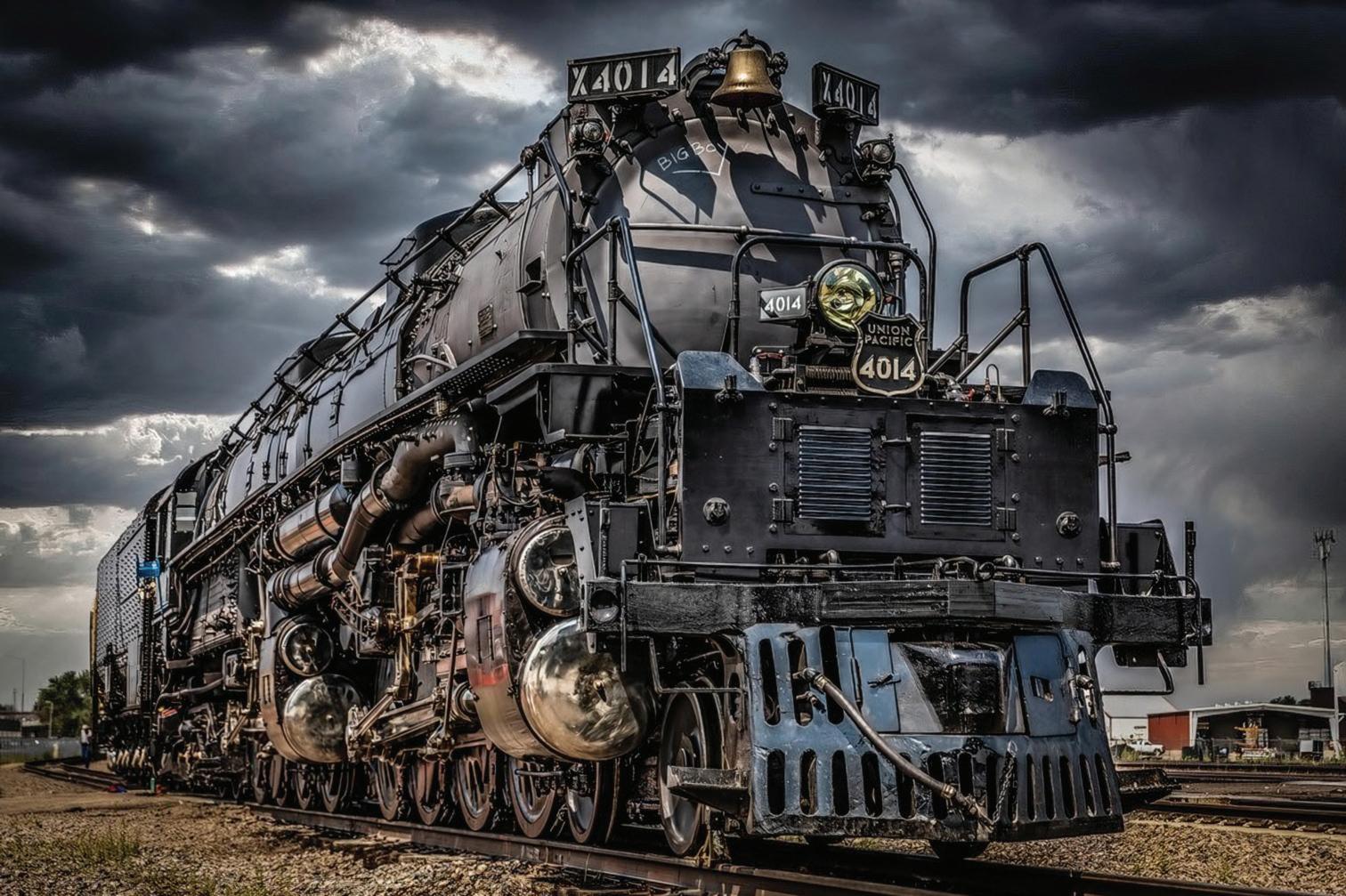
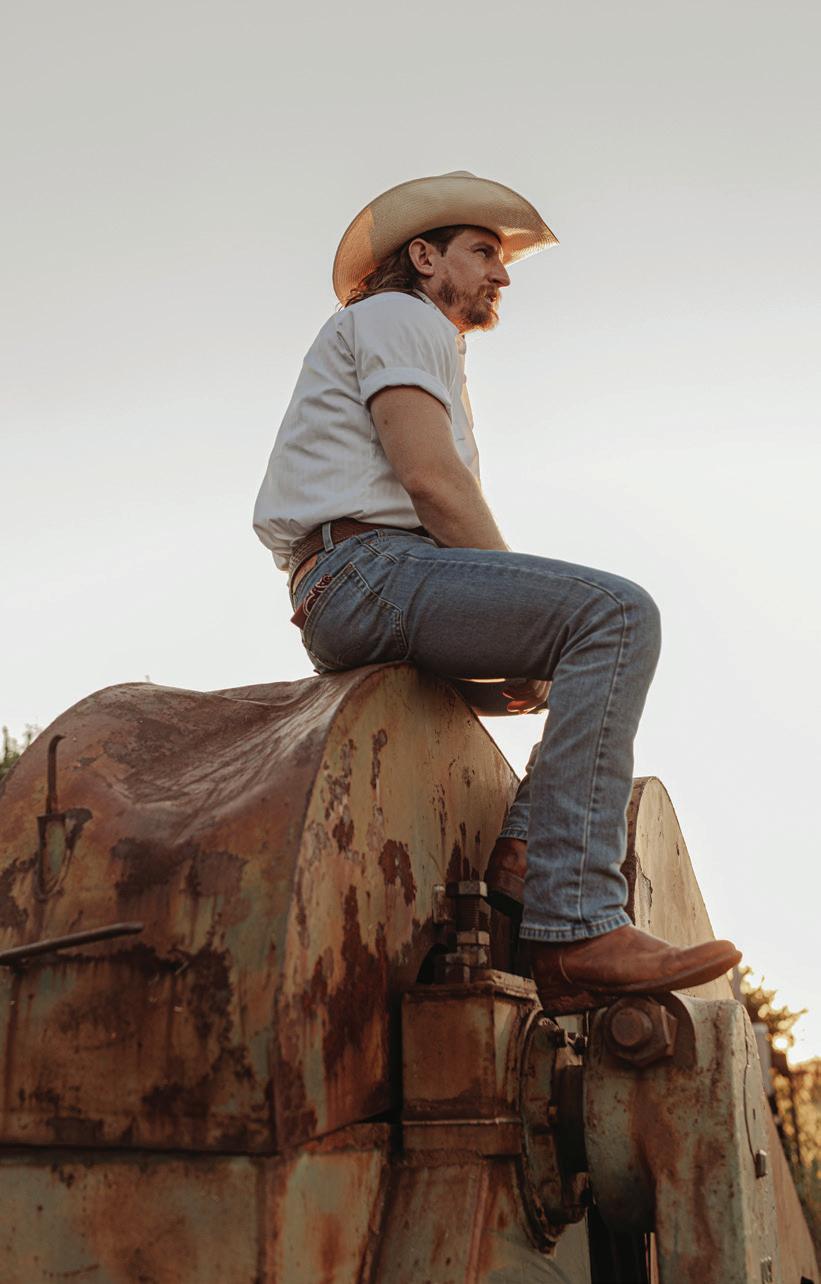

18 City Dweller
Bob Newton is the loyal guardian and committed custodian of a political cartoon collection that grew to more than 400 toons.
22 Calendar
The Lone Star Film Festival, “Mrs. Doubtfire,” Robert Earl Keen, and Leon Bridges are what’s happening in November.
24 Fort Worthian
Haley Naegele has a jewelry line designed to inspire conversations about the Bible.
26 Cowhand Culture
Paschal graduate Alan Bean: astronaut and artist.
28 Music
Fort Worth is front and center of favorite son Leon Bridges’ new album, Leon
30 People
Christian Wallace had a story to tell. Taylor Sheridan turned it into “Landman.”
32 State Lines
Boerne: pop. 23,004.
34 The Reverie
Musings, commentary, and insights about the people, places, and things that make our city great.


Having recently written over 5,000 words about public transportation (which you can read on Page 44), I’m going to circumvent the standard practice of an editor’s letter addressing the subject matter of the cover story, and, instead, I’d like to bring your attention to the magazine’s masthead, which we call the “Us” section (Pages 10 and 12). This is a small area of the magazine where you get to learn a few things about those who help bring this incredible publication together. Every month, our creative and editorial teams engage in a quick brainstorm to think of a clever question or request that might elicit funny or insightful responses. And this month’s, well, it just might be the coolest thing we’ve done in the six years I’ve been at the magazine.
To honor our veterans and fallen servicemen and servicewomen, we asked for staff members to provide us with details and images of family members who had served or are currently serving in the armed forces. And, as expected, the responses were incredible. I heard stories of service, of heroes, and of sacrifice (all of which you can read in the section) that will stay with me for a very long time. As the son of two career military parents and the grandson of a career military grandfather, I never tire of saying thank you to all who serve this incredible nation.
And there is one specific story I want to point out.
I had everyone email me their images, info, and write-ups so I could cull through and edit them. When Tammy DeNapoli, one of our wonderful account executives, sent hers, I sent a quick response — something along the lines of, “Great! Thank you, Tammy!” I don’t recall the circumstances, but I clearly hadn’t read what she sent and, for whatever reason, was simply acknowledging receipt. A few days later, when I was organizing the emails from the staff, I saw that one of her cousins,
Holland Langham, was killed in action in Vietnam at the age of 18. I can’t explain how I felt when I first read those words and when I looked at his picture, beyond saying that I’ve thought about it a lot since.
I emailed Tammy and apologized for my previous response. She was, of course, very understanding and offered a wonderful memory about Holland. She was young, only 6, when he died, but she remembers he would carry her on his shoulders, even when he was riding his bike. “I would be sitting on his shoulders as he peddled his bike. I can’t believe my mom let him do that, but he was always someone you could trust.”
Thank you for sharing, Tammy. And to all those who served or are currently serving, I think I speak for all of us at the magazine when I say thank you — the biggest thank you in the world, really.
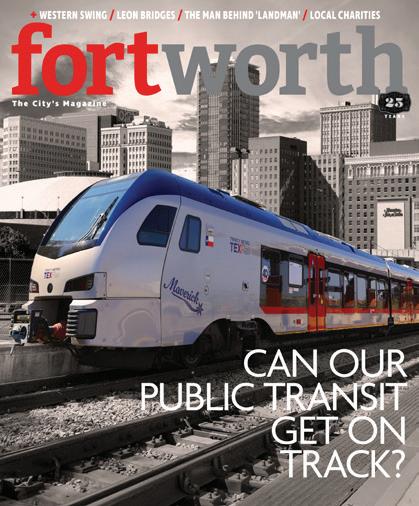
ON THE COVER:
No, there is no spot in Fort Worth where such a view behind the TEXRail exists. Call it artistic license, but we did some doctoring to make the cover as Fort Worth-y as possible. Both the photo of the train and the photo of the skyline were taken by Richard Rodriguez.
CORRECTIONS? COMMENTS? CONCERNS?
Send to executive editor Brian Kendall at bkendall@fwtexas.com.
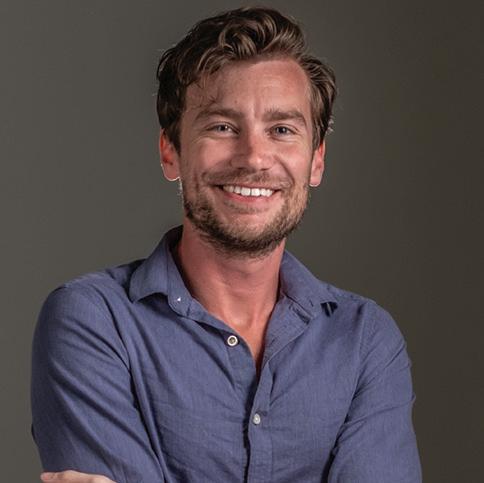
The Schweitzer Group: Your trusted advisors, experienced negotiators, paperwork navigators, problem solvers, time savers, risk mitigators and neighborhood knowers — all in one extraordinary team.

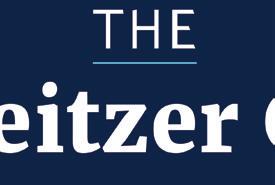


To commemorate Veterans Day on Nov. 11, we want to honor our family members who served. Thank you to all of those who made the ultimate sacrifice.
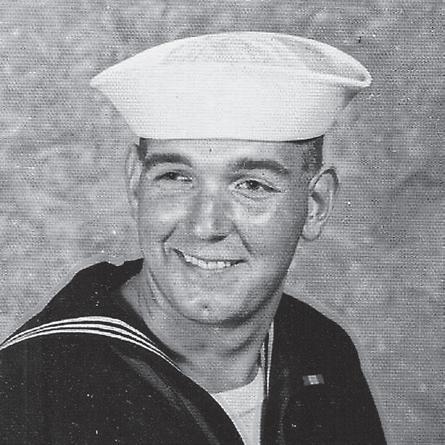
Douglas J. Jenkins, brother Navy,PettyOfficer3rdClass Vietnam
Served as a radioman in Vietnam and cited for bravery after volunteering to be lowered into water from a helicopter to save a downed Navy pilot. After a two-hour search, both he and the pilot survived.

Max Truesdell, uncle Navy,Seaman Korea
Two years Navy (1948-49) and six years Naval Reserves (1949-55). Served aboard USS Odax, a Tench-class submarine.
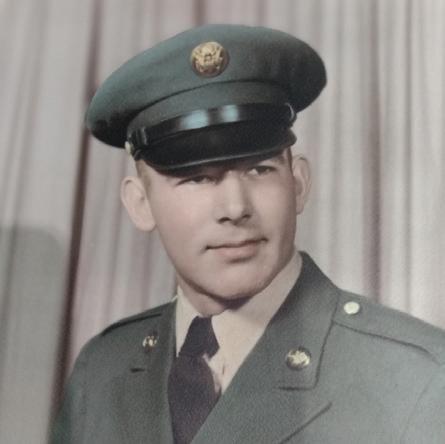
Pat Sublett, grandfather Army, Specialist
Served in the U.S. Army Electronic Proving Ground, which tests and evaluates new technologies for the Department of Defense.
Richard Don Coan, grandfather Army, First Lieutenant Executive Officer, Howitzer Battery, San Marcos, Texas (1963-66). Awarded two Outstanding Soldier Awards

John O. Silvas, grandfather Army,Corporal World War II
Was first gunner on a 57mm anti-tank gun in the 4th Armored Division of General Patton’s Third Army. Landed at Utah Beach a few weeks after D-Day. Wounded late 1944. Purple Heart.
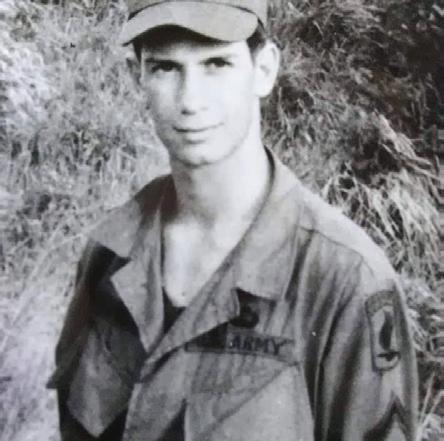
Holland Langham, cousin (butlikeabrother) Army,Corporal Vietnam
President of his school’s National Honor Society and secretary of the band, Holland served in the 173rd Airborne Brigade, 503rd Infantry Regiment in Vietnam. Recipient of the Purple heart, he was killed in action in Binh Dinh Province after engaging in a firefight with enemy combatants while on night-time perimeter guard duty in May 1968. He was 18.
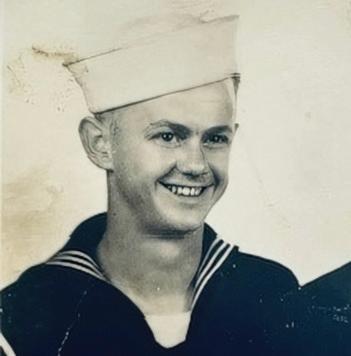
L.C. Kirkpatrick, father Navy,PettyOfficer3rdClass World War II
Was 18 when he entered the Navy and served as a radarman.
owner/publisher hal a. brown president mike waldum
EDITORIAL
executive editor brian kendall contributing editor john henry digital editor stephen montoya contributing writers tommy cummings, malcolm mayhew, michael h. price, charlotte settle, shilo urban contributing photographers darrah hubbard, richard w. rodriguez copy editor sharon casseday
ART
creative director craig sylva senior art director spray gleaves advertising art director jonathon won
ADVERTISING
advertising account supervisors gina burns-wigginton x150 marion c. knight x135 account executive tammy denapoli x141 account executive jim houston x158 territory manager, fort worth inc. rita hale x133 senior production manager michelle mcghee x116
MARKETING
director of digital robby kyser director of marketing grace behr events and promotions director victoria albrecht project manager kaitlyn lisenby
CORPORATE
chief financial officer charles newton founding publisher mark hulme
continuedonpage12











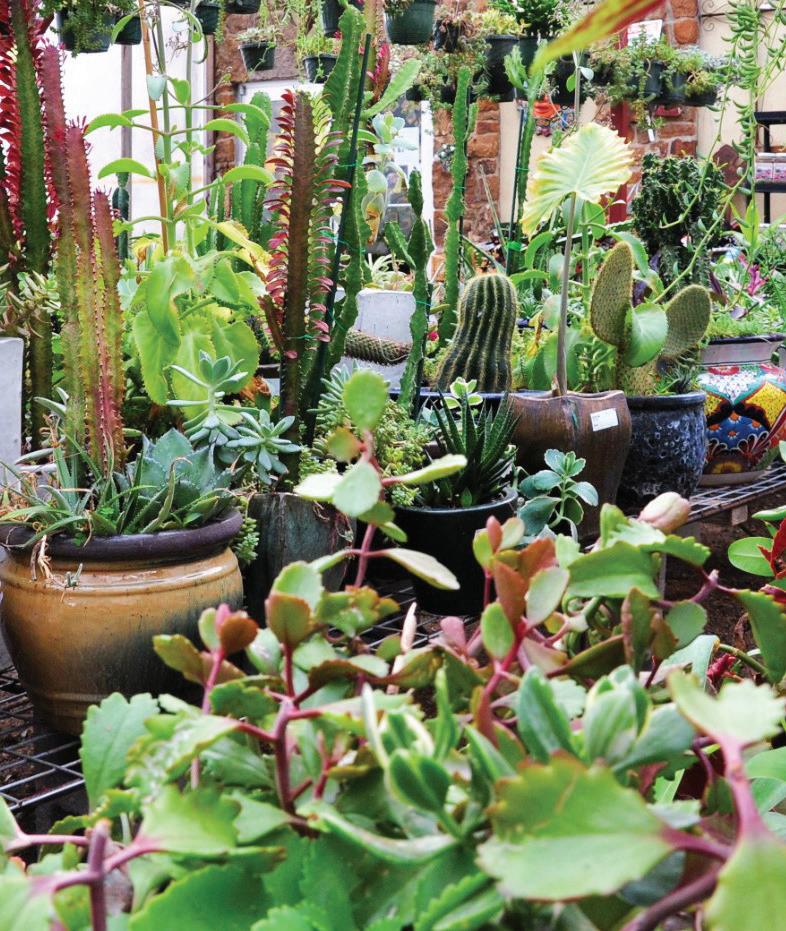


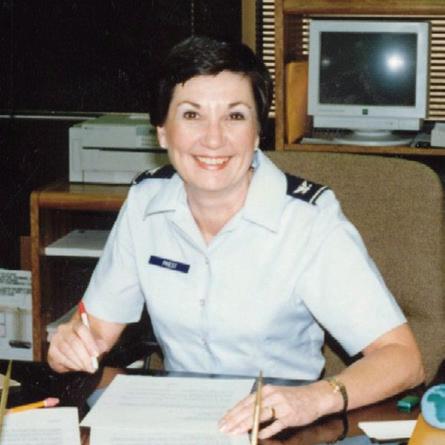
Retired Col. Patricia Priest, mother,AirForce Thirty-year military career. Awarded Legion of Merit for exceptional meritorious conduct. Retired as Colonel, 2002.
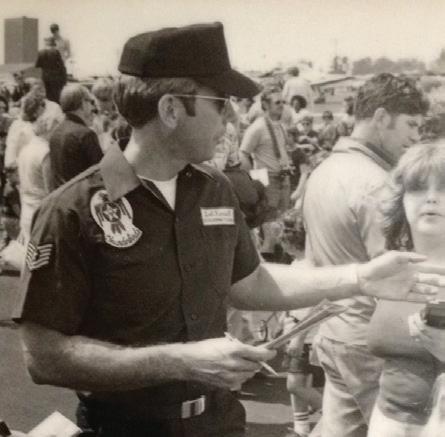
Retired Master Sgt. Robert Kendall, father AirForce,Vietnam
Twenty-one-year military career. Served in Vietnam during Tet Offensive (1968-69). Six years U.S. Thunderbirds (1972-78), where he received the Fitzgerald Trophy awarded to top noncommissioned officer of the year. Meritorious Service Medal.

Retired Col. Royce Priest, grandfather AirForce,WorldWarII Flew P-51 Mustang in European theater and shot down five enemy aircraft, becoming a flying ace. Received Distinguished Service Cross for extraordinary heroism after landing in enemy territory to rescue downed squadron commander. Retired as Colonel, 1968.
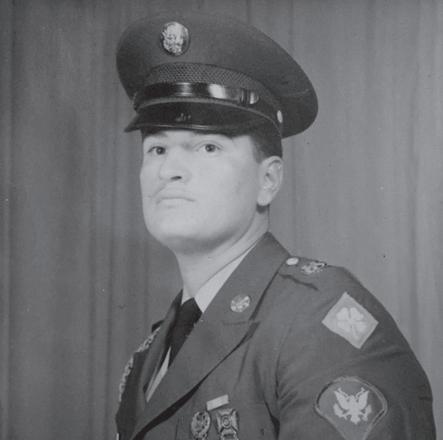
Robert Montoya, father Army,Corporal Vietnam
Spent a year in Nha Trang, Vietnam, during Tet Offensive (1967 -68).

Evan Ross McNeal, cousin Navy,PettyOfficer1stClass Served as field medic for Marines.

Edward Wilson Cowan, father,Navy,SeamanFirst Class,WorldWarII
Initially unable to enlist due to poor eyesight, a desire to serve had his well-connected father ensure he was able to join the Navy in the Pacific theater. Served 1945-46.
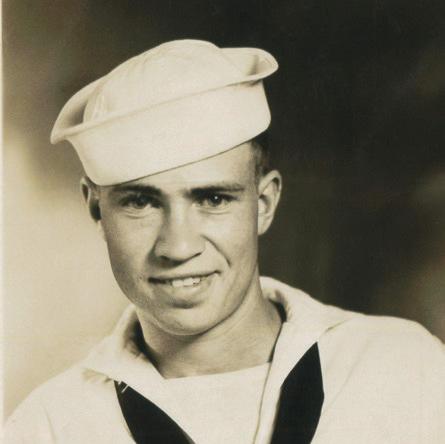
Ector S. Gleaves, father Navy,WWII
Ector and both his brothers served in the Navy in the Pacific theater. A discovered war-time postcard to their mother from his brother, Eddie, simply said, “I’m OK.”

Howell, grandfather Army,WWI
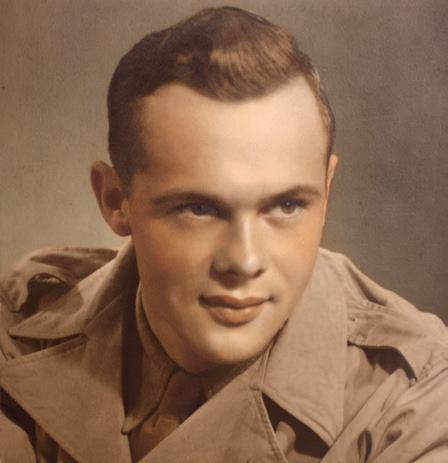
Harold Waldum, father Army,Sergeant;AirForce, Civilian(GS-14)WorldWarII Awarded Silver Star for gallantry in action at Lorengau, Manus Island, when, from an exposed position on his craft, he delivered an accurate and prolonged fire on enemy combatants for the purpose of evacuating wounded men.

DIGITAL EDITION:
The virtual editions of both current and previous issues are available on our website. Flip through the pages to read more about the great city of Fort Worth by visiting fwtx.com.
©2024 Panther City Media Group, LP. All rights reserved. No part of this publication may be reproduced without written permission from the publisher.
FortWorthMagazine(ISSN 1536-8939) is published monthly by Panther City Media Group, LP, 6777 Camp Bowie Blvd., Suite 130, Fort Worth, TX 76116. Periodicals Postage Paid at Fort Worth, Texas. POSTMASTER: Send change of address notices and undeliverable copies to Panther City Media Group, PO Box 213, Lincolnshire, IL 60069. Volume 27, Number 11, November 2024. Basic
Subscription price: $21.95 per year. Single copy price: $4.99

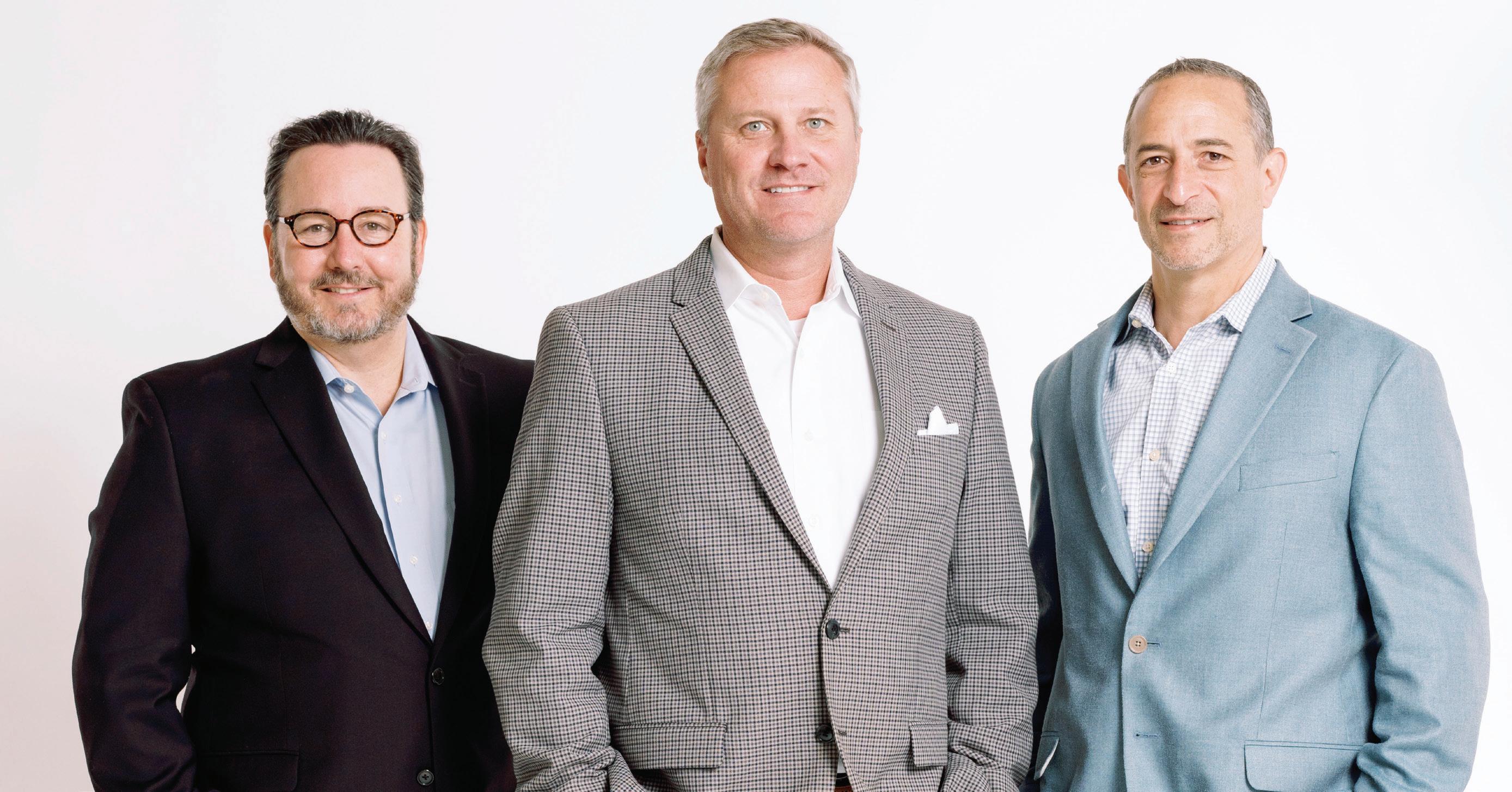




Ed Bass, billionaire and a principal architect of the Fort Worth we know today, spent 40 years building downtown’s Sundance Square — a 37-block, mixed-use development. In referencing the development and its contributions to the city, Ed once famously said, “Fort Worth needed a heart transplant.” But questions, controversies, and quarrels seemed to hover over Ed and wife, Sasha Bass, over a perceived mismanagement of the popular plaza in the wake of COVID-19.
When the cover story, “A Shadow Over Sundance Square,” hit newsstands in May 2021, the vaccine had been rolled out, and businesses had largely, even with some restrictions
in place, reopened. Yet, the Sundance Square Plaza remained roped off, and Bass Performance Hall had only recently begun streaming performances with limited public audiences. Thus, with limited foot traffic, the area’s restaurants and retailers were closing at an alarming rate, and vacancy nearly doubled within a year. And, as the article noted, complaints weren’t limited to COVID-19. Former and current tenants also referenced a sudden shift in management to an outside firm, poor communication concerning rent deferments, a debacle over paid parking, lack of trash pickup, and little to promote its merchants as troubling trends.
What was happening to the jewel of downtown?
In April 2021, Ed and Sasha Bass granted Fort Worth Magazine a rare opportunity to ask questions, and the pair shared their vision for the future of Sundance Square. This interview, a 90-minute sit-down at the Sundance Square Pavilion, was the culmination of months of research and reporting by the cover feature’s writer, Scott Nishimura. And, ultimately, the article revealed the Bass’ plan to turn the development into a highly curated art district. Whether the pandemic was a convenient excuse to begin this transition is purely circumspect, but the article, brilliantly written by Nishimura, started a much-needed conversation over the management of a once lively spot.
Today, “A Shadow Over Sundance Square” remains one of Fort Worth Magazine’s most read and commented-on articles on the publication’s website. Two months after the story hit newsstands, Sundance Square Plaza reopened to the public and has since returned to being a hotbed for safe, family-friendly weekend night entertainment. And, while frustrations no doubt continue, many shops left vacant have reopened with new tenants that align with Ed and Sasha Bass’ vision for the future of the development.
As Sasha Bass stated at the end of Nishimura’s article, “The vision [of Ed Bass] persists. Where’s the faith? Where’s the faith? Where’s the commitment to that vision? That’s the place I come from.”




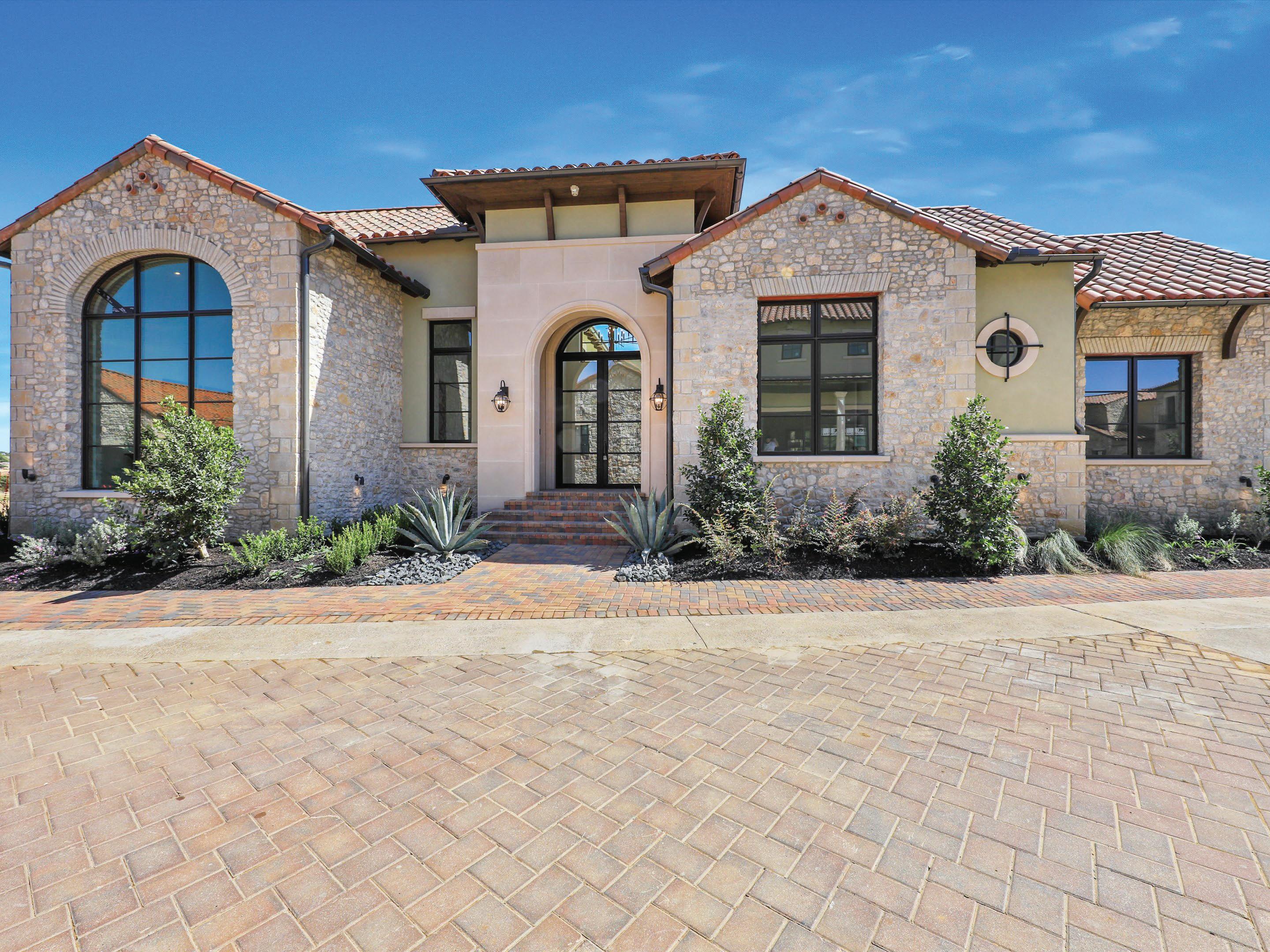



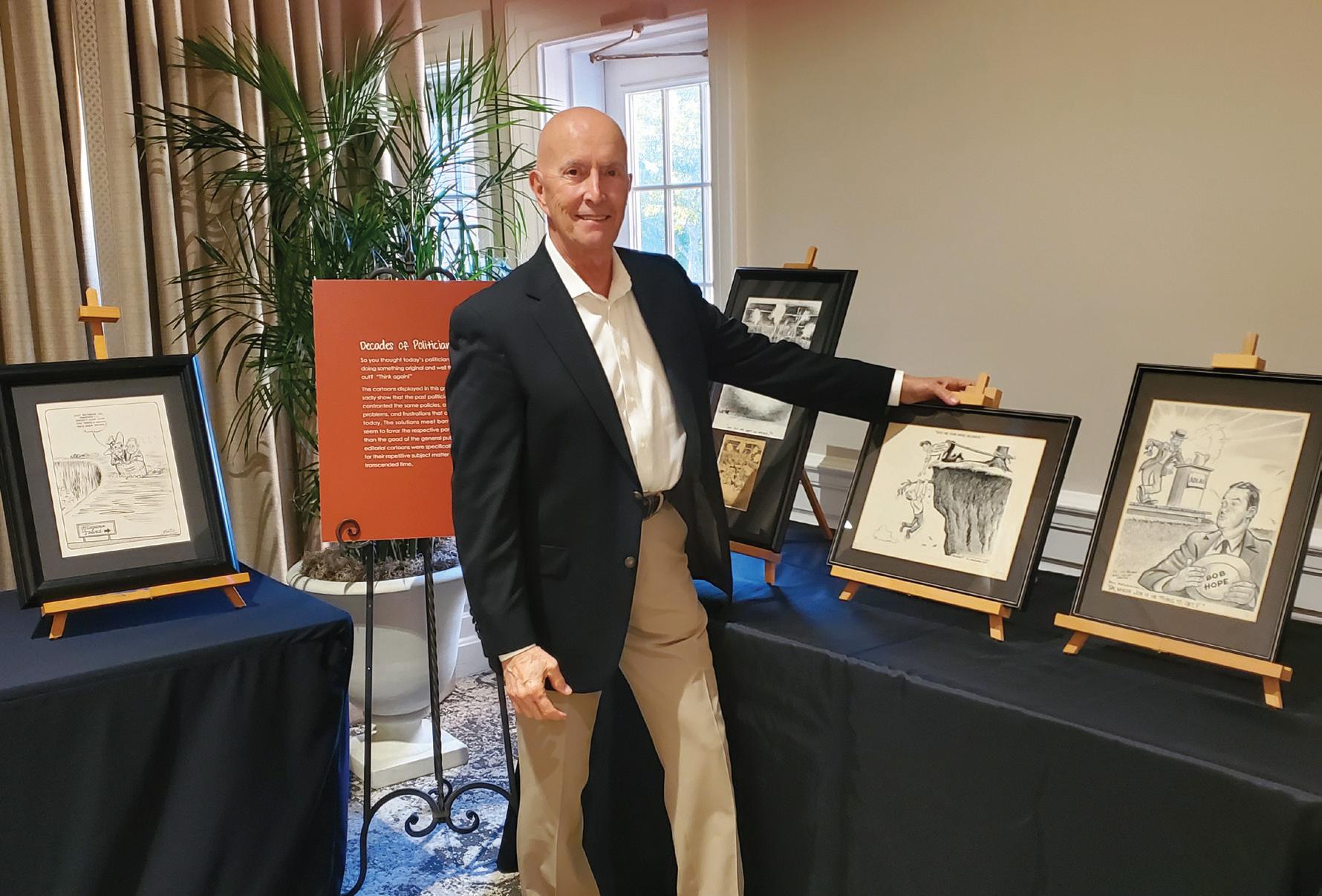
by John Henry
Bob Newton is the caretaker of a unique collection started by his mother in the 1950s.
Bob Newton sits in the office in his home near Granbury. Relics of another time and place hang from the room’s walls in every direction.
They are newspaper cartoons, a collection his mother started more than 70 years ago. At the time of her passing, they were passed to the son, who has been a loyal guardian and committed custodian of the collection that grew to more than 400 original cartoons, most of them signed by the artists.
His is believed to be the largest collection of original political cartoon art in the country, including work from 13 Pulitzer Prize winners. All of them are powerful displays of clever — and very talented — artists’ visual
satire and, in some cases, subversive commentary.
Free speech is a glorious thing. Thank you, Founding Fathers and the Enlightenment thinkers who influenced them.
Most importantly to Newton are what they represent, particularly during presidential elections every four years. For most of these, one could simply sub out the actors of the day and print today. The issues are exactly the same generations later.
It’s simply the best evidence that history informs not only about the past, but the present and future, too.
“We have the last of the Mohicans, a dying art,” Newton says. “Everything you see here is an original. There’s not one thing here that was a
copy of or duplicate.”
Helen Newton became politically active with the Eisenhower 1952 presidential campaign, Bob Newton tells me. The family lived in Oakhurst. Newton recalls Helen eventually becoming the chairwoman for the East Side for Eisenhower, or, more likely, deploying some liberty here, “East Siders for Ike.”
“She was my hero,” Newton says. “She was a crusader.”
She became a prolific letter and opinion writer. Her political activism led to friendships and acquaintances with some of the players. Among them was U.S. Rep. Charlie Wilson, the anti-communist East Texas congressman whose story would eventually be told by Hollywood.
“Thank you for your letter to the Lufkin News opposing the Ku Klux Klan,” Wilson wrote to Helen in August 1984. “I have never thought that freedom of speech was intended to protect those who incite racism and violence against anyone, much less a significant portion of our local population.”
The cartoon collection began around 1953. Helen was seated next to Pulitzer Prize-winning cartoonist Tom Little at a banquet in Nashville. They struck up a conversation, and he eventually asked her to come by to see him at his office at The Tennessean the next day. While there, he gave her an original cartoon, a sketch of President Eisenhower looking for a needle in a haystack.
An obsession was born.
She began writing to cartoonists, who would send her their original work.
“Some of these cartoonists became her good friends,” says Newton, who calls his mother “the original networker.”
Subject matter of the collection includes a number of pieces related to NASA. Helen worked as an administrative assistant during NASA’s earliest days in Houston.
“She got to know all of the original astronauts,” Newton says. “Most of
these are signed by them.”
Newton says she got to know the cartoonists so well that she was able to, say, barter with them. ‘If you draw something about Apollo 12, send one that will be printed, and I’ll have the astronauts sign the original.’”
Newton on occasion will travel to various spots with 80 or 100 of the cartoons on display. We met him at the Fort Worth Club, where the curious wandered through the maze of art history.
Perhaps the most powerful, at least to me, was Newton Pratt’s 1939 illustration depicting a boot labeled “Nazi Aggression” stomping out the word “Appeasement.”
“There is no ‘peace’ in appeasement.”
It’s a message that was relevant then, at the beginning of Western civilization, and to the current day. Newton, 83, has begun thinking what to do with his treasure of history whose lessons, like Pratt’s cartoon, will be relevant 50 and 100 years from now.
When Helen began her collection 70 years ago, Newton says there were upwards of 275 newspaper cartoonists. There are still some good ones out there, but their number has dwindled as the influence of newspapers and the fractured news platform has waned. And many of those create using some sort of software, not simply the hands God gave them or the rudimentary tools of the time.
TCU and Baylor, Newton says, have expressed interest in being the collection’s repository.
The winner of the collection, whether that be the universities or another institution, will be the one who makes the secret, solemn vow.
“First and foremost, I want them to be displayed,” Newton says. “It is to not have them put in the school vault. There’s enough here to actually, I think, have a dedicated museum.”
History, not to mention the greatness of humor and satire, in some cases, deserves nothing less.
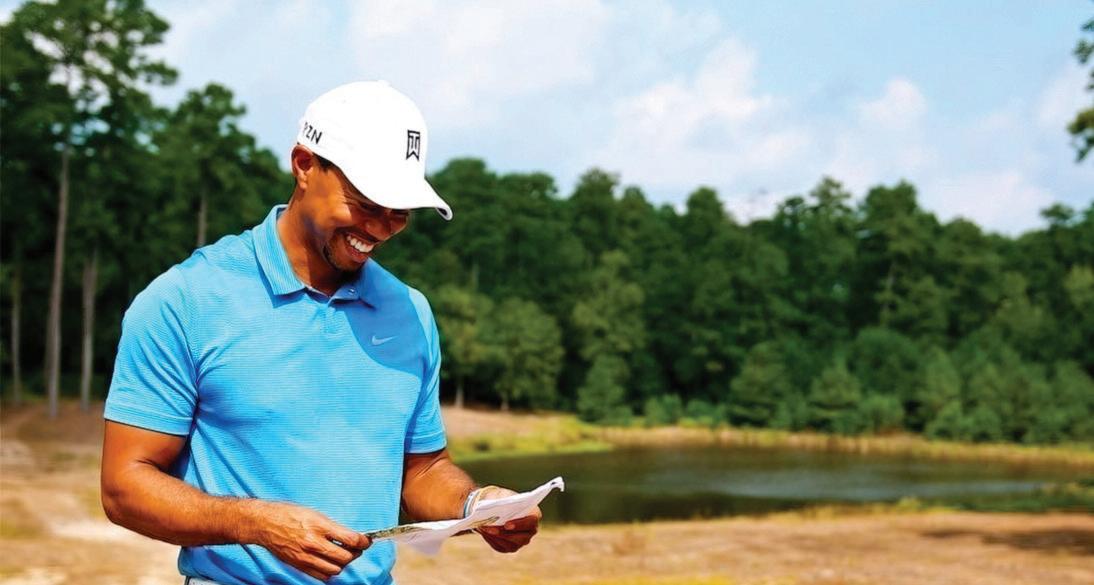
Not that Jack. Tiger Woods is carving out 18-hole Bluejack Ranch in Aledo.
The on-again, off-again plans for a championship golf course in Parker County are back on, and this time on solid footing, with one of the game’s most historic figures as part of the enterprise.
The more than 900-acre Bluejack Ranch development in Aledo will encompass more than 600 home lots and a club built around a Tiger Woods-designed course.
The development will be distinctly local, even with Woods’ participation.
The project marks a homecoming for developers Andy and Kristin Mitchell, both TCU graduates and founders of the Bluejack brand.
Bluejack National, an award-winning, world-class private golf community built in 2014 near Houston, was Woods’ first course design in the U.S.
Another partner is J.J. Henry, the former TCU golfer who had the original vision to build a championship-caliber course on the site, which has been purchased by Mitchell’s Lantern Asset Management from landowner Ryan Voorhees.
“We’re bringing that same Bluejack spirit and passion to Fort Worth,” said Woods in a letter to members of Bluejack. “With legends like Ben Hogan and Byron Nelson, the love for the game here is genuine.
“It’s extremely motivating for me to contribute to the golfing legacy of Fort Worth.”
Mitchell and Tiger have become friends since joining forces over Bluejack National 10 years ago. “He’s been a great business partner,” Mitchell says.
Bluejack National has been rated among the best residential golf communities in the country by Golfweek
The Bluejack Ranch golf course is expected to open in the first quarter of 2026, Mitchell says.
Bluejack Ranch will be the fulfillment of a vision by Henry, a longtime PGA Tour pro who has kept Fort Worth as his home, to build a course and club on the property, which sits off U.S. 377 and Kelly Ranch Road. Henry also played on the 2006 Ryder Cup team with Woods.
In November 2022, Henry, along with Bubba Vann, developer of the renowned South Padre Island Golf Club, announced their intention to build a golf course as part of the Avanzada Golf & Ranch Club in the Kelly Ranch development. After the development was not able to be brought to completion, Escalante Golf announced plans to take over. In January, after Escalante was not able to “to reach a mutually beneficial deal structure” with the developer, Voorhees, the project once again came to a standstill.
After Escalante pulled out, Henry called Mitchell to gauge his interest.
by
John Henry
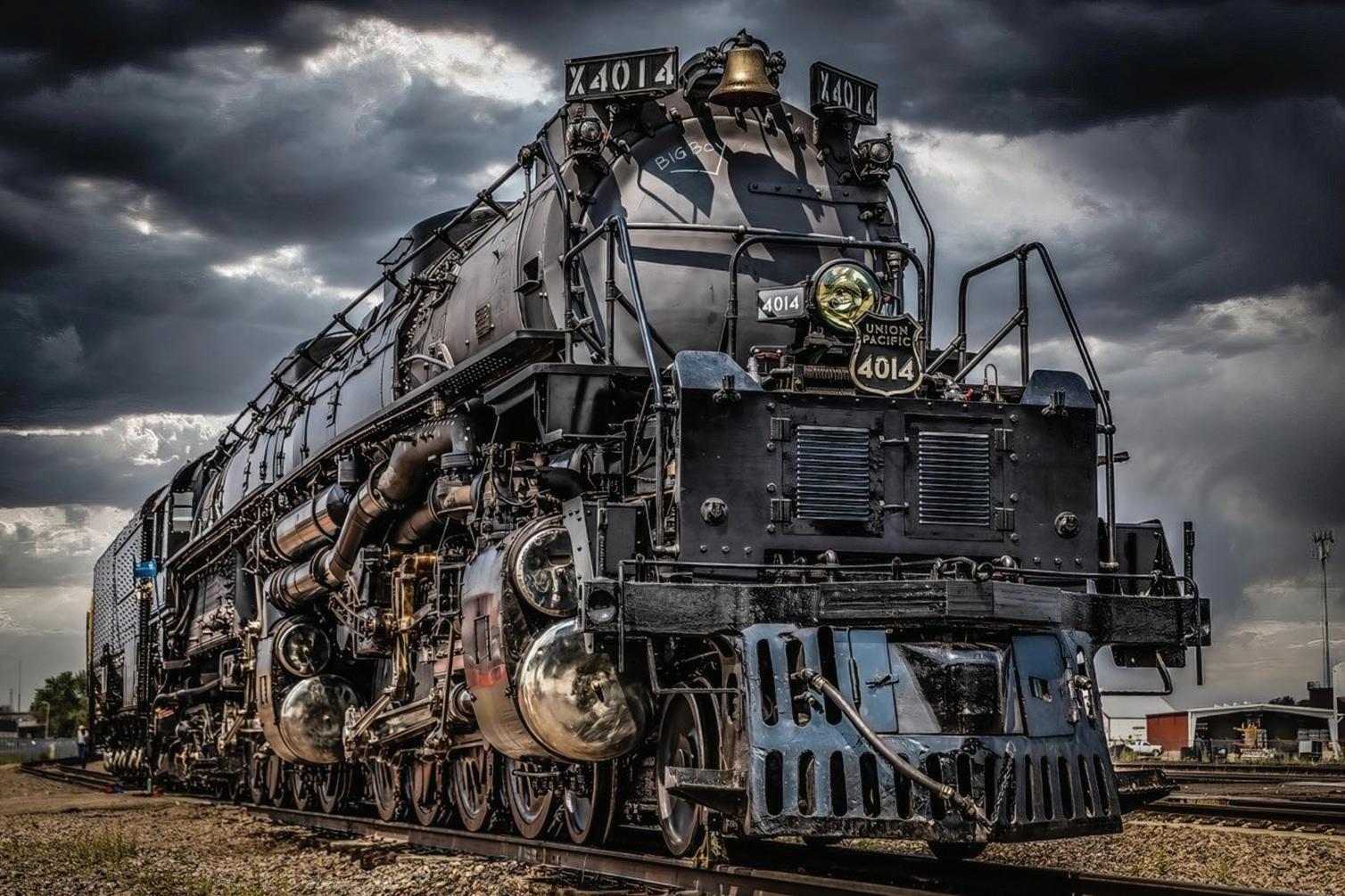
Enthusiasts line up to see No. 4014.
Train enthusiasts across the city came out in droves to see Big Boy last month.
Union Pacific’s Big Boy steam locomotive No. 4014, the only one of the series that still gets around, made a two-day visit to Fort Worth last month at the T&P Station. He was one of a series of locomotives built to haul heavy freight during World War II.
Big Boy’s appearance in Cowtown was part of Union Pacific’s Heartland of America Tour, which included several stops in more than a dozen communities and 10 states. By the time of Big Boy’s arrival here, he had already been in seven states.
Big Boy No. 4014 was delivered to Union Pacific in December 1941. The locomotive was retired in 1961 after having traveled more than 1 million miles in his 20 years in service, according to Union Pacific.
Union Pacific reacquired No. 4014 from the RailGiants Museum in Pomona, California, in 2013.
No. 4014 Big Boy was restored in time to mark the 150th anniversary of the
completion of the Transcontinental Railroad in 2019.
The steel behemoth measures 132 feet long and weighs a whopping 1.2 million pounds. Following behind the massive engine was a special train of Amour Yellow executive cars.
Although only eight of these locomotives still exist, a total of 25 were built. The other seven are in stationary exhibits around the country.
This display is free and open to the public; however, the City of Fort Worth along with Union Pacific officials say the site will be limited in accordance with capacity limits set by both entities. In other words, prepare yourself for long lines and extended standing periods since there will be no seating available.
Until next time, Big Boy.
A smattering of things you might’ve missed
1. Play Ball! A 122-acre complex in Roanoke, the vision of entrepreneur Dave Dickson and former big-leaguer Blake Beavan — think Cliff Lee trade — will soon become “the heartbeat of youth sports in North Texas.”
2. More Whoop! The Leo Potishman Foundation is the latest legacy in Fort Worth to jump onboard Aggieland North, committing $2 million to the construction of Texas A&M-Fort Worth.
3. Nurturing the Nature Center: Fort Worth city officials are discussing handing off management of the Fort Worth Nature Center & Refuge to the Botanical Research Institute of Texas. BRIT officials are said to be “very eager” about that possibility.
4. The Safe Bets: Living here is not the safest bet you can make, according to WalletHub, which ranked Fort Worth No. 121 in its list of safest cities in America. Cowtown, however, is safer than Dallas, Houston, San Antonio, and Austin, which told its police officers to bug off years ago.
5. All Aboard: A Biden administration plan would make Fort Worth a major hub for national rail travel. The mayor says it would be “huge for our economy.”
6. Skyline Shift: After a period of instability, Fort Worth’s tallest building — Burnett Plaza — is back in local hands. Swiss Burnett LLC, a firm led by a Stephenville guy, acquired it from Pinnacle Bank.
7. Hope You Saw That: The rarely seen comet, A3 TsuchinshanAtlas, was visible in the North Texas sky last month. If you missed it, don’t worry. It’ll be back in 80,000 years.
8. Contract Locked Down: The U.S. Army and Lockheed Martin have agreed to a contract to make the Fort Worth defense firm the solesource producer of the Sentinel A4 air-defense radar platform.


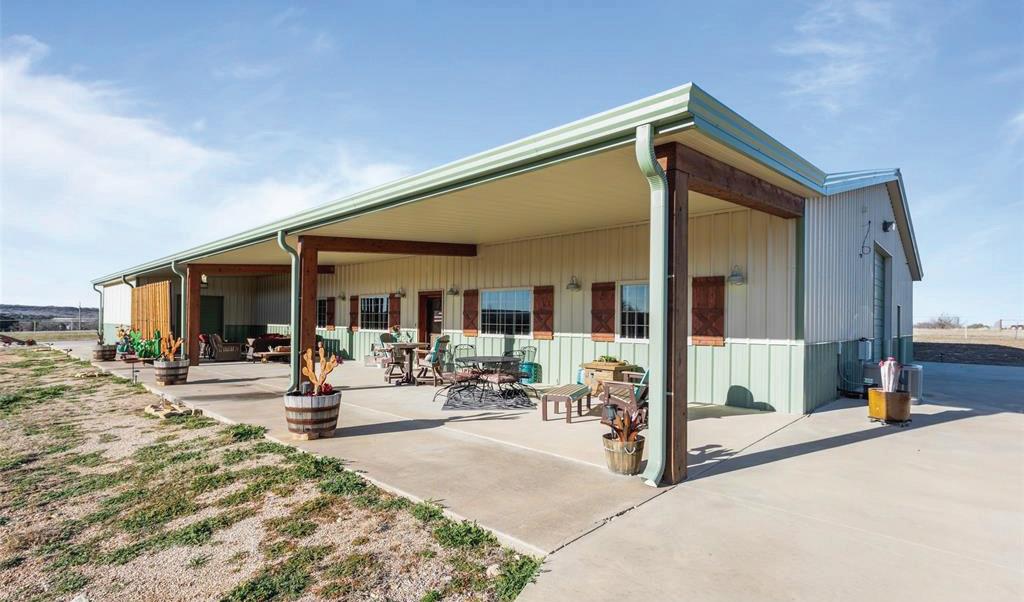
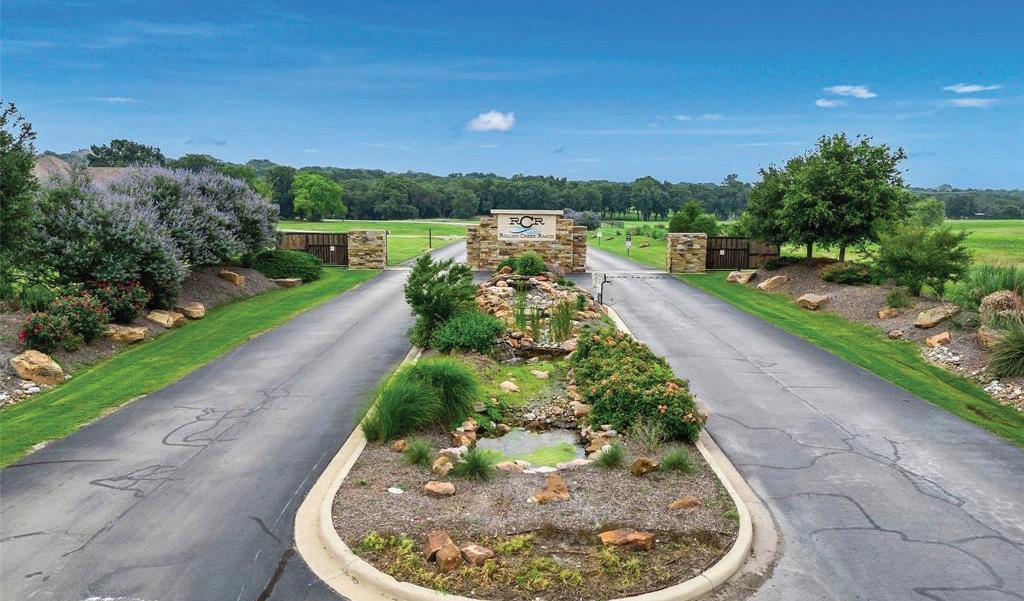










Lone Star Film Festival
The 18th edition of this Fort Worth-based film festival will feature a fascinating collection of shorts, documentaries, and feature-length films at the Kimbell and Modern Art museums.
Cultural District lonestarfilmfestivalcom
5-10
‘Mrs. Doubtfire’
The story of a divorced father assuming the identity of elderly nanny to see his children, popularized by the Robin Williamsstarring movie, gets the Broadway treatment and will perform six nights at Bass Hall.
Bass Performance Hall basshall.com
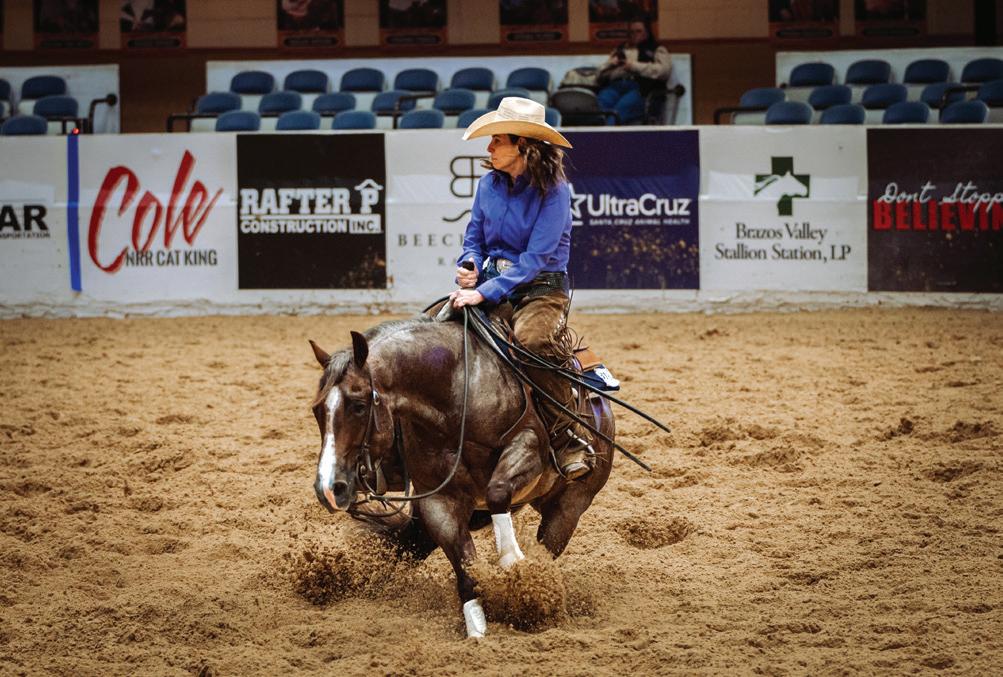
Celebrity Cutting
The Super Bowl of the NCHA’s Triple Crown of cutting horse events, the NCHA Futurity, showcasing the best of 3-year-old cutting horses, returns to Fort Worth. Will Rogers Memorial Center nchacutting.com
The Fort Worth-based, Grammy-winning soul crooner, who just released a record about his hometown, headlines his hometown’s biggest venue. The sold-out show includes support by Charley Crockett.
Dickies Arena dickiesarena.com


The synthpop project of Montreal-based musician Peter Sagar, HOMESHAKE comes to the Near Southside’s Tulips to show off their seventh full-length studio release, Horsie. Tulips tulipsftw.com
Back by popular demand for the third year in a row, the world-renowned BRIT Lightscape transforms the Botanic Garden into a winter wonderland with artistic displays and millions of twinkling Christmas lights.
Fort Worth Botanic Garden fwbg.org

Cowtown’s official Christmas kickoff, the annual Parade of Lights features over 100 illuminated floats marching through 1 1/2 miles of downtown’s busiest streets.
Downtown Fort Worth fortworthparadeoflights.org
29-Dec. 22







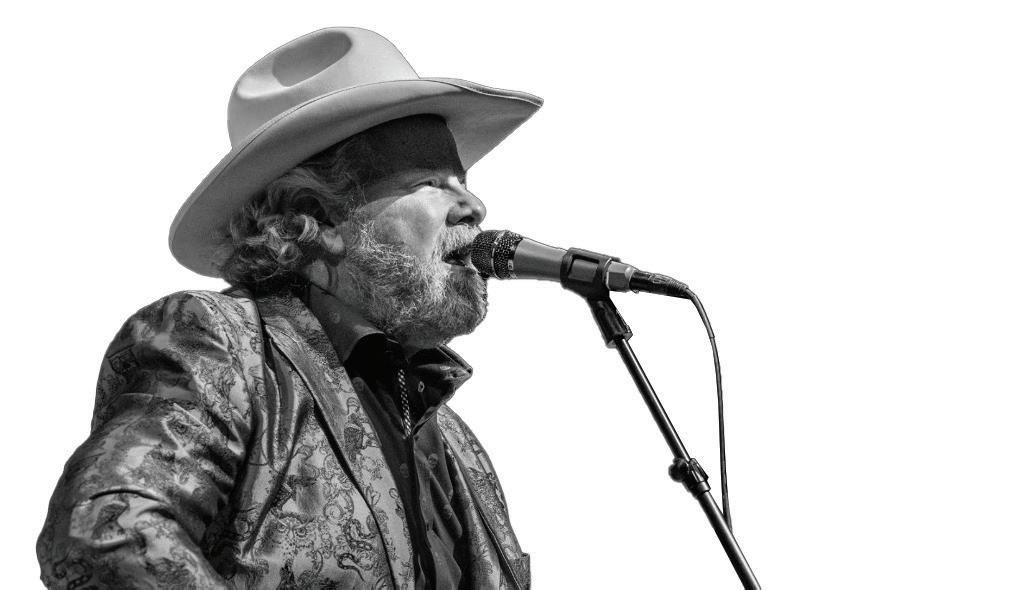
‘Dr. Seuss’ How the Grinch Stole Christmas! The Musical’
A child-proof musical retelling of the classic Dr. Seuss children’s book about a furry green killjoy’s attempts to destroy Christmas in Whoville. Bass Performance Hall basshall.com
In case the title didn’t give it away, this is a play about a play that, yes, goes horribly wrong. Throw in a murder mystery, and this show delivers madcap mania in spades.
Stage West stagewest.org



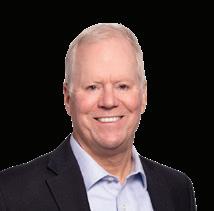
817.371.5585
steve.berry@williamstrew.com




817.343.5686
laura.fauntleroy@williamstrew.com


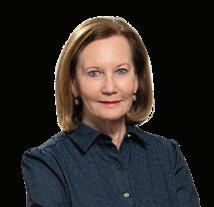
Martha
817.570.9401



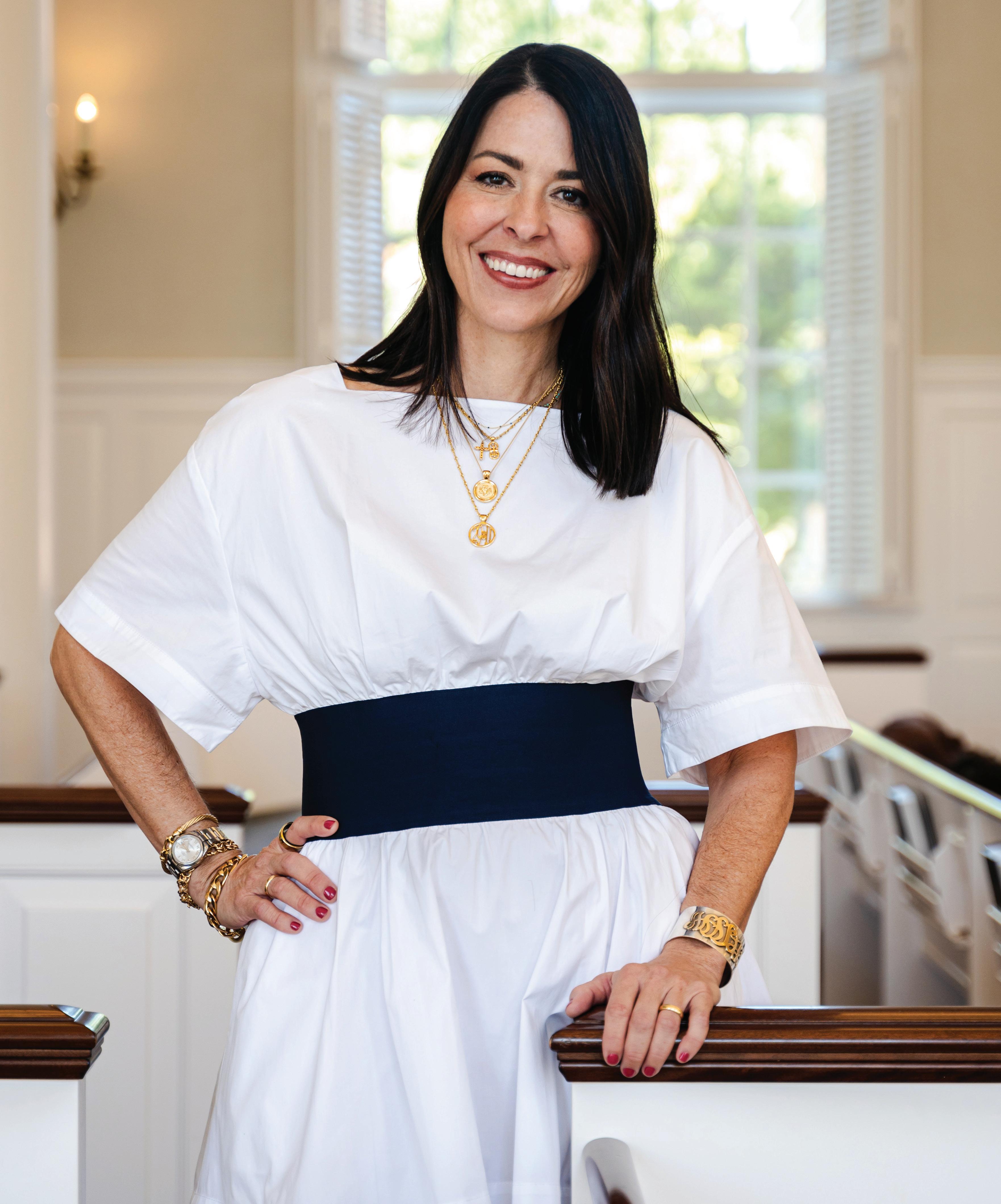
By


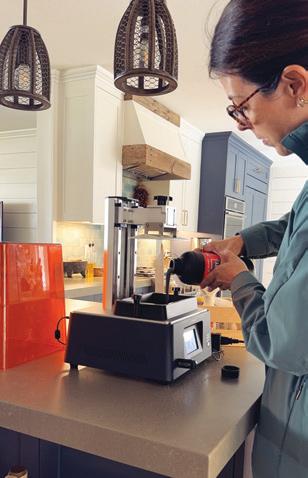
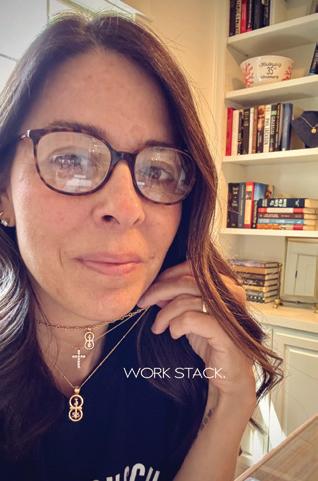
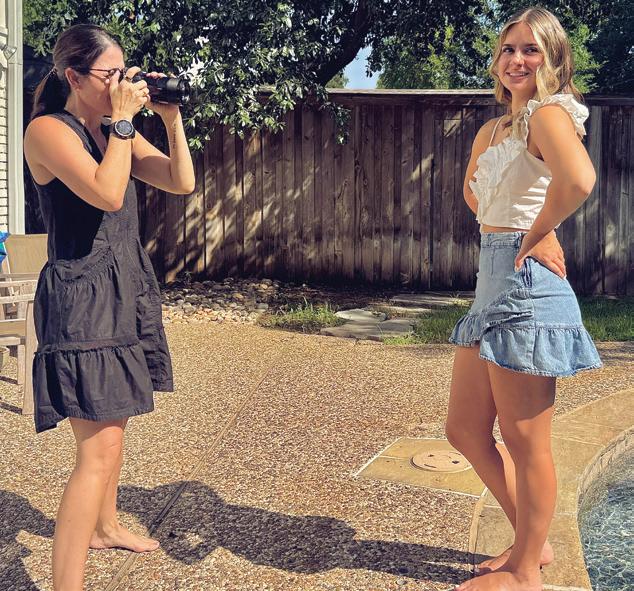
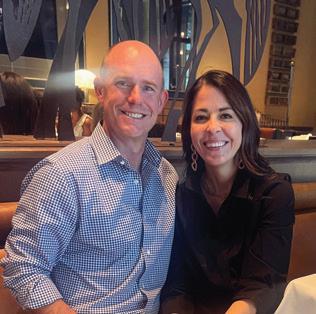
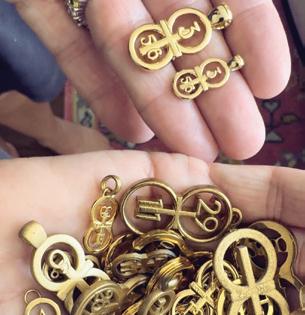
Haley Naegele has found an unexpected outlet for expressing her creativity and faith: jewelry design. Through her new brand, 29 AND 11, she aims to spark dialogue about spirituality.
A lifelong Fort Worthian, Naegele has worked for the federal government for nearly two decades. “My whole career has been focused on dotting i’s and crossing t’s,” she explains. It wasn’t until recent years, as her children got older, that she found herself with more time to reflect on her true passions. “There’s been this nagging voice that there’s something else out there for me,” she says.
A few years ago, during a trip to Charleston, South Carolina, a fruitless search for meaningful religious jewelry sparked an idea. Naegele realized there was a gap in the market for faithbased accessories that went beyond the traditional symbols of crosses and saints. Drawing inspiration from her personal relationship with scripture, she began to envision a jewelry line that would inspire conversations about Bible verses.
Despite having no background in jewelry design — an industry with astronomical barriers to entry — Naegele dove headfirst into the challenge. She spent six months teaching herself CAD (computer-aided design), a process many jewelers outsource to contractors, and purchased a resin 3D printer to test out her creations for scale. “My process allows me to have total creative control over what I do,” she explains. “Learning the way I did and designing the way I do have taken a bunch of middlemen out of the equation.”
Naegele officially launched 29 AND 11 in May of this year, roughly 2 1/2 years after she first spoke her vision out loud. Her signature line of elegant gold necklace pendants features two stacked circles, representing the colon between chapter and verse, with a cross in the middle. The chapter and verse numbers are displayed on the front of the pendant, while the book name is inscribed on the back. As of now, the collection consists of roughly 10 verses that Naegele chose due to
their universality across circumstances and faiths.
Naegele’s mission is to create pieces that are both timeless and meaningful, complimenting any style or look with an expression of faith. “My goal is to always be that permanent piece of someone’s stack,” she says. “Whatever the trend is in five years, ours is still going to look the same.”
For now, 29 AND 11 is an onlineonly business. Though Naegele aspires to get into brick-and-mortar retail eventually, she is currently focused on finding her niche and growing her clientele. “[29 AND 11] has already succeeded for me,” she says. “It has been the greatest spiritual gift to be able to give something to people that inspires them and keeps them in relationship with God on the good days and the bad.”
The name 29 AND 11 stems from Naegele’s personal mantra, the Bible verse Jeremiah 29:11, which she says reminds her to “trust God and hang tight because He’s always on time.” Through her jewelry, she hopes to help others find similar comfort and connection in their faith.
“I want to make it easy for people to start the conversation,” she says. “Our goal is to stay focused on what matters, and that is your relationship with God, however you get there.”
As a lifelong Fort Worthian, how would you spend your ideal day in the city?
“It’s all about where we live. I normally get up and take a walk around TCU. The energy of the campus when school is in session is so good, and I love seeing everyone prep for tailgates on game days. We live on the perfect Tanglewood street, so if the weather is right, the neighbors all migrate outside to watch their kids with a cocktail and catch up. After that, maybe an evening escape from the house for dinner — Le Margot, Quince, Press, or anywhere in the ZIP code. A nightcap on one of our neighbor’s back porches makes for the perfect end to the day.”
Do you have any favorite designers or brands that you like to style with your 29 AND 11?
“On any given day, I’m stacking a Gigi Clozeau chain and a small cross from Croghan’s in Charleston with any and all of our pendants!”

by
Michael H. Price
Alan Bean, a 1949 graduate of Paschal High School, walked on the moon and lived to paint the tale.
Only a star-sailor could have walked upon the moon. Only an artist with moonwalking credentials could paint the moon as observed at close range. Fort Worth’s Alan Bean had the bases covered when he became the only artist to have portrayed the moon from observation firsthand.
Nor would Bean hesitate to say as much: “I’m the only one who can paint the moon because I’m the only [artist]
who knows whether that’s right or not.” Or so he declared upon resigning from NASA in order to honor an overriding imperative to make art.
It was that artistic nature in the first place that had driven Bean (1932-2018) to seek a career beyond the skies. Formal artistic training in 1960 at St. Mary’s College of Maryland had coincided with a hitch in Naval Test Pilot School at Patuxent River, Maryland
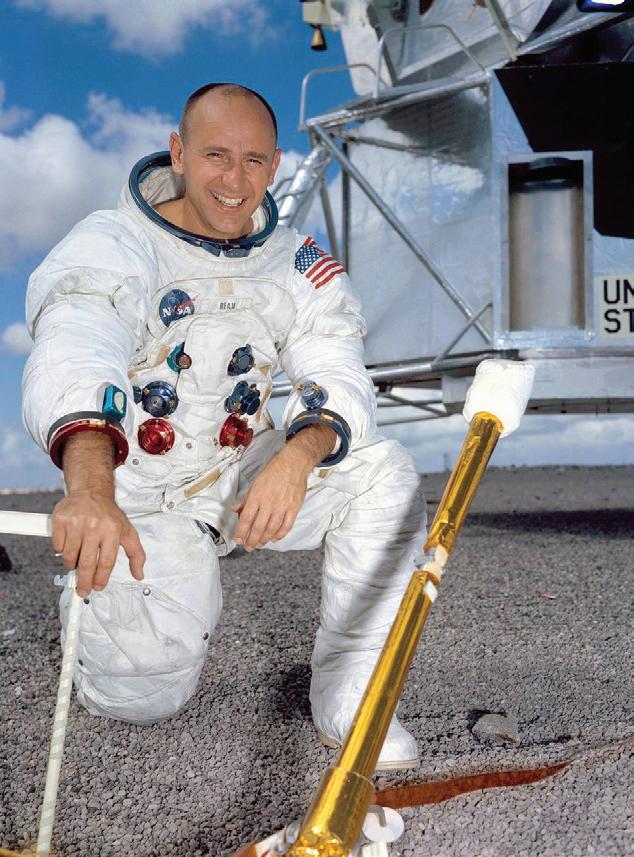
— the beginning of an astronautical career that would lead to his becoming the fourth person to walk on the moon.
Selected to become an astronaut by NASA in 1963 as part of Astronaut Group 3, Bean made his first flight into space aboard Apollo 12, the second crewed mission to land on the moon, at age 37 in November 1969. He made his second and final flight into space on the Skylab 3 mission in 1973, the second crewed mission to the Skylab space station.
As a schoolboy in post-WWII Texas, a 1949 graduate of Fort Worth’s R.L. Paschal High School, Bean was of an ideal age to revel in the moon-exploration mania that gripped the popular culture. No documentation exists of Bean’s interests in entertainment, but safe to call it near-impossible that an imaginative youth of the period could have ignored the most bombastic new motion picture of 1950, Hollywood producer George Pal’s science-fiction epic “Destination Moon.” The attraction was a methodical depiction — speculative but grounded in gravity-defiant realism — of a mission that seemed ever-likelier to take place in real time and real space.
Nor could Bean at 24, as a newly commissioned Naval Ensign from the University of Texas, scarcely have missed Mike Todd’s epic of 1956, “Around the World in 80 Days.” That picture contains a fantastical
short film from 1902, Georges Mèliés’ “A Voyage to the Moon,” with its crowd-pleasing money-shot of a rocket ship’s striking a literalized Man in the Moon smack-dab in one eye.
Speculation? Of course. The fascinating, enigmatic merger of art and science that shaped Alan Bean’s career practically dictates such a response: Something, some alchemy of imagination and ambition, can only have triggered the impulse to visit distant space and bring back practical impressions. As Sir Thomas Browne wrote 3 1/2 centuries ago, “What song the sirens sang, or what name Achilles assumed [while in hiding], though puzzling questions, are not beyond all conjecture.” Alan Bean, a myth-caliber hero of the Cold War’s headlong surge into unknown territory, invites no less a flight of conjecture.
Bean, a native of Wheeler in Texas’ Panhandle region, considered Fort Worth his hometown. His father, Arnold Horace Bean, of the Soil Conservation Service, had settled here for the long term after a round of job assignments in Louisiana. Following high school graduation, Alan Bean enlisted in the U.S. Naval Reserve. He completed a degree in aeronautical engineering at UT–Austin in 1955.
Following training as a Naval test pilot and aviation-safety preparation at the University of Southern California, Bean was assigned to Navy Attack Squadron VA-172 at Cecil Field, Florida, flying the A-4 Skyhawks, during which time (1963) he was selected as a NASA
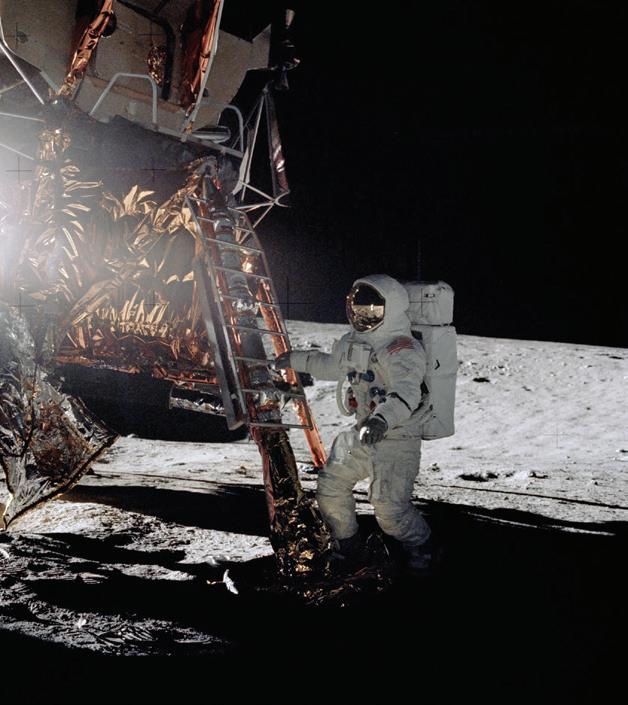
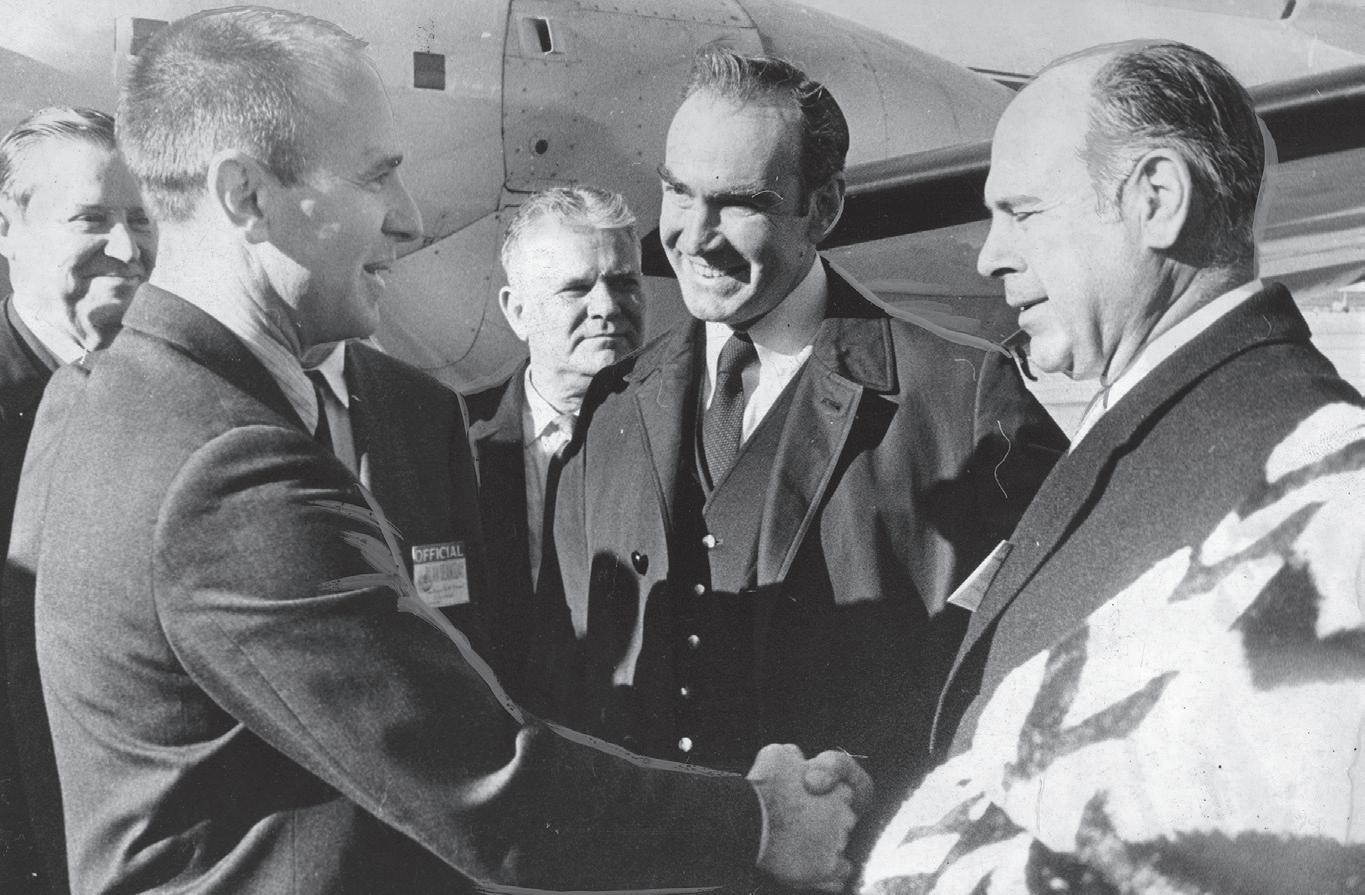
astronaut. Bean had logged more than 7,145 hours of flying time, including 4,890 hours in jet aircraft.
He was selected as a backup command pilot for Gemini 10, but he was unsuccessful in securing an early Apollo flight assignment. He was placed in Apollo Applications in the interim, becoming the first astronaut to dive in the Neutral Buoyancy Simulator. When a fellow astronaut, Clifton Williams, was killed in an air crash, a place opened for Bean on the backup crew of Apollo 9. Apollo 12 Commander Conrad, who had instructed Bean at the Naval Test Pilot School years before, specified Bean as Williams’ successor.
Bean was the Lunar Module pilot on Apollo 12, the second lunar landing. In November 1969, Bean and Pete Conrad landed on the moon’s Ocean of Storms — after a flight of 250,000 miles and a launch that overcame a lightning strike. Bean executed the order to restore telemetry after the spacecraft was struck by lightning 36 seconds past its launching — salvaging the mission. They explored the lunar surface, deployed surface experiments, and installed the first nuclear-power generator on the moon. (Dick Gordon remained in lunar orbit, photographing landing sites for long-term reference.)
Bean’s paintings could only prove autobiographical, as chronicles of the moonwalking adventure. His misad-
venture of misplacing a camera-timer (preventing a photograph of himself and Pete Conrad) was chronicled in an after-the-fact painting, imagining the scene that he had hoped to shoot in real time.
Bean followed through as spacecraft commander of Skylab 3, during July-September of 1973, logging 24.4 million miles. During the mission, Bean tested a prototype of the Manned Maneuvering Unit and performed one spacewalk outside Skylab. On his next assignment, Bean was the backup spacecraft commander of the U.S. flight crew for the American-Russian Apollo-Soyuz Test Project. He retired in 1975 a Naval Captain but continued as civilian head of Astronaut Candidate Operations.
Bean resigned from NASA in 1981 to devote time to painting. He explained this development in terms of expressing his experiences in pictorial, documentary terms: “I had to figure out a way to add color to the moon without ruining it... If I were a scientist painting the moon, I would paint it gray. I’m an artist, so I can add colors to the moon.” To affirm the impression, he applied samples of moon dust — salvaged from the fabric of his spacesuit — to the paints.
The proverbial Last Man Standing among the Apollo 12 crew, Alan Bean died at 86 in 2018 in Houston.

Leon Bridges, the Grammy-winning singer-songwriter, delivers the greatest musical ode to his hometown with new album, ‘Leon.’
By Brian Kendall
Photo by Olaf Growald
Some bands, musicians, artists, etc. possess a clear admiration for place — the environment in which they grew up, currently live, or happen to be when creating a new work of art. Like the Red Hot Chili Peppers regularly dropping “City of Angels,” “Los Angeles,” or other clever colloquialisms representing Southern California; Wilco diving into allusions and direct references of hometown Chicago; or a plethora of artists — Billy Joel, Simon and Garfunkel, and Talking Heads to name a few — crooning about New York; a location, especially one that has had a profound impact on an artist, can be a powerful muse. And such musicians, through their songs, become some of their cities’ most prominent ambassadors.
Fort Worth has one such Billboardtopping, Grammy Award-winning musician who proudly represents the city he’s called home since the age of 2 — Leon Bridges. Before his star skyrocketed, he would regularly busk in front of Avoca Coffee on Magnolia Avenue and famously recorded his first album in a studio above the former Shipping and Receiving, a previous hotbed for local music. And his first album, Coming Home, would be an unmitigated hit, with critics and music aficionados dubbing the Fort Worthian the second coming of Otis Redding.
While Bridges now, understandably, splits his time between Los Angeles and Fort Worth, his family remains in Cowtown, and the multiplatinum artist is a regular figure about town — Leon sightings happen regularly, and he’ll even do the occasional pop-up show. Again, the homesick artist has never neglected his roots.
On that note, his previous efforts would give the occasional shout-out to his hometown, his live performances would have a Fort Worth backdrop, and his initial doo-wop fashion sense evolved into a funkmeets-Western hybrid that’s become an ideal representation of the city. But his new album, Leon, which Oct. 4 hit
Spotify, record stores, and a horde of other streaming services, doesn’t just place Fort Worth as a backdrop — the city is front and center.
In fact, it’s not a stretch to call it a concept album.
One of Leon’s standout tracks, “Panther City,” marks Bridges’ most outwardly nostalgic tune to date. A clear ode to his childhood growing up in Fort Worth’s Southside, the acoustic-driven song is a millennials glossary of memorable terms like Nintendo 64 and Little Debbie and touches local places like Hillside, Cannon, Pinky Street (where he got his “first taste of love”), and Rosedale — with “all the crackheads and prostitutes.” Bridges even works in his beloved Community Center, a place he regularly cites as an important part of who he has become. The United Community Center is one of the main beneficiaries of his Big Good philanthropic endeavor with former TCU head coach Gary Patterson.
Other references to the city are sprinkled throughout the album’s 13 tracks. It’s a veritable I Spy of Fort Worth-isms and childhood memories. He twice sings about the Trinity River, makes mention of Texas barbecue, Texas summer nights, cruising Cadillacs, hometown girls, and his mother
and father — both of whom still call Fort Worth home.
Most of the songs stick to the midto slow-tempo range, for which we can’t fault the singer considering it’s typically his bread and butter, and there’s an overarching sense of longing — for simpler times, for peace, for love.
Naming the album Leon is no doubt apropos. There’s a sense of catharsis and a discovery of identity within each track. Perhaps reading too much into it, Leon feels almost therapeutic. This is not a collection of songs from a 20-something crooner finding his voice. This is the album of a well-seasoned star who’s been on a journey of self-discovery and might even be on the tail end of said journey.
On Leon’s first single, “Peaceful Place,” Bridges sings about finding such a place despite trying times. “I used to walk on the darker side, rain in my eyes,” he sings in the first verse, which later gives way to, “I feel at home anywhere I go, spirit in my soul … I’m in a peaceful place.” Like all peaceful places, it’s a nebulous area that lives in Bridges’ mind, but if his new album grants a crystal ball into his thinking, Fort Worth plays a part in such peace.

by
Tommy Cummings
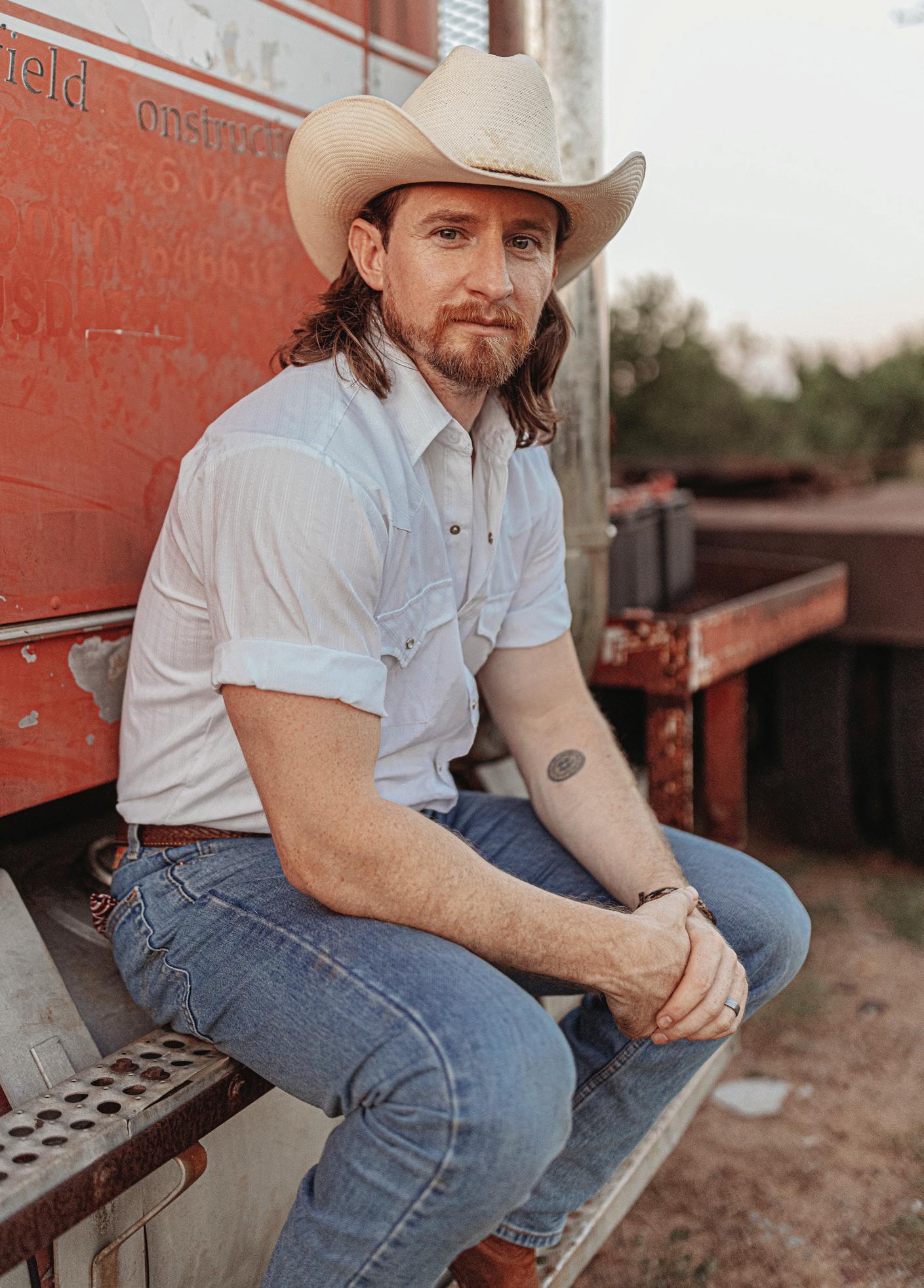
Christian Wallace had a hell of a story to tell, and Taylor Sheridan happened to be listening.
If you were to imagine a writer from West Texas, you might conjure up someone like Christian Wallace. While his beard-mustache combo is reminiscent of D.H. Lawrence, he routinely sports dirt-laced boots and once penned
a 6,000-word ode to his truck. It’s a dichotomous combination of gruffness and sensitivity.
A longtime writer for Texas Monthly — whose mug has even graced the cover (check out April 2022 issue) —
Wallace grew up in the West Texas town of Andrews and did some time as a roughneck in the oil fields. Providing such context makes his narration of “Boomtown,” a 12-part podcast he wrote for Texas Monthly’s multimedia arm in 2019, all the more fitting.
The podcast, glitzily produced with a musical score, sound effects, and insightful interviews, features Wallace’s Texas twang guiding listeners through the dynamics of the energy industry’s roughnecks and wildcat billionaires battling over land rights in the Permian Basin.
The serialized show found listeners who kept the downloads pumping like an oil rig. One listener, one critical listener, was particularly intrigued.
Taylor Sheridan, that famous Fort Worth native with the golden touch in television dramas, tuned into Wallace’s podcasts and was intrigued. He might have been drawn in by plotlines that involved economics, geopolitics, and boundaries — the ingredients of something like “Yellowstone.”
Hollywood interest is nothing new for Texas Monthly, who have sold rights to articles that would become films — like 2011’s “Bernie” — or TV shows — like “Love & Death,” released earlier this year on Max. Now, Sheridan wanted “Boomtown.” And in late 2020 or early 2021, by Wallace’s estimation, the mastermind of the Dutton family and his producing partner, David Glasser, acquired the rights.
Two months later, Wallace says he was asked to meet with Sheridan on the set of “1883” in Fort Worth, where he was exposed to how all-in Sheridan can be with his productions. Wallace recounted about 300 extras with dozens of horses and a few blocks of the Fort Worth Stockyards retrofitted to look like it did in the late 19th century.
“It was an incredible entry into that world,” Wallace says. “Taylor and I spent the next couple of years talking, off and on, about West Texas — oil and gas, the people, the culture, stories from the patch I’d heard growing up.
“He eventually asked me to write a spec script based on the ideas we’d
been talking about. I’d never written a script before, but I took a crack at it, and a few weeks later, Taylor called and said, ‘Well, buddy, I think this is gonna work.’”
Sheridan brought on Wallace as a co-creator and executive producer.
That was the birth of “Landman.” The series, which will premiere on Nov. 17 on Paramount+, features Billy Bob Thornton, Jon Hamm, Demi Moore, and Michelle Randolph in the cast.
Produced by MTV Entertainment Studios, the show began filming in Fort Worth in early February and ended in late June. Wallace says Cowtown, as a locale, made sense from a story perspective. Sheridan has an affinity for the city, which has its own Western heritage.
“‘Landman’ explores both the bigwigs who own oil companies and the roughnecks who get their hands dirty on the rigs,” Wallace says. “Fort Worth was built on cattle and oil. A good chunk of the city’s buildings and museums were paid for by oil. That wealth is still present in the city today, so it makes sense that part of ‘Landman’ would be set there.”
Wallace says the terrain west of Fort Worth visually resembles the Permian Basin.
“I’ll admit to being skeptical at first about how well this region would translate to West Texas, but it turns out that a lot of the country west of Fort Worth looks pretty dang similar to parts of the Permian,” Wallace says.
The background isn’t all that fits the vibe.
Wallace says the show has drilled down for even more authenticity with the cast and props.
“Everyone was trying their best to hew to an authentic representation of the region and industry,” Wallace says.
“Landman” actors and crews participated in a three-day roughneck camp similar to the cowboy camp that Taylor requires of his “Yellowstone” casts.
This included putting actors on a real workover rig. The crew helped the actors perform jobs by a floor hand, a
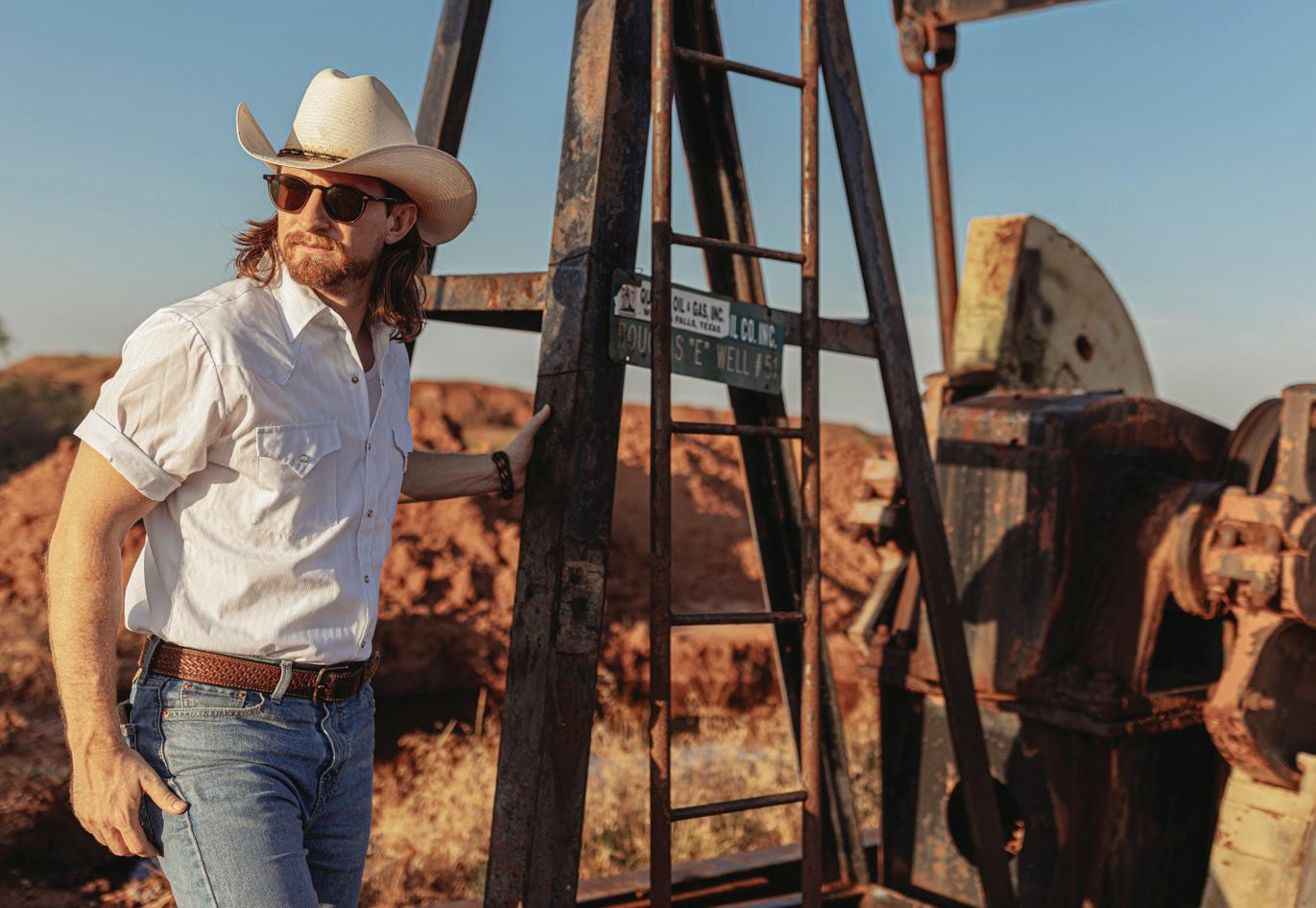
derrickman, and an operator on a rig.
“Those are skillsets that are not easy to pick up, but I was impressed by how well all the guys did,” he says. “I mean, the derrickman is working about 80 feet in the air. There’s steel pipe coming at him. Just to get up there, takes some guts, and our actors took it all in stride.”
The authenticity extended to the costumes. Wallace said costume designer Emma Potter had some of Wallace’s buddies from the oil patches send her their work clothes, or “greasers,” which became the prototype for accurately aging the costumes. This meant an entire color palette of varying hues of dirt and oil.
“When the actors or extras put on their greasers, I swear you wouldn’t be able to tell them apart from the real deal,” he says.
Of course, realism has its limits in a drama series. Actual landmen or landwomen spend hours scouring courthouse records, inputting data into spreadsheets, and filing lease extensions, the tedium that “would probably put most viewers to sleep,” Wallace says.
In Sheridan fashion, drama is provided by dynamic actors, like the way Kevin Costner carried “Yellowstone” or Harrison Ford fueled “1923.”
“Landman” focuses more on the oil
field at large rather than on any one specific job, Wallace says.
“That said, Tommy Norris [Billy Bob Thornton’s character] is a landman, and there are elements of that job you’ll see throughout the series, but Tommy is also a Swiss Army knife of skills that he uses to keep M-Tex Oil running as smoothly as possible,” Wallace says.
Hamm seemed a natural for “Landman” after his performance as the villainous Sherrif Roy Tillman in the fifth season of “Fargo.”
The first trailer for “Landman” dropped in early September. In the trailer, Thornton’s character says in a voiceover: “The oil and gas industry makes $3 billion a day in pure profit. But before any of that money is made, you got to secure the land and manage the people. That’s my job. The first part is pretty simple; it’s the second part that can get you killed.”
Wallace says he’s grateful that Sheridan saw fit to add his narratives to Sheridan’s network of dramas.
“Several other of my Texas Monthly articles had been optioned by Hollywood before this, and I had always wanted to help translate my own work for the screen,” Wallace says.
“But Taylor was the first to give me an opportunity to do that.”
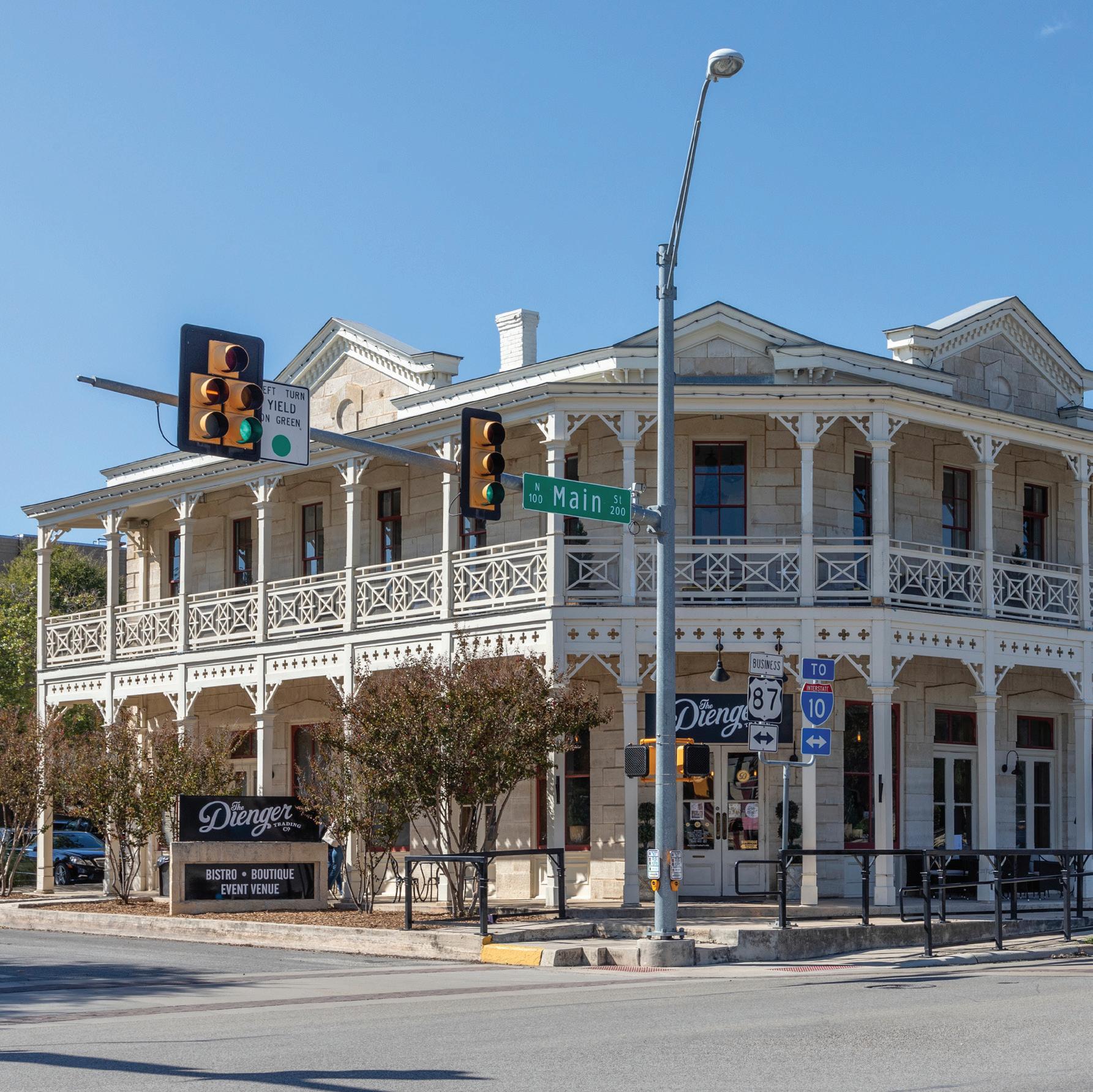
by Shilo Urban
Population: 23,004
Life would be an endless bleeding were it not for poetry,” so said the German-Jewish writer and philosopher Karl Ludwig Börne, namesake of the Hill Country town of Boerne (pronounced: BUR-nee). Naming a rugged frontier outpost after such a melodramatic artiste might seem a bit odd until you realize the settlers themselves were German intellectuals who listened to Mozart, read classical literature, and
discussed political theory — in Latin. Known as freethinkers (or Latinists for their love of the language), they emigrated to Texas after Europe’s 1848 revolutions to escape the despotism and class privilege they despised. They founded several “Latin settlements” based on utopian ideals of tolerance and human rights in the Hill Country, including Boerne. Along with farm tools and muskets, they
brought musical instruments, oil paintings, and trunks full of books. As iconoclastic humanists, freethinkers didn’t always get along with other Texans or even with other Germans. They opposed slavery, temperance laws, and religious instruction in schools; they advocated for equal rights for women and the abolition of capital punishment. Well-educated and cosmopolitan, the freethinkers were an unconventional mix of poets and engineers, anarchists and atheists, scientists and revolutionaries — and they knew how to have a good time. Bearing bottles of fine wine, they would walk for miles to gather together in a neighbor’s cabin for an evening of music, singing, and dancing on the edge of the Texas wilderness.
While you won’t hear many conversations in Latin today in Boerne, the heritage of the German settlers lives on in the hamlet’s vibrant community spirit and buoyant festivities. Boerne feels alive and active, especially along the “Hill Country Mile” — a 1.1-mile stretch along the Hauptstrasse (Main Street) that’s lined with eclectic boutiques. Many are housed in restored historic buildings, architectural gems with ample country-town character and charm. Whether you’re shop-hopping or following the trail alongside spring-fed Cibolo Creek, all paths seem to lead back to the grassy Main Plaza. With pondside shade

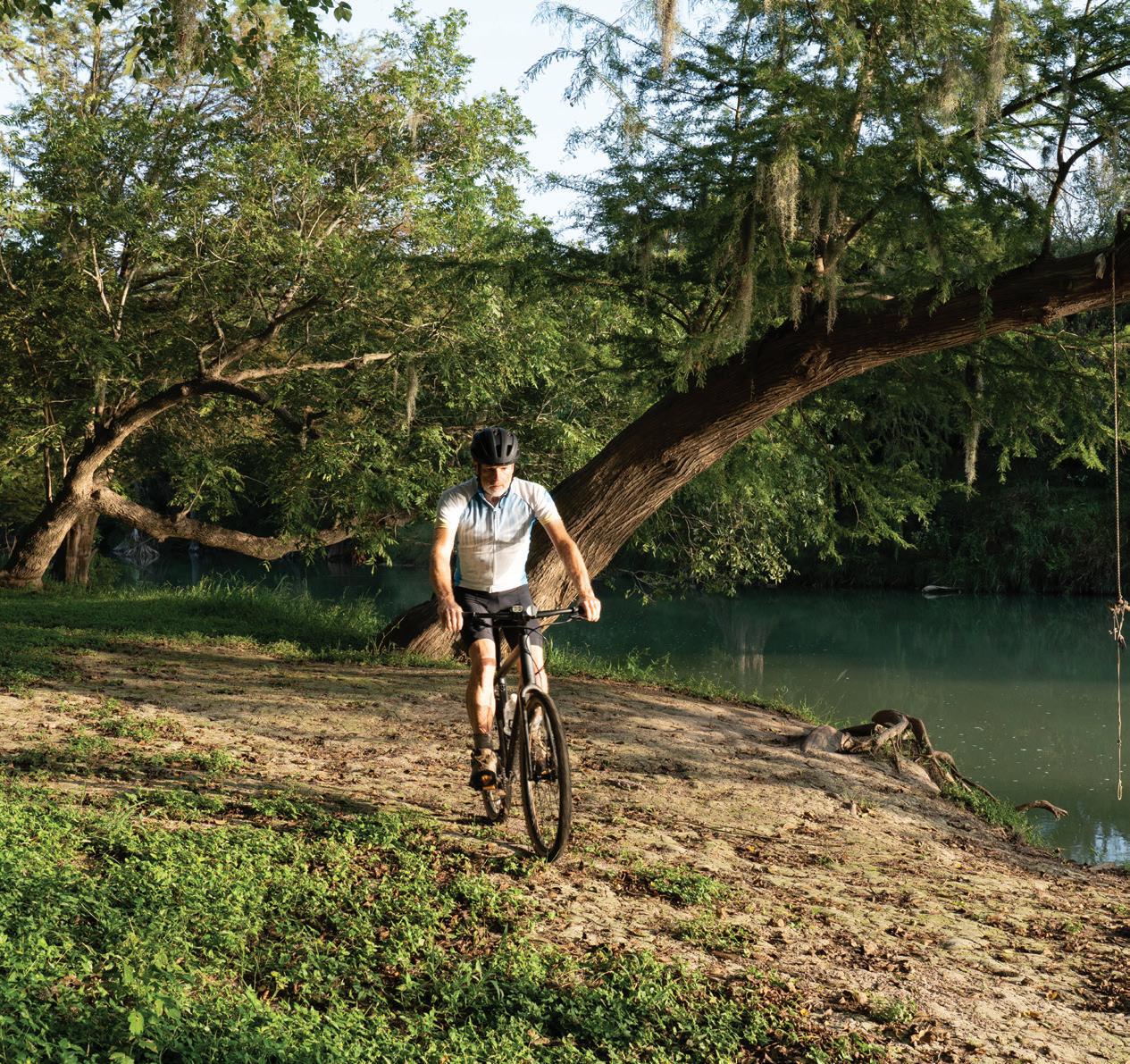
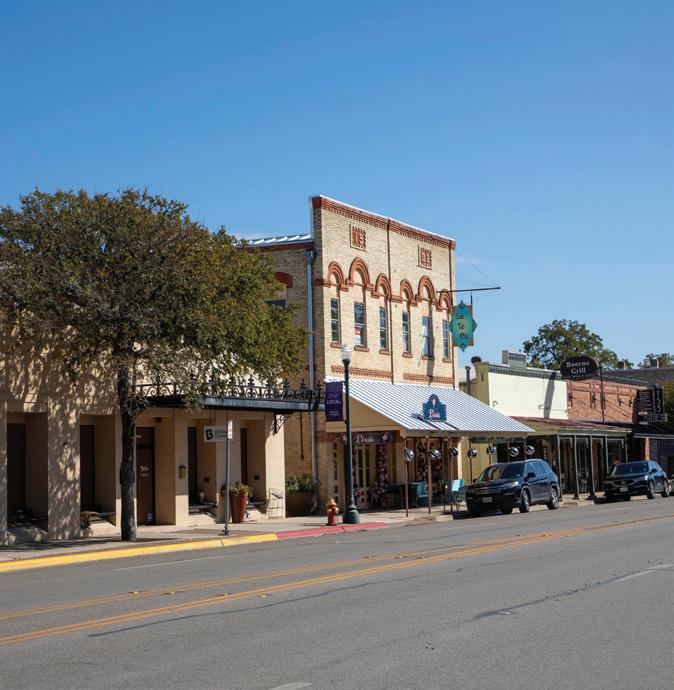
trees and a storybook gazebo, it’s the hub of community events, which really kick into high gear for the holidays in November and December.
Christmas concerts and markets abound, along with a wassail tasting, cello choir, and menorah lighting. You can revel in Victorian-style merriment at Dickens on Main (every Thanksgiving weekend), when costumed carolers, street performers, and old-world vendors take over the town. Tons of twinkling lights and holiday decor make it feel like a real-life Hallmark movie, so, ladies, keep an eye out for your junior high crush, a scruffy-yet-lovable renegade who is really a prince in disguise. “Snow” falls on Main Street as shoppers browse art and antiques, nibble on cinnamon pastries, and snap a photo with Santa. Musicians jam, dancers twirl, and the hot mulled wine flows freely … and somewhere, the freethinkers are smiling.


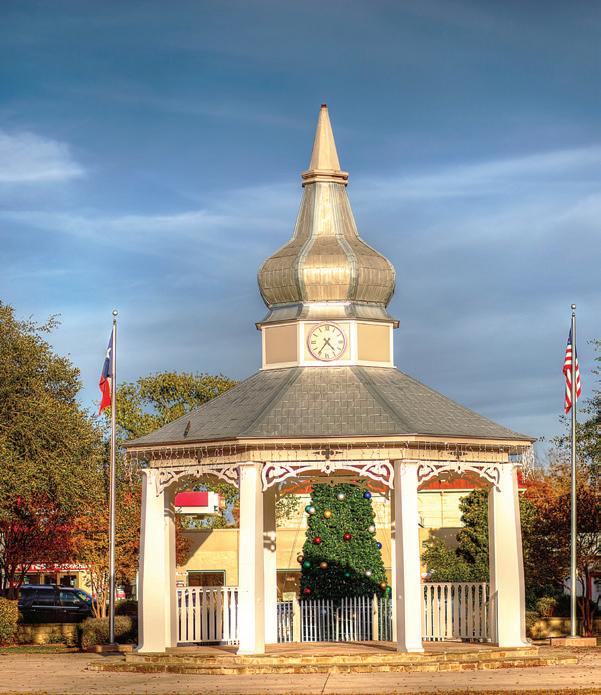
Savor: You can’t go wrong at Peggy’s on the Green for mesquite-smoked steaks and fancy Southern eats in an elegant-yet-unfussy atmosphere. Savor seared salmon with poblano cream or cornmeal-dusted soft-shell crab and get there early to sip a margarita on the creekside wraparound porch. The Creek Restaurant also has water views and top-shelf seafood, including Snapper à la Creek with meunière sauce. True to its German roots, Boerne has brewpubs galore from The Dodging Duck (giant pretzels and sausages) to 28 Songs (totchos and sammies) and Cibolo Creek Brewing Company (bier bun potato rolls filled with browned goat, cabbage, and cheese). Speaking of cheese, visit the newly opened Rivulet Kitchen for halloumi skewers, tempura camembert, and artisan crostini with roasted tomato and burrata.
Shop: Walkable and easily accessible, Boerne’s Hill Country Mile is shopping central with quaint historic storefronts and cool modern boutiques. Local favs include Handmade on Main, which carries the creations of 24 Texas artisans, and The Dienger Trading Co. for unique home goods and gifts (plus a bakery and bistro). Discover a cozy haven of highend linens and handcrafted body care at Cielo Mercantile or browse the fine art collections at Carriage House Gallery and Gallery 195. Bedeck your noggin with a bespoke topper at the hat bar at J.Forks Design; schedule a consultation with its hatter to create a custom headpiece. Stock up on spicy-sweet treats at Fickle Pickles and stroll through Flashback Funtiques for a look at its kitschy kitchenware and vintage jukeboxes.
Enjoy: Surrounded by some of the most picturesque countryside in Texas, Boerne’s a convenient base for outdoor adventures amidst the tree-covered hills, limestone cliffs, and pristine streams. Explore otherworldly formations of stalactites and stalagmites at two impressive caves, Cascade Caverns and Cave Without a Name, which both offer guided tours. Cibolo Nature Center has six miles of trails under cypress canopies and alongside spring-fed marshes full of wildlife. Back in town you can spot turtles and ducks at River Road Park, a lovely creekside path in the middle of everything. If history is more your thing, pick up a free historical walking tour map at the Visitor’s Center — and try to catch a performance of the 164-year-old Boerne Village Band.
Snooze: Boerne has an impressive array of accommodations for its size thanks to the many San Antonians who make regular trips. Classic charm doesn’t get better than the suites and cabins at The Kendall, a restored/expanded stagecoach stop from 1859 with a landmark location between Cibolo Creek and the town plaza. Also downtown: The William, a recent addition with New Orleans-style cast-iron balconies that overlook Main Street. Short-term rentals cluster around this area, from cottages and “treehouses” to apartments and entire homes. Chain hotels hang close to the interstate, or you can head out into the surrounding countryside for ranchstyle lodges and resorts.
How to Get There: Drive south from Fort Worth on the Chisholm Trail Parkway for 27 miles to Cleburne and turn right onto US-67 S. Continue for 38 miles, then turn left onto TX-220 S in Bluff Dale. In 12 miles, hop on US-281 S in Hico. Stay on US-281 S for the next 160 miles, passing through Hamilton, Marble Falls, and Blanco. At Bulverde, turn right onto TX-46 W and drive 21 miles to Boerne. The entire trip is about 260 miles, roughly 4 hours and 45 minutes with no stops.
by John Henry

There is an art to mingling that I haven’t even begun to perfect. Mingling is that act of engaging in casual, informal conversations with different people in social or professional settings. Fast risers as great networkers are skilled minglers.
I read about someone who compared mingling to dancing — stepping into and out of conversations. It’s about finding that delicate balance between not overstaying your welcome and not vanishing like a social Houdini. That is, the Irish exit.
Rather than dancing, you could compare me to the term “balter,” which is to dance gracelessly without particular art or skill.
That’s what I am as a mingler, a balterer.
However, it is amazing the things you learn while mingling.
Last month, we gathered with finalists for the Fort Worth Inc. 2024 Entrepreneur of Excellence program for a boot-fitting cocktail party at Wild Salsa in downtown. Fort Worth Inc. is our sister magazine, published quarterly.
Winners in each category, unveiled at a black-tie gala event on Nov. 21 at the Fort Worth Club, will be featured in the Winter issue of the magazine.
Moreover, each winner will also receive a pair of custom-made boots from Justin Boots. In order to do that, the bootmaker, as skilled a craftsman as you’ll find, has to take precise measurements to accommodate comfortability and support.
That’s what we did at Wild Salsa, while nibbling on the restaurant’s scrumptious fare. Nibbling probably
isn’t the right word. More like a hyena dining on Cape buffalo. The ceviche was out of this world. They also have this green salsa that comes with a delicious kick. And it stands to reason that I couldn’t remember the name of the spicy margarita that bit me like a testy water moccasin the next morning.
But sip on adult beverages we did, while mixing — and mingling — with the great innovators and thinkers of this year’s cohort.
And, again, it’s amazing the things you find out while circulating.
Take, for example, Haley Mitchell, an audit senior manager at Fort worth-based Whitley Penn, our presenting sponsor of the Entrepreneur of Excellence Program. She is a CPA with bachelor’s and master’s degrees in accounting from Texas Tech University in Lubbock, the Hub City of the South Plains.
She is also a member of the Wuensche family.
So, you ask, what?
Well, the Wuensches hold the record for most family members to graduate from the same university. That number is 44, all from Texas Tech. It’s etched on a page in the Guinness Book of World Records, presumably right next to, or near, the records for longest time lying on a bed of nails and tallest stack of hats worn at once. (It’s more than 3 feet, by the way. That guy also holds the record for most tennis balls caught blindfolded — 11.)
These are handy things to know when mingling, by the way.
The Guinness entry reads: “The most family members to graduate from the same university is 44 and was
achieved by members of the Wuensche family (USA), who graduated from Texas Tech University, in Lubbock, Texas, USA, as verified in July 2022.”
Amber Wuensche Parker, Guinness goes on, read an article on the previous record-holders, which was 40. She posted it to a Facebook group the Wuensche family use to keep in touch. They began counting.
There are also an additional 14 spouses who earned degrees from Matador U. Moreover, there are a total of 108 Wuensche family members who have attended Texas Tech since 1953.
Francis Wuensche Holden was the first of the Wuensche family, originally from Wilson, located just south of Lubbock, to graduate, in 1953.
In 2022, there were family members enrolled, including three who were freshmen.
Six other Wuensche family members had expressed an interest in attending Texas Tech in the future. So, now we’re talking about running up the score, as if a good team playing the Dallas Cowboys. Cheap shot, I get it.
Texas Tech graduate Norris Wuensche, Amber Wuensche Parker’s first cousin, said in a video produced by the school: “I didn’t want to go to Vietnam, so I went to Texas Tech. And enjoyed it.”
School officials honoring the family at a football game last year, the 100th year of the university that Fort Worth’s Amon Carter worked so hard to establish in West Texas.
While on the field being recognized, however, they were upstaged by a restless possum, who, undoubtedly emotionally unsettled (what possum isn’t?), we picked that very moment to come out of his hideyhole, not play dead, and scamper across the field in front of approving fans seeking an underdog that wasn’t the football team.
I can say that. I went there, too. But with that remark, I went looking for another conversation.



Mike’s Garden Center undergoes an extraordinary transformation every year, becoming a magical Christmas Wonderland that captures the spirit of the holidays and inspires customers to envision the beautiful displays in their own homes. What begins as a garden center blossoms into a festive paradise, filled with the holiday cheer that everyone dreams of, thanks to the tireless efforts of the staff who work both day and night to make it happen.
What makes Mike’s Christmas Wonderland unforgettable is the attention to detail. The store offers personalized wreaths and garlands, each one carefully crafted with high-quality materials. Shoppers can find unique merchandise, from artificial Christmas trees by Select & Park Hill to handmade table centerpieces, all perfectly arranged in creative displays. The contrasting shades of poinsettias and carefully designed handmade bows add a vibrant touch, while the Christmas cactus gives a unique spin to traditional holiday décor. Visitors are often heard saying, “I have to have this,” as they admire the incredible attention to detail.
Transforming a garden center into a Christmas Wonderland isn’t without its challenges. According to store manager Charlie, “Having enough space is always an issue.” The store has expanded its square footage over the years to make room for all the merchandise, but there’s always a delicate balance between displaying the vast array of Christmas items and keeping room for year-round essentials. Transitioning the store involves moving displays, polishing floors, and working late into the night to create the enchanting atmosphere. Each year, the theme is fresh and different, offering a new experience to loyal customers.
The uniqueness of Mike’s Garden Center is in its range of products. Very few independent nurseries can boast the kind of materials Mike’s offers. From interior to exterior decorations, we provide a wide selection of items that speak to the traditional and modern Christmas spirit. We even carry religious statuary, making it easy for customers to find something meaningful and special for their holiday décor. At the heart of it all is the desire to inspire customers to decorate their homes with the same magic they see in the store.
When people step through the doors, we want them to feel that “wow” moment. It’s not unusual to hear visitors exclaim, “Wow, I want that,” or “I’m definitely coming back here next year for Christmas shopping.” Paul, the Southlake store location manager, often hears customers express surprise at the sheer volume of Christmas merchandise. “People are amazed that we have this much Christmas stock for a garden center,” he says. That’s part of what makes Mike’s Garden Centers so extra-special—it’s the element of surprise that keeps our customers coming back.
The appeal of Mike’s Christmas Wonderland lies in its ability to bring back cherished traditions. The unique gifts, stunning Christmas statuary, and overall quality of the products speak for themselves. Every piece in the store tells a story, and it’s that sense of tradition that draws customers in, year after year. They come to experience the wonder of Christmas and find something that makes their holiday season even brighter.
As a family-owned business, Mike’s Garden Center takes pride in its customer service. Our knowledgeable employees are always eager to help, offering suggestions and ideas to make every home look festive. Each year, we expand our Christmas selection, adding new items that keep the wonder alive while still honoring the timeless elements of the holiday. Mike’s has become a Christmas tradition for many, and we take joy in welcoming new visitors to our holiday wonderland, where the spirit of Christmas is always in full bloom.

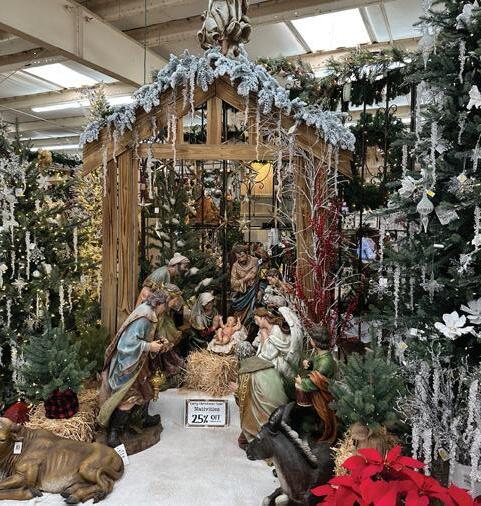










BY MICHAEL H. PRICE
The barrier between country music and jazz is as slender and nervous as the topmost string of a guitar. Give that string a pluck and watch it vibrate, and the blur will yield a vivid demonstration of how insubstantial the barrier is.
Such a blurring during 1929-1930 in Fort Worth produced the distinctive music known as Western swing. The fiddle-based ruckus created new roles for the guitar — proved a direct ancestor of the 1970s’ fusion-jazz phenomenon — and established a unique instance in which the merchandising term “progressive country” could truthfully apply. Fusion? Yes: Some folks call it corn-fusion.
A near-century after that initial stirring, Fort Worth has formally embraced its contribution to the roots-music wellspring: The festival known as Cowtown Birthplace of Western Swing, Nov. 7-9, at National Hall on Roberts Cut Off Road, has become an international attraction. The event showcases such stylistic descendants as Billy Mata, Jody Nix, Jason Roberts with Bob Wills’ Texas Playboys, Steve Markwardt & the A-List Band, and Italy’s Mary Lee & Caesar’s Cowboys (their U.S. début).
One prominent legacy artist, Jody Nix of Big Spring, has devoted 64 years to the music — having joined the primarysource band of his father, bandleader Hoyle Nix, at age 8. Jody continues the pace, logging more than 100 engagements a year.
Founding producer Michael Markwardt has developed a crowd-pleasing documentary film, “The Birth & History of Western Swing.” The twohour feature takes remarkable pains to illustrate the welcoming ethnic diversity that made Western swing an ahead-of-its-time argument for multiculturalism (birthplaceofwesternswing.com).
The countrified experimenters who first made this music had laid a foundation (by instinct, more so than design) upon fiddle breakdowns from their own heritage and upon blues laments and celebrations remembered from childhoods spent in naturally integrated farming settlements. (Hence, Tony Joe White’s Blackand-white anthem of 1969, “Willie and Laura Mae Jones.”) Onto this trunk, such Fort Worth-based trailblazers as Bob Wills and Milton Brown grafted Cajun and Creole strains from Louisiana; polyrhythms from Black and Native American traditions; harmonic and melodic crossovers from Mexican and Middle European traditions; and at length, the make-believe cowboy glamour of Hollywood.
The assimilation was so thorough that Western swing, at the hands of an accomplished bandleader like Wills or Brown or Oklahoman Spade Cooley, cannot be seen as ersatz anything. It was from the start — or anyhow, from its earliest preservation on phonograph records — its own music, more than a sum of influences. Such freedom of expression was offered neither by traditional country music (which shunned improvisation or between-the-beats rhythm) nor by the structured jazz community (which resisted a folksy image).
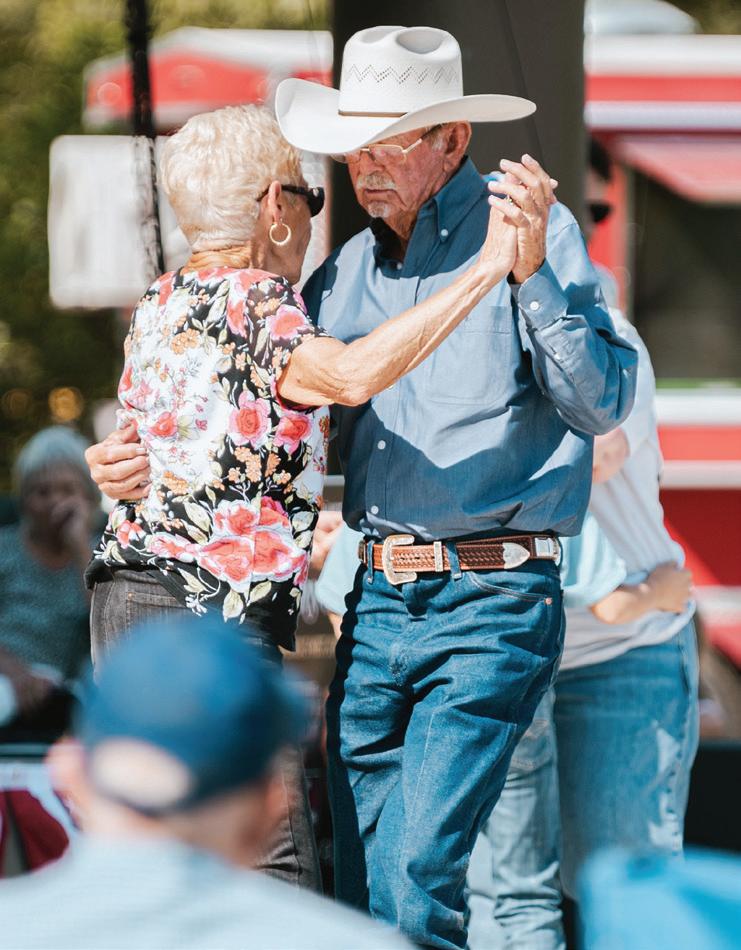
Practically every element of Western swing arises from some other tradition. Among its generations of loyalists, some refer to this musical gumbo as “hillbilly boogie,” others “cowboy jazz” or “cowbop.” All such terms express the predominant elements of rural white and urban Black musical influences, with an assimilation of rhythms and melodies from Mexico and Europe. Had the early shapers (white rustics, for the most part) been unaware of the African-rooted blues idiom, there could have been no Western swing.
Nor could the fusion have occurred without the transcultural mingling that Texas had experienced during the prior century.
The guitar and the fiddle (not to be confused with the violin — same instrument, different approaches) were the key beneficiaries. New Yorker Joe Venuti had transformed the classical violin to a jazz instrument during the 1920s. Texas Panhandle native Bob Wills would transform down-home, barn-dance fiddling to a bluesier state, influenced by the baroque stylings of the Arkansasto-Amarillo master Eck Robertson, the first country-pure fiddler to record on commercial platters.
The guitar, in turn, has a triple importance to Western swing: In addition to traditional rhythmic and solo functions on a standard six-string guitar, there also is the wholly different steel guitar, essentially a solo instrument embodying the capabilities of a piano or a horn section.
Jimmy Wyble’s crossover from the Western swing of Bob Wills to mainstream ensemble jazz with Benny Goodman, during the 1960s, is a striking instance of jazz’s acceptance of its bucolic cousin. But Wyble did not begin playing jazz upon joining the Goodman band in Chicago; he had developed as a jazz guitarist while playing in the country-image bands of Wills, Cooley, and Tennessean Hank Penny.
Much the same could be said for Penny; and for Amarillo-based “Honest” Jess Williams; and for the lesser-known Fort Worth guitarists Herman Arnspiger and Weldon Gidley, all propulsive presences; for the brilliant lead guitarist Eldon Shamblin, who preceded Wyble in the Wills lineup but never developed a jazz-elite identity; for dependable stylists like Durwood Brown, Benny Garcia, Muryel “Zeke” Campbell, and Frankie Kinman; and for steel
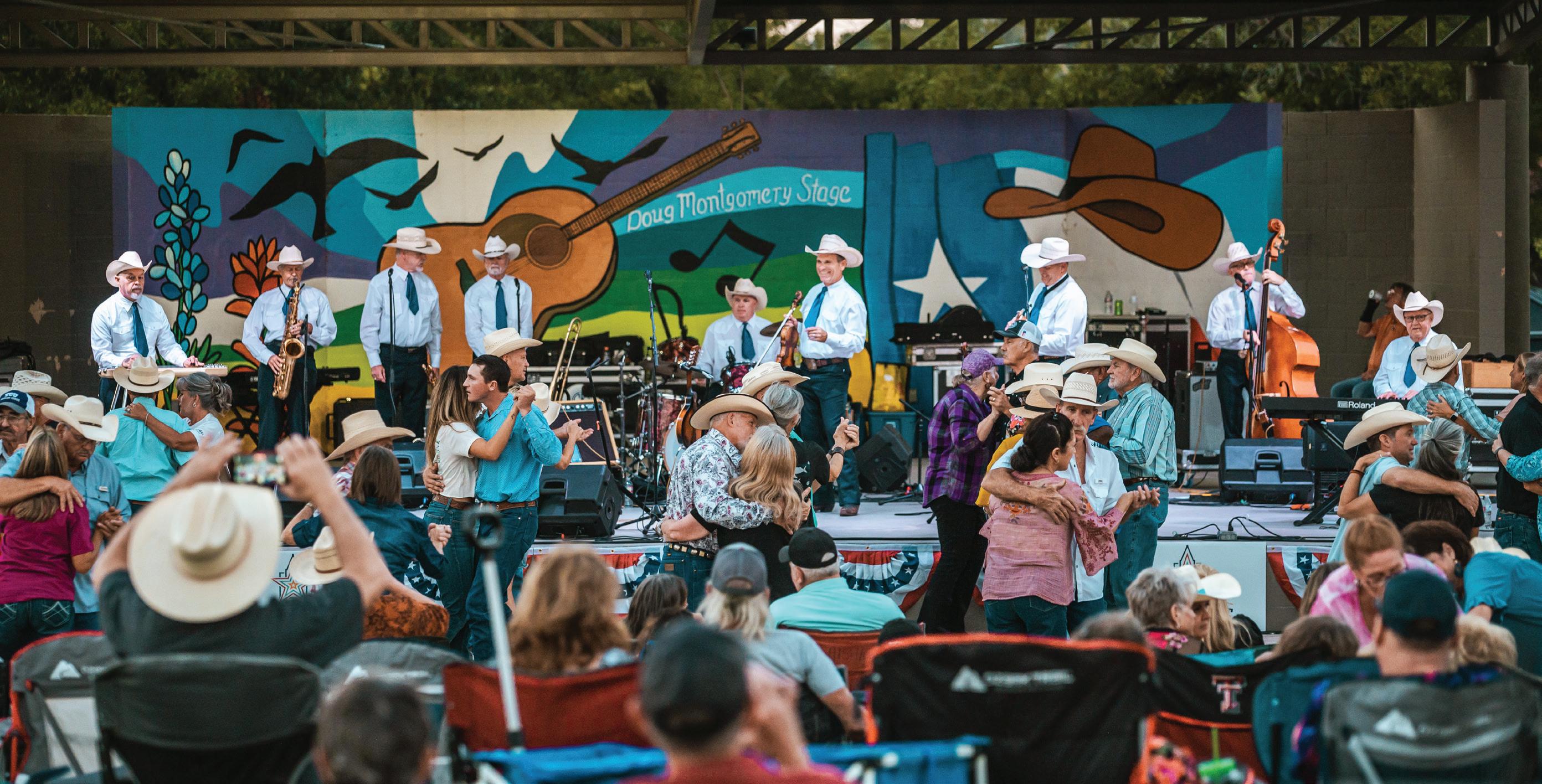
guitarists epitomized by Bob Dunn, Leon McAuliffe, Billy Briggs, and Joaquin Murphy — all bearing responsibility for the ways in which steel is played today.
Like the man said: “It was jazz we were playing,” Jess Williams told me in 1980. “We just couldn’t call it that and get away with it — not with our audiences thinking it was honky-tonk.” Williams’ pre-WWII Sons of the West recordings (based at Amarillo, with Fort Worth-bred Billy Briggs) bear him out in the precipitous thrust of a rhythm-guitar heartbeat. Such forceful intensity bespeaks the Chicago-blues influence of Big Bill Broonzy as much as it represents the technique of using the guitar as a backstop for imaginative flights of hoedown fiddling.
Such reliance upon the guitar is an essence of Western swing, which began not as a guitar showcase but rather as fiddle music with guitar accompaniment. The first syncopated swing-tempo application of guitar to traditional fiddle music may be reasonably attributed to Herman Arnspiger, accompanist to Bob Wills during the 1920s in a duo that would grow into the Wills Fiddle Band. A third party, all-around string artist Ocie Stockard, would join them to play for Saturday-night dances at a schoolhouse east of Fort Worth.
“It was our custom to play the old hoedowns, Texas fiddle breakdowns like ‘Great Big Taters’ and ‘Texas Wagoner,’ and an
occasional yodel or a minstrel song or a blues, with the fiddle in the spotlight,” Stockard recalled in 1981 during breaks from his bartender job in downtown Fort Worth. “Our guitars would hold the rhythm, drummer-like, with me switching to my banjo or my own fiddle off and on, for the sake of change.”
The genesis dates from such an occasion during the winter of 1929-1930. No documentation exists outside of the memories of participants (all long since deceased), but accounts given separately by Stockard and Wills dovetail. Both declared that a sit-in vocal performance of “The Saint Louis Blues” by an unbidden visitor, a salesman named Milton Brown — nattily dressed in contrast with the others’ farmer-boy attire — provided the turning point. All concerned sensed a broader audience in need of seeking. In this expansion of appeal, in the addition of music-making talents, the guitar gained the freedom to challenge the fiddle for prominence. The Light Crust Doughboys, a pride-of-place ensemble, emerged as a radio-and-records attraction.
These formative years, turbulent and productive, found the de facto bandleaders, Wills and Brown, striving to make the hottest music they could with such instruments as their players knew. The early-1930s departure of the Brown brothers, Milton and Durwood, to form the Musical Brownies, prompted a search that led Wills to guitarists Eldon Shamblin and Leon McAuliffe. Both joined Wills after Milton had augmented his brother’s six-string prowess with Bob Dunn’s stinging lap-steel guitar. And in a radical break with

string-band tradition, Brown persuaded the jazz pianist Fred “Papa” Calhoun to join.
Calhoun in 1981 recalled a prejudice that might have stalled him: “I said, ‘Why, they’re a string band, aren’t they?’ Y’see, I didn’t want anything to do with that hillbilly stuff. I liked horn bands — Dixieland. That was all I cared to play.” But when lured to a Brownies dance near Fort Worth, Calhoun warmed to the notion. He was sitting in before the night was done and became a member soon thereafter.
Meanwhile, Bob Wills’ departure from the Light Crust Doughboys, the better to launch his Texas Playboys ensemble as a riposte to Milton Brown, affirmed an entrepreneurial pattern for many other bands.
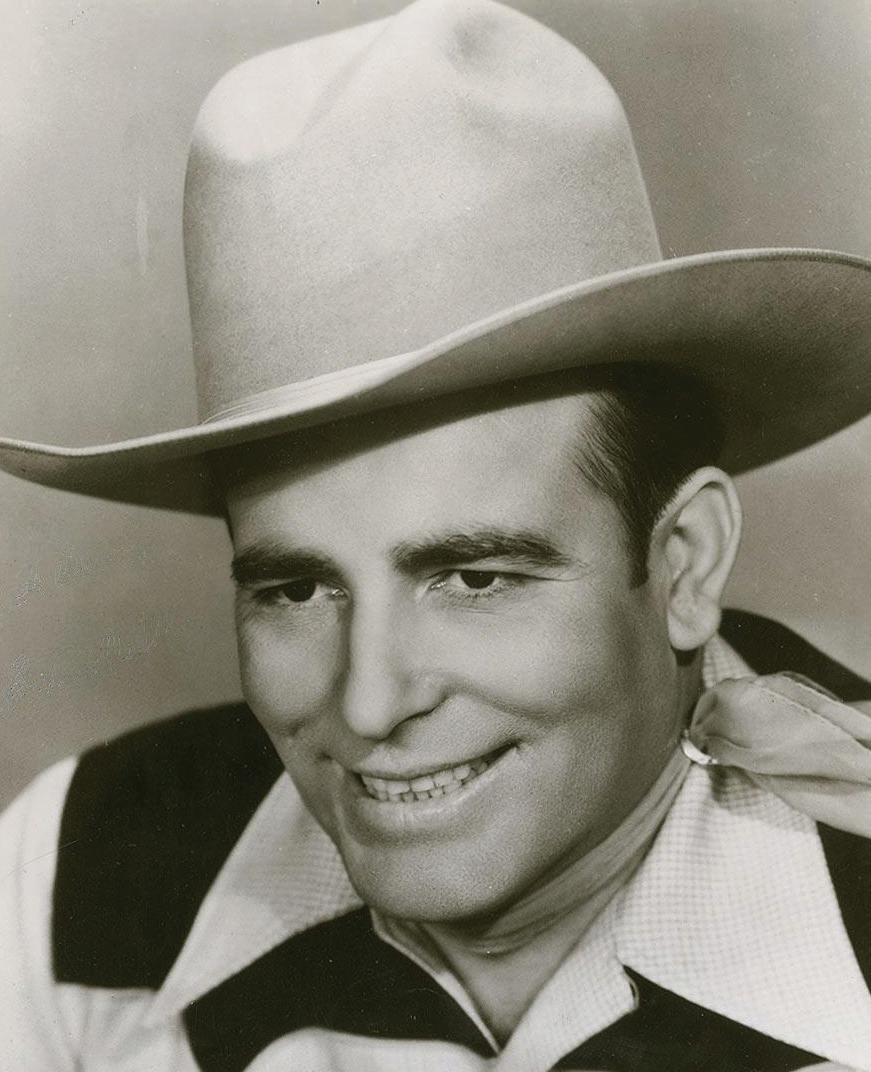
Event producer and filmmaker Mike Markwardt states a succinct case for Western swing as an overriding passion, born of purposeful nostalgia: “My brother, Steve Markwardt, and I were born in far West Texas. Our mother and father would often travel to Big Spring, during the late 1950s and 1960s, to the legendary Stampede Dancehall to hear one of the most popular bands of that era — Hoyle Nix & the West Texas Cowboys.
“I returned to my love for this music after I had retired in 2015 from a long career in international trade,” Mike Markwardt continues. “I fulfilled a promise to my father to take him to the long-running Bob Wills Day weekend of music festivities in Turkey, Texas. There, fans from around the world make the pilgrimage each year to celebrate the music of Bob Wills & His Texas Playboys.
“I met Bob Wills’ biographer, Charles Townsend, and read his book, San Antonio Rose: The Life & Music of Bob Wills, with great interest. I soon began devouring every book I could get my hands on about this joyous music that — to my surprise — proved to have been created in Fort Worth, where I was raised.
“In late 2019, I established a 501(c)(3) nonprofit organization to launch a Western swing festival — hence, Cowtown Birthplace of Western Swing. COVID-19 would force its delay to 2021, but that delay also gave me the time to begin planning a documentary film. Four years later, I have completed this film, with a team of accomplished historians, writers, production staffers, editors, and creative minds who love this music.”
That film, “The Birth & History of Western Swing,” will play during the Nov. 7-9 festival.
As the guitar had bolstered the fiddle, now the piano supported the
guitar and virtually all other leads under Milton Brown’s method. By the middle 1930s, Bob Wills had resettled in Tulsa and added not only piano but also horns and drums. In later years, Wills would pare his organization to a Brown-style, meat-and-potatoes lineup. If not for Brown’s death in 1936 — while in seeming recovery from a motoring accident along the Jacksboro Highway — many enthusiasts hold that there would have been no such preeminent name as Bob Wills.
Countrified guitarists, intent upon stretching, have traditionally turned to the blues. The blues had attracted such prominent whiteguy players as Jimmie Rodgers and Riley Puckett, who used that idiom to develop a blood-kin ancestor of Western swing. Such breakthroughs included the assertion of distinctive styles by jazzman Charlie Christian, blues sophisticate T-Bone Walker, and Durwood Brown — not to mention the European Django Reinhardt, whose recordings had a gut-reaction impact upon American jazz, and Western swing in particular. The evolution of amplification from radio technology also played an important part in the guitar’s changing role.
As idiomatic and stylistic influences changed, then, so did the mechanical possibilities. A fiddle-band guitarist by the mid-1930s no longer had to emulate a country-blues guitarist: Amplification permitted single lines like those from a horn — even trombone-like chromatic swoops.
So it was that the electrified steel guitar emerged. Close kin to Hawaiian steel, Deep Blues bottleneck, and Dobro, the first such device in Western swing was built by Bob Dunn (also a trombonist) from a standard guitar, to which he attached a crude pickup made from the magnets of a radio headphone. Contrary to established styles, Dunn chose not to make chords, so much as to indulge in headlong plunges along the strings with the steel-bar slide while plucking in staccato bursts. Dunn’s performances — especially on “Some of These Days” with the Brownies and “Stompin’ at the Honky-Tonk” with his own Vagabonds — are at once self-indulgent and generous, unnerving when first heard, exhilarating on replay. Dunn persisted as a working artist after Milton Brown’s death but retired to teaching before he could take part in the emergence of a dominant swing-band industry, inspired several imitators who would develop their own voices.
Leon McAuliffe’s early work with Bob Wills’ Tulsa band shows a Dunn influence. McAuliffe was among the first to become a distinctive steel stylist. His astringent single-string leads (as on the standard “Steel Guitar Rag”) lack the cerebral, free-form quality that was Dunn’s stamp, but McAuliffe’s ear for angular chord-patterns
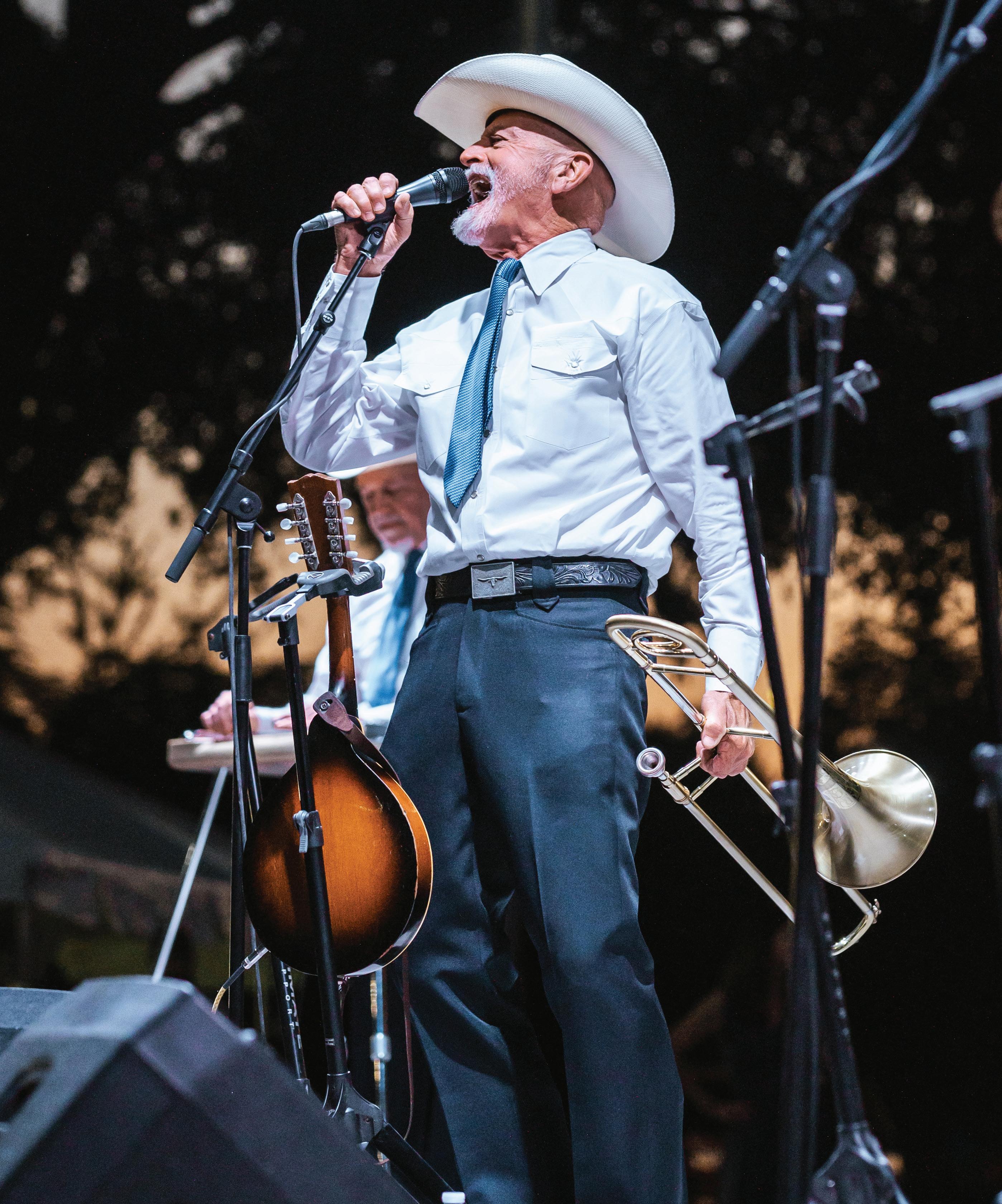

By Michael H. Price
No disguising the personal biases that must shape anybody’s best-of catalogue of Western swing. My preferences will vary from time to time, influenced by whatever I’ve been hearing lately — by projects in which I’ve taken a direct hand, whether as a contributing musician or as a curatorial historian — and always by a grounded recognition of such essential primary-source barnstormers as Bob Wills and Milton Brown.
Deeper digs can be made with a “Western swing” or “78 rpm” keyword search at such sites as YouTube and archive. org. “Bottomless digs” might be more like it. Many of us still prefer the sonic immediacy of physical media, whether in deep-grooved shellac platters, vinyl LPs, or compact disks.
John Wooley’s “Swing on This!” (KWGS-Radio NPR Tulsa; weekly) — Wooley’s web-streaming hour is likely to range into such modern-day phenomena as the relentlessly progressive Asleep at the Wheel and steel-guitar stylist Rose Sinclair. The program is just as certain to showcase the founding artists of the 1930s and 1940s. A recurring feature, “The San Antonio Rose Parade,” deploys a vast and imaginative array of remakes and variations of a Bob Wills signature tune. The time is 7 p.m. Saturdays at publicradiotulsa.org.
“The Complete Recordings of the Father of Western Swing: Milton Brown & the Musical Brownies” (Texas Rose Records CD Box; 1995)
— Historian Cary Ginell’s epic compilation chronicles the rise
of Fort Worth’s Milton Brown in 120 tracks, spanning 1932-1936. Brown’s passion for jazz and blues distinguishes even the mellower or more sentimental selections, defining the roles of fiddle, guitars (steel and conventional), and piano for generations to come.
The Dal-Jam Reunion Band’s “Back Home Again: A Western Swing Reunion” (Origin Jazz Library CD; 2024) — Cary Ginell turned producer during 1983-1984 with these summit-meeting sessions of first-generation artists in advancing age, including many contemporaries of Milton Brown and Bob Wills. Fueled by enthusiasm and a festive spontaneity, the recordings recapture a sense of how it must have felt to have invented the music in the first place. (Full disclosure: I took part as a second-generation upstart pianist, surrounded by titanic figures from the Light Crust Doughboys, the Musical Brownies, and so forth.)
“The Essential Bob Wills: 19351947” (Sony Legacy; 1984) — A time capsule from bandleader Wills’ heyday, capturing his evolving Texas Playboys ensemble at a sustained peak of popularity. The cherry-picked discography couples nicely with the elegiac FortheLastTime album (Capitol Nashville; 1973), which served as Wills’ bucketlist reunion of his peak-period Texas Playboys personnel.
“Asleep at the Wheel: Live at Billy Bob’s Texas” (Smith Music; 2003) — Ray Benson’s Austin-based outfit, a catalytic presence in the Western swing renaissance, finds a simpatico environment in the Fort Worth landmark. Asleep at the Wheel helped mightily to restore Western swing as a fashionable domain during the 1970s — and Benson has cranked the momentum all along and ever since.
Various Artists: “OKeh Western Swing” (CBS Records; 1989) — The disk emphasizes Bob Wills’ contributions, notably in a bawdy romp called “Oozlin’ Daddy Blues,” but burns plenty of hay throughout, with such lively outfits as the Crystal Springs Ramblers (“Fort Worth Stomp”) and the Light Crust Doughboys (postWills). The historic OKeh label was a subsidiary of Columbia Records, dealing in vernacular American musical forms from Deep Blues to Cajun/Creole Zydeco.
Various Artists: “Western Swingin’” (Fantastic Voyage Records; 2011) — The tripledisk anthology reaches from the 1930s into the 1950s, tracking the evolution of the idiom into a confident approach to rock ’n’ roll. Tommy Duncan (long the dominant voice in Wills’ Texas Playboys) appears with an emphatic twist on Jerry Lieber & Mike Stoller’s “Hound Dog.” Duncan’s interpretation is close to the original by Big Mama Thornton — and a far cry from Elvis Presley’s hit version. And Hank Thompson’s attack on “Good Rockin’ Tonight” compares favorably with the R&B/R&R versions by Roy Brown and Presley.
Various Artists: Old-Time Texas Fiddling, Vol. 1: Texas Farewell (County Records; 1993) — This bold compilation from 1928-1929 prefigures the emergence of Western swing by a tight margin, notably in “Beaumont Rag” by Oscar & Doc Harper, “Three-in-One Two-Step” by the East Texas Serenaders, and “There’s a Brown Skin Girl Down the Road Somewhere” by Eck Robertson. Robertson was a breakout fiddle stylist whom I knew in his later years as an expert piano-tuning technician. Key influential components fall decisively into place, here.
and harmonies made him a model.
Less celebrated (on account of provincial Panhandle-area isolation) but as fine a steel innovator is Billy Briggs, who by age 19 in 1938 was a veteran of the countrystyle swing-band scene. Briggs had filled in on occasion for Bob Dunn, from whom he learned about magnetic pickups. Briggs improved upon the Dunn method of building an instrument: Using a guitar neck as a foundation, Briggs fashioned a platform, adding seventh-through-ninth strings and a long-legged framework that allowed him to stand (for greater visibility) while playing. Briggs’ invention helped to inspire the design of a mass-marketed steel instrument by Leo Fender, who approached Briggs about testing a prototype. “When I’ve learned all there is on this one,” Briggs once recalled telling Fender, “then I’ll tackle yours.” (Briggs declined to license his unique instrument for reproduction.)
Briggs’s style was an equivalent of ragtime-based stride piano — a combination of admitted Dunn imitations with lush, three-string chords in syncopation. With the Sons of the West, on the OKeh and Decca labels, Briggs enjoyed a modest recording career. He had an enduring radio-and-dancehall following in Northwest Texas and became briefly a bestseller at Los Angeles’ Imperial Records with a jovially vulgar novelty called “Chew Tobacco Rag,” which also crossed into rhythm-and-blues and pop-jazz via coverversions by additional artists. (Speaking of multicultural barrier-busting.)
A quiet influence among six-string electric guitarists was the rural West Texas-born jazz sophisticate Frankie Kinman, a Fort Worth real estate broker who composed a Western swing hit (with bandleader Ted Daffan) with “I’ve Got Five Dollars and It’s Saturday Night.” Kinman often spoke during the 1980s of discovering amplification at age 15 in 1937: “Now, here was this gizmo that would let us shine... The projection compensates for the loss of pure sound.”
Western swing, then, had one distinctive guitar sound as early as the waning 1920s — a beat-keeping mode, embodying the bass line, chordings, and percussive
emphasis of a rhythm section. The second characteristic guitar style, a steel approach like no other, caught hold during the 1930s. Not until Jimmy Wyble’s path crossed that of Bob Wills in 1942 in Los Angeles, however, would the lead guitar come into a truer focus.
Wills had lost the core of his Tulsa-based big band to the WWII military draft. He had moved to Hollywood, chiefly to retain his Southwestern following, what with vast numbers of his Oklahoma-and-Texas following having migrated to defense-plant work on the West Coast. Wyble, a Port Arthur native, had absorbed guitar influences as diverse as Django Reinhardt and Bob Dunn. Wyble came to the West Coast with a band known as the Village Boys; he and fellow guitarist Cameron Hill sat in one night with Wills’ Playboys — fortunate timing, for Wills needed such a team to replace his diminished hornsand-strings sections.
And with the Wyble-Hill teaming, Wills coined the term twin guitars, and this became the idiom’s third distinctive guitar sound — an up-front style, with the grace of a harmonized vocal solo and the thrust of a horn section. Heard to best advantage on the 1940s Wills recording of “Roly Poly,” this duality advanced a sophisticated, arranged feeling. Such lushness would reach fruition in bandleader Spade Cooley’s full-blown symphonic arrangements. Wills’ Playboys would remain essentially a string band, with occasional horns for punctuation.
Jimmy Wyble’s association with Wills connected the six-stringer with such pop-and-jazz guitarists as Al Hendrickson and George Van Epa, but Wyble retained a countrymusic marketplace identity, often to his disadvantage. A hitch with Hank Penny failed when a sponsor argued that Wyble’s style was insufficiently pure for a C&W program. Some call it “contrarian Western music.”
reveal new dimensions in progressive interpretation. Whitney Balliett, The New Yorker’s insightful jazz critic of the last century, defined jazz as “the sound of surprise,” and so titled a collection of his essays. Predictably so, Balliett neglected to consider Western swing. But anyone who has been stung by a bolt of blue-steel lightning from Bob Dunn or calmed by a twin-guitar interlude will know that sound of surprise more intimately than words can tell.
The new film, “The Birth & History of Western Swing,” gathers voices from the long sweep of history, including hitherto unseen archival interviews. The late Roy Lee Brown, kid bother of founder Milton Brown, appears as the last survivor to have witnessed Brown’s history-making dance band in person. Participating scholars include Brown biographer Cary Ginell, Wills biographer Charles Townsend, and Jazz of the Southwest author Jean Boyd, Western Swing Monthly editor Barbara Martin, and social-media authority Paula Jungmann.
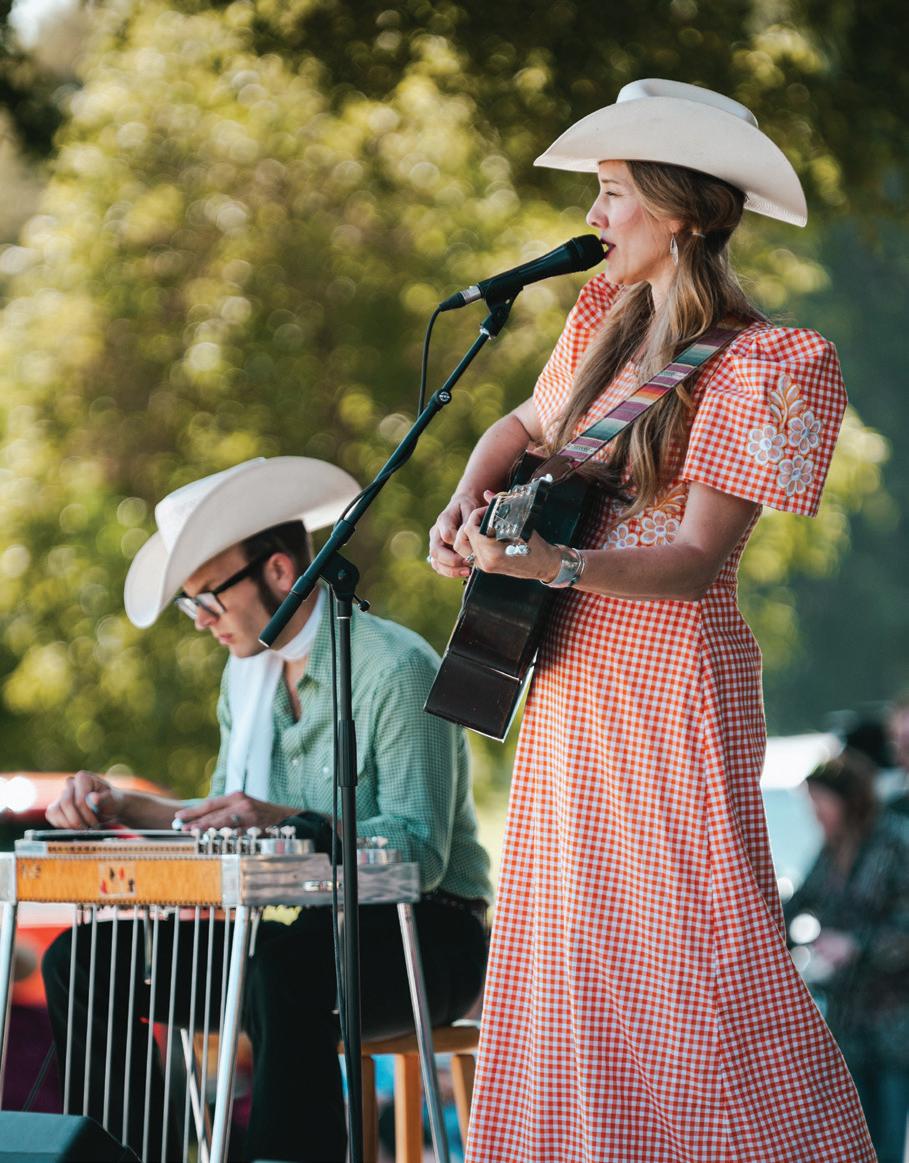
The year 1953 marked a turning point with the release of Wyble’s solo-jazz collection, Diane, which affected a French musette style with fellow guitarist Laurindo Almeida. A touring stint with Benny Goodman led Wyble toward a teaching career, where he proved disinclined to discriminate between idioms.
And so disinclined, it appears, are increasing numbers of jazz aficionados and country-music buffs, with the understanding that the one type of music nourishes the other. Provoked in great measure by the persistence of fundamental swingster Willie Nelson and Ray Benson’s tenured band Asleep at the Wheel, the self-renewing interest has transcended nostalgia to
Lending additional voices are the show-business likes of Vince Gill, Michael Martin Murphey, Junior Brown, Ray Benson, the modern-day Texas Playboys’ Jason Roberts, the Quebe Sisters, Billy Mata, Floyd Domino, Whit Smith, Paul Anastasio, Jake Hooker, Louise Rowe, Kristyn Harris, Devon Dawson, and Barry Corbin.
In a 1997 review of the CD box
The Complete Recordings of Milton Brown & his Musical Brownies, the journalist Robert Palmer argued that “Milton’s music has proved too jazzy and swinging to [claim] a prominent place in the annals of country music, too ‘hillbilly’ to be taken seriously by jazz scholars, too full of regional quirks to be accepted as mainstream pop.” A more recent Ken Burns documentary series, “Country Music,” dismisses Western swing as a sub-genre, with tunnel-vision recognition of Bob Wills. Mike Markwardt’s collaborative film, by contrast, offers a definitive correction of such lapses while inviting even deeper digging.
The unavoidable question: Have Markwardt’s film and its attendant festival chomped down on more than one labor-of-love project can digest? Not by a long shot, it seems, given the four-year persistence of the festival and its documentary offshoot.
Nor has Markwardt called the work finished: “The end-goal,” he says, “is that of establishing a Birthplace of Western Swing Museum in the city where it all began nearly a century ago — Fort Worth.”
When it comes to public transit, Fort Worth is getting left in the rearview. And we better catch up before it’s too late.
By Brian Kendall
Graphics
by Lauren Deitzer
Suburb of Dallas. It was shocking to hear Jeff Davis, chairman of the Trinity Metro Board of Directors and one of the city’s biggest public transportation advocates, say those three words when speaking of Fort Worth.
It’s a label normally, if not often, applied by non-Texan ignoramuses or those green with envy. And when used to describe Fort Worth, it’s cringe-inducing, blood-boiling, and elicits one of two reactions: a curt correction or a suggestion to the offending party to put up their dukes. There are no two ways about it, there exists no greater insult to Fort Worth than to refer to the city as a “suburb of Dallas.”
While we might not like to hear it, Davis said it — three times, in fact — and he said it with good reason. “I’m not from here; I was born in Greenland,” he says. “It allows me to see and say things that people from Fort Worth don’t want to talk about.”
What triggered this brutally honest appraisal of Fort Worth was a conversation about the city’s public transportation. Or, as Davis puts it, the city going decades with “a
lack of leadership, a lack of vision, and an apathy that allowed the city to drift.”
Davis has been at this, fighting for public transit, a while. “Fifteen years, pretty much full time,” he says. And the way Davis sees it, a city without safe, reliable, robust public transit isn’t a city at all. For a place to call itself a bona fide big city takes more than an area code and a few bus routes — heck, even Paris, Texas, has one of those. So, if Fort Worth doesn’t invest in public transit and kick its old habits of expanding suburban sprawl and paving more asphalt, the city could be in a lot of trouble.
While Trinity Metro, Fort Worth’s Metro Transit Agency, can tout a couple of hundred vehicles — including buses — and an impressive rail line from downtown to DFW Airport, its budget and capabilities pale when compared to similar cities. According to their 2024 budgets, of the five most populated cities in Texas with metro transit agencies (Austin, Dallas, Fort Worth, Houston, San Antonio), Fort Worth spends the least amount on public transit, per capita, than any of its in-state peers.
And it’s not even close. According to the National Transit Data Base, Trinity Metro spends $100 per capita compared to Dallas’ $227 per capita and Austin’s $213 per capita.
Trinity Metro does the best with what it has at its disposal, which, comparatively, is not a heck of a lot. And without monetary investment for capital improvements, “the community is drifting into being a suburb of Dallas. We’ve fallen flat,” Davis says.
But why so dramatic? Why do empty buses and a lack of an urban rail system have Davis seemingly on the verge of sounding the death knell for the city? Well, according to Davis, “Public transit is the answer to every problem of our community.” He reiterated, “Every problem.”
While some might assume a decrease in the city’s carbon footprint is the main catalyst, advocacy for public transit is not solely based on a desire for improved air quality — though it helps in that respect, too. You name it — economic growth, equity, congestion, public safety, education, affordable housing, public health, attracting
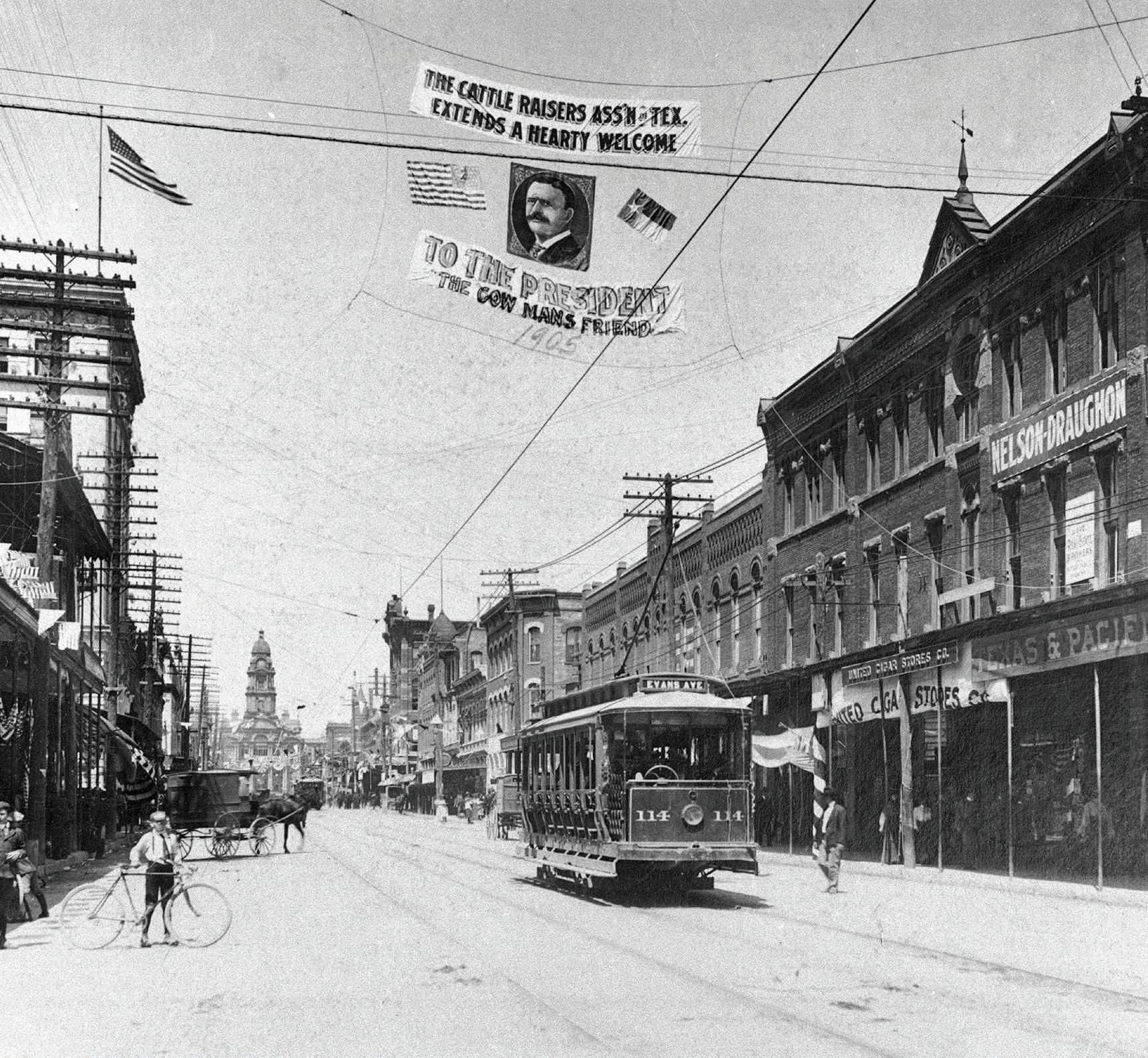
young talent, even improved cultural identity — a more convenient, sustainable way to get from point A to point B has positive effects that go far beyond the city’s ozone levels. Ultimately, public transit measures its success by the overall welfare of the community it’s serving.
But improvement is more than building rails, buying buses, or increasing rideshares. These flashy, expensive items do nothing if the community doesn’t buy-in and change its overall mindset. According to Davis, shifting how we think about a city and the way its communities develop and function is what will bring about improvement.
The ugly truth is, by and large, young people — ones who will remain in this city long after the boomers, Gen Xers, and millennials are gone — have little interest in cookie-cutter homes on the edge of the suburban sprawl. “Some people want the white picket fence, and I’m happy for them, and I appreciate that, but that’s not what the talent wants right now,” Davis says. “They want to be with their friends. They have fewer kids and have them later in life. Unless you start investing in public transit and creating the placemaking that these
kids want, which involves music, restaurants, living, and working, they won’t come [to Fort Worth]. And from a data guy like me, it’s frustrating because so few people understand the need to invest.”
Once millennials aged into earning incomes and making life choices, the generation led a migration back to urban areas, where they sought proximity to food, entertainment, and their place of employment. They were less concerned with square footage and more concerned with convenience. Thus, urban areas have grown by 13% since 2000. What’s happening among young, well-educated professionals — those whom cities openly court and market themselves to make residents — is an inverted sprawl.
“We know that whole market segments, whole industries are built around public transportation that doesn’t exist here,” says Richard Andreski, president and CEO of Trinity Metro. “There are types of industries that attract certain talent that is looking for that urban living where one can get around without a car. It’s a box that needs to be checked for young talent to move to a new city.”
city’s public transit needs and make recommendations. While the committee will be looking at the potential need and feasibility of a rail system between the city’s entertainment districts — Downtown, Stockyards, Cultural District, etc. — the true purpose of the committee appears to be far broader. “It is about tourism and economic development,” Parker said when announcing the committee. “But I think there’s a huge element to also meeting the needs of the population that lives here, that enjoys those entertainment districts.”
Ann Zadeh, a former Fort Worth councilwoman and member of the committee, admits that she was initially unsure of how her fellow committee members felt about investing in public transit. “I went in there thinking that I was going to have to convince half of the committee of the idea that having multimodal urban choices was something that we should be doing,” Zadeh says. “And I was pleasantly surprised to find that, no, everybody agrees that we need to do something besides widening roads and have everybody driving around in their cars.
“Everybody agrees that we need to do something besides widening roads and having everybody driving around in their cars.”
-Ann Zadeh
The reasons to move to Fort Worth are plentiful, but, right now, public transportation isn’t one of them. And without that as part of our pitch to young talent, this could become one of the biggest thorns in the city’s side.
Mayor Mattie Parker appears attuned to the dire situation Davis paints. In May of this year, Parker announced the creation of the Urban Rail Committee Supporting Economic Development and Tourism, which will research and determine the
“We’re not urban transit planners, so we won’t be designing any systems. But we’re talking with people who are professionals about what the options are and making recommendations, and then hopefully being advocates to share, inform, educate, and build support.”
My act of driving an unnecessarily large SUV from the bricks of Camp Bowie to meet him at a downtown coffee shop seems like the bane of Jeff Davis’ existence. Like Parker’s plan, he envisions a city where one can hop on an urban rail at any of the city’s walkable districts to get downtown — it’s all music to his ears and an incredible relief.
“[Mayor Mattie Parker] is a breath of fresh air,” Davis says. “Just having the willingness to listen to data, to look at other communities who’ve done this kind of thing — that openness hasn’t been there historically in Fort Worth.”
Putting Down Routes Smoke billowed into the night sky as large flames consumed TCU’s main academic building, and not a soul in Fort Worth could see it. This was in March 1910, and in this year of our Lord, Fort Worth’s beloved Horned Frogs were operating out of a few impressive brick buildings 90 miles south in Waco.
The fire, whose origins remain a mystery, destroyed the university’s main academic building. And when overzealous firefighters applied their efforts to the structures that had yet to ignite, the flooding and water damage made those buildings similarly unusable.
Looking for a new home, the school was suddenly the coveted darling of a host of suitors. Dallas, Gainesville, Waco, and Fort Worth found themselves in a bidding war for the university. Ultimately, $200,000 and a trolley stop at the university’s new campus sealed the deal.
In a bit of retroactive irony, one of Fort Worth’s most prized institutions moved to this city because of its public transportation system.
And few were more pleased than the Star Telegram’s editorial staff. “Factory stacks and glowing furnaces and armies of labor cannot alone make a great city,” read a July 1, 1910, editorial. “A city to achieve basic greatness must have churches and schools for the toiling, aspiring children of men . . . Without intending perhaps to do so, Fort Worth in her educational institutions is taking her surest and best course to greatness and fame.”
At the time, Fort Worth had one of Texas’ most extensive streetcar systems that, according to historian Quentin McGown,
amounted to over 40 miles of streetcar lines.
Streetcars, once the mightiest mode of mass public transit, first came to Fort Worth in 1876. “It was a one-line, mule-drawn streetcar that went up and down Main Street,” local historian Richard Selcer says. “Then, in 1889, they electrified it, which, in many ways, ushered in the arrival of civilization as we know it.”
The introduction of such mobility — most of the city suddenly accessible without breaking a sweat — was the introduction of the modern metropolitan area. Like all cities — yes, before World War II, all cities had streetcars — Fort Worth real-estate developers began building nearby suburbs around streetcar lines.
“Starting late 1890s and into the early 20th century, streetcar lines boomed,” Selcer says. “They were built everywhere.” This rudimentary form of mass transit and its extensive lines through every major city was one of the biggest catalysts for growth in the United States. It’s exhibit A when one introduces the theory of mass transit affecting positive economic outcomes.
Interestingly, streetcars found their place among cities organically — they weren’t owned or operated by local governments but, rather, private enterprise. They were filling a need, used extensively, and were profitable for a short time. In Fort Worth, the many streetcar lines and companies had been bought out or consolidated into the Northern Texas Traction Company, which even opened an interurban line between Dallas and Fort Worth in 1902.
But things would quickly go south for the streetcar, as the biggest mode of mass transit suddenly had fierce competition:


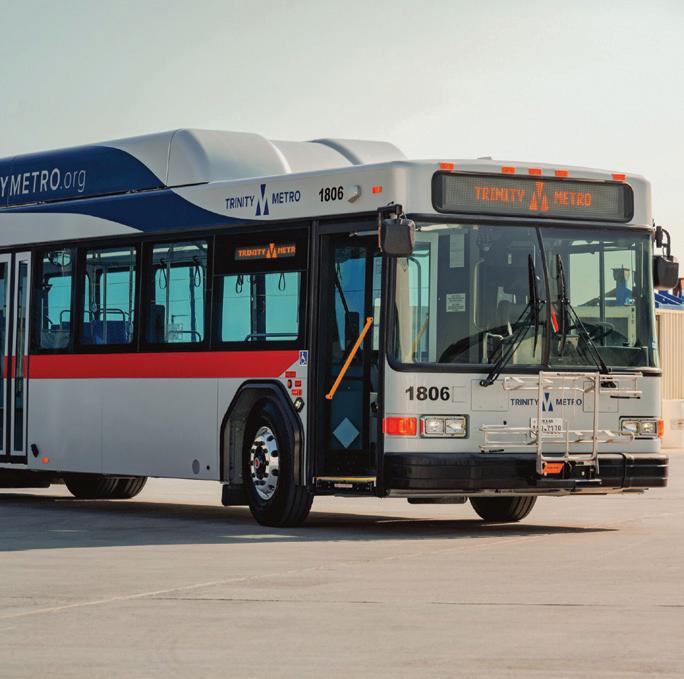
the automobile. And these new, fourwheeled vehicles used the same roads that were initially set up for streetcars, horses, and mules. And not dissimilar to today, where there were automobiles, there was congestion, and streetcars were no longer operating efficiently. Thus, with fewer folks hopping on streetcar lines, the once mighty Northern Texas Traction Company was no longer turning a profit and ceased operations in 1937. And automobiles were now free to roam the streets of Fort Worth without the obstruction of streetcars.
As streetcars struggled to turn profits nationwide, some cities, Boston and San Francisco, to name a couple, took over their private mass transit systems as early as the 1920s. Other cities replaced their operating streetcars with buses beginning in 1923, and New York would take over their city’s then-private subway system in 1940.
Fort Worth, as with most cities not located on the coasts, scoffed at such an idea and doubled down on roads, cars, and trucks, creating massive, multilane highways and thoroughfares that made public transportation unnecessary for those who could afford monthly automobile payments and tanks full of gasoline. Such freedom to put keys in an ignition and take off also had a hand in creating the suburban sprawl, as cities began to devour land with strip malls and large plots of residential spaces in areas once considered the boondocks.
while Houston residents managed to resoundingly defeat an effort to create a subway system for the city — it would eventually open a light rail system, METRORail, in 2004, eight years after DART’s light rail.
“Mass Transit Suddenly Big in Texas,” a New York Times article from Aug. 21, 1983, rightly yet smugly commented on the transit happenings out west as if looking at us through a cage at a zoo. “Interested parties outside Dallas may have looked on with some bewilderment last week as local officials took the first steps toward implementing a 27-year, $8.9 billion mass transit plan that included a $3.4 billion, 160-mile rail system to be built entirely with local funds,” the Peter Applebomepenned article read. “After all, transportation planning in Texas generally has meant highway expansions, and this sprawling, auto-dominated city never has been accused of being a leader in mass transit.”
“You got to invest. You got to have the vision. And if you don’t do that, we’re just going to be a suburb of Dallas.”
-Jeff Davis
While this evolution made a logical public transportation system more difficult, Fort Worth did begin public transit operations — taking over a previously private bus service — in 1978 with the establishment of the City Transit Service (CITRAN). In 1983, voters approved the formation of The T, which would eventually become Trinity Metro, and levied a .5-cent sales tax to finance the new Mass Transit Agency.
That year, 1983, was a big year for mass transit in Texas. Across the metroplex, Dallas voters formed the Dallas Area Rapid Transit (DART) and doubled Trinity Metro’s funding with a 1-cent sales tax,
Fort Worth, meanwhile, had the Tandy Center Subway, a privately-owned tram on a .7-mile track originally built by Leonard’s Department Store in 1963. The tram’s purpose was to make it easier for customers to travel to and from the department store and its massive parking lots. And, yes, it even went underground. In 1967, Tandy Corporation purchased the store and its parking lots, where it built its corporate headquarters that included a shopping mall at its base. Tandy would retain the subway, but it would cease operation in August 2002, and this nostalgic ride into a shopping mall remains the closest Fort Worth has gotten to an urban rail.
For many, their first foray into public transit in Fort Worth, if the Tandy Center Subway doesn’t count, came via the Trinity Railway Express (TRE), a rail to Dallas that opened in 1996. The TRE was a partnership between Trinity Metro and DART — each owning 50% — which used a former Chicago, Rock Island & Pacific Railroad line to offer public transit between the two cities. The second-to-last stop lets riders off in front of the American Airlines Center, making it ideal for attending Mavericks or
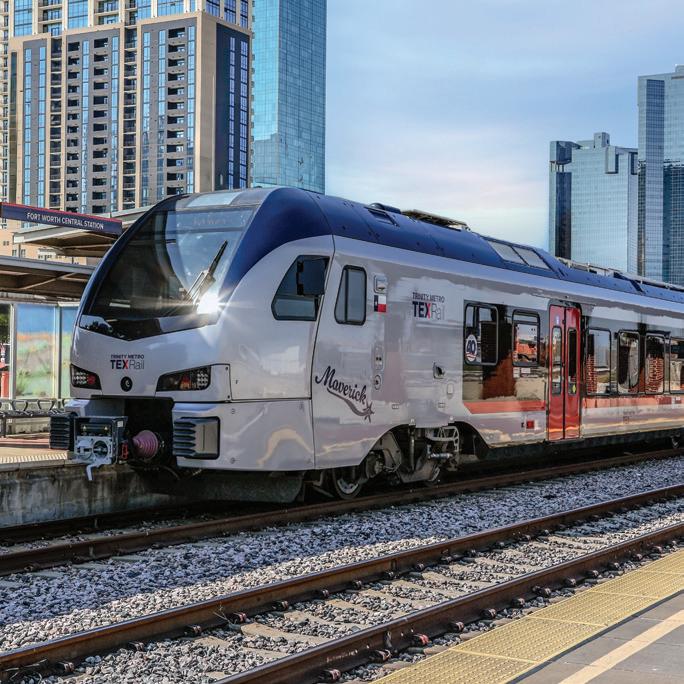
Stars games. “I often talk to people, and they don’t know about the TRE to Dallas,” councilman Michael Crain says. “And I’ll say, ‘When I had to go to work in Dallas, I would get on it. I’d get an hour’s worth of work on the train, and I wasn’t worrying about driving in traffic going there or coming back.’”
The streetcar would make another brief, and ultimately teasing, appearance in 2010 when a proposed idea with a $25 million federal grant attached to it was making the rounds. The project would have ultimately cost $88 million, and the route would have made a six-mile round-trip journey through north Fort Worth, downtown, and the Near Southside.
Despite venturing through obvious activity centers, the measure failed 5-3 in a council vote, with councilmembers voicing concern over the project competing with the planned TEXRail to DFW Airport and that the streetcar would have served only 4% of the city’s population.
Then-mayor Mike Moncrief, who the previous year had appointed a 20-member Modern Streetcar Task Force, would vote with the majority, effectively killing the streetcar.
If a college could talk, one wonders what 1910 TCU would have to say about this.
The Half-Cent Obstacle Richard Andreski, who’s been at the helm of Trinity Metro for two years, came to Fort Worth having previously run the rail and bus system in Connecticut — one of those coastal spots

whose public transit is so good, so well oiled, that it’d be unfair to compare them to a Texas city.
While the systems are night and day, Andreski, like a new football coach taking over an 0-17 team, likes the challenge.
“We have a blank canvas, and I love the blank canvas,” Andreski says. “We can dream, we can think of what it ought to look like. In Connecticut and other places, you have a legacy system that goes back well over a hundred years, and change is very incremental. Here, it’s not incremental at all. I mean, we can dream here, which I’m excited by that.”
That said, for Andreski to act on his dreams, he’s going to have more than a few hurdles with which to contend, the biggest of which is the Trinity Metro budget.
State tax law allows cities to apply an additional 2-cent sales tax to the statewide 6.25-cent sales tax. But, the city is prohibited from allocating more than 1 cent of this tax to fund their Metro Transit Agencies. Texas’ four most populous cities — Houston, San Antonio, Dallas, and Austin — apply the entirety of the revenue from that 1-cent tax to their public transit systems.
The next most populous city, Fort Worth — only 1,000 residents shy of Austin according to a 2023 census estimate — applies half of that toward public transit — a half-cent. To keep the math simple, this means Trinity Metro receives half the revenue, per capita, of their slightly more populous peers. This is the same amount Metro Transit Agencies in Corpus Christi,
Denton, and Laredo receive, each with populations less than half of Fort Worth’s. And, because Trinity Metro is designated a Metro Transit Agency, the application of this sales tax is in lieu of receiving state funding for any projects.
The half-cent that would otherwise go to Trinity Metro is allocated to the Crime Control and Prevention District, which funds crime prevention and intervention programs for local nonprofits. But objections have been raised over how the Fort Worth Police Department has apportioned these funds.
“In my experience, that half-cent has become pretty much absorbed into the public safety budget in a way that they rely upon it,” Ann Zadeh says. “So, it’s not necessarily doing what it was originally intended to do, and that was to work with local nonprofits on crime prevention.”
The Fort Worth Police Department receives its budget from the general fund, which totaled $299 million in 2024 and is not connected with the separate CCPD budget. While the CCPD has a distinct mission geared toward work with nonprofits, its 2024 funding application included $41 million for equipment and technology — including a $4 million helicopter replacement program — and $17 million for recruitment and training. Funds going toward partnering nonprofits totaled $11.9 million of the $130 million budget request.
“Enforcement will always be part of what we do as long as people are breaking the law,” Police Chief Neil Noakes said at a 2022 public hearing about the Crime Control and Prevention District. “We do everything we can to provide people with the resources and tools they need to be successful.”
an MTA to apply a portion of the 2-cent sales tax to such a district.
“My understanding at the time is that there was a serious crime problem that needed to be addressed,” says Zadeh, who was the District 9 councilwoman from 2014 to 2020. “I was in office when staff came to the council to suggest that we make the vote on [the CCPD] every 10 years instead of every five years. And I voiced concern and opposition to that because I felt like we needed to be moving in a direction to free up that other half-cent to put toward transit, but there weren’t enough other people who agreed.”
According to the FBI Crime Data, Fort Worth’s violent crime rate hit an all-time high in 1992, when its rate was more than double the national average. Since CCPD was enacted in 1995, the violent crime rate has steadily and substantially dropped to a point where the rate is now below the national average.
With the CCPD remaining through 2030 — and even then unlikely to lose substantial support — Trinity Metro’s funding will remain far behind its in-state peers. But, according to Andreski, it’s not just Texas markets to which Fort Worth compares unfavorably.
To keep the math simple, this means Trinity Metro receives half the revenue, per capita, of their slightly more populous peers.
The district was first approved in 1995, and voters reapproved the district in fiveyear increments through 2020 when voters elected to continue the district for 10 years, meaning it won’t appear on the ballot again until 2030. Fort Worth is the only city with
“We’ve benchmarked against current peer and aspirational peer cities around the country,” Andreski says. “And we are investing approximately $100 per capita here. That compares not so favorably to our peers.”
Andreski was quick to point out that he’s not speaking about cities on the coasts — an unfair comparison. He’s saying cities like Kansas City, Oklahoma City, Charlotte (strangely not considered a coastal town), Louisville, and Cincinnati, all spend substantially more per capita than Fort Worth. “You go down the list,” Andreski continues, “They’re spending two or two-and-half times as much. So, they’re spending $200 to $250 per capita.”
But, how can this be, I ask. How are these cities’ public transit systems able to secure such a budget?
“It’s a combination of factors,” Andreski
says. “They’re set up differently, and in certain places they’re funded through sales tax, property tax, other mechanisms we’re not recommending. It’s really not my prerogative to say how to fund transit. What I can tell you is that we are woefully behind the competition, and it’s not by a small margin. We’re not spending what we should for a city that’s growing with this much congestion.”
And with that, the avenues by which Trinity Metro can receive funding appear to be getting fewer and fewer. But, according to District 3 councilman Michael Crain, this young, open-minded city council might provide some light at the end of the tunnel.
“Resources are one of those things, and I think we as a city have to decide what is a priority, and I know there’s strong advocates for more public transportation,” Crain says. “And I would say this is probably the first time we have a city council that’s a little younger, a little more well-traveled, a little more exposed. That’s not a knock on any sort of past councils, but I think we’re at this at the right time, and it’s ripe to have this conversation and listen to citizens. What do they see next? How do they envision a public transportation system in the city of Fort Worth?”
Regardless of where their next big check might be coming from, Andreski will continue to work magic with what he has.
One of the biggest issues he faces is that none of the revenue from the half-cent sales tax gets applied to capital improvement projects. It’s all for operational costs — to keep whatever they bought or built running. Thus, Trinity Metro’s best bet to get funding for new projects is through federal grants. And, with recent infrastructure programs opening money in D.C., public transit authorities are chomping at the bit to get their projects financed.
A big chunk of what funded TEXRail, which opened in 2019, came from federal grants. And, according to Andreski, the project, once completed came in at $80 million under budget and ahead of schedule. And Trinity Metro can apply that $80 million to the second phase of the TEXRail project.
The plan was to take the TEXRail, whose southern-most station is currently T&P, and continue the line into the hospital district. However, even with the $80 million in savings applied to the second phase, they’re still $43 million short. And that’s $43 million Trinity Metro will have to raise.
Jeff Davis recalls having a meeting a couple of years ago about the TEXRail extension.
“I was before the council talking about it, and one of the council members says, ‘We can’t afford that. It’s just too much money.’ I’m sitting here going, we’re accessing 50,000 jobs by getting to the hospital district. We’re going to increase ridership. All the advantages that occur with transit. Urban rail in the United States is typically worth a billion dollars a mile. So, if you’re going to have to think about what role we’re going to play in the future of this great community, and if you’re going to put your big boy pants on, put ‘em on, strap ‘em on, have a vision, and let’s hold hands and get it together.”
avoid financial and safety pitfalls. In other words, and as it relates to this article, stop building roads; create walkable, all-in-one neighborhoods; and invest in public transit.
According to Marohn, if Fort Worth continues down the six-lane, asphalt road it’s currently on, in 20 years, we’ll be just like California — perhaps the only thing worse than being a suburb of Dallas.
“I’ve always felt like the conversation and the development pattern in Texas is just 20 years behind California.”
-Chuck Marohn
How to Build a City 101 Fort Worth prides itself on growth. We have a tendency to treat every new person who moves within the city limits as a small victory and check in on the latest census bureau data like it’s the AP Poll. “We just jumped Austin and are up to 11 now.”
People want to live here, which must mean the city’s great. And that’s positive, right?
“Fort Worth is just really, really spread out,” says Chuck Marohn, a civil engineer and founder and president of Minnesotabased nonprofit Strong Towns. “It has all the hallmarks of that style of development, a kind of obsession with growth because when you have that type of development pattern, you need to continue to grow, grow to kind of feed the machine. Cities built in that way tend to really struggle financially, especially when some of the bills start coming due.”
Strong Towns is a nonprofit that advocates for cities to take a smarter, more sustainable approach to development to
“I’ve spent a lot of time in California, and this is the thing that California’s been saying for decades,” Marohn says. “It’s growing here. It’s never going to stop growing. Growth is inevitable. More grow, grow, grow. I’ve always felt like the conversation and the development pattern in Texas is just 20 years behind California.”
Seas of parking lots, asphalt jungles, sprawling developments as far as the eye can see, and a lack of robust, efficient public transit. This is the Inland Empire. This is also Fort Worth.
And how did we end up 20 years behind?
The climate. Texas was too hot pre-air conditioning, Marohn explains. California got a head start because of the nice weather.
But Marohn says it’s not too late for Fort Worth to turn things around. Cowtown doesn’t have to suffer the embarrassing fate of becoming California, but it must make some incremental changes.
First, according to Marohn, before we make too many drastic shifts in our transit plan, like adding an urban rail, we need to build walkable neighborhoods — developments where people live, work, and are entertained. While we can’t plow everything down and start from scratch, things are certainly too segmented and rigid in Fort Worth — this area of town is where you work; this area of town is where you eat; this area of town is where you play. We need to break down those barriers. And, conveniently enough, these all-inone neighborhoods are the exact kind of developments that attract young talent.
“When you don’t have neighborhoods that are walkable, it is really hard to make transit work,” Marohn explains. “It just
becomes a really expensive taxi service.”
In the world of public transit, rail is the big, shiny, sexy thing. It’s what can get a group of citizens (a voting block, if you will) jazzed about the idea. But it’s not necessarily what Fort Worth should do first. For rail to work, one needs stops on a line, and these stops need to be walkable neighborhoods. It doesn’t make sense for an urban rail to drop one off at the front gates of Mira Vista. But, with time, these stops will develop.
And there are already a few developments coming down the pike and a couple others that could be ready for prime time. The upcoming Evans and Rosedale urban village on the city’s east side, yet another mixed-use development on West Seventh, the continuing growth in the Near Southside, the evolving Stockyards, and the long-awaited Panther Island all seem primed to become stops on a future urban rail.
As a city getting on the right path, we’re still a newborn — we have to crawl before we can walk and walk before we can urban rail.
Richard Andreski appears to be on the same page as Marohn.
“I think there’s probably an interim step or two [before we get urban rail]” he says. “I don’t quite see the equivalent of an underground metro system at this point in our history. But I see a lot of opportunity in the high-impact, lower-cost category.”
This includes buses, On-Demand, and eventually, automated vehicles. “I think all those things begin to build critical mass,” Andreski says. “And then what you’re talking about to me is sort of that multigenerational look.”
For now, Trinity Metro is focusing on the right things and the right ways to grow public transit and increase ridership in Fort Worth.
“We’re leaning into the winners, and then we’re finding different ways to serve the markets where we don’t have the ridership demand that we need to support highly frequent service,” Andreski says.
One of the ways their servicing such areas is with On-Demand, an Uber-like taxi service that allows riders to request rides within specific service boundaries via the GoPass mobile app. Only, instead
of slightly outrageous Uber fees, OnDemand is only $2.
In late August, Trinity Metro unveiled the new Orange Line, a bus decked out in cowhide seats that blares country music and shuttles people between downtown and the Stockyards. In case you didn’t know where it was taking you, the whole side of the bus says “Stockyards.”
“We need to be more innovative,” Andreski says when asked about the Orange Line. “We need to try different things, experiment, learn from those tests. And one of the opportunities that jumped off the page was the fact that we have anywhere from 8-to 10-million annual visitors up at the Stockyards every year, and they’re not riding the transit system to get there by and large.”
Other potential projects abound — bullet trains to Dallas and bullet trains to [fill in Texas city here] — but focusing on services like On-Demand and the convenient Orange Line are brilliant ways to introduce both residents and visitors to a public transit they either didn’t know existed or never thought to take. It gets Trinity Metro’s foot in the door. And, once ridership increases, it becomes easier for mayors, council members, and city managers to understand the need to invest in the system.
But no matter how you slice it, Fort Worth is either 20 years away from catching up or 20 years away from becoming California. Hopefully by then, Fort Worth will at least get out from under the thumb of Dallas suburbia.
One should clarify that when Davis says Fort Worth is or is going to become a suburb of Dallas, he says it out of love, like a father scolding a child for lying or fighting at school — ‘If you keep this up, it’s gonna be a tough life for you.’ You can’t deny Davis’ passion.
“We’ve got to get together, figure out what kind of city we want to be first,” Davis says. “I think the assets that we have, we can be one of the greatest cities in the United States. And I mean that not just population wise, but culture wise. But you got to invest. You got to have the vision. And if you don’t do that, we’re just going to be a suburb of Dallas.”
Trinity Metro’s original form of public transit. With 23 routes, not including the downtown Molly the Trolly or the new Orange Line, the Trinity Metro Bus services the entirety of Fort Worth. Frequencies vary between 15, 30, and 60 minutes depending on the route. You can download GoPass app for updated bus schedules.
A public transit’s version of Uber, except On-Demand has a flat fee of $2. Just request a ride on the GoPass app and a driver will pick you up and drop you off at your destination. The only caveat is that it only operates in eight specific zones — and doesn’t travel between zones.
With its maiden voyage in 2019, TEXRail filled a gaping need for convenient, costeffective transit from Fort Worth to DFW Airport. The ride is $2 and five of the seven stations offer long-term parking at $5 a night. Includes stops in North Richland Hills and Grapevine’s Main Street Station.
The latest offering from Trinity Metro, the tourist-friendly Orange Line bus offers service from downtown Fort Worth to the Stockyards. With cowhide seats and country music, CEO of Trinity Metro, Richard Andreski, was inspired by Disney World and said he wanted the journey to be part of the entertainment.
The best way to get to a Mavs or Stars game — or downtown Dallas — the TRE is a rail that runs between Fort Worth and Dallas. The line takes 63 minutes end to end, has 12 stations, and starts at Fort Worth T&P Station and ends at EBJ Union Station.
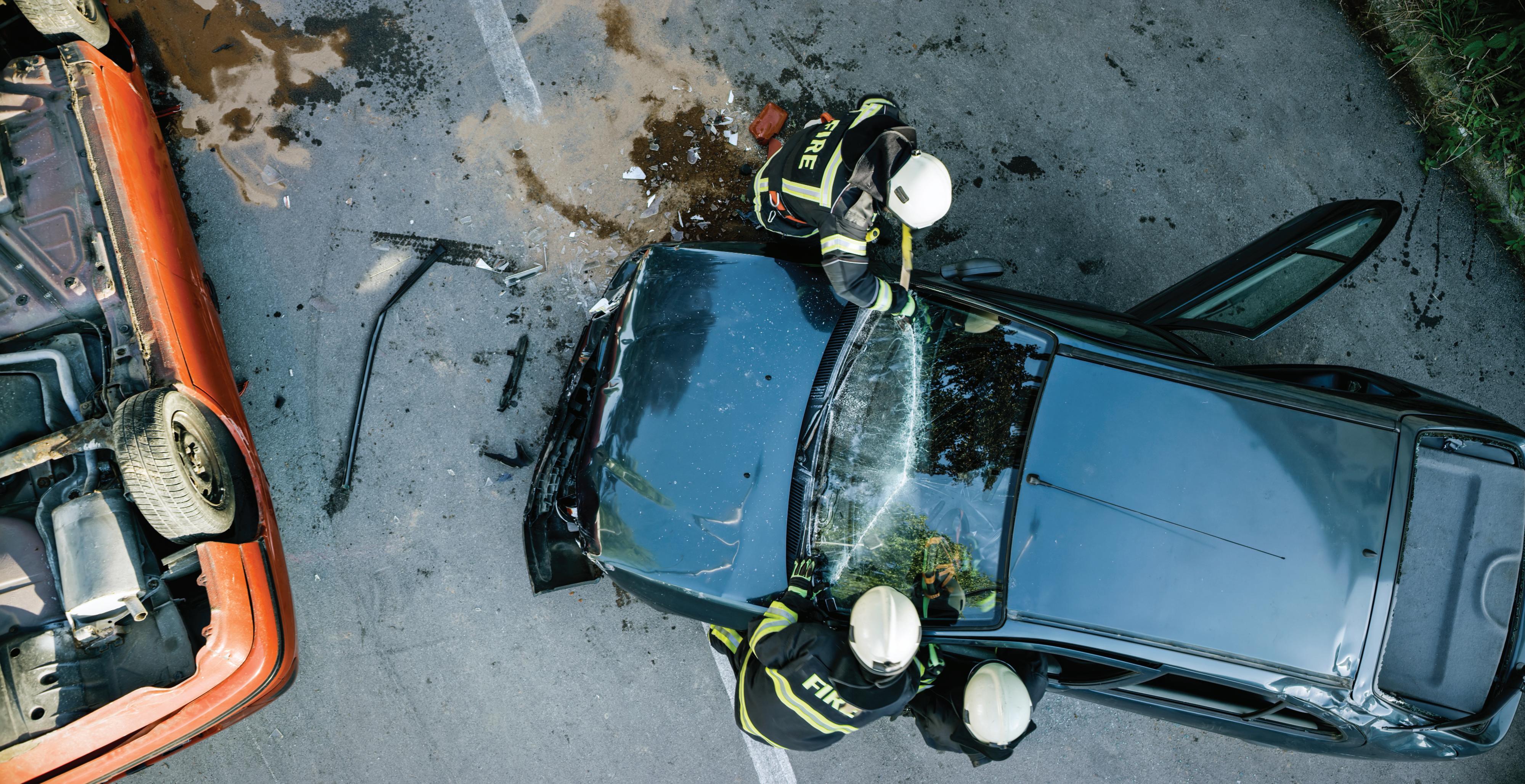
Putting together a comprehensive list of every Fort Worth-based charity would be an exercise in futility — there are nearly 7,000 nonprofits in Tarrant County. Not only would this be a bear to compile, but it would also prove overwhelming for our readers. So, instead, our editors have put together a list of charities that we feel is a good place to start. Eventually, our hope is that locals who get the philanthropic itch might widen their scope of giving, and we guarantee there’s a charity within Greater Fort Worth that aligns with your niche.
All of the following charities and foundations are registered 501(c)(3) nonprofit organizations.
With the caveat of this not being comprehensive, we’d love to hear your feedback and include additional charities in our online version. For any suggestions, please email our editor at bkendall@fwtexas.com.

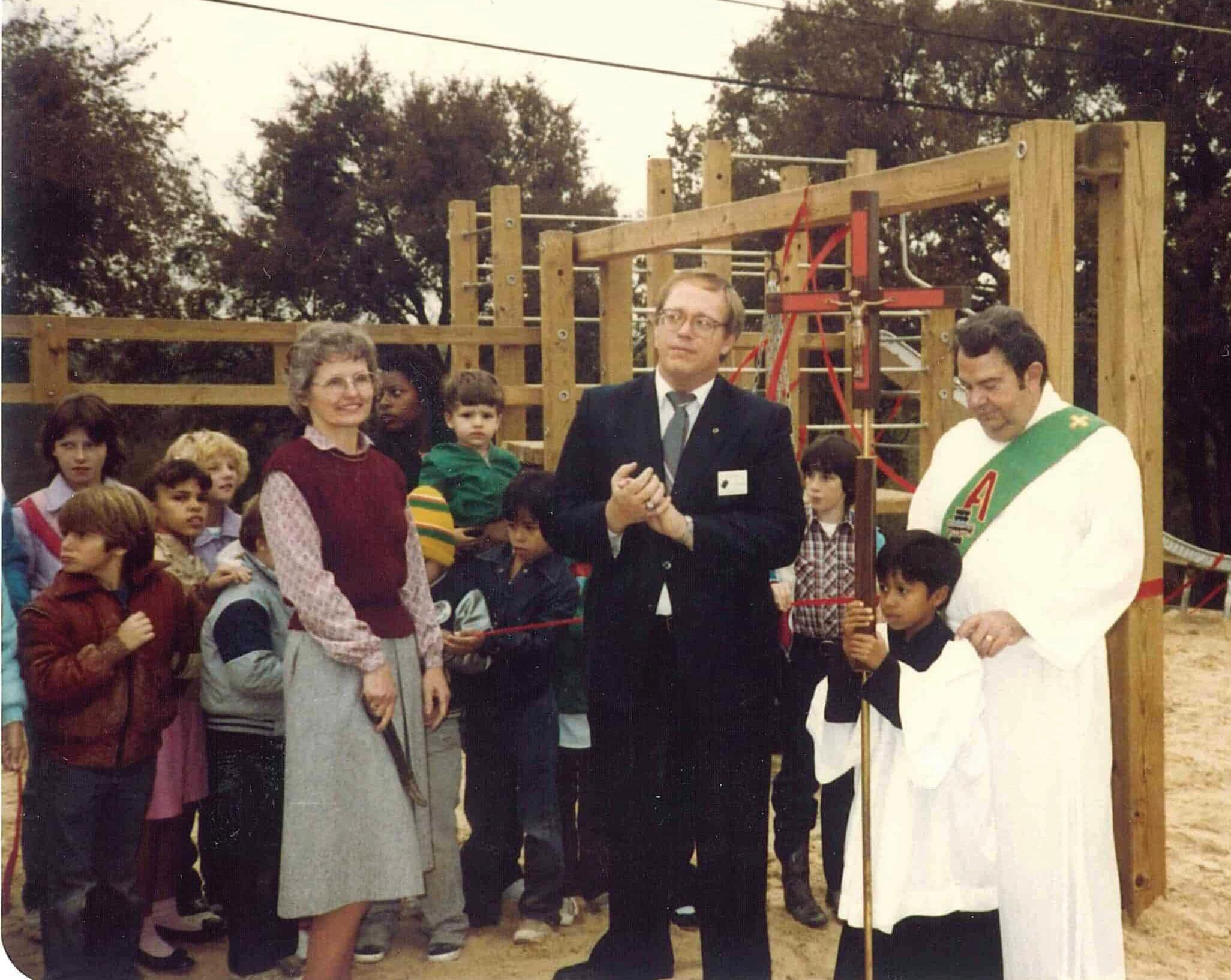

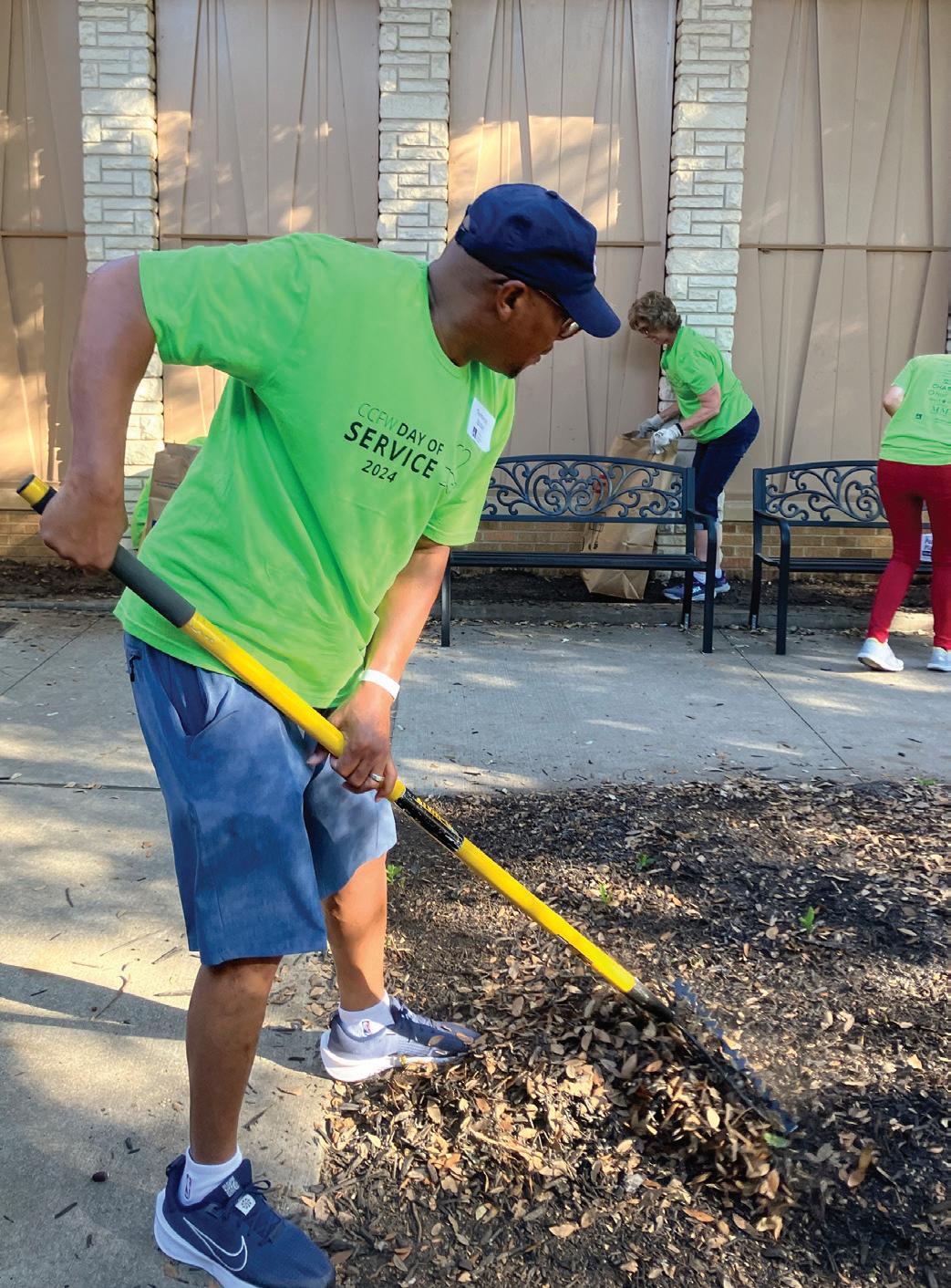
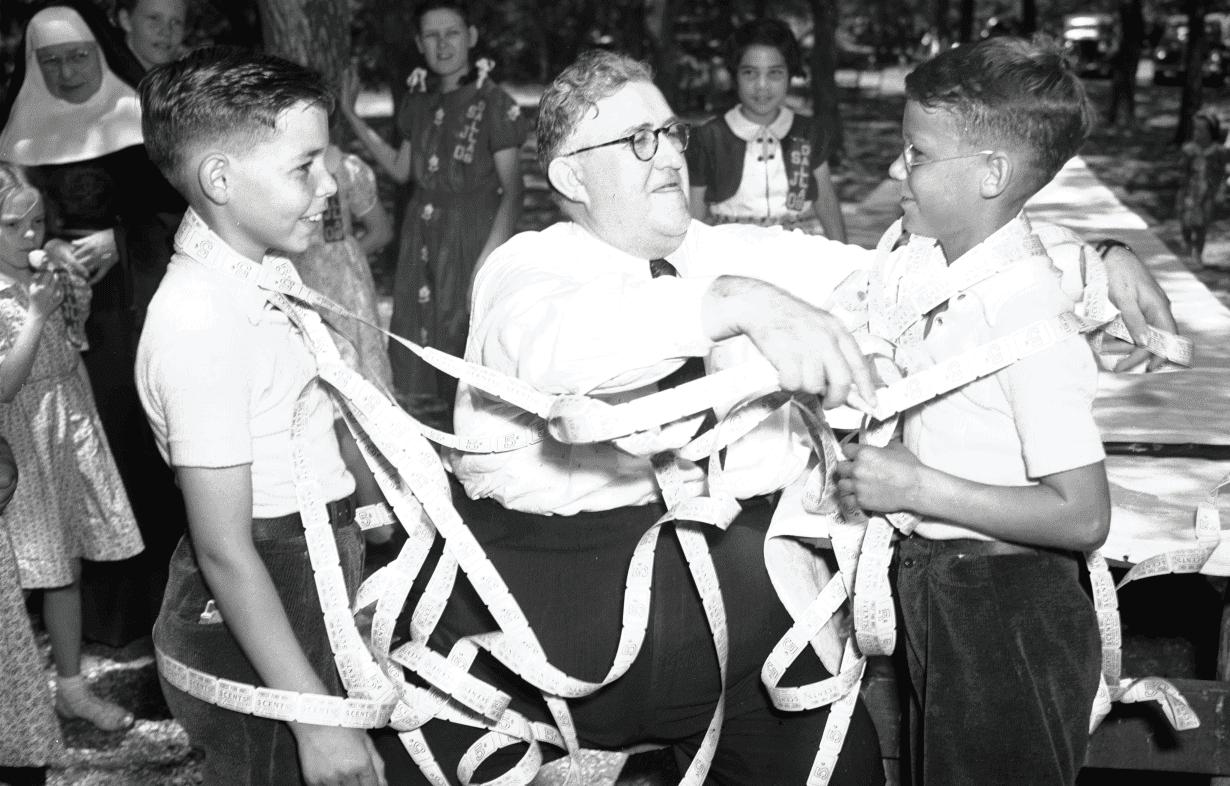

By John Henry
The task of trying to stop the cycle of poverty, that revolving door of deplorable need, is a Goliath-sized challenge requiring far more than David’s precision slingshot. Society wrangling with poverty and its impacts, not only on the family and individual but the whole, is as old as civilization itself. The philosophers of ancient Greece were talking about it. The least among us, of course, was a central topic in the teachings of Jesus Christ, 2,000 years ago.
More recently, Lyndon Johnson began a federally waged War on Poverty.
By and large, it is a foregone conclusion that, despite the best of intentions and trillions spent, poverty has won.
“Paul Ryan, when he was Speaker of the House, came here about six years ago,” says Allison Rix, chair of the board of Catholic Charities Fort Worth. “And this is shocking to me, but he said that of all the trillions of dollars that the government has spent on all these social programs, they’ve never studied [the impact of] any of them.”
Paul Ryan’s extensive work on the social safety net during his time as Speaker is well-documented. I asked him for an interview, but he said he couldn’t fit me into his busy schedule. However, he and an aide confirmed by email that it was true.
One very vexatious fact kept reoccurring in that work: There wasn’t much evidence on what works and what doesn’t work. All that was known for sure was that scarce government dollars were spent on well-intentioned programs that had failed to do anything except an expense of scarce taxpayer dollars.
Of course, it’s not the policymaker or service providers who bear the burden of failed public policy. Rather, it’s the single mother who needs a job or the young child who needs security to grow, physically, mentally, and emotionally, into his or her potential.
Poverty estimates in the U.S. are made by two measures.
The official poverty measure, in use since the 1960s, defines poverty by comparing pretax money income to a poverty threshold that is adjusted by family composition. The Supplemental Poverty Measure, first released in 2011 and produced with support from the U.S. Bureau of Labor Statistics, extends the official poverty measure by accounting for many government programs that are designed to assist low-income families but are not included in the official poverty measure. The SPM also includes federal and state taxes and work and medical expenses. In addition, the SPM accounts for geographic variation in poverty thresholds, while the official poverty measure does not.
The official poverty rate in 2023 was 11.1%, or 37 million people in the U.S. in poverty. The SPM was 12.9%, or 43 million people.
In Tarrant County, the poverty rate in 2023 was 10.6%, according to the American Community Survey. In 2023, 16.4% of the population was living with severe housing problems in Tarrant County, according to the County Health & Roadmaps. Females, 25-34, were the largest demographic living in poverty.
Many of these are children, who are also faced with food insecurities.
Researchers at MIT unveiled the “living wage.” They argued that the poverty
threshold is outdated, accounting only for a basic food budget but not incorporate taxes, child care, or health care.
In place of the poverty thresholds, they came up with the concept of the “living wage,” which incorporates all necessary expenses families face.
For a family of two working adults and two children, the living wage is $66,842, according to one study. That means that families earning below a living wage will have difficulty covering basic expenses and necessities.
Ryan’s reasoning for coming to Fort Worth lay in a cutting-edge program developed by Catholic Charities Fort Worth. The nonprofit has developed and implemented a case-management model to ending poverty.
And it works. How do they know it works? Data.
Notre Dame’s Wilson Sheehan Lab for Economic Opportunities helps service providers apply scientific evaluation methods to better understand and share effective poverty interventions. It’s a belief, the center says, that rigorous research is a “powerful” means to an end.
An end to injustice. An end to dependence. An end to poverty.
“And a new beginning for millions of families who are ready to thrive,” officials there say.
The Lab for Economic Opportunities has put Catholic Charities Fort Worth’s Padua
program in its laboratory for research, having completed two research randomized control trials. Both validated the success of the programs.
“Ultimately, we’re helping individuals who are unstable,” says Michael Iglio, CEO of Catholic Charities Fort Worth. “Unstable in finances, unstable in employment, unstable in whatever it might be in life, and we help them through long-term coaching as an accountability partner, as a coach, to learn the skills that are necessary to find a life to thrive in a level of stability for their whole family.”
What they are attempting to do ultimately is hone executive functioning, that set of mental skills that enable individuals to manage their thoughts, emotions, and actions in order to achieve goals.
Iglio, an engineer by education and trade, sets down some numbers for me to see. Eight years ago, the organization set as a goal to help get 10,000 families out of poverty in 10 years.
“We’re at 5,699,” he says proudly but with a determination. “Almost 5,700 families, backed by research, we have helped in this community to truly break away from poverty.”
By 1910, with William Howard Taft as president, the population of the U.S. had reached more than 91 million after a surge the previous decade of 16 million that included as many as 13 million immigrants.
Many of the newcomers were Catholic.
The National Conference of Catholic Charities was founded in 1910 as “the attorney for the poor.” Among the 400 in attendance at its first meeting in Washington, D.C., were three instrumental leaders: Msgr. William J. Kerby; Msgr. John O’Grady, an Irish immigrant; and Bishop Thomas J. Shahan, himself the son of immigrants from the Emerald Isle.
O’Grady was a seminal figure in Catholic Charities not only spreading across the country but in cultivating the organization and its offshoots in professionalism and training.
Catholic Charities Fort Worth’s roots are in a small group of women at St. Patrick’s Cathedral in downtown — more than 100 years ago, it was known simply as St. Patrick’s Church. They petitioned Bishop
Edward J. Dunne to begin a work of mercy. They wanted to work with the poor and vulnerable in the St. Patrick community. That manifested in mostly helping parental units feed their families.
But there began the good work of Catholic Charities Fort Worth. More than 100 years later, the organization stands out as an exemplar of service organizations.
With nearly 400 employees throughout the 28 counties, Catholic Charities Fort Worth serves tens of thousands of people each year through its diverse services, poverty solutions, and income-generating social enterprises.
“There are a 138 Catholic Charities across the United States,” Iglio says, “and we are the most unique.”
Alexis de Tocqueville’s Democracyin Americais a groundbreaking work that analyzed the political and social systems of the U.S. in the early 19th century. Tocqueville, a French political thinker, traveled to America in 1831 to study its form of democracy and provide insights on the strengths and potential weaknesses of democratic systems as a whole.
One of Tocqueville’s takeaways lay in that religion in America, even untethered from the state, thrived here, acting as a stabilizing force for democracy, fostering civic virtue, and providing moral guidance.
If he arrived today then, he’d no doubt observe the correlation of a religious culture that has weakened and the dysfunction of the political culture as naturally proportional.
Who then should be surprised when Christ’s great commandment to love one another, no matter who you are, is washing away as if street chalk after a rain?
In addition to Catholic Charities’ poverty-ending initiatives, the nonprofit also provides affordable dental care, immigration services, and transportation assistance to clients within Tarrant County.
All of that is ultimately to advance stability and self-sufficiency. Who, after all, goes confidently into an interview with unhealthy teeth or gums? Few, if
any, is the answer.
But the mission of Catholic Charities has come under attack in the political climate of the day. It’s not necessarily new, the life of immigrants — ask the Irish or the Italians of yesteryear — but Catholic Charities persists because the calling and mission is bigger than the day’s flavor of politics or historic trends.
Those politics, of course, can extend to religion itself. The first and most important rule of Catholic Charities is one does not need to be Catholic to receive the organization’s help or benefits.
Though Catholic Charities Fort Worth serves the 28 counties of the Catholic Diocese of Fort Worth, it is a separate entity.
“We’re our own organization,” says Iglio. “I meet with Bishop [Michael] Olson on a regular basis, but we’re independent. He gives that autonomy to us. He wants to serve the poor and the vulnerable of the community in an impactful way.
“We don’t just serve Catholics. We serve everyone across the diocese. Basic Catholic social teachings are the foundation of our organization, and the first social teaching is that we see the inherent dignity in every single person. We serve them for who they are because Christ is in every one of us.”
Seeing that inherent dignity means the services are client-centered, an acknowledgement that each family’s journey out of poverty is unique. The program helps guide good decision-making. Many clients, after all, didn’t grow up with model exemplars of executive functioning.
The stories of the miracles taking place at Catholic Charities have been told by news outlets, among academics, and even before committees in the United States Congress. But, still, too many across the community don’t know what is happening there.
Hearing of the Padua program, I immediately thought of St. Anthony of Padua, a Portuguese Catholic priest who lived between 1195-1231 and whose life was committed to helping the poor and those in need. In the Roman Catholic Church, he is best known as the patron saint of lost things. However, he is also the patron of lost people.
Lost might be too extreme a descriptor for Blanca and Victor Gutierrez. That they
were in need of guidance, there seems to be no doubt.
Today, they sit confidently in front of a camera, poised in both appearance and body language, eager to tell the world about how Catholic Charities Fort Worth’s case-management model changed the direction of their lives to one of hope and expectation.
Blanca entered a nursing program right out of high school, but she stalled because of finances or personal circumstances. There were pregnancies, too. She met Victor in Wichita Falls, and five years later, today, they are married, graduates of the Catholic Charities program and thriving.
“I eventually moved down here, started working in landscaping, and, also, I was a cook for a while,” Victor says into the camera. “That’s when it came about that I wanted to go to school, just to get out of that constant cycle. I felt like I needed to provide more [for his family] than just the basic necessities. What got me to look into the [Catholic Charities] program was we had just had our daughter months prior. I needed to do something other than what I was doing.”
Catholic Charities Fort Worth developed five key “Out of Poverty Pathways” to support individuals in overcoming hardship:
Education: Offering counseling and support for educational milestones.
Emotional Resiliency: Providing counseling referrals, long-term case management, and mental health programs, especially for refugees.
Employment: Assisting with job searches and career coaching to help clients secure and succeed in employment. For example, Victor started as a welder at XCaliber Container and worked his way up to production supervisor.
Financial Resiliency: Teaching financial skills for long-term independence.
Resource Stability: Offering short-term relief, support for new mothers, and comprehensive refugee services. The St. Teresa’s Baby Boutique is a resource where new mothers can pick out clothing for their newborns.
Blanca expected only financial and school support but received so much more, including personal life guidance.
“We still use the budgeting spreadsheet
they taught us,” she says. Now, with a master’s degree in nursing and working as a nurse practitioner, Blanca reflects on the program: “A lot of changes.”
The work of Catholic Charities goes beyond charity — it’s economic development. They provide much-needed workers for a region in demand.
“We met with Robert Allen, the new CEO of Fort Worth Economic Development, and when we mentioned serving 17,000 clients last year, he heard ‘17,000 workers,’” Iglio says. “We’re seeking partners — corporations, hospital systems — who can help fund programs, and, in turn, we’ll develop a pipeline of workers for them.”
Iglio emphasizes that Catholic Charities isn’t looking for handouts. Instead, they want to build partnerships that add value to the community. One such initiative is Padua, designed by Catholic Charities under former CEO Heather Reynolds (now at Notre Dame’s Lab for Economic Opportunities).
Padua includes a detailed assessment, service plan, small caseloads, case management, and flexible financial resources. The model focuses on partnerships, particularly with local community colleges, to efficiently connect clients to services.
“The campus presidents love us,” Iglio says, noting their partnerships with schools like Tarrant County College. “We provide students with the resources to succeed when life happens, allowing schools to focus on academics while we help with life challenges. Graduation rates are now at 80%, and we have about 1,000 clients on campuses each semester.”
Catholic Charities isn’t handing out scholarships or money; they’re guiding students to make the right decisions and navigate challenges. The goal is to help individuals move from survival jobs to career roles, teaching soft skills that lead to promotions.
As Paul Ryan says, “What the Padua Project is doing is more than just helping people get jobs or improve housing — they’re helping them achieve their God-given potential, building a more just society.”
Michael Iglio has brought muchneeded stability to Catholic Charities Fort Worth, following leadership turnover in recent years, including the resignation of CEO Christopher Plumlee two years ago. Iglio, previously COO, stepped into the CEO role in June 2023.
Reflecting on his journey to the organization, Iglio calls it “divine intervention.” Growing up outside San Antonio with a decorated Vietnam veteran father, he studied chemical engineering at Texas A&M. Although he didn’t come from wealth, he was instilled with the belief that he could achieve any goal through hard work, which he demonstrated by putting himself through college.
After starting his career at Frito-Lay, Iglio spent over a decade in various roles, including turning around a troubled plant in Irving. When faced with a promotion at Frito-Lay’s corporate office, he opted instead for a health care company role, avoiding heavy travel that would take him away from his family. He led expansions and increased profitability, but he eventually advised the board that a doctor would better lead the organization. This shift led him to explore the nonprofit world, and a friend’s suggestion introduced him to Catholic Charities.
Iglio became COO in 2020, where he played a leading role in guiding the organization through the pandemic. Under his leadership, Catholic Charities achieved recognition for its company culture, ranked by Gallup Q12 in the top 21st percentile of engaged workplaces worldwide.
“I’ve always focused on the health of the workplace,” Iglio says. “If we’re not strong here, how can we be strong in helping others?”
His passion for fixing root causes as an engineer drives his work at Catholic Charities, especially in tackling poverty. Notre Dame’s validation of the nonprofit’s work through research and study was the tipping point in him taking the job here.
“When I saw the impact, as an engineer, I knew this was it,” Iglio says. “We’re not just offering a handout but a hand up to break the cycle of poverty.”
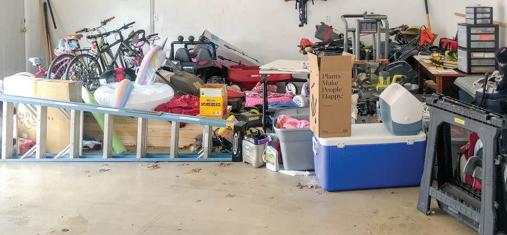
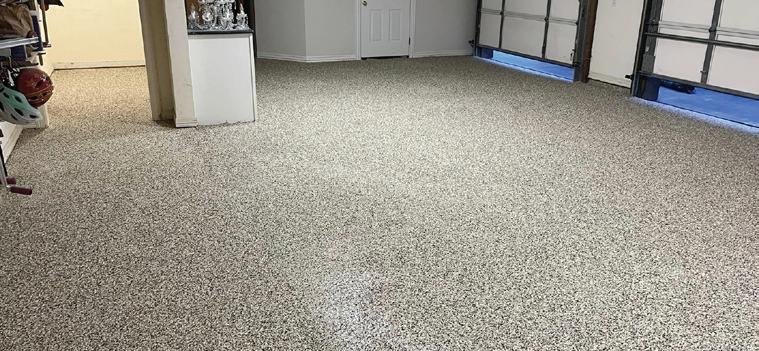








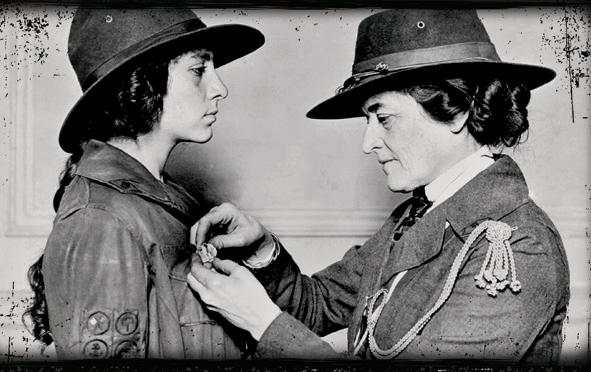



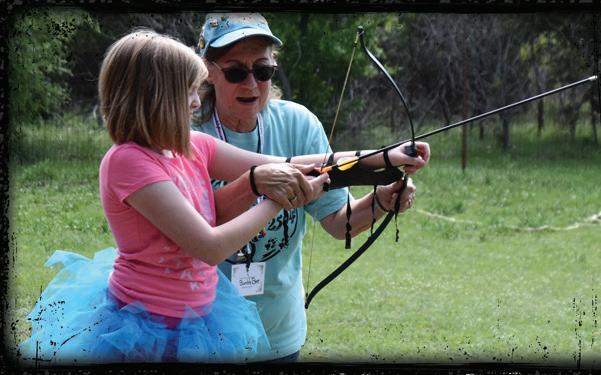



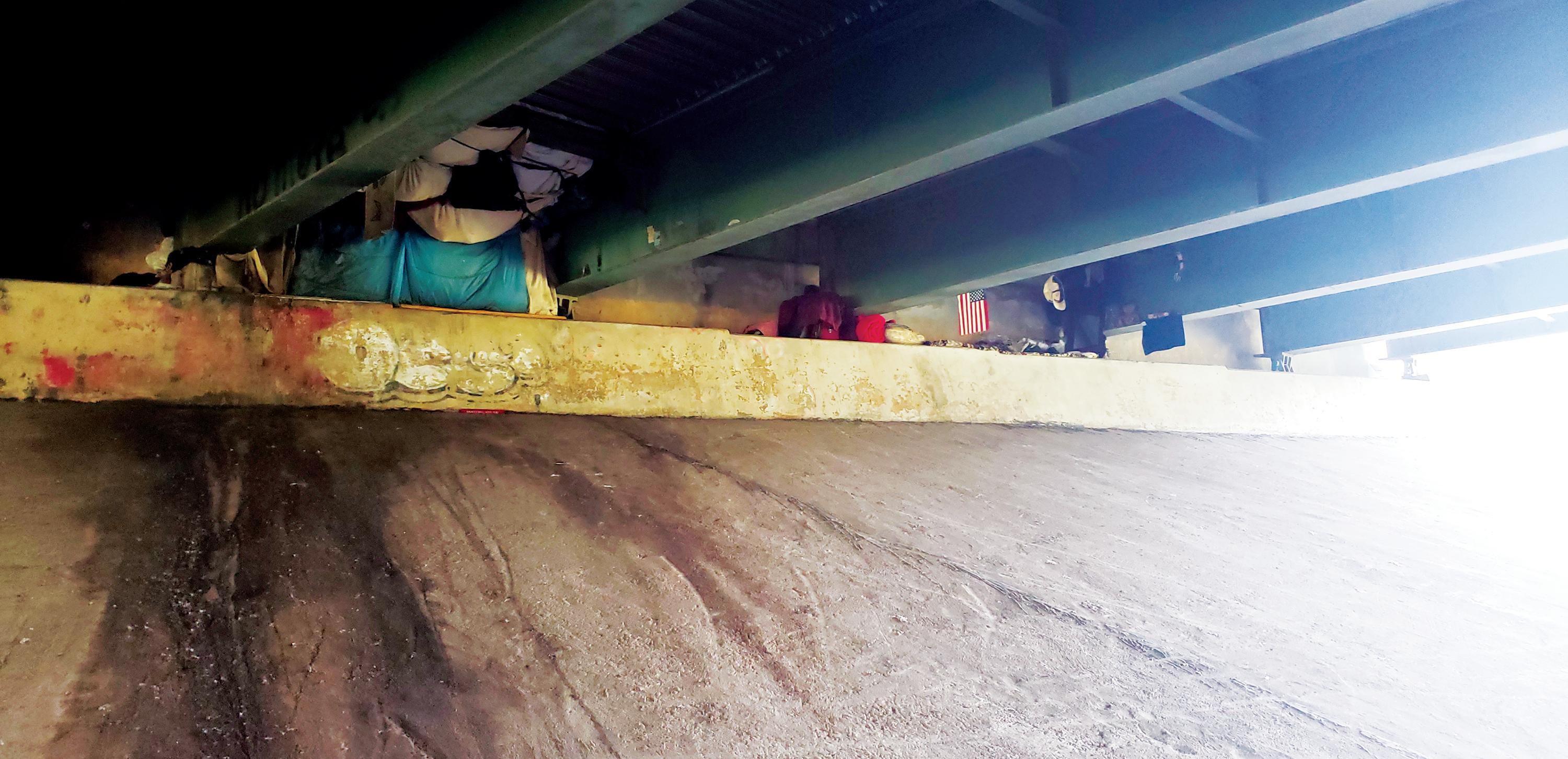


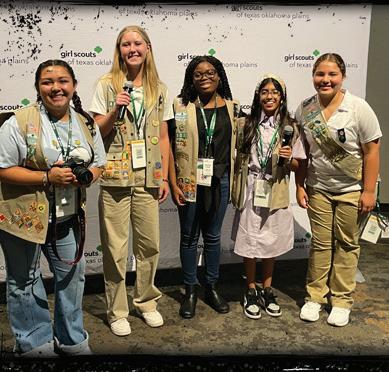





Note: Names in Orange are Foundations
American Paint Horse Foundation apha.com
Cowtown Friends of Fort Worth Animal Care and Control cowtownfriends.org
Don’t Forget to Feed Me dontforgettofeedme.com
Humane Society of North Texas hsnt.org
Saving Hope Animal Rescue savinghoperescue.org
The Saving Hope Foundation saving-hope.org
Amon Carter Museum of American Art cartermuseum.org
Amon G. Carter Foundation agcf.org
Art Bridges Inc. artbridgesfoundation.org
Art Tooth arttooth.com
Arts Fifth Avenue artsfifthavenue.org
Arts Fort Worth artsfortworth.org
Ballet Frontier of Texas balletfrontier.org
DNAWORKS dnaworks.org
Fort Worth Museum of Science and History fwmuseum.org
Fort Worth Opera fwopera.org
Fort Worth Symphony Orchestra fwsymphony.org
Fort Worth Youth Orchestra fwyo.org
Gallery of Dreams galleryofdreams.org
Jubilee Theatre jubileetheatre.org
Kimbell Art Museum kimbellart.org
Modern Art Museum of Fort Worth themodern.org
National Cowgirl Museum and Hall of Fame cowgirl.net
National Juneteenth Museum nationaljuneteenthmuseum.org
National Multicultural Western Heritage Museum and Hall of Fame cowboysofcolor.org
Performing Arts Fort Worth basshall.com
Slaughter Family Arts Awards sfaawards.org
Spotlight Cast & Crew spotlightcastcrew.org
Texas Ballet Theater texasballettheater.org
Texas Center for Arts and Academics artsacademics.org
Texas Cowboy Hall of Fame tchof.com
Texas Girls' Choir texasgirlschoir.org
The Art Station theartstation.org
A Wish with Wings awww.org
ACH Child and Family Services achservices.org
Alliance for Children allianceforchildren.org
Big Brothers Big Sisters bbbstx.org
Boy Scouts of America Longhorn Council longhorncouncil.org
Boys & Girls Clubs of Greater Tarrant County bgcgtc.org
Camp Fire First Texas campfirefw.org
Child Care Associates childcareassociates.org
Children's Charities of Fort Worth childrenscharitiesfw.com
Christ's Haven for Children christshaven.org
Clayton Youth Enrichment claytonyouth.org
Community Storehouse communitystorehouse.org
Court Appointed Special Advocates (CASA) speakupforachild.org
First Tee Fort Worth firstteeftworth.org
Gill Children's Services gillchildrens.org
Gladney Center for Adoption adoptionsbygladney.com
Heroes for Children heroesforchildren.com
Lena Pope lenapope.org
Make-A-Wish North Texas wish.org/ntx
Panther City Artists panthercityartists.org
Ronald McDonald House of Fort Worth rmhfw.org
Santa Fe Youth Services yapinc.org/santafeyouthservices
Spark Worldwide sparkworldwide.org
The Cowtown C.A.L.F. Program cowtownmarathon.com
The Homes for Children thehomesforchildren.org
The Parenting Center theparentingcenter.org
The WARM Place thewarmplace.org
Young Life fortworth.younglife.org
6 Stones 6stones.org
Community Frontline communityfrontline.com
Cornerstone Assistance Network canetwork.org
Double Eagle Charities doubleeaglecharities.com
Downtown FW Initiatives Inc. dfwi.org
Fellowship of Christian Athletes fca.org
Fort Worth Promotion and Development Fund www.thepartyinfortworth.org
Historic Fort Worth Inc. historicfortworth.org
HOPE Farm hopefarmfw.org
Hope Prison Ministries hopeprisonministries.org
LVTRise lvtrise.org
Near Southside Inc. nearsouthsidefw.org
North Texas Community Foundation northtexascf.org
Sid W. Richardson Foundation sidrichardson.org
The Big Good thebiggood.org
The Morris Foundation themorrisfoundation-fw.com
United Community Centers unitedcommunitycenters.org
United Way of Tarrant County unitedwaytarrant.org
UpSpire upspire.org
Volunteers of America Texas voatx.org
Autism Treatment Center atcoftexas.org
Bobby Norris Roundup for Autism roundupforautism.org
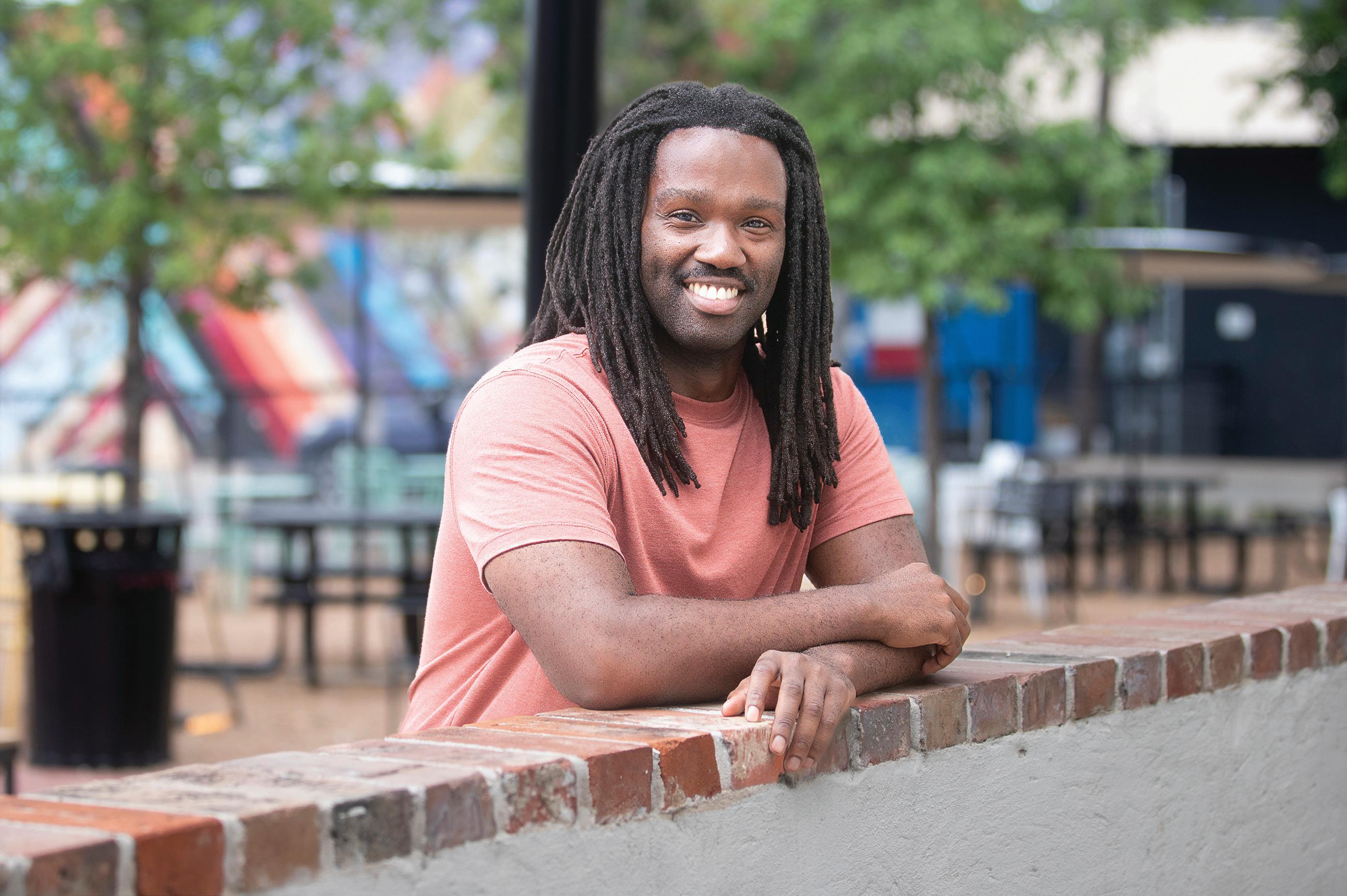

Down Syndrome Partnership of North Texas dspnt.org
Easterseals easterseals.com
Goodwill Industries of Fort Worth goodwillfortworth.org
Guardianship Services, Inc. guardianshipservices.org
Helping Restore Ability hratexas.org
Cheryl's Voice cherylsvoice.org
Once Safe Place onesafeplace.org
SafeHaven safehaventc.org
The Women's Center of Tarrant County womenscentertc.org
Academy 4 academy4.org
Arise Africa artisafrica.org
Carroll Education Foundation carrolleducationfoundation.org
Communities in Schools Greater Tarrant County cistarrant.org
Fort Worth Public Library Foundation fwlibraryfoundation.org
Fort Worth Save Our Children Learning Center fwsoc.org
Fortress YDC fortressfw.org
Happy Hill Farm happyhillfarm.org
Junior Achievement of the Chisholm Trail chisholmtrail.ja.org
KinderFrogs kinderfrogs.tcu.edu
LinkED Link-ed.org
Nicholas & Louella Martin Charitable Fund northtexascf.org
Paslay Foundation paslayfoundation.com
Rainwater Charitable Foundation rainwatercharitablefoundation.org
Rivertree Academy rivertreeacademy.org
Tarrant Literacy Coalition tarrantliteracycoalition.org
Tarrant To & Through (T3) Partnership t3partnership.org
Texans Can Academy - Fort Worth texanscan.org
The Ladder Alliance ladderalliance.org
The Miles Foundation milesfdn.org
The Welman Project thewelmanproject.org
Botanical Research Institute of Texas brit.org
Fort Worth Ducks Unlimited fortworthdu.com
Friends of the Fort Worth Nature Center naturecenterfriends.org
Streams and Valleys, Inc. streamsandvalleys.org
Tarrant Coalition for Environmental Awareness dpjc.org/teca
Camp John Marc campjohnmarc.org
Pure Adventure pureadventure.org
AIDS Outreach Center aoc.org
All Saints Health Foundation allsaintsfoundation.bswhealth.com
Alzheimer's Association alz.org
American Cancer Society acshpfw.ejoinme.org
American Diabetes Association diabetes.org
American Heart Association heart.org
American Lung Association lung.org
Black Dog Charity blackdogcharity.com
Bras for a Cause brasforthecause.com
Breakthrough T1D (Formerly JDRF) breakthrought1d.org
Cancer Care Services cancercareservices.org
Cancer Support Community North Texas cancersupporttexas.org
Carter BloodCare carterbloodcare.org
Community Healthcare of Texas CHOT.com
Cook Children's Health Foundation cookchildrens.org
Note: Names in Orange are Foundations
Creel Family Philanthropies creelfamilyphilanthropies.com
Crohn’s & Colitis Foundation, North Texas/ Oklahoma Chapter chronscolitisfoundation.org/chapters/ntexas
Cuisine for Healing cuisineforhealing.org
Cystic Fibrosis Foundation cff.org
Fort Worth Adolescent and Young Adult Oncology Coalition fwaya.org
HSC Foundation unthsc.edu/give
Jewel Charity jewelcharity.org
Jordan Elizabeth Harris Foundation jordanharrisfoundation.org
JPS Foundation jpshealthnet.org/foundation
Leukemia & Lymphoma Society lls.org/rdrv
Leukemia Texas leukemiatexas.org
LifeGift lifegift.org
Lighthouse for the Blind of Fort Worth lighthousefw.org
March of Dimes marchofdimes.org
Mercy Clinic of Fort Worth mercy-clinic.org
MHMR Foundation mhmrtarrant.org
Moncrief Cancer Institute moncrief.com
Muscular Dystrophy Association mda.org/office/north-texas
National Alliance on Mental Illness (NAMI) namitarrant.org
National Kidney Foundation kidney.org/offices/nkf-serving-texas
NICU Helping Hands Foundation nicuhelpinghands.org
Once Upon a Time Foundation onceuponatime.org
Project 4031 project4031.org
Recovery Resource Council recoverycouncil.org
Rutledge Cancer Foundation rutledgecancerfoundation.org
St. Jude Children's Research Hospital (ALSAC) stjude.org
Susan G. Komen Greater Fort Worth komengreaterfortworth.org
Tarrant County Medical Society Alliance tcmsalliance.org
Texas Health Foundation texashealth.org/en/foundation
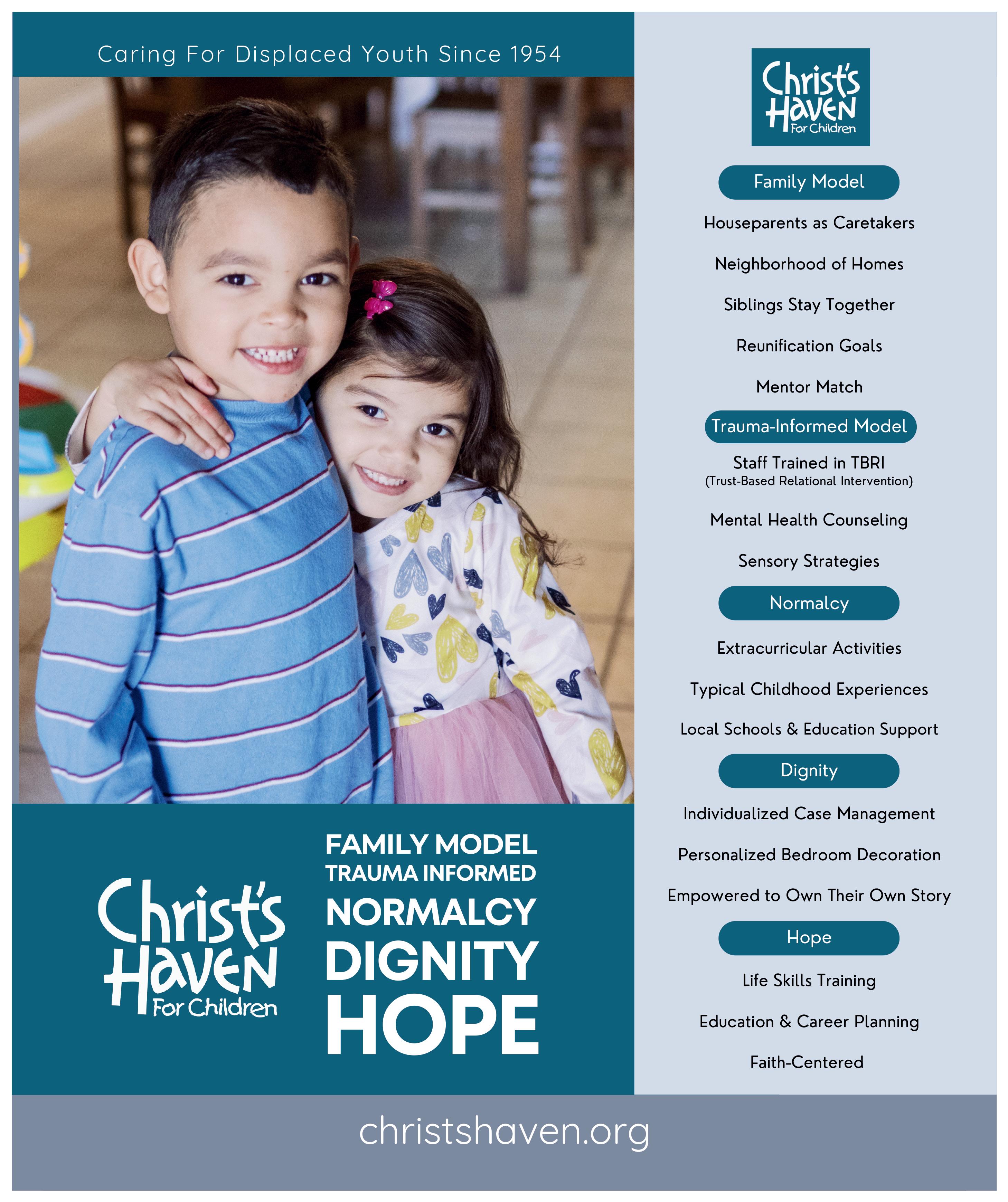

The YMCA of Metropolitan Fort Worth ymcafw.org
Wings of Hope wingsofhopeequitherapy.org
Development Corporation of Tarrant County devcorptc.net
Fort Worth Housing Solutions fwhs.org
Operation Relief Center orctexas.org
Samaritan House samaritanhouse.org
Tarrant County Homeless Coalition ahomewithhope.org
Trinity Habitat for Humanity habitat.org
The Net thenetfw.com
Unbound North Texas unboundnow.org/ntx
Airpower Foundation airpowerfoundation.org
American Warrior Association americanwarriorassociation.org
Association of the United States Army (AUSA) ausanorthtexas.org
Bike the Blue biketheblue.org
Chris Kyle Frog Foundation chriskylefrogfoundation.org
Cowtown Warriors cowtownwarriors.com
Fort Worth Police Foundation fwpolicefoundation.org
National Medal of Honor Museum mohmuseum.org/the-museum
S.T.E.P.S. With Horses stepswithhorses.org
The National Leadership Foundation nationalleadershipfoundation.org
Tunnel to Towers Foundation t2t.org
WPI Firefighters' Fund wpiff.org
Arlington Life Shelter arlingtonlifeshelter.org
Catholic Charities Fort Worth catholiccharitiesfortworth.org
Center for Transforming Lives transforminglives.org
Community Enrichment Center cechope.org
Community Food Bank food-bank.org
DRC Solutions drc-solutions.org
Family Pathfinders of Tarrant County pathfinderstc.org
Fort Worth HOPE Center fwhope.org
Grapevine Relief and Community Exchange gracegrapevine.org
MANNA Worldwide mannaworldwide.com
Northside Inter-Community Agency, Inc. nicaagency.org
Presbyterian Night Shelter journeyhome.org
South Central Alliance of Churches fwscac.org
Tarrant Area Food Bank tafb.org
The Fort Worth Foundation thefortworthfoundation.org
The Salvation Army of North Texas salvationarmyntx.org/north-texas
Union Gospel Mission of Tarrant County ugm-tc.org
Aging and Disability Resource Center of Tarrant County tarrantcountyadrc.org
Gold Tone Senior Citizen Show Choir goldtoneshowchoir.org
Meals on Wheels of Tarrant County mealsonwheels.org
Serving Our Seniors servingourseniorstexas.org
Sixty & Better sixtyandbetter.org
Colleyville Garden Club colleyvillegardenclub.org
Foodie Philanthropy foodiephilanthropy.org
Fort Worth Classic Guitar Society guitarsociety.org
Fort Worth Garden Club fortworthgardenclub.org
Fort Worth Report fortworthreport.org
Leadership Fort Worth leadershipfortworth.org
Lone Star Film Society lonestarfilmfestival.com/join-film-society
Moslah Shrine moslahshrine.org
National Cutting Horse Foundation nchafoundation.org
Real Estate Council of Greater Fort Worth recouncilgfw.com
SCORE fortworth.score.org
Texas & Southwestern Cattle Raisers Association tscra.org
Texas Angus Association texasangus.com
The Greatest Gift Catalog Ever tggce.org
Women's Policy Forum womenspolicyforum.org
Fort Worth Zoological Association fortworthzoo.org
Fossil Rim Wildlife Center fossilrim.org
International Rhino Foundation rhinos.org
Colleyville Woman's Club c-w-c.org
Girl Scouts of Texas Oklahoma Plains gs-top.org
Girls Inc. of Tarrant County girlsinctarrant.org
Junior League of Arlington jlarlington.org
Junior League of Fort Worth juniorleaguefw.org
Ladies’ Auxiliary of Arlington cinderellacharityball.com
Mansfield Women's Club mansfieldwomensclub.org
National Charity League – Fort Worth nationalcharityleague.org/chapter/fortworth
Southlake Women's Club southlakewomensclub.org
Texas Women’s Foundation txwf.org
The Woman's Club of Fort Worth thewomansclubfw.com
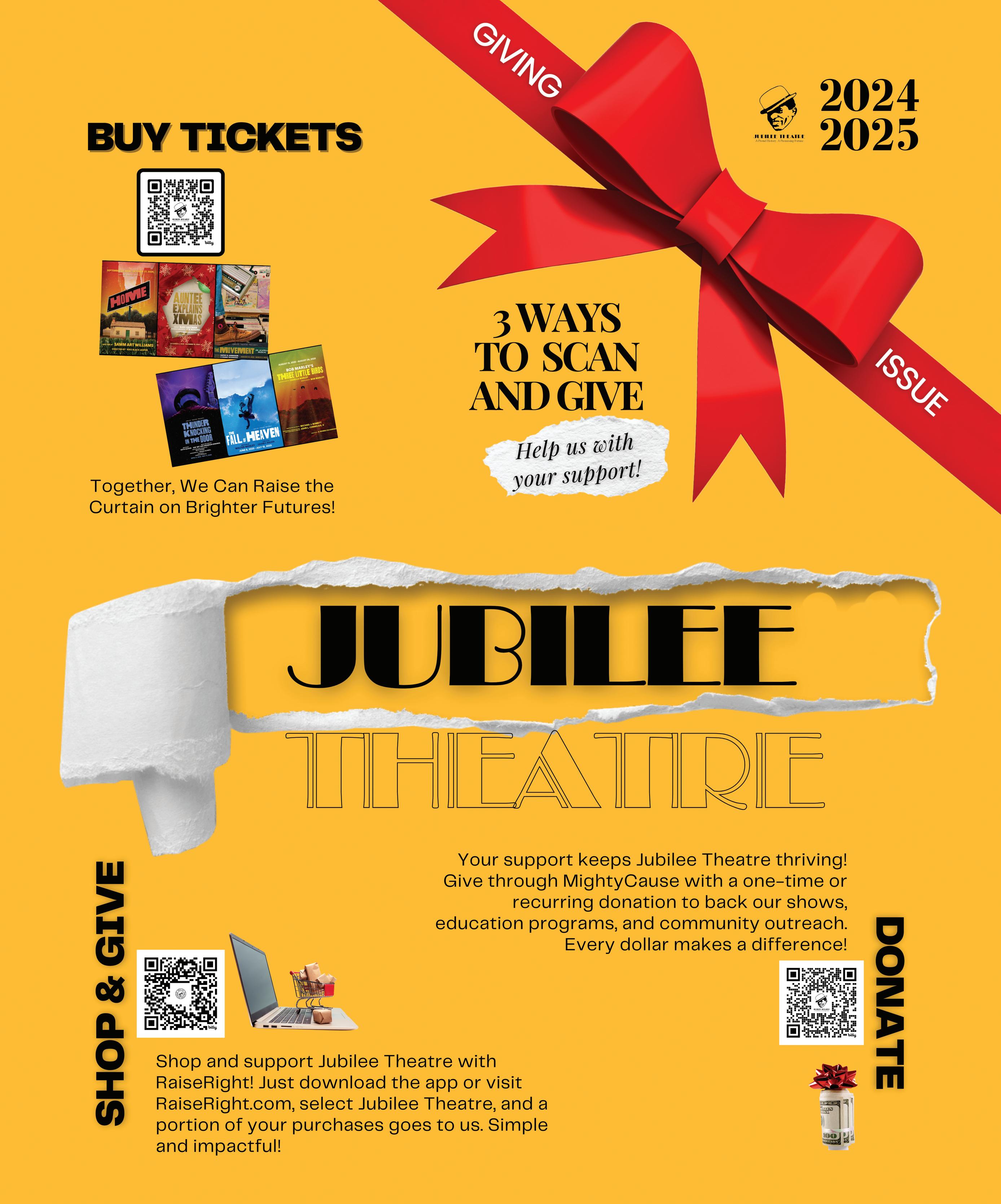



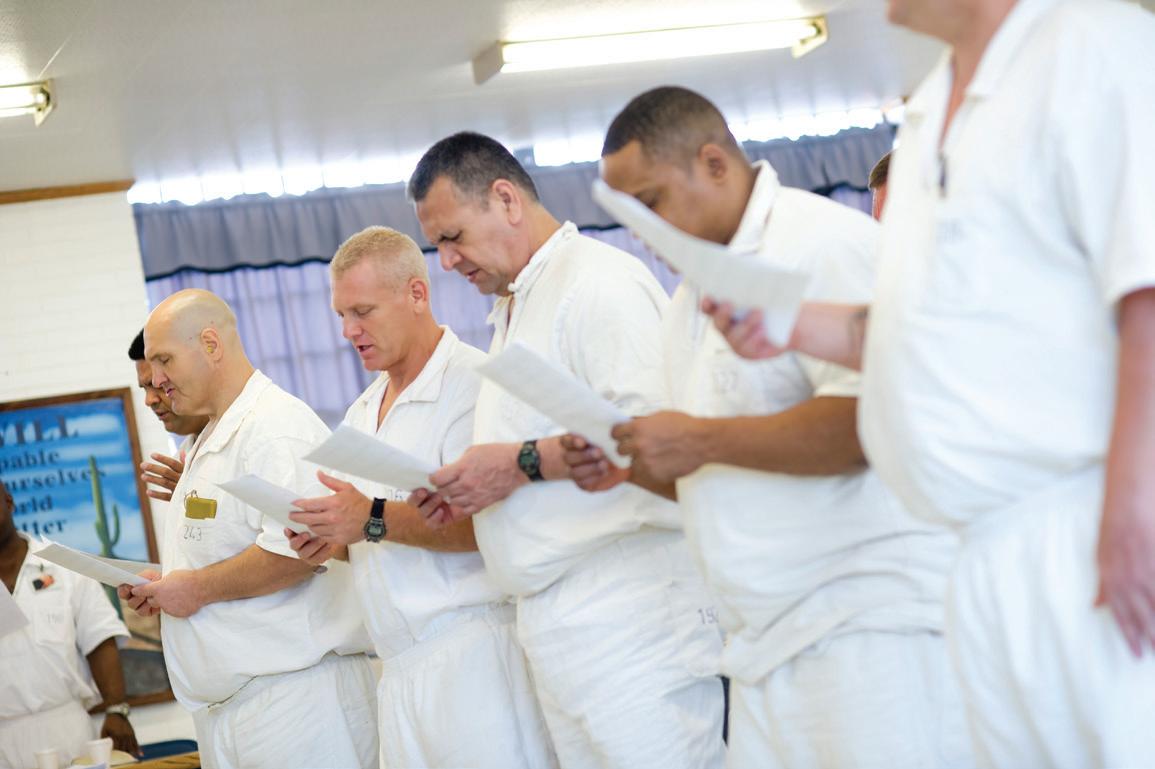

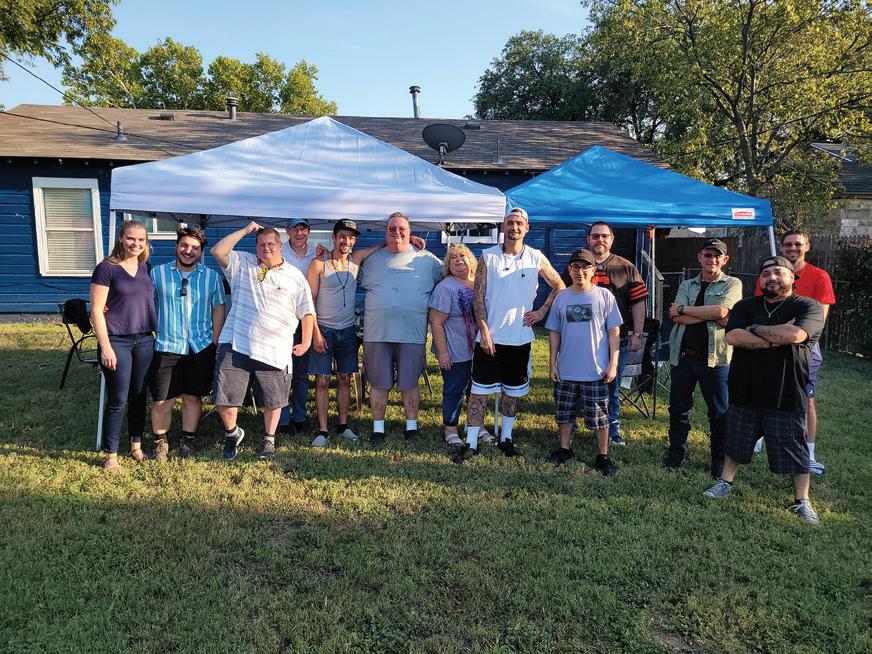
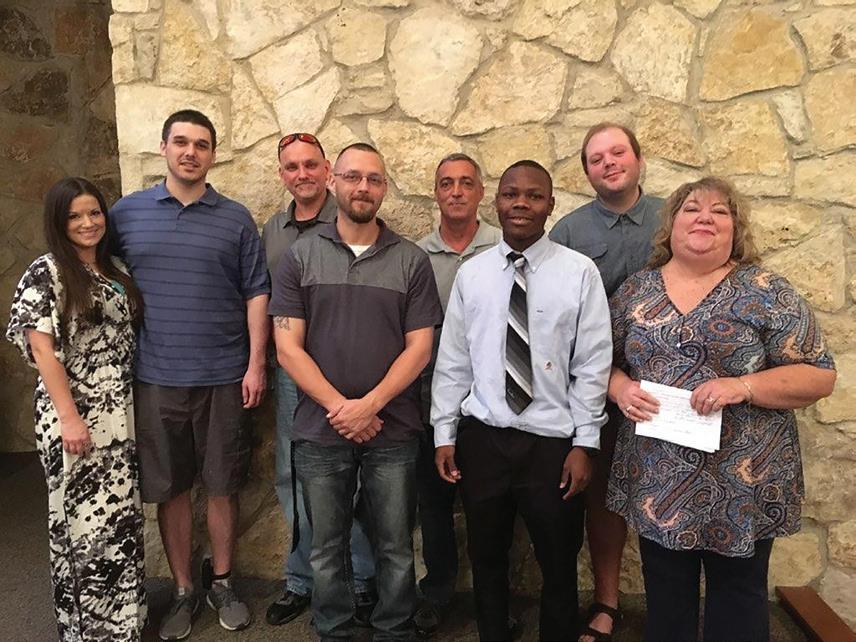
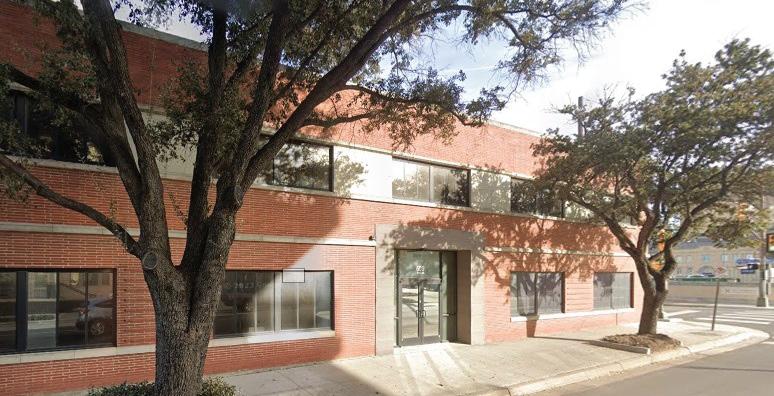




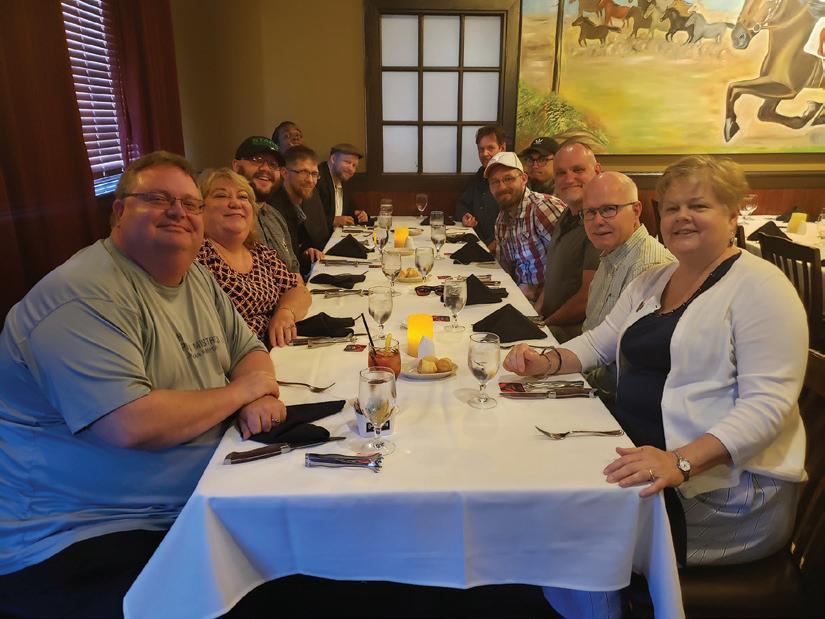
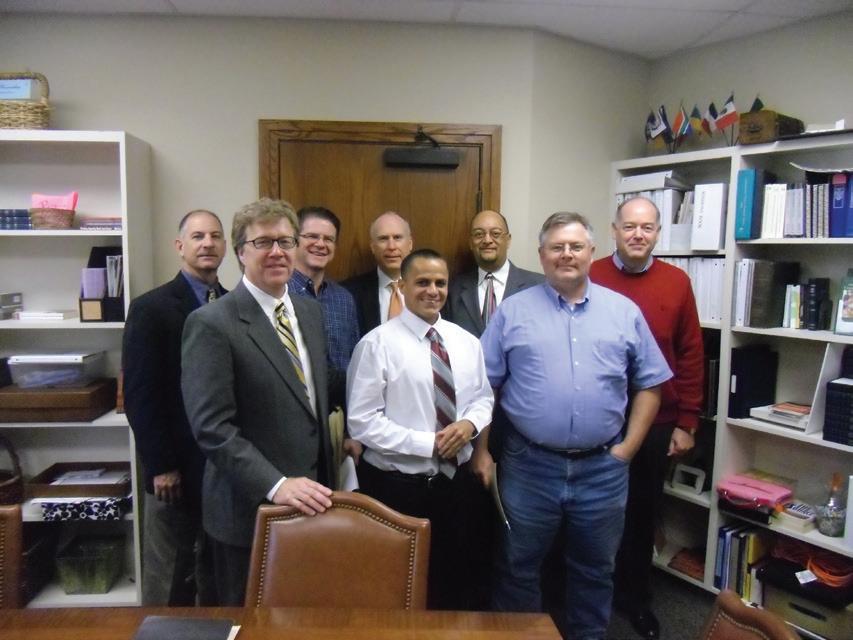


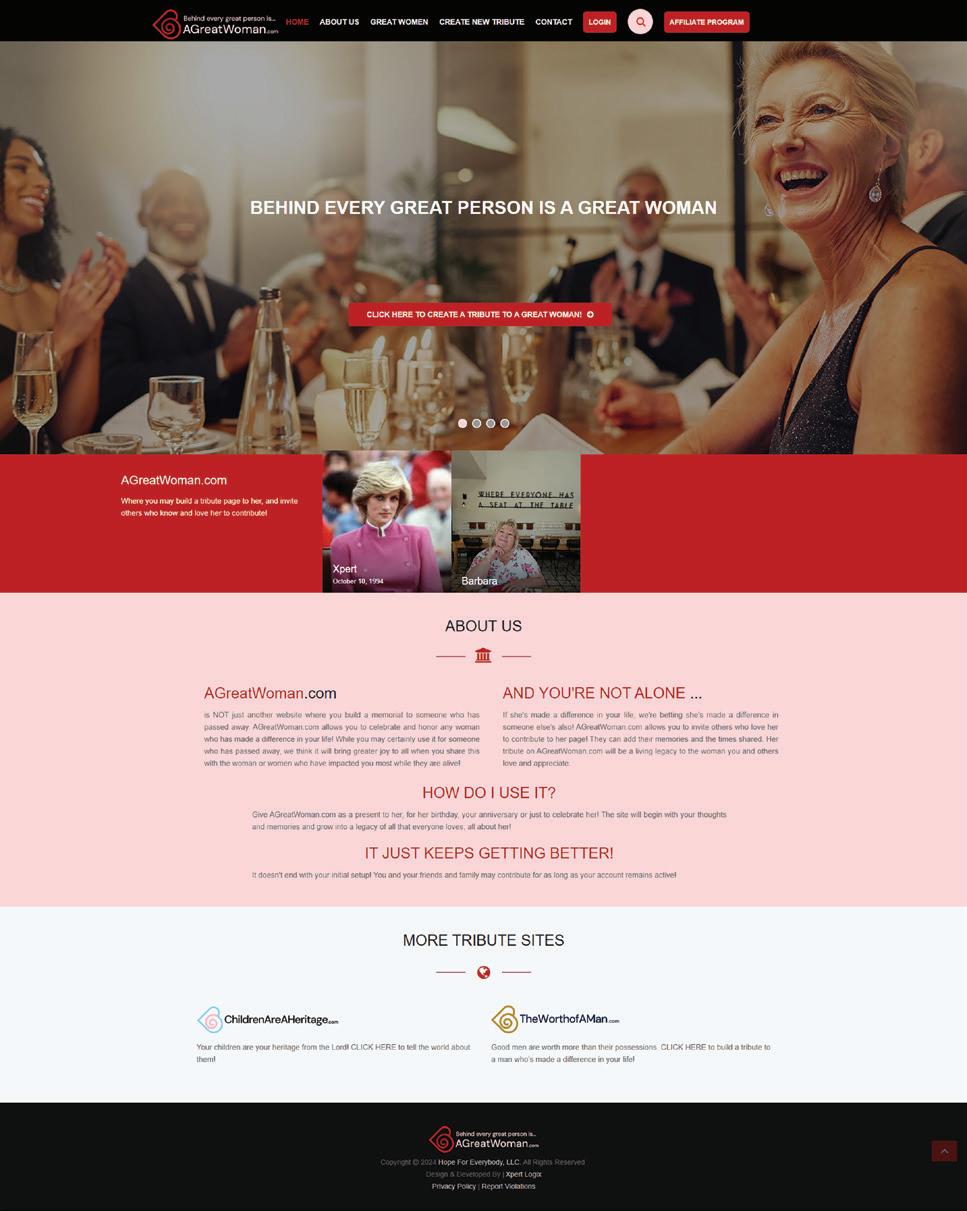
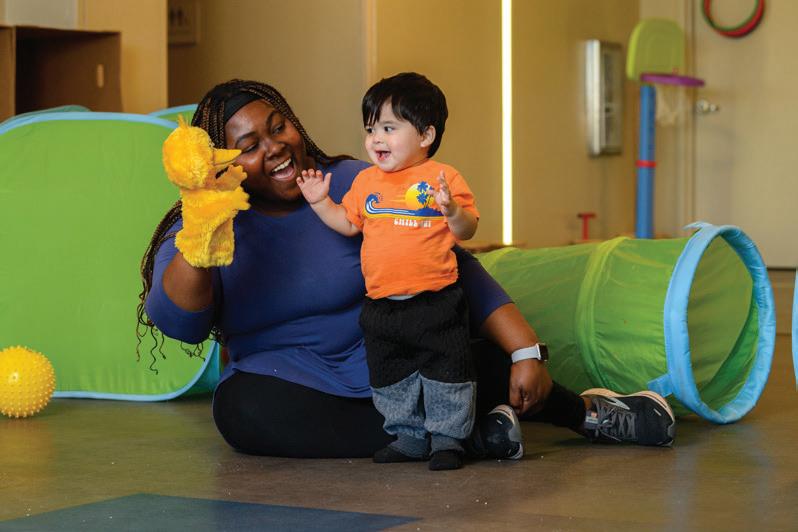

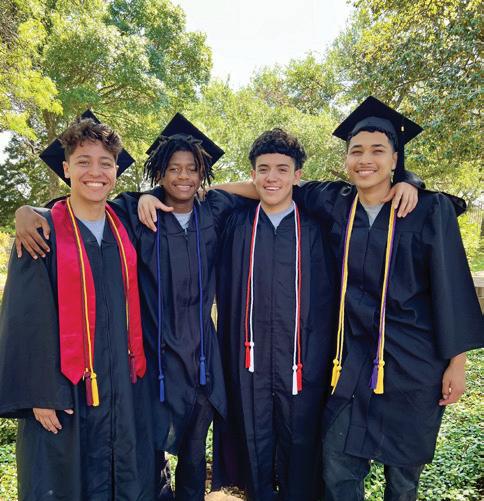
Statement of Ownership, Management, and Circulation
Statement of Ownership, Management, and Circulation (required by 39 U.S.C. 3685). Title of Publication: Fort Worth
Magazine Publication No. 1536-8939 Date of filing: 9/30/24
Frequency of Issue (Monthly) Number of issues published annually: 12 Annual subscription price is $21.95 Complete mailing address of Publication: 6777 Camp Bowie Blvd., Ste.130, Fort Worth, Texas 76116 Complete mailing address of Headquarters of general business office of publisher: Panther City Media Group, LP, 6777 Camp Bowie Blvd., Ste.130, Fort Worth, Texas 76116 Names and complete mailing address of Publisher, Editor, and Managing Editor, Publisher: Hal A. Brown, 6777 Camp Bowie Blvd., Ste.130, Fort Worth, Texas 76116, Editor: Hal A. Brown, 6777 Camp Bowie Blvd., Ste.130, Fort Worth, Texas 76116, Managing Editor: Brian Kendall, 6777 Camp Bowie Blvd., Ste.130, Fort Worth, Texas 76116
Owner: Panther City Media Group, LP, 6777 Camp Bowie Blvd., Ste.130, Fort Worth, Texas 76116. Known bondholders, mortgages and other security holders owning or holding 1 percent or more of total amounts of bonds, mortgages or other securities: None. Tax status: has not changed during preceding 12 months Publication Title: Fort Worth Magazine Issue date for circulation: 10/1/2024 Average no. copies each issue during preceding 12 months. Total no. copies printed (Net Press Run) 12,798 Legitimate Paid and/or Requested Distribution(By mail and outside the mail): 7,222 Mailed Outside-County Paid/Requested Subscriptions Stated on PS Form 3541: 1,241 Mailed In-County Paid/Requested Subscriptions Stated on PS Form 3541: 3,442 Sales through Dealers and Carriers, Street Vendors, Counter Sales and Other Paid or Requested Distribution outside USPS: 2,540 Requested Copies by Other Classes of Mail Through the USPS: 0. Total Paid Distribution (Sum of 15b, (1), (2), (3) and (4): 7,222 Total Nonrequested Distribution: Outside County Copies stated on PS Form 3541: 382 In-County Nonrequested Copies included on PS Form 3541: 1,707 Nonrequested Copies Distributed through the USPS by Other Classes of Mail: 0 Nonrequested Copies Distributed Outside the Mail: 3,302 Total Nonrequested Distribution (Sum of 15d, (1), (2), (3) and (4): 5,391 Total Distribution (sum of 15c and 15e): 12,613 Copies not Distributed: 1,161 Total (sum of 15f and 15g): 13,774 Percent Paid and/or Requested Circulation (15c divided by 15f times 100): 57.26% No. Copies of Single Issue Published Nearest To Filing Date: printed (Net Press Run) 15,819 Legitimate Paid and/or Requested Distribution (By mail and outside the mail): 1,303 Mailed Outside-County Paid/Requested Subscriptions Stated on PS Form 3541: 1,303 Mailed In-County Paid/Requested Subscriptions Stated on PS Form 3541: 3,615 Sales through Dealers and Carriers, Street Vendors, Counter Sales and Other Paid or Requested Distribution outside USPS: 2,595 Requested Copies by Other Classes of Mail Through the USPS: 0 Total Paid Distribution (Sum of 15b, (1), (2), (3) and (4): 7,513 Total Nonrequested Distribution: Outside County Copies stated on PS Form 3541: 393 In-County Nonrequested Copies included on PS Form 3541: 1,756 Nonrequested Copies Distributed through the USPS by Other Classes of Mail: 0 Nonrequested Copies Distributed Outside the Mail: 3,000 Total Nonrequested Distribution (Sum of 15d, (1), (2), (3) and (4): 5,149 Total Distribution (sum of 15c and 15e): 12,662 Copies not Distributed: 1,143 Total (sum of 15f and g): 13,805 Percent Paid and/or Requested Circulation (15c divided by 15f times 100): 59.34%. Electronic Copy Circulation. Average No. Copies Each Issue During Preceding 12 Months. Requested and Paid Electronic Copies: 462 Total Requested and Paid Print Copies (Line 15c) + Requested/Paid Electronic Copies (Line 16a): 7.684 Total Requested Copy Distribution (Line 15f) + Requested/Paid Electronic Copies (Line 16a): 13,075
Percent Paid and/or Requested Circulation (Both Print & Electronic Copies)(16b divided by 16c x 100): 58.8%. No. Copies of Single Issue Published Nearest to Filing Date. Requested and Paid Electronic Copies: 475 Total Requested and Paid Print Copies (Line 15c) + Requested/Paid Electronic Copies (Line 16a): 7,988 Total Requested Copy Distribution (Line 15f) + Requested/Paid Electronic Copies (Line 16a): 13,137 Percent Paid and/or Requested Circulation (Both Print & Electronic Copies)(16b divided by 16c x 100): 60.8%.
Publication of Statement of Ownership for a Requester Publication is required and will be printed in the November 2024 issue of this publication. Signature and Title of Editor, Publisher, Business Manager, or Owner: Hal A. Brown Date: 9/30/2024 I certify that all information furnished in this form is true and complete. I understand that anyone who furnishes false or misleading information on this form or who omits material or information requested on the form may be subject to criminal sanctions (including fines and imprisonment) and/ or civil sanctions (including civil penalties.)

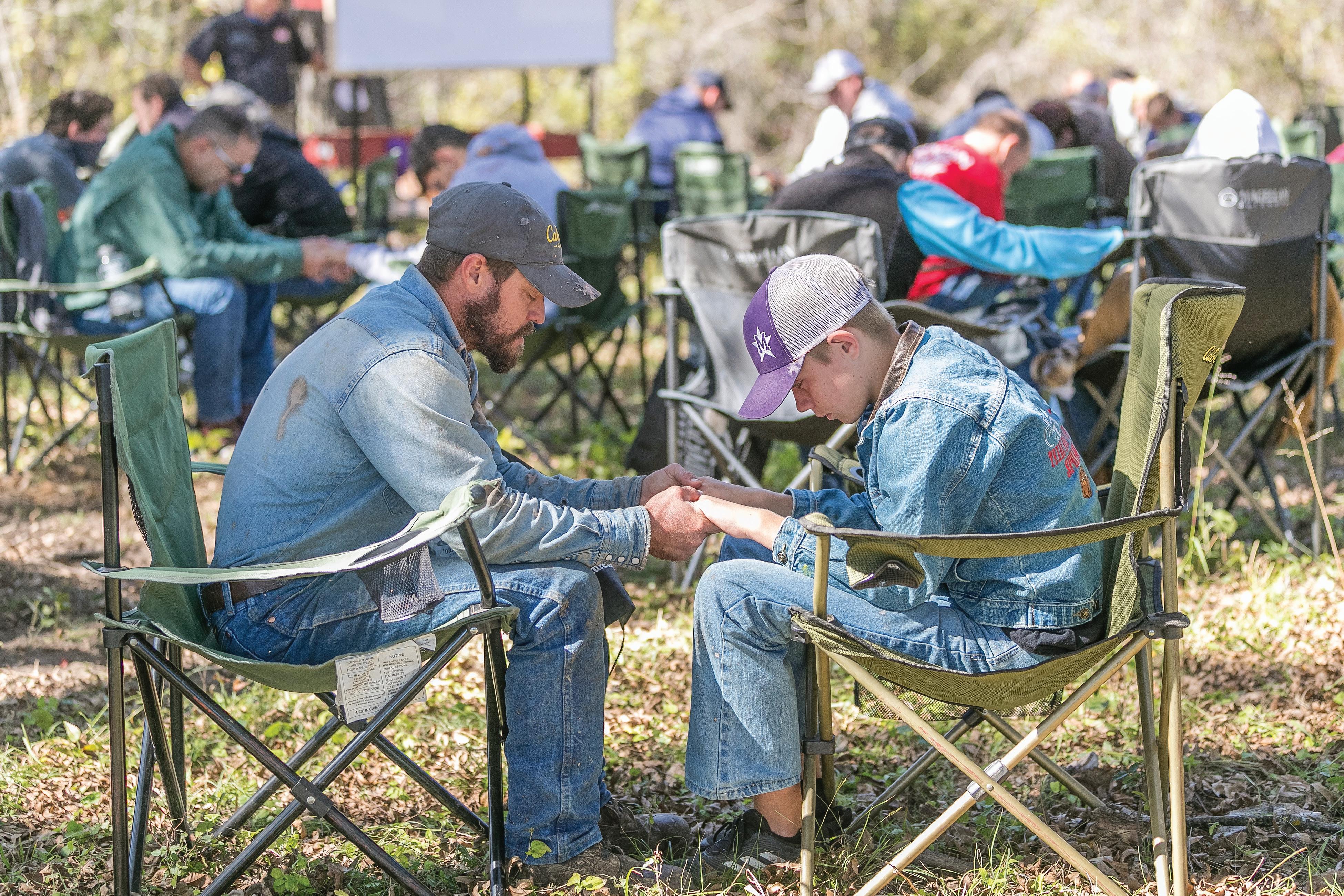






Scan the QR Code to Learn More!
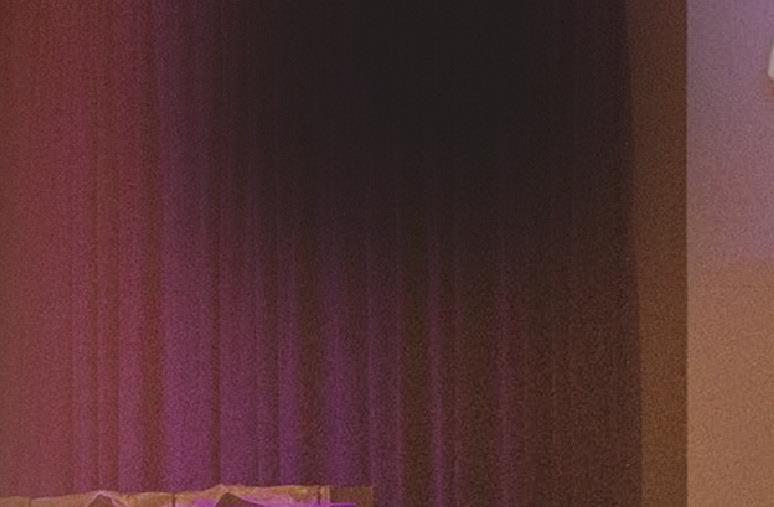
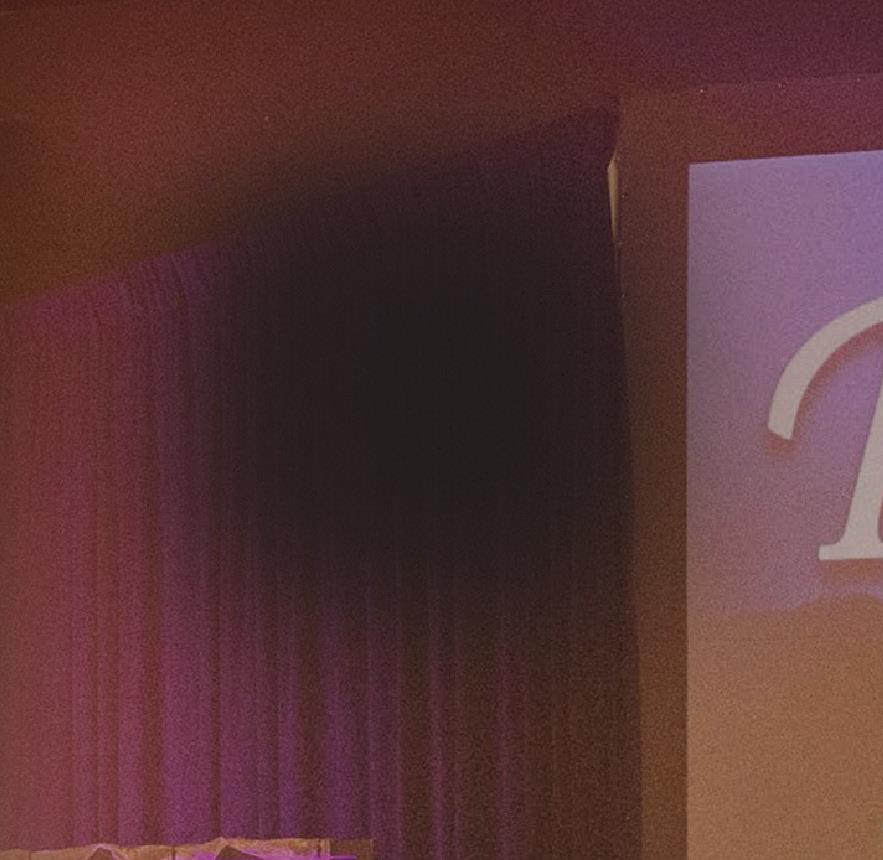


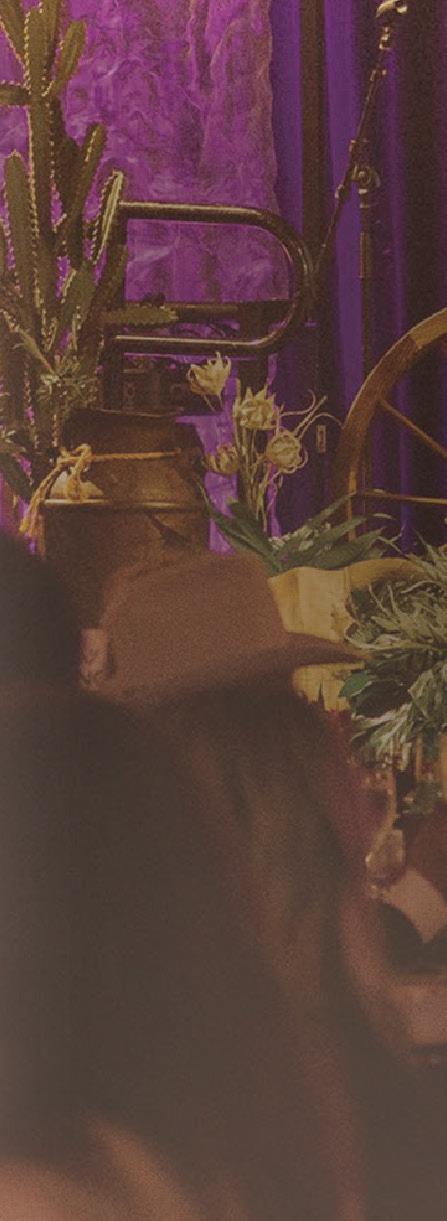
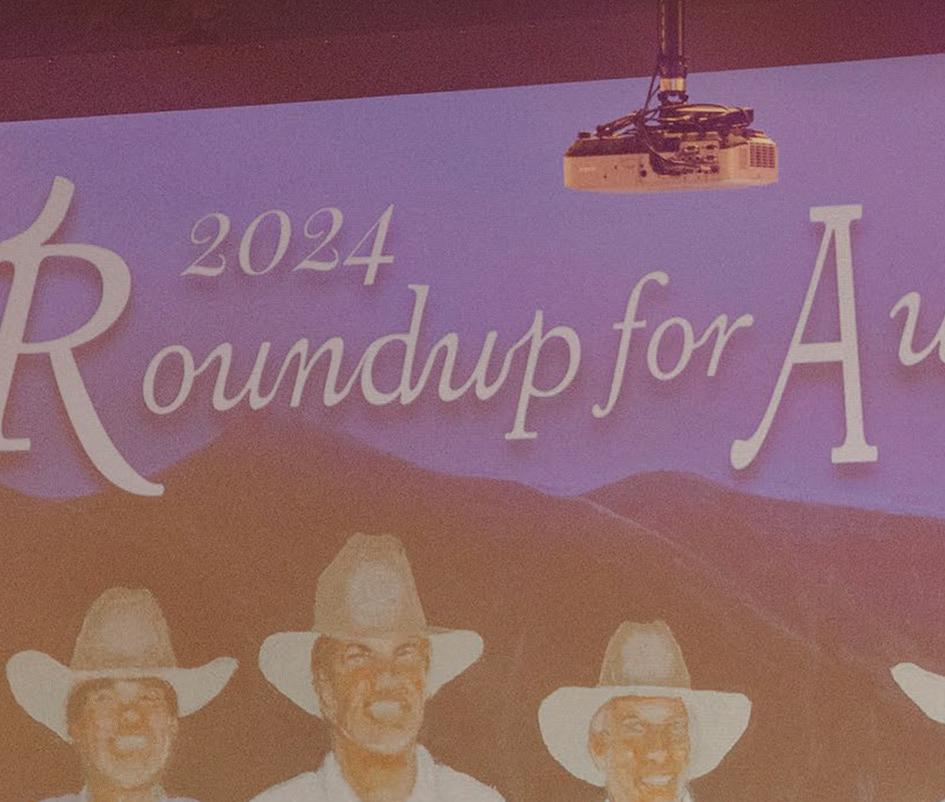


















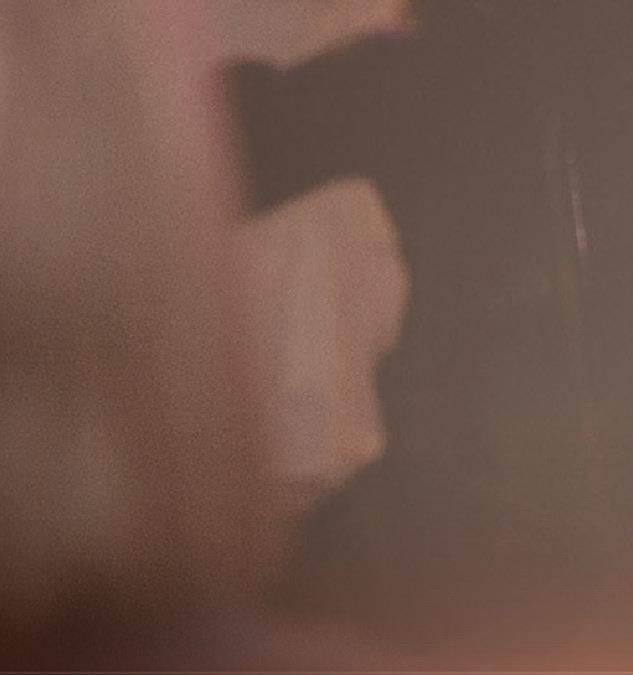




























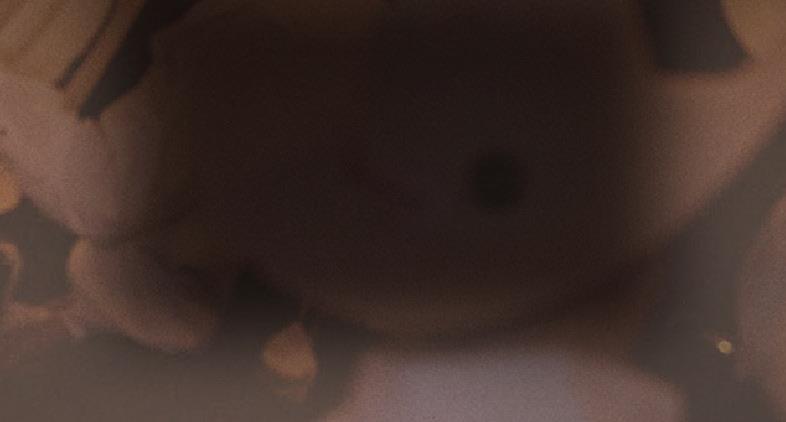





















2025 PRESENTING PARTNER

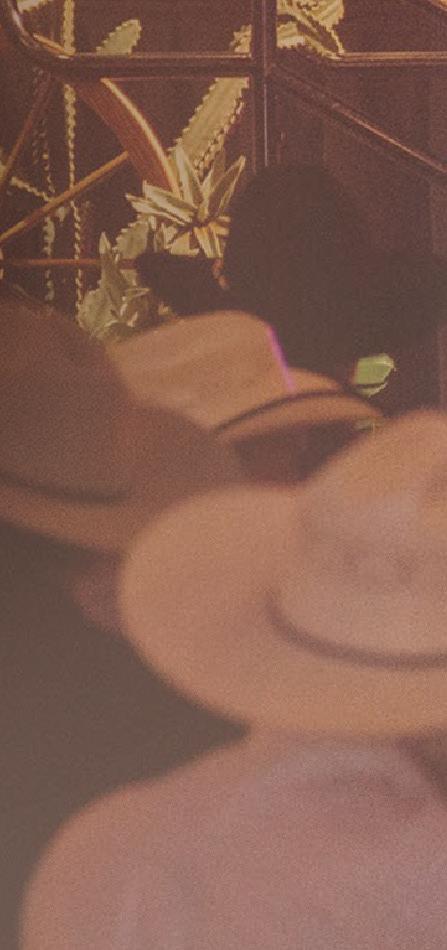


















































































by Malcolm Mayhew
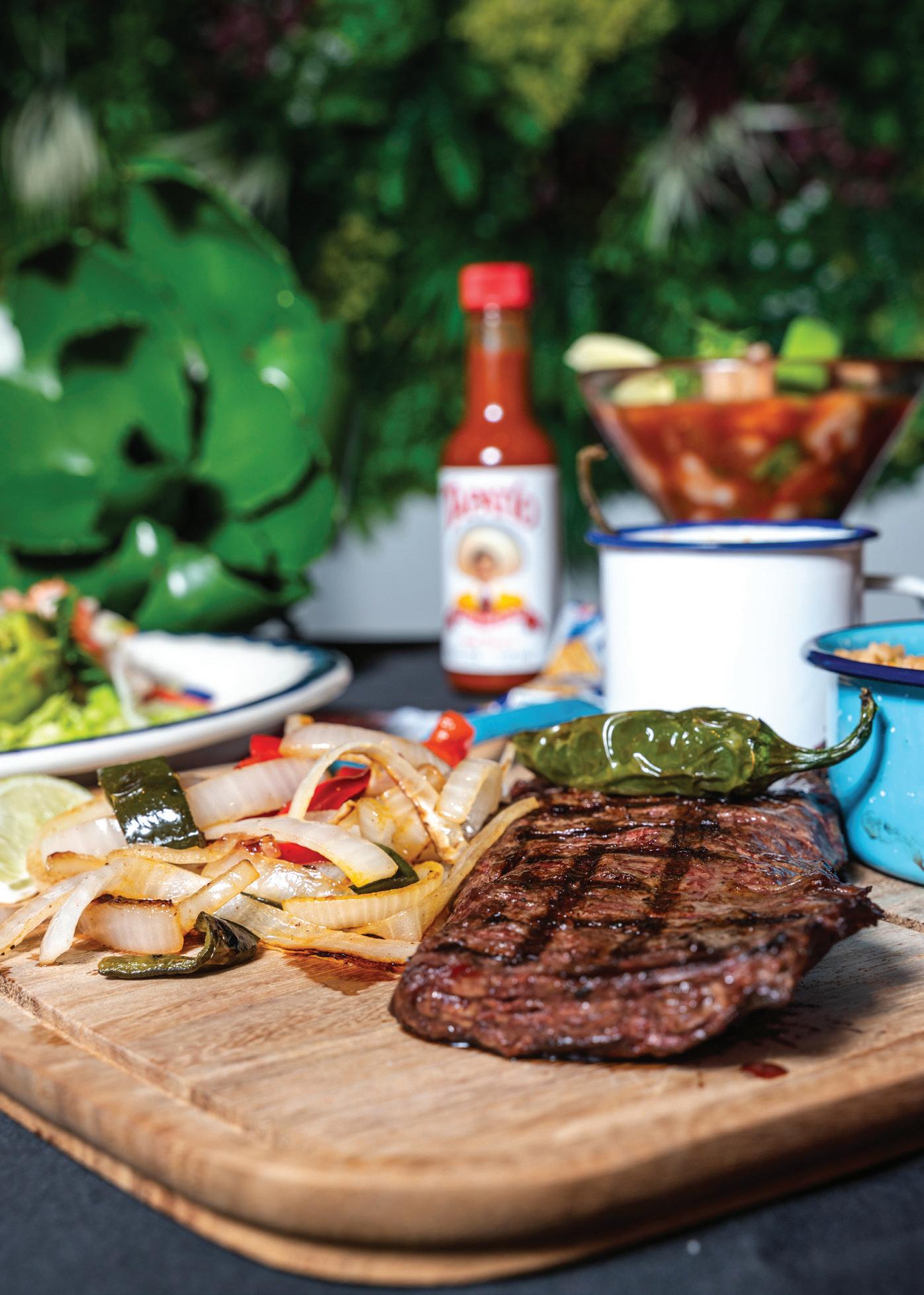
La Cabrona, a terrific new Mexican restaurant opened by the owners of Terra Mediterranean, is helping make West 7th hungry again, one taco at a time.
Since I’m not 25, a heavy drinker, or itching for a fight, I haven’t found much reason to visit the West 7th area over the past few years, save for some
daytime excursions to Hatsuyuki Handroll Bar, the amazing sushi restaurant located on the outskirts of West 7th.
A guy who loves and lives to eat, I
used to be an area regular, back when Fireside Pies, Tillman’s Roadhouse, Brownstone, the Fort Worth Food Hall, Terra Mediterranean, Rodeo Goat, and other restaurants were West 7th’s pride and joy. And of course, burger and beer stalwart Fred’s was still there, a magnet for every walk of Fort Worth life. Kind of hard to believe, but there was a time when West 7th was very much one of the city’s budding culinary destinations.
As you and I witnessed, though, the area became better known for its surplus of bars — and accompanying idiotic behavior — and no matter how many times the name has been changed (it’s now called Artisan Circle and is owned by Younger Partners Investments, a Dallas-based real estate firm), it hasn’t been able to shake its bad rep.
Adam Chanaa is bent on changing that narrative.
“We want to bring restaurants back to the area,” Chanaa tells me on a picture-perfect Sunday afternoon at his picture-perfect restaurant, La Cabrona, a colorful, upscale Mexican eatery he and his family opened a few weeks ago in the old Tillman’s spot. “Food is why people came to this area in the first place, and we want it to be the reason people come back.”
Chanaa is certainly on the right track: La Cabrona is a real beauty, outfitted in vibrant, festive decor meant to conjure big smiles and good vibes. Dig the beautiful murals inspired by Day of the Dead imagery; the bustling patio; the U-shaped bar and, nearby, a cool, vintage Chesterfield couch upon which you can sip a great margarita and lounge.
Chanaa’s wife, chef Rosario Ortega, a native of Monterrey, Mexico, creates colorful plates of food that match the atmosphere. Tacos and enchiladas are artfully presented, and taste as appetizing as they look. There are dishes for casual Tex-Mex lovers, including the popular quesa-birria tacos, and a few that dig a little deeper, like huachinango, a whole red snapper, marinated and fried, topped with minced garlic,
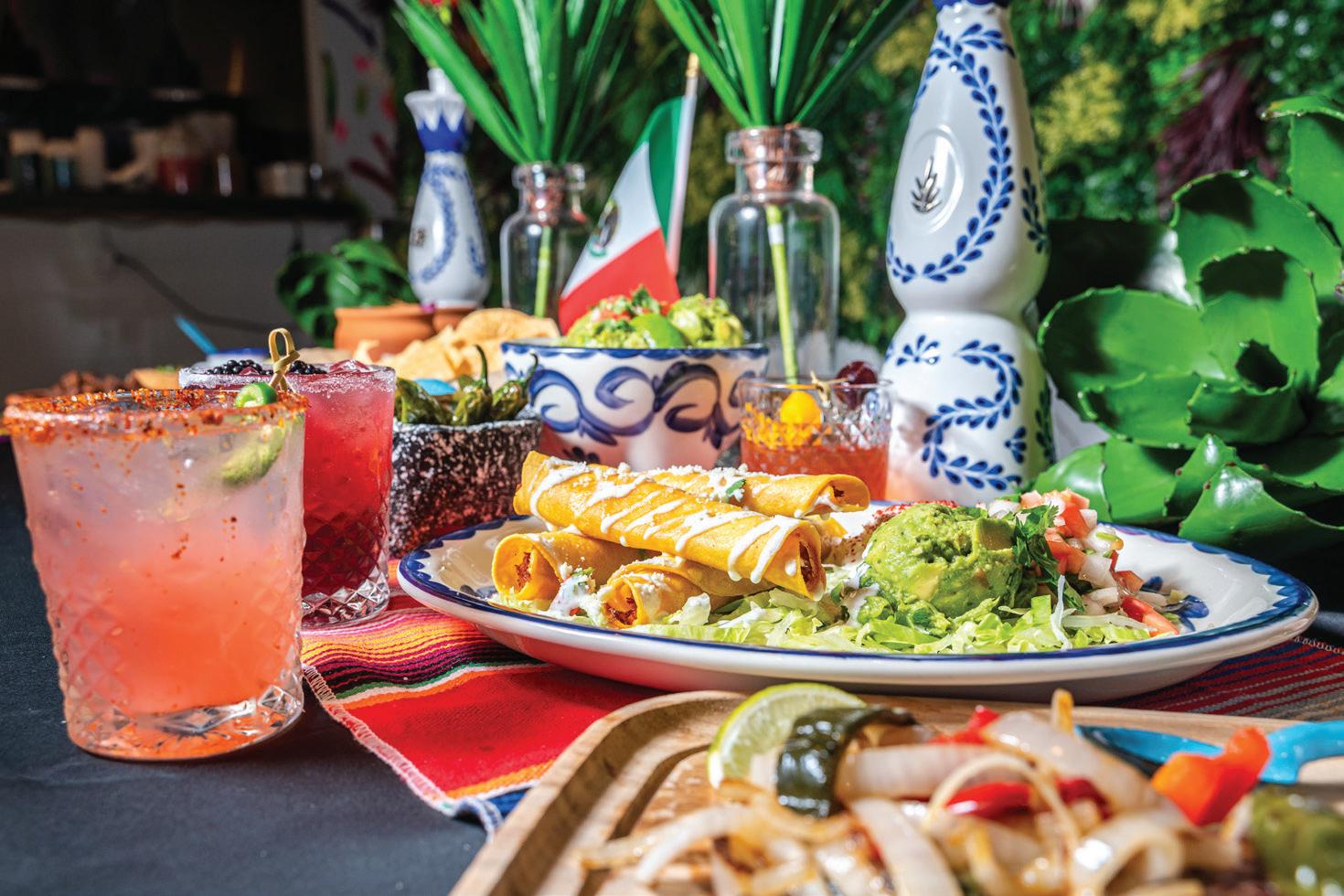
and aguachile, a light, bright mashup of shrimp, lime juice, red onions, and avocado that’s similar to a ceviche.
Small touches go a long way here. Housemade chips, for instance, come with not one but three dips: two salsas, one mild, one fiery, and a refried bean dip filled with spicy pork. Freshly made corn tortillas are infused with blue masa harina, giving them a slightly sweet flavor, not to mention, kind of a cool look. Housemade jamaica agua fresca, made from dried hibiscus flowers, comes in a drinking glass that resembles a flower pot.
“There are a lot of Mexican restaurants in Fort Worth, a lot of really good Mexican restaurants,” Chanaa says. “We wanted to do some things that made us different, little things that people will remember.”
That the food is of such good quality shouldn’t come as any surprise. After all, the Chanaa family also own the fondly remembered — and soon to be reborn — Terra Mediterranean Grill.
“My wife always wanted to open a Mexican restaurant to pay tribute to her family and their recipes, in the same way we do with Terra,” Chanaa says.
By the time you read this, or maybe shortly thereafter, Terra should be open in its new home, right across
the street from La Cabrona, between Mash’d and Social House, and just down the block from where it reigned over West 7th’s restaurant scene for nearly a decade.
The family closed the restaurant in 2019 after they’d grown disenchanted with how the area was changing, but they vowed to return to Fort Worth. Not that they really left. Over the past few years, the family focused on its catering and delivery business — the Chanaas were among a circle of local restaurateurs who sold family meals during the pandemic — along with their two concepts in the Dallas area, Ali Baba Mediterranean in Richardson and a Plano location of Terra Med.
Adam’s daughter, Leena, who is COO of the family’s restaurants, says Terra Med Fort Worth 2.0 should be open in November. “It’ll be bigger and better than the original,” she says. “The first location had a small dining area. This one will be huge. And, yes, the daytime buffet will be back, seven days a week.”
La Cabrona and Terra Med play a vital role in Younger Partner’s plans to revitalize the area. In August 2022, the real estate firm purchased Crockett Row — then the name of the West 7th area — with the intent to beef up the area’s restaurant and retail business. Luring the Chanaa family back to West

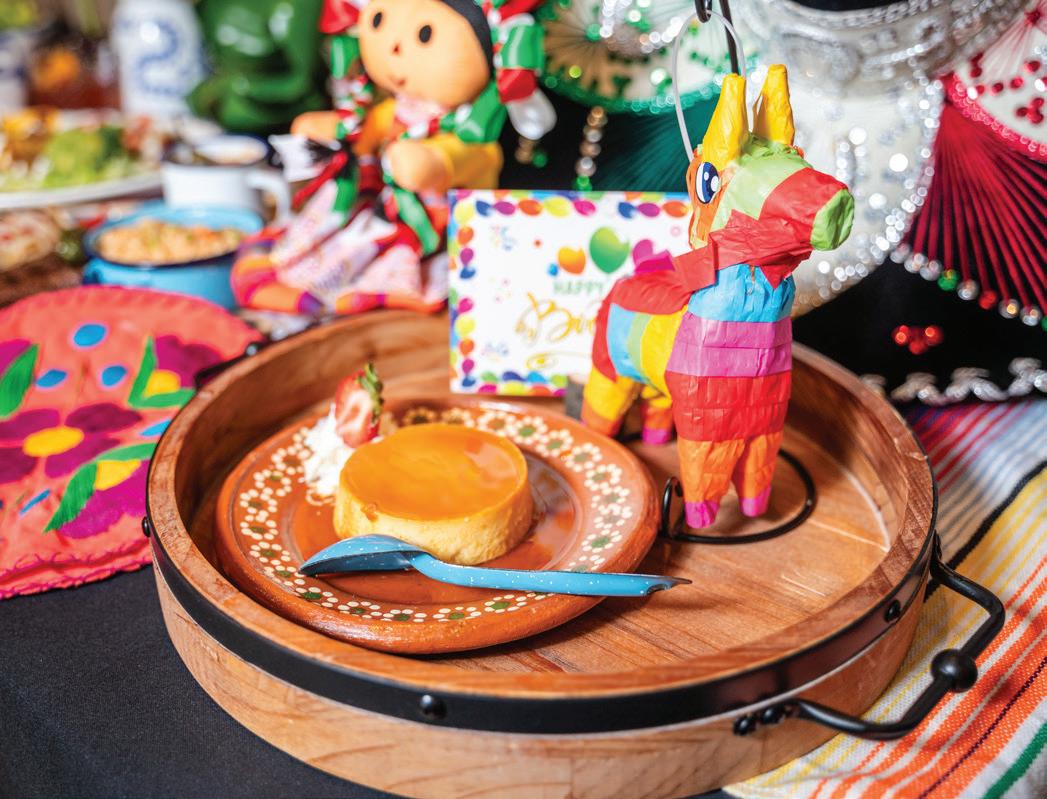
7th is nothing short of a major coup.
It should be noted the Chanaas’ restaurants aren’t the only new restaurants in the area. Earlier this year, a terrific new Spanish/tapas-inspired spot, Si Tapas, took over the space once occupied by Fireside Pies.
“We feel like it’s a good time to come back,” Adam says. “Things are changing here, and we want to be a part of those changes.”
LaCabrona,2973CrockettSt.,lacabrona.com
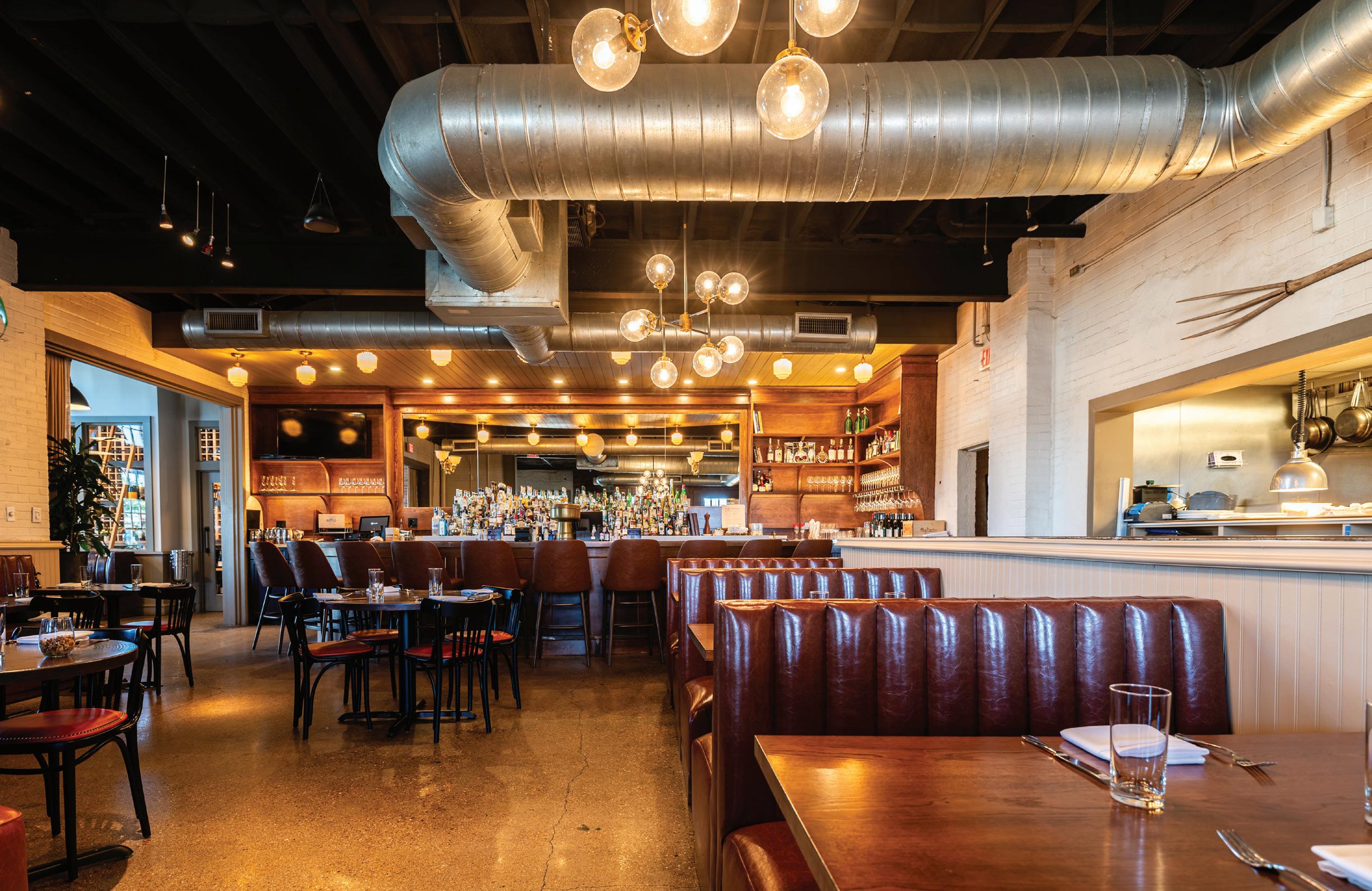
by Malcolm Mayhew
Marcus Paslay’s Clay Pigeon restaurant celebrates a milestone in the local dining scene with a fresh new look.
Finally, you can sit in a booth at Clay Pigeon.
For the past decade, that’s been one of the top requests Marcus Paslay has fielded from diners who frequent his flagship restaurant, which opened nearly 11 years ago, the first restaurant from a then-unknown chef who would, over the years, become one of the most recognizable names in North Texas’ dining scene.
This long-awaited change is just one part of a recent renovation that has given the popular restaurant a fresh new look. In addition to rolling out booth and banquette seating options, the restaurant’s bar area has been given a nice makeover, and new light fixtures have brightened the dining room, giving it an open, airy feel.
“In a way, it feels like a new restaurant to me,” Paslay says as he shows me around CP’s dining area, beaming with the enthusiasm of a proud papa. “When we hit the 10-year mark last year, we decided we needed to bring a new energy to the restaurant.
Ten years — it was time to freshen things up a bit.”
The Arlington native’s first restaurant opened in December 2023 in the space once occupied by Lou Lambert’s steakhouse, Lambert’s Steak, Seafood & Whiskey, and, before that, Pedro’s Trailer Park, an early venture by Paul Willis, founder of Fuzzy’s Tacos.
By adopting a farm-to-table, scratchmade philosophy in which even the ice cream for desserts is prepared in-house, Paslay made the space his own. He found his footing with local foodies right off the bat, then the rest of the city followed, drawn to his small menu of steaks, seafood, and vegetables, and the restaurant’s intimate yet lively atmosphere.
With the exception of his menu, which changes with the season, there

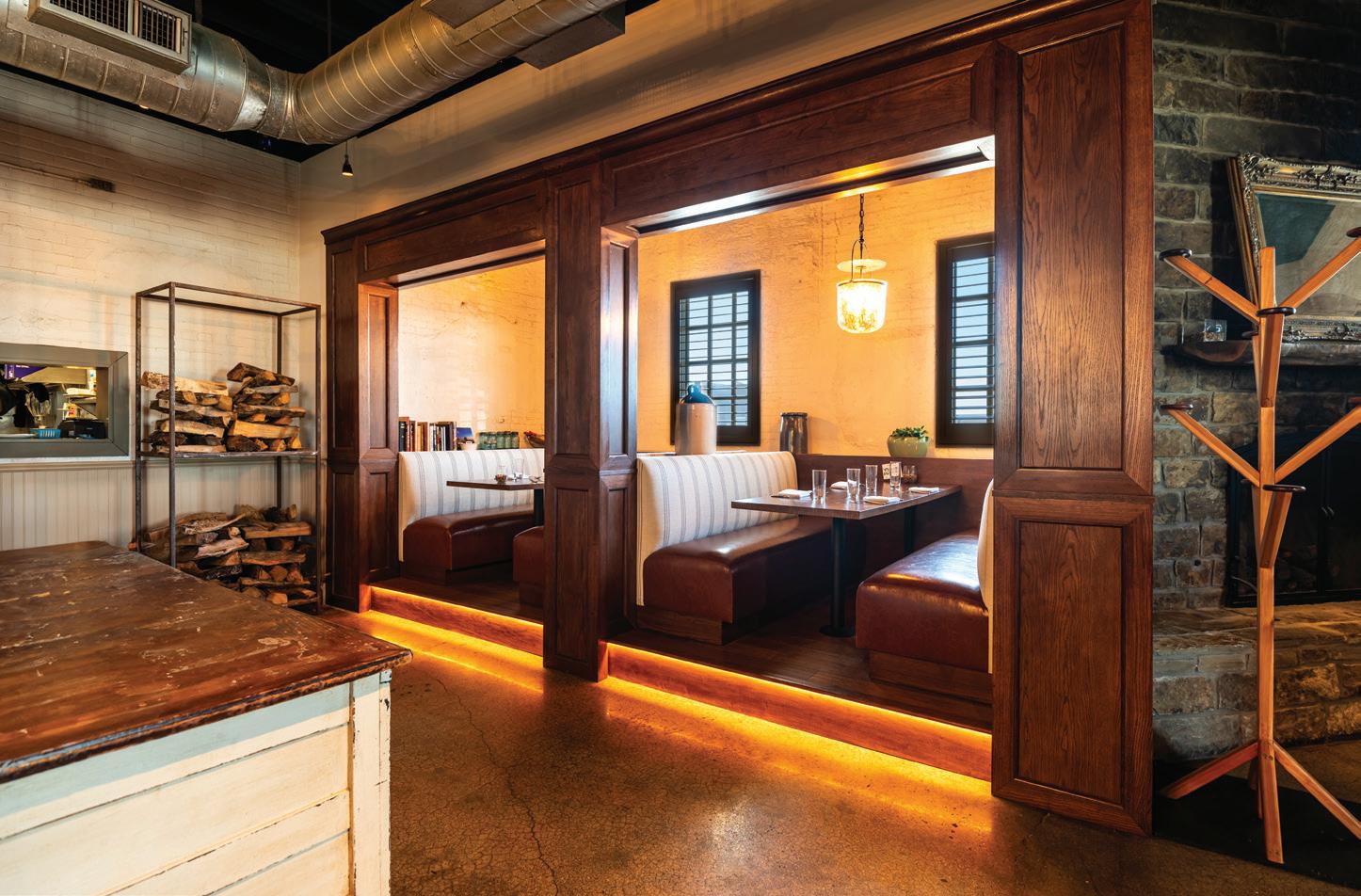
haven’t been any major revisions at Clay Pigeon, and diners haven’t seemed to have minded. What, in other words, is there to fix?
But 10 years, Paslay says, is a long time for a restaurant to go without a nip and tuck here or there. So last year, when CP turned 10, he decided to start revamping the room, little by little. Paslay loved working with Foxcroft Studio, the Dallas-based design firm that brought to life his latest restaurant, the seafood-driven Walloon’s, so he turned to the agency again for the Pigeon redux, which included the addition of nearly a dozen leather booths and banquettes.
“Booth seating has been something people have been asking for since we opened,” he says. “The other big wow factor is the bar. There’s new paneling on the front of the bar, new shelving around it, and the pendant lights above it.”
A graduate of the renowned Culinary Institute of America (CIA), Paslay honed his craft in kitchens across the country, from Alaska to Napa Valley. He eventually returned to his North Texas roots, cooking at Nick Badovinus’ acclaimed Neighborhood Services in Dallas before going solo to open Clay Pigeon.
Since then, Paslay has become one of the most well-known chefs and restaurateurs in North Texas. Under the
banner of his From Scratch Hospitality group, he and his team — executive chef Scott Lewis and director of operations Kellen Hamrah — have opened three additional restaurants, Piattello Italian Kitchen, Provender Hall, and Walloon’s (Reata expat Russell Kirkpatrick recently joined From Scratch, also as director of operations).
The team also recently purchased Mercado Juarez, a beloved Tex-Mex institute with locations in Arlington and North Fort Worth.
“I have a lot of great childhood memories of eating there,” he says. “So that’s a place that has always meant a lot to me.”
Mercado Juarez loyalists probably haven’t noticed many changes, and they won’t, Paslay says.
“All we’ve done there really is consolidate the menu a bit,” he says. “It’s classic Tex-Mex — the tortillas are made there, the salsa’s really good. There’s nothing to change, nothing to fix. It was really good before we came along. What we are looking at doing is opening additional locations, but that’s down the road.”
Paslay did institute one major change: He jarred the restaurant’s irresistible salsa.
“You can buy it there at the restaurants,” he says. “I don’t know about grocery stores yet, but it’s a thought.”
Paslay has also spent the past few years working with his wife, Emily, on the Paslay Foundation, which they founded around the turn of the decade to help provide diagnosis and treatment for children with learning challenges. At a young age, Marcus was diagnosed with dyslexia.
Had it not been for his dyslexia diagnosis and the specialized support he received at Hill School Fort Worth, chef Paslay’s life might have unfolded quite differently. The birth of the couple’s foundation grew out of his concern that many children with dyslexia don’t have access to the resources that he did.
To date, the foundation has raised approximately $400,000, Emily says.
As Marcus moves into his second decade as a restaurateur, he’s become the face of success to the next generation of chefs and restaurant owners who aren’t far behind, Paslay says.
“It’s just getting after it every day,” he says. “I think there’s a lot of stuff in this business that you can’t know until you do it, but hard work will compensate for that lack of knowledge. But eventually you’ll learn what you need to learn. Tenacity is probably the one key thing anyone needs to make it in this business.”
ClayPigeon,2731WhiteSettlementRoad, claypigeonfd.com

225° BBQ’s new brick-and-mortar may be hard to find, but the hunt is worth it.
by Malcolm Mayhew Photo by Darrell Byers
For years, finding good barbecue in Texas often involved embarking on some sort of adventure. On a certain day at a certain time, you’d need to go down some bumpy backroad, then hang a left at the abandoned school, take the dirt path for a half a mile, then hang a right, and look for the last house on the left. That’s where some dude may be cooking barbecue — if he hasn’t already run out.
Ah, the good ol’ days of being a barbecue chaser.
That’s not really the case these days. Barbecue’s popularity is now at the point where the thrill of the hunt is practically over. Why prowl around Texas for an obscure place when there’s another place that’s just as good in plain sight?
Newly opened in Arlington, 225° BBQ harks back to a time when a hunt and chase were involved in finding good Texas ‘cue. Longtime fans of Rene and Joyce Ramirez’s food are used to going on quests for their ‘cue: The couple started out about six years ago with a trailer that roamed through Arlington and Dallas; followers tracked the trailer on social media.
Now Rene and Joyce have settled into an off-the-beaten path building in Arlington that screams IYKYK. As of press time, there is no big, hard-tomiss sign, just a sheet of paper — scribbled with the words “225 BBQ” — that employees put on the window, hoping the wind doesn’t blow it away.
“We’re getting there,” Rene says. “We’ll have a sign up soon.” Joyce recently gave birth, so the couple has been a bit preoccupied. Dad is doing double duty, helping his wife while getting their restaurant off the ground.
Longtime 225° fans should have no problem finding the building; it’s where 225° was temporarily located last year. At that point, the couple was sharing a space with a sports bar. Because of logistical reasons, the relationship didn’t last, and Rene and Joyce went back to working out of their trailer.
Less than a year later, the bar closed, and when Rene heard the bad news/ good news, he jumped on the building, leasing the entire space for 225°.
From a design standpoint, it’s still very much a work in progress. The room still resembles its past life as a bar; it’s more Cheers than Angelo’s.
But the food is as good as 225° has ever been, if not better. While his brisket and ribs are first-rate, it’s his Mexi-cue dishes that stand out, including his excellent birria quesa-tacos, bacon-wrapped jalapenos, brisket quesadillas, and chipotle chicken tacos.
Loyal, in-the-know customers will recall Rene and Joyce were mixing barbecue with Mexican flavors long before it became a thing, and they were also early purveyors of experimental, nontraditional ‘cue dishes, such as brisket ramen, one of their most popular dishes.
Now that he has access to a full kitchen, Rene says to expect some new menu items.
“We have a lot more space to breathe in,” he says. “And we plan to take full advantage of that and come up with some exciting new dishes.” 225°BBQ,606E.MainSt.,Arlington,facebook.com/225BBQ
The Hotel Drover’s in-house restaurant, 97 West Kitchen & Bar, has unveiled a new brunch menu — a major cause for celebration since it’s the first time there’s been a major revamp of 97’s brunch menu since the restaurant opened three years ago. Executive chef Grant Morgan has added a half-dozen new dishes, such as corned beef hash benedict, a lobster omelet, Wagyu steak and eggs, jalapeno and crawfish fritters, and a chicken salad croissant club. During a recent media event, my wife and I tried a couple of the new dishes, including the excellent “Tex-shouka,” Morgan’s imaginative riff on shakshuka, comprised of poached eggs served in a sea of grilled tomato salsa. We also dug the fantastic chicken and waffles, made with a savory, herb-infused waffle, buttermilk-marinated fried chicken, and pickled okra snap pea slaw, all surrounded by a moat of Silver Star Whiskey maple syrup. Whatever you do, get something with the brunch potatoes or get a side of the brunch potatoes, or steal someone else’s order of the brunch potatoes. And then thank me later by ordering me some of those brunch potatoes. Morgan’s a busy guy these days. In addition to his work at 97 West, he’ll be greatly involved in the remodel of the Stockyards Hotel, which Fort Worth Heritage Development Co. purchased two years ago. A joint venture of Majestic Realty and the Hickman Cos., Heritage will begin an extensive remodel of the 26,500-square-foot hotel in January and will finish up sometime in ‘26, according to WFAA. Morgan will oversee all of the hotel’s culinary efforts, including those for its in-house restaurant, H3 Ranch.
Vickery Cafe, one of the absolute best diners in the city, is moving from its longtime home on Vickery Boulevard to 2421 W. 7th St., Suite 109, in the former Max’s Wine Dive spot. Vickery owner/chef Curtis James says the move should be complete in November. The old spot will stay open until the new one opens, James says. The new locale will be about the same square footage, but it’ll have something the original lacks: a patio. James says he’s also getting a beer and wine license for the weekend brunch crowd, and he’s adding several new menu items, such as vegan and gluten-free pancakes. Ever since James took over the nearly 50-year-old breakfast and lunch restaurant 12 years ago, he’s been offering more chef-inspired fare. Expect more of those dishes, he says, along with all of Vickery’s beloved classics, like those great omelets and excellent burgers. Says he: “It’ll be a little more upscale, but we’ll still offer all the original dishes we’re known for.” James, who is also co-owner of the similar Texan Diner in Haslet, is moving the restaurant due to a lease dispute with the property’s owner. “But everything happens for a reason, and I’m excited about this new chapter,” he says. Hours will be 7 a.m.-3 p.m. daily. vickerycafe.com
Waters Restaurant has reopened for lunch service from 11 a.m.-2 p.m., Monday-Friday. Jon Bonnell’s popular downtown restaurant specializes in seafare, with dishes such as a crawfish roll, crab cake BLT, and avocado-crab salad, but Waters also does a great Wagyu burger, plus soups, salads, and other sandwiches, along with rotating lunch specials. 301 MainSt.,waterstexas.com


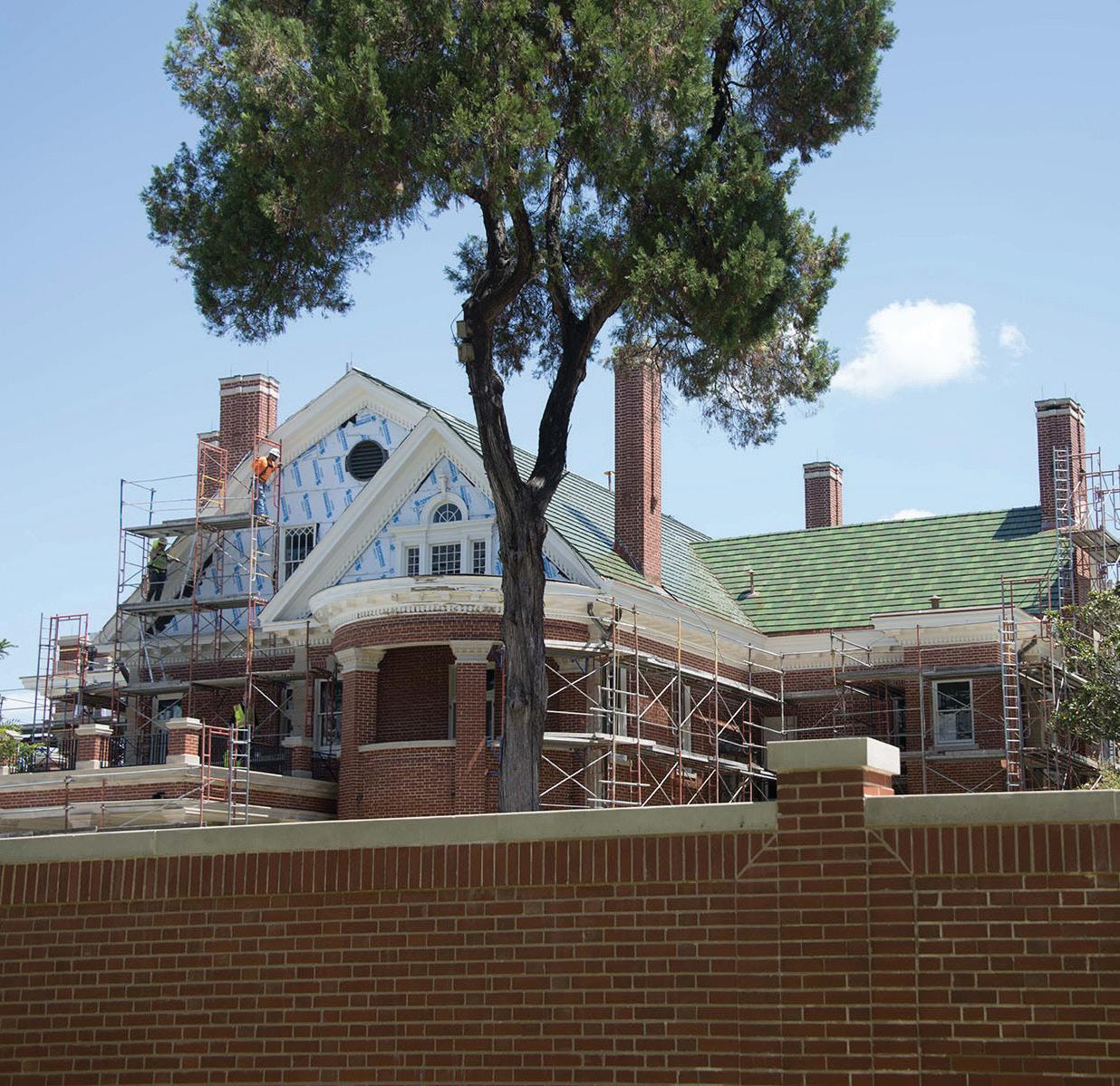




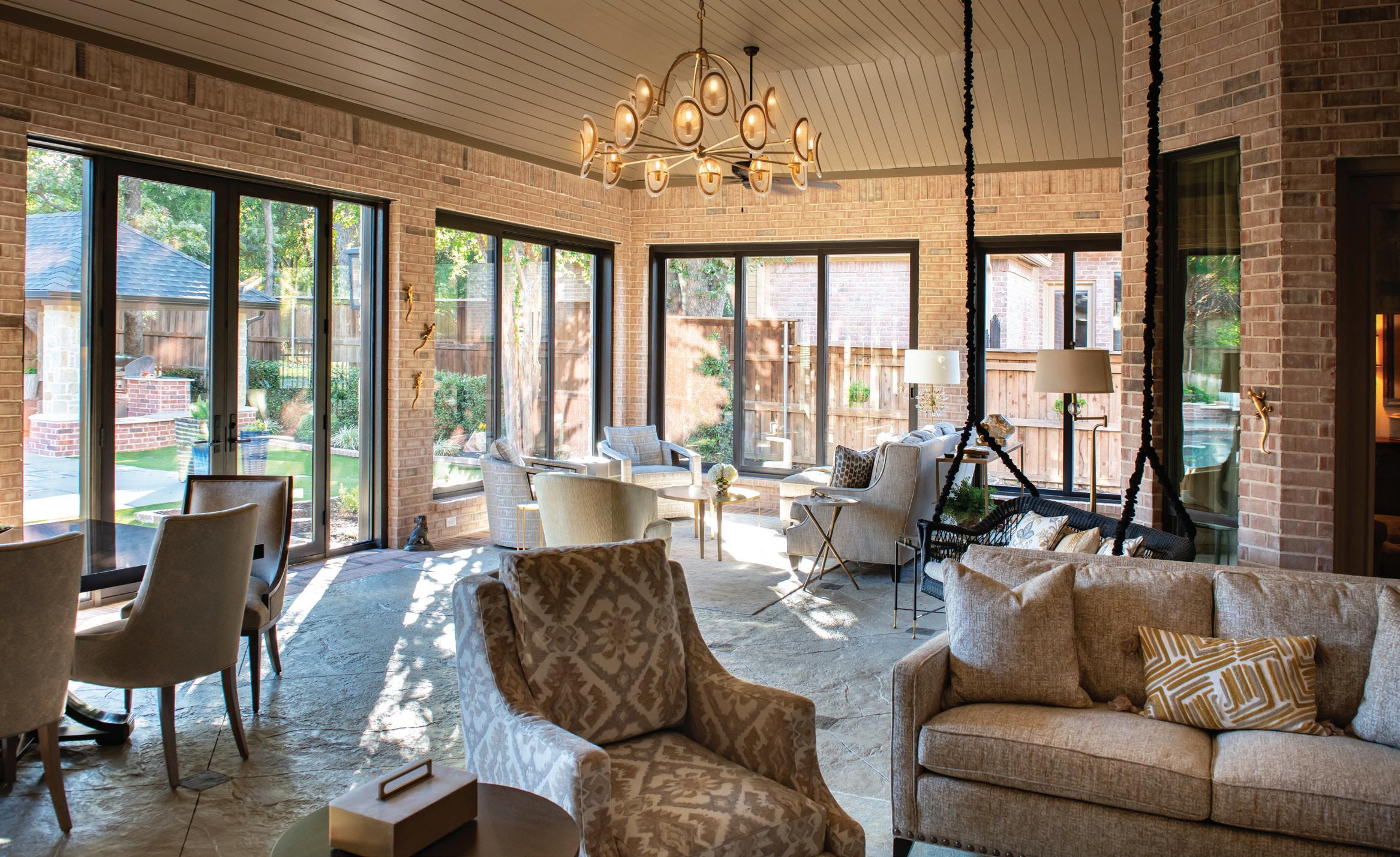
The Shining Star Awards recognize the finest in interior design.


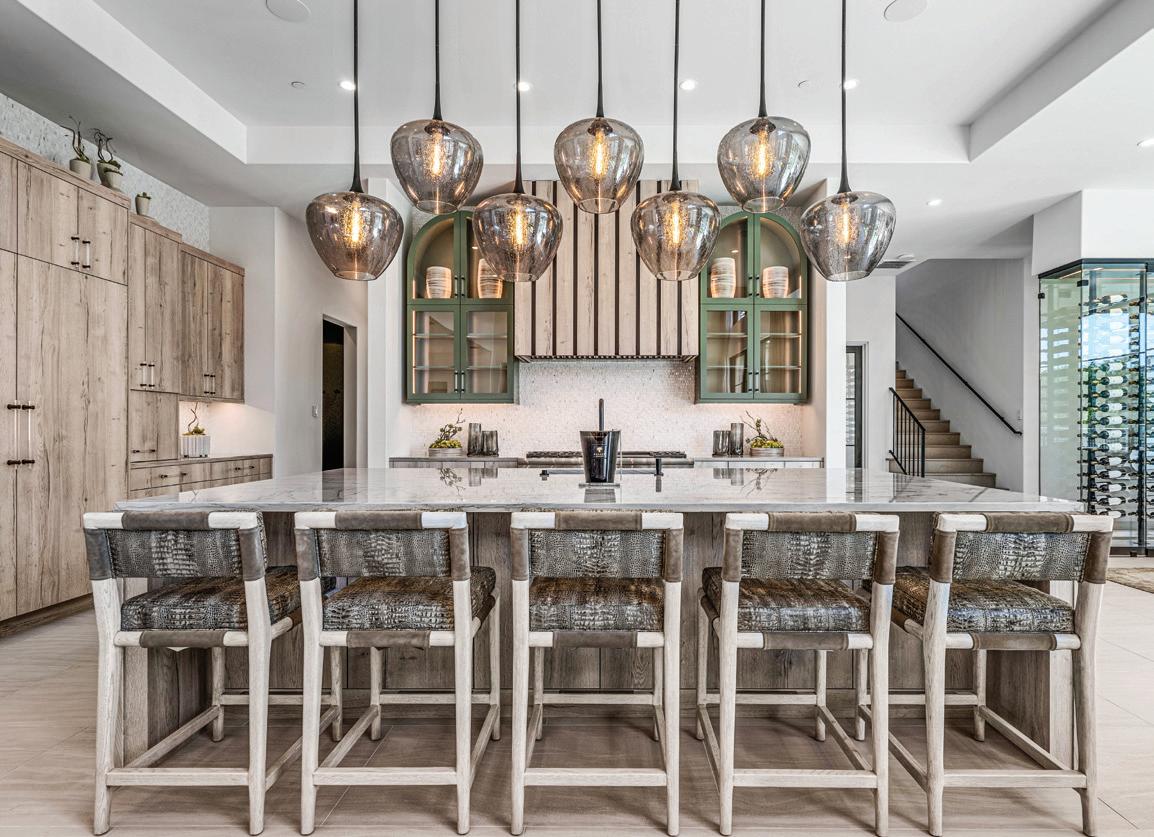
1.
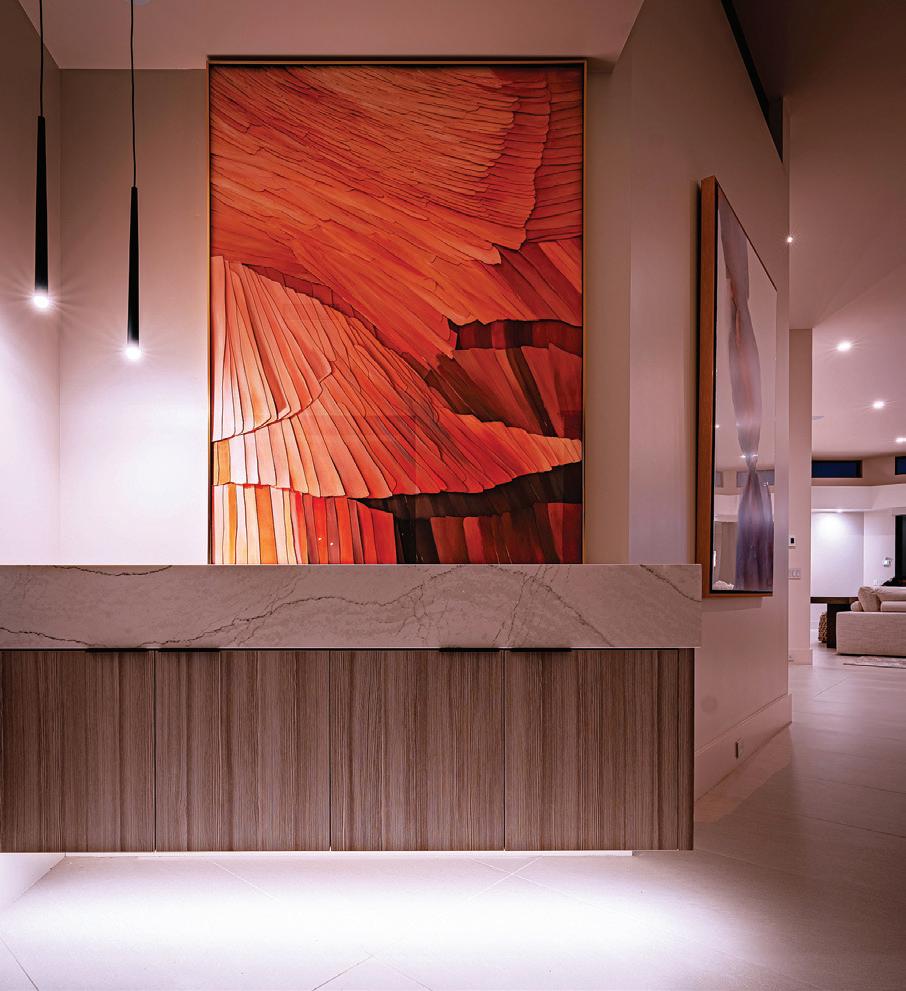




3.

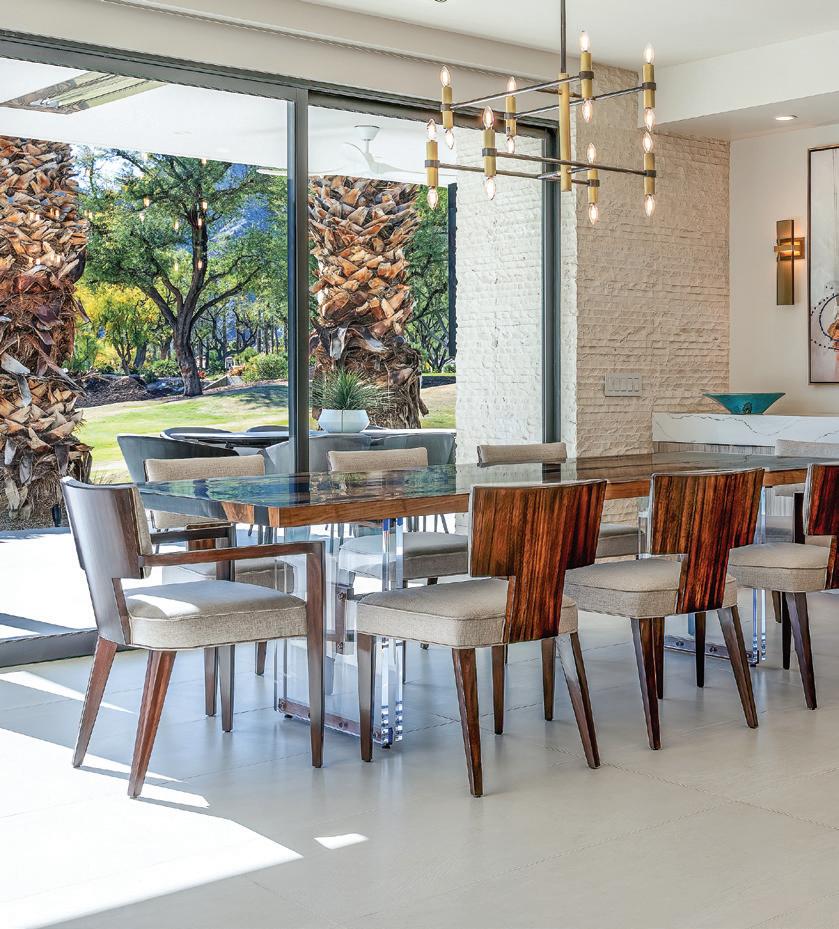

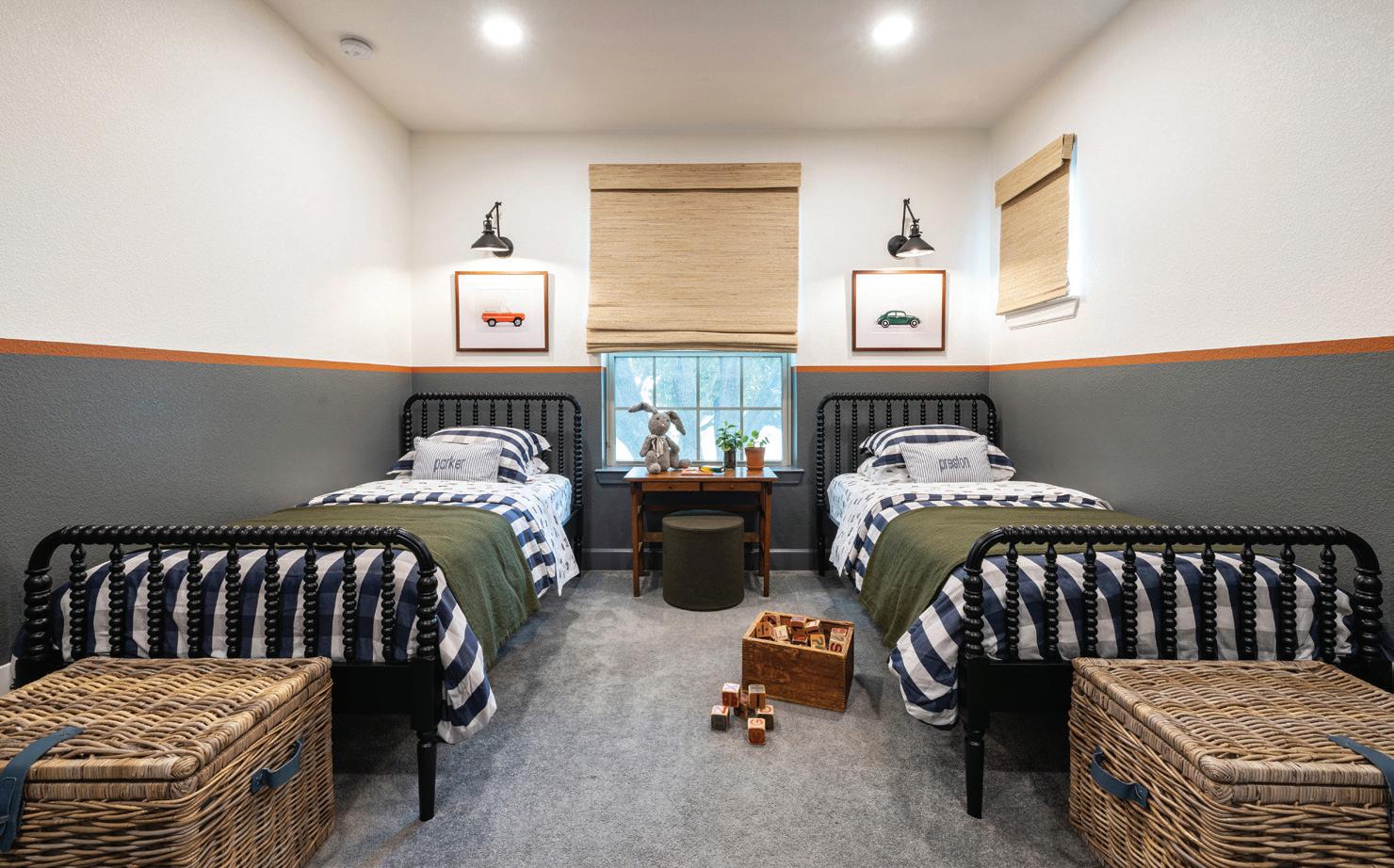

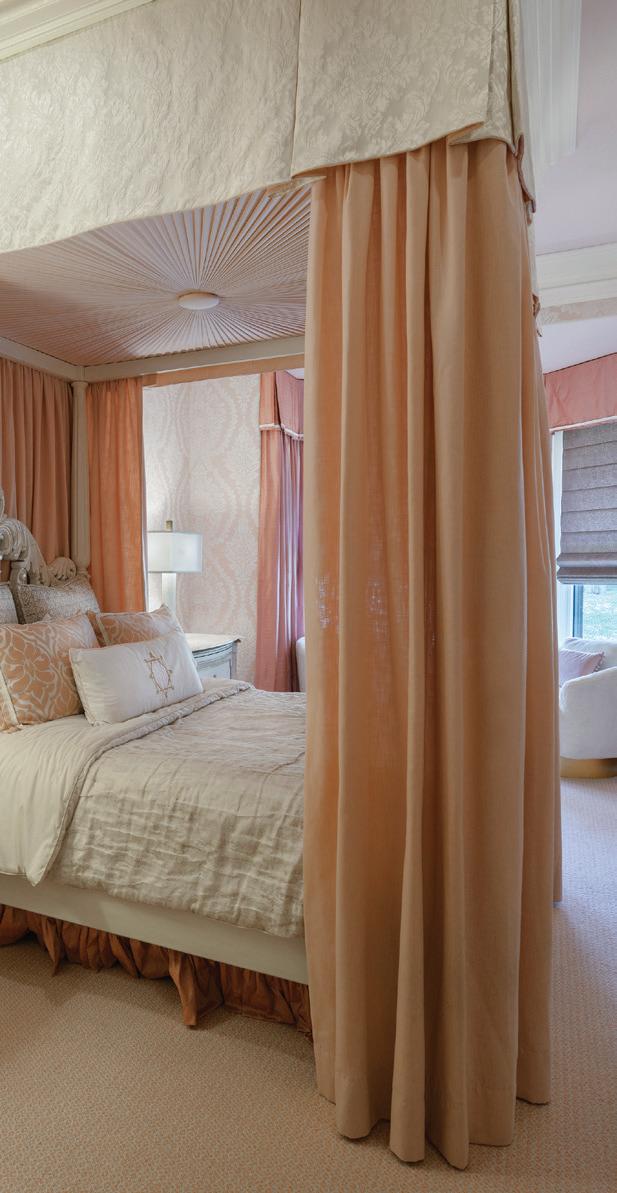







9 12


7: RESIDENTIAL: DINING ROOM NEW CONSTRUCTION
Place
8: RESIDENTIAL: DINING ROOM REMODEL 1st Place
Designs ASID Allied
9: RESIDENTIAL: BATHROOM REMODEL
Place
13:
TRAYCIE A. LOVING Loving Design Interiors ASID Allied 8 11
14: RESIDENTIAL: BAR/ENTERTAINMENT SPACE/MEDIA ROOM
Place
10: RESIDENTIAL: BEDROOM – NEW CONSTRUCTION 1st Place
11: RESIDENTIAL: BEDROOM – REMODEL 1st Place
12: RESIDENTIAL: POWDER ROOM 1st Place
15:
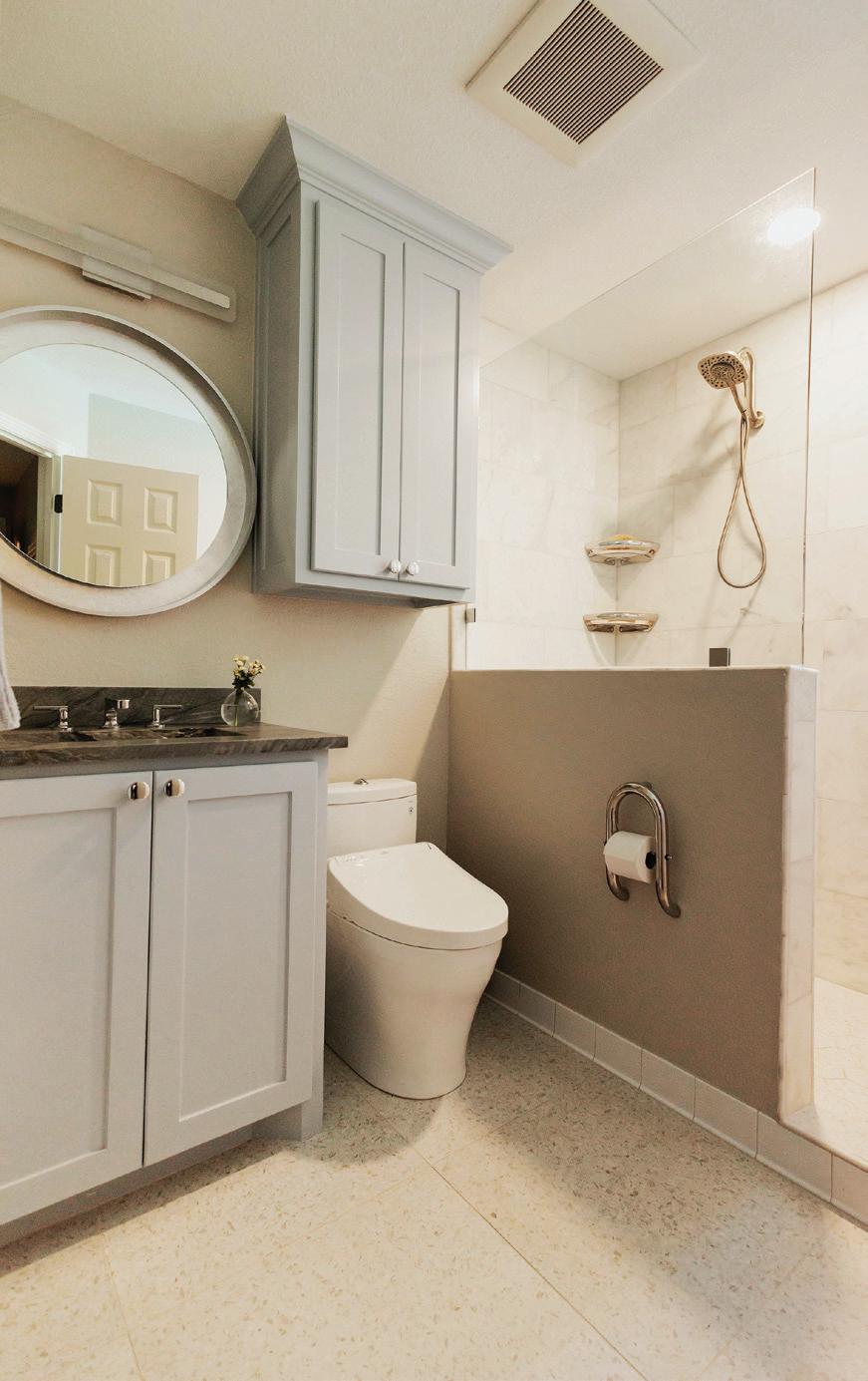
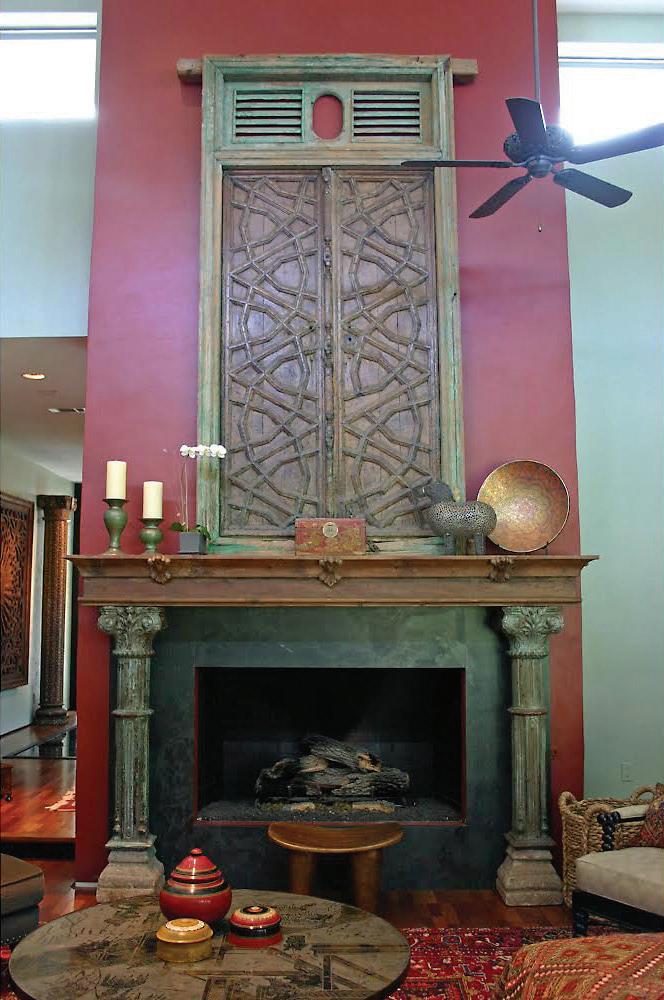
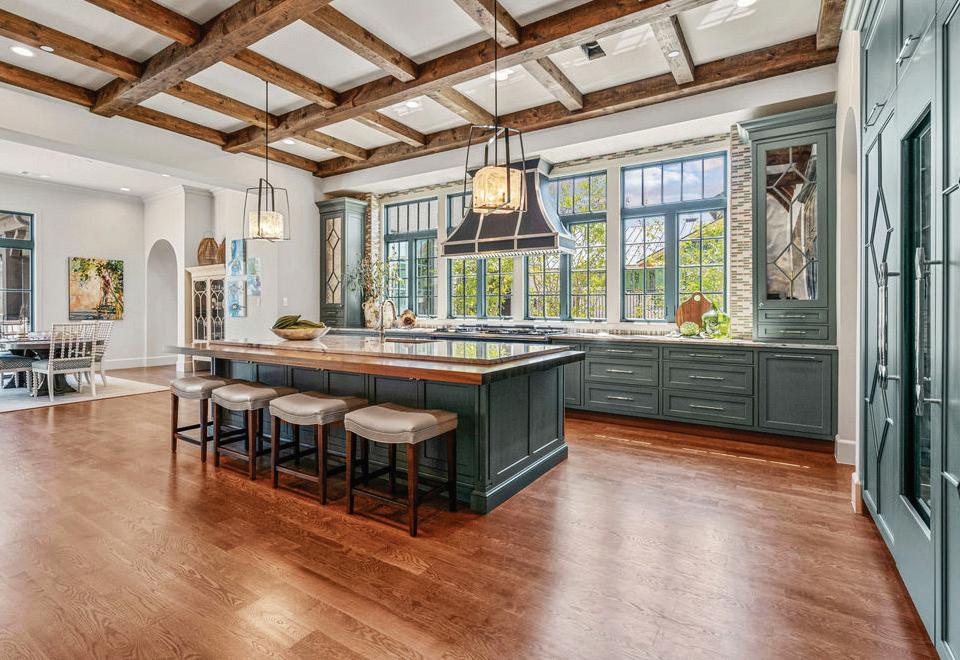
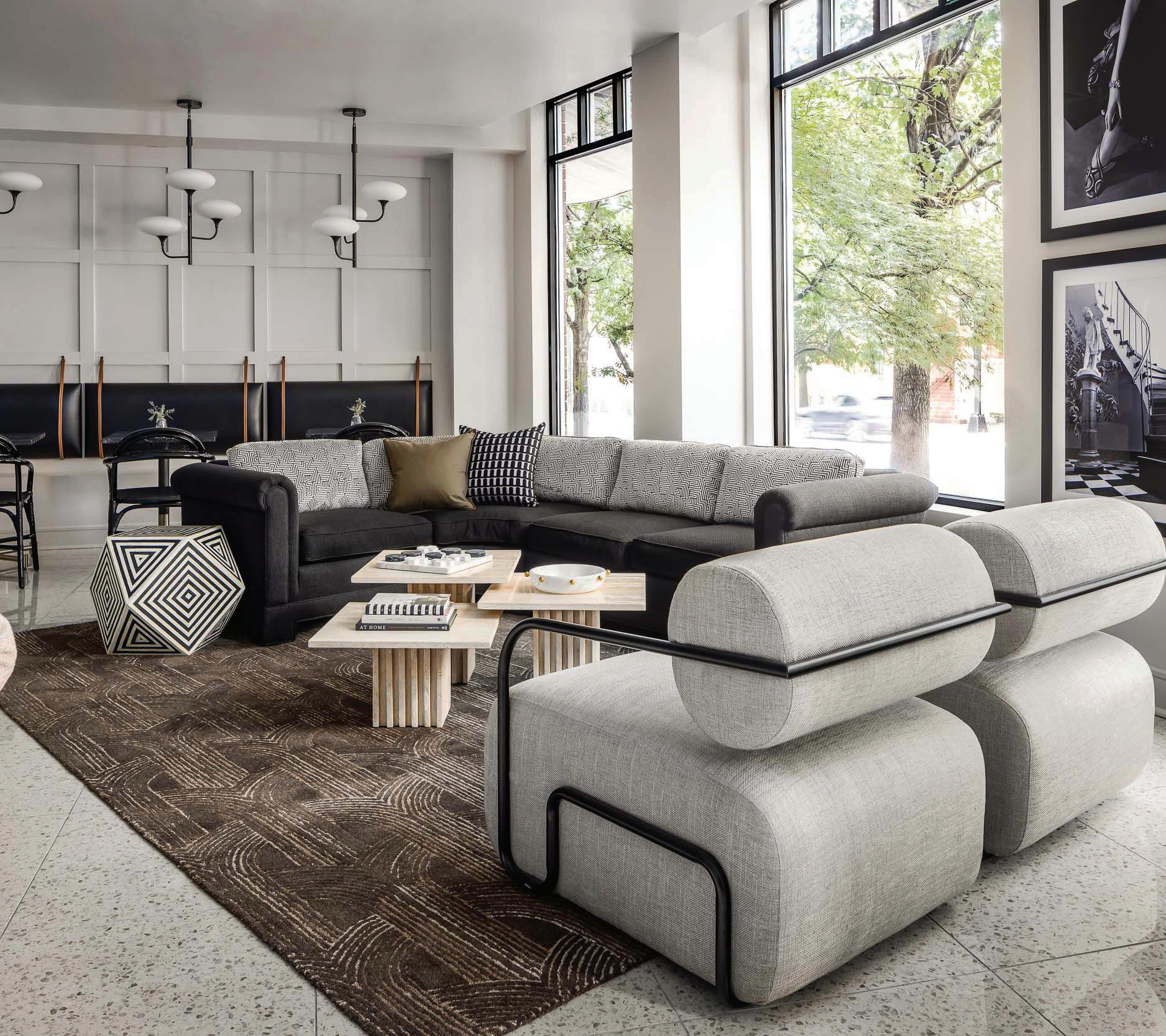

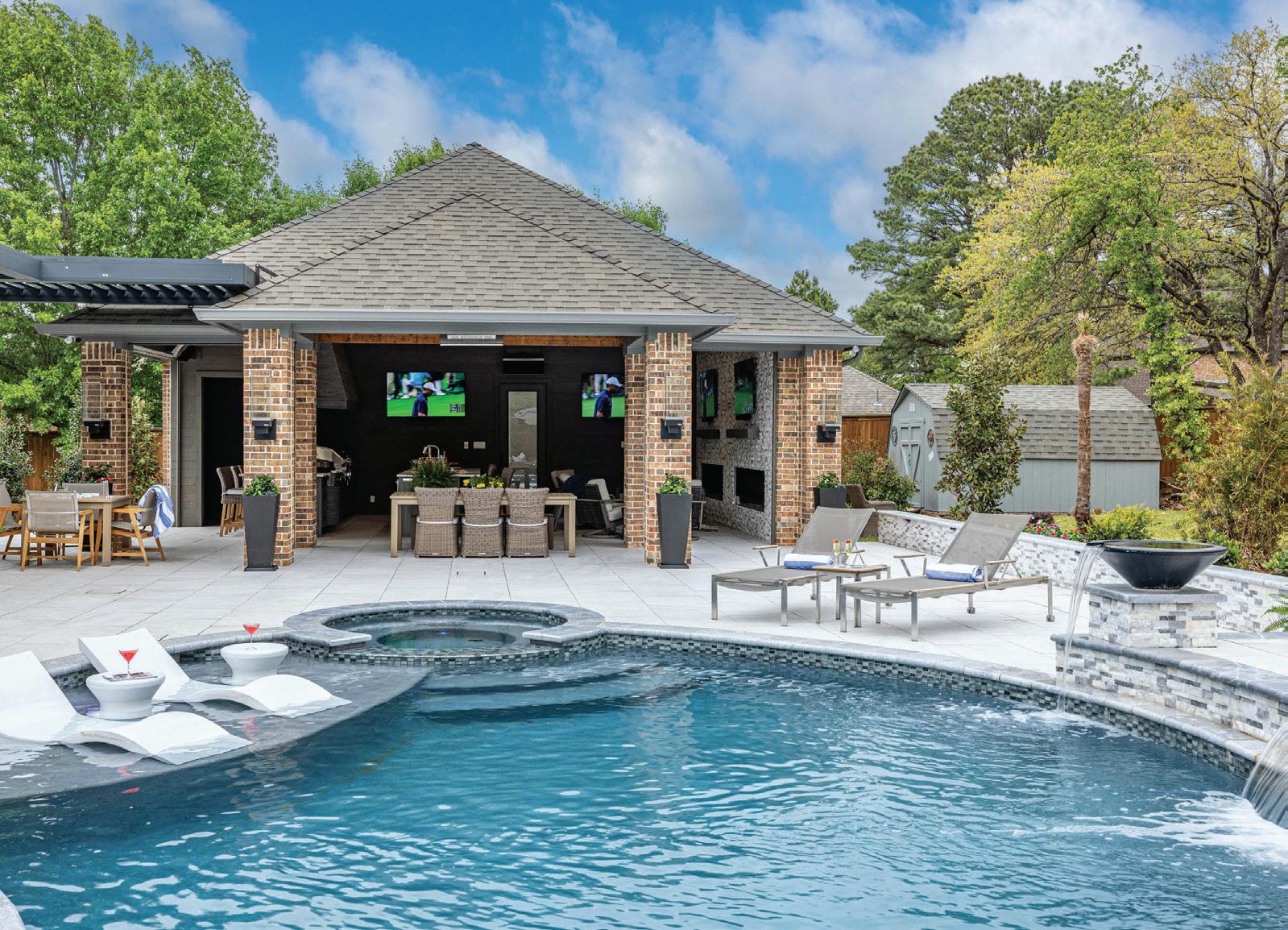
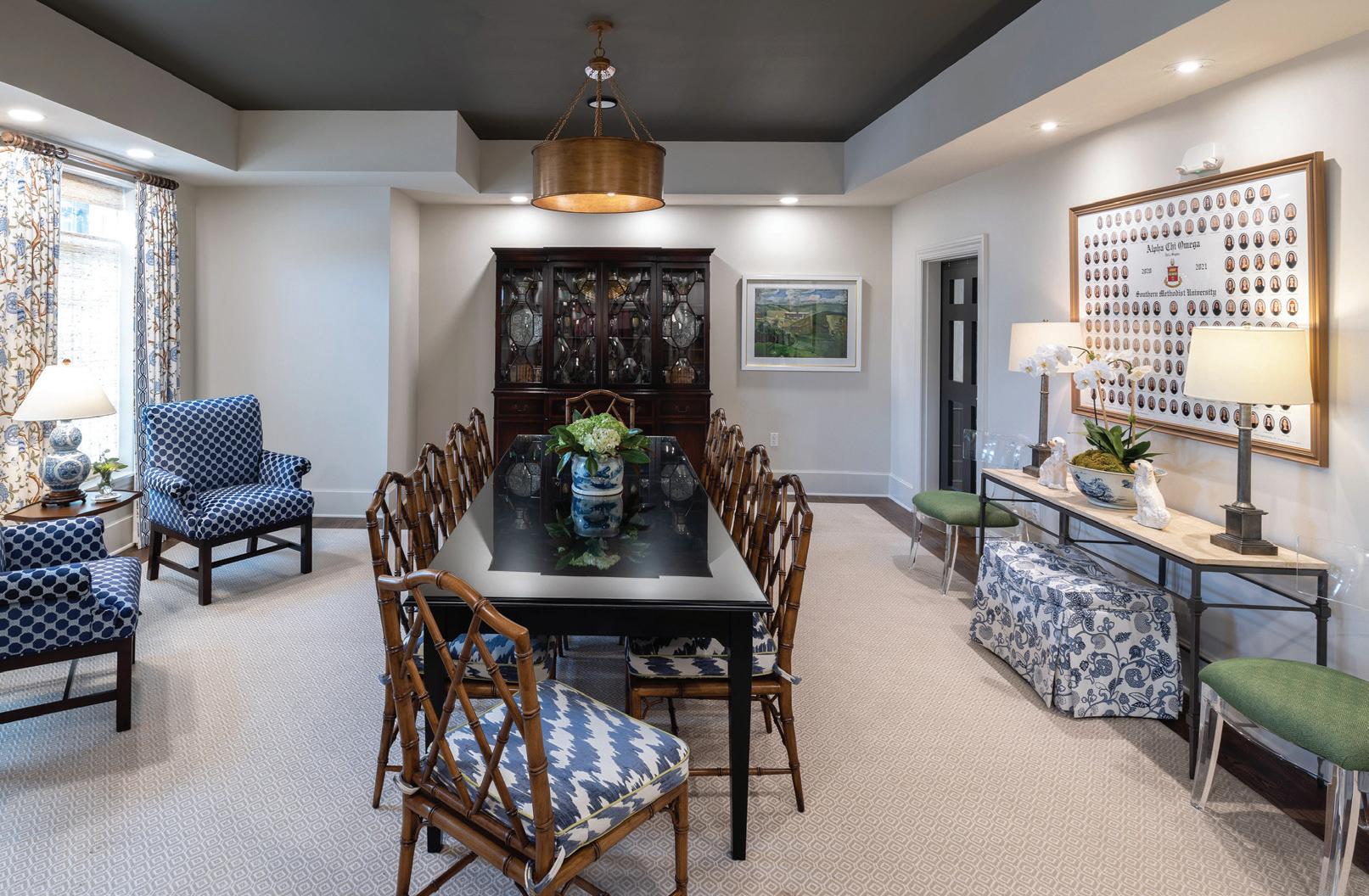






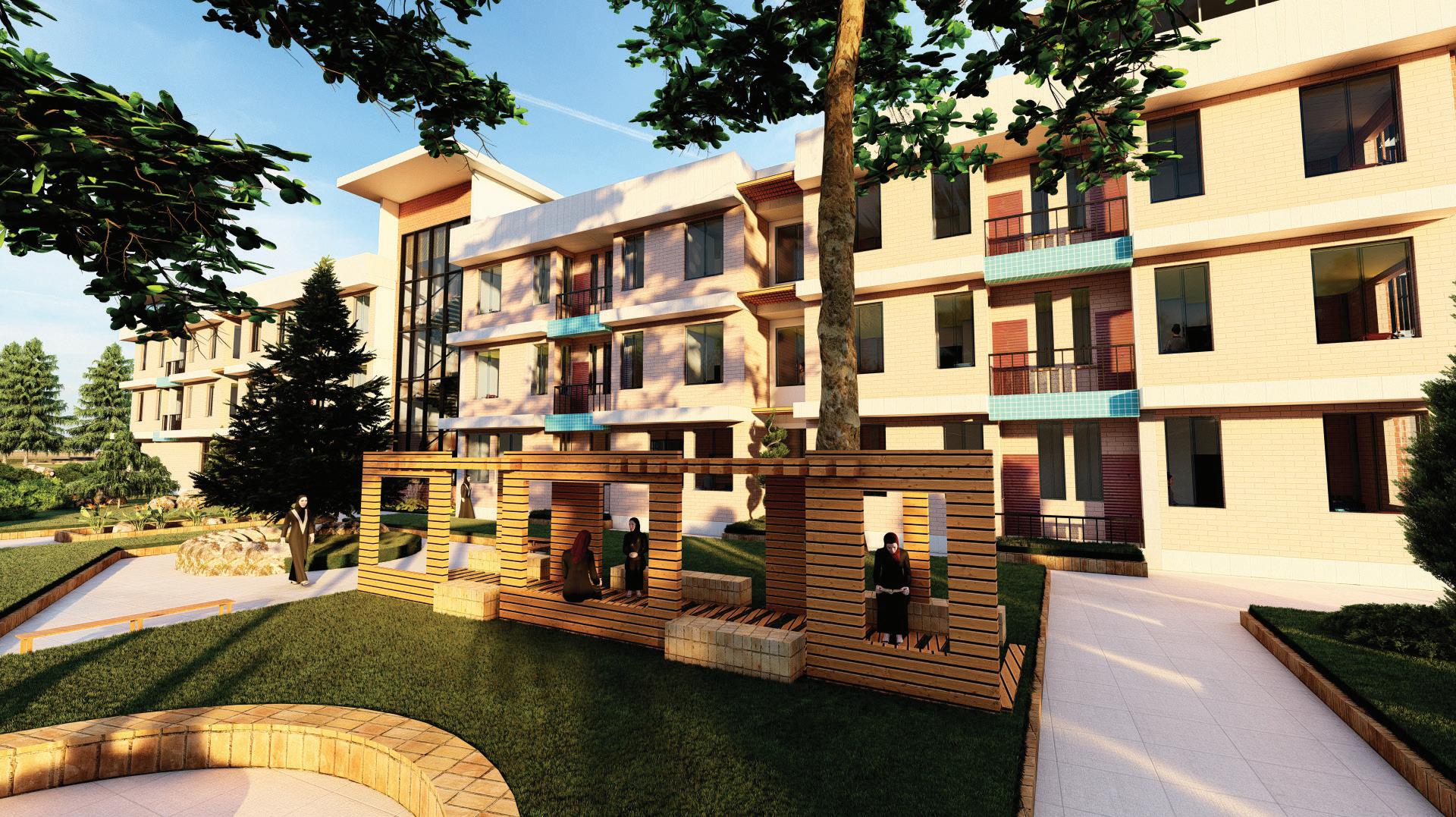
16: RESIDENTIAL: PRODUCT DESIGN/ SPECIAL DETAIL
1st Place
ANDREA REORDAN
Andrea Reordan Design
ASID Allied
17: RESIDENTIAL: INDUSTRY PARTNER COLLABORATION
1st Place
G. MARLENE SMALL
Heritage Interiors
The Kitchen Source, ASID
Industry Partner
ASID Allied
2nd Place
ANDREA REORDAN
Andrea Reordan Design
Kiva Stone, ASID Industry Partner
ASID Allied
18: OUTDOOR LIVING
1st Place
ROBIN BURRILL
Signature Home Services ASID
2nd Place
CHRISTINE GEE G.Interiors
ASID Associate
19: RECLAIMED MATERIAL/RENEWED ITEM
1st Place
ADRIENNE MORGAN
Adrienne Morgan Interior Design ASID
20: COMMERCIAL:
CORPORATE - LARGE (>15,000 SF)
1st Place
Best in Show
AMY SIBLEY
Komatsu Architecture
2nd Place
AMY SIBLEY
Komatsu Architecture Interiors Group
22: COMMERCIAL: HOSPITALITY
1st Place
STACIE MCCANS
Paxton Place Design ASID
23: STUDENT DESIGN: COMMERCIAL
1st Place
ANNA (ANYA) BATALOVA
Texas Tech University
Student ASID
2nd Place
LADAN KHALVATI
Texas Tech University Student ASID
24: STUDENT DESIGN: RESIDENTIAL
1st Place
LADAN KHALVATI
Texas Tech University Student ASID
2nd Place
PARIYA SHEYKHMALEKI
Texas Tech University
Finalist
KAYLA MACDOWALL GIBBS University of Texas at Arlington Student ASID 18 22 24
21: COMMERCIAL: MULTI-FAMILY
1st Place
KATIE IRSANEOUS Irsaneous Interiors
ASID Associate
2nd Place
KATIE IRSANEOUS Irsaneous Interiors ASID Associate
For

Whether
Whether
Get



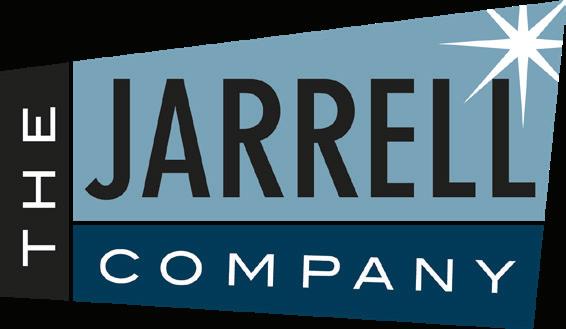
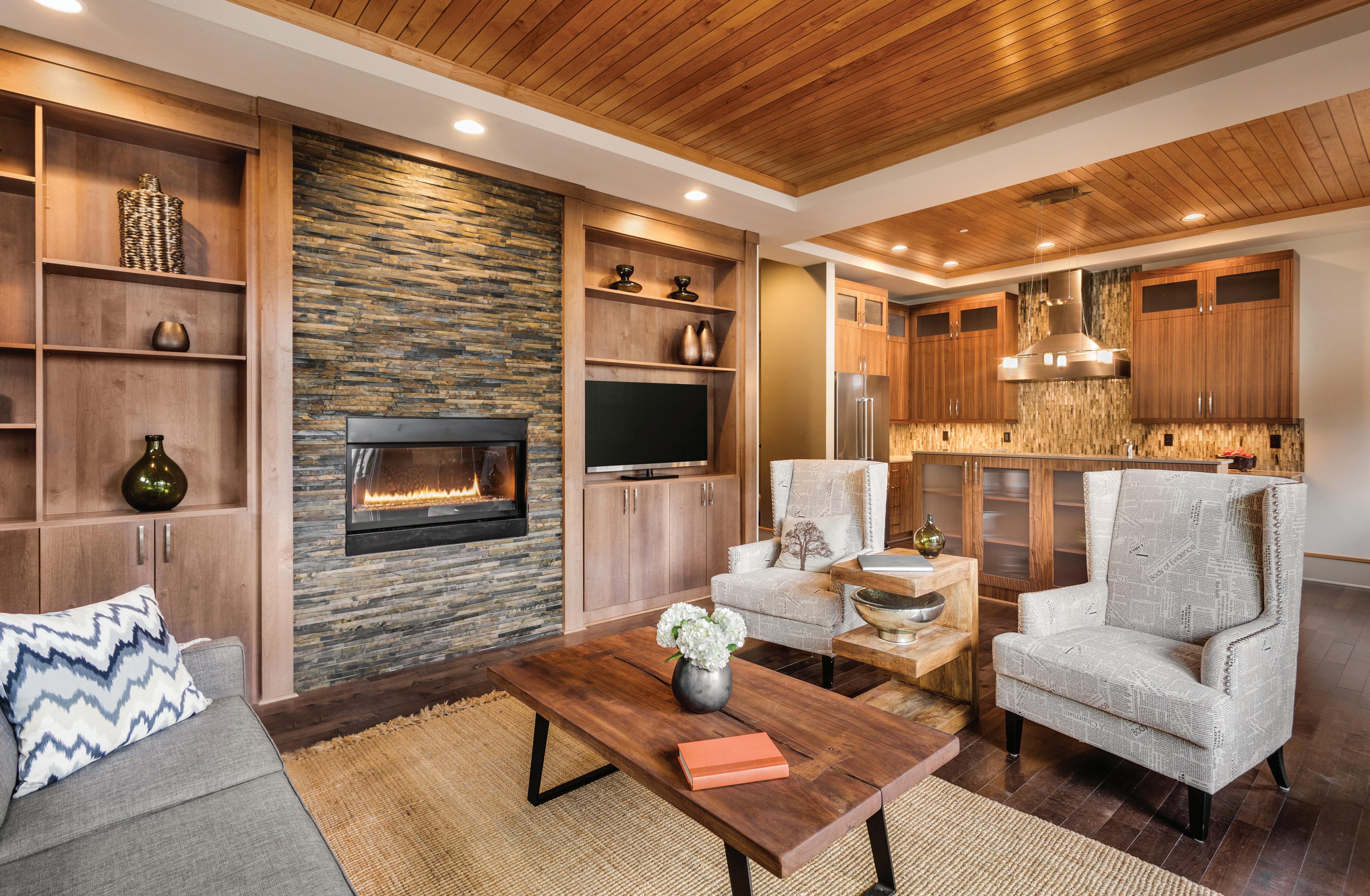


Explore stunning imagery of remarkable local home projects. Each project’s unique character, craftsmanship, and vision are vividly showcased on the following pages for your inspiration. Dive into the world of design, architecture, finishes, fixtures, outdoor spaces, and more, where the beauty and inspiration behind each home are expertly captured. The information in this section is provided by the advertisers and has not been independently verified by Fort Worth Magazine.



This project aimed to create a modern design with a classic touch, featuring an open concept layout that seamlessly connects the indoor space with the outdoor surroundings. This connection was achieved through carefully selected fabric textures, uniquely shaped furniture, diverse materials, and strategic furniture placement. The standout dining table combines natural elements with a live-edge wood top, complemented by acrylic legs for a modern flair. Every piece of furniture was thoughtfully positioned to frame the spectacular landscape, ensuring that nature's beauty is visible from every angle within the space. The breathtaking views of the PGA golf course are showcased through the
floor-to-ceiling windows. To further enhance the scenery, desert-inspired colors harmonize beautifully with the natural landscape. AJ Designs interior design style is showcased in this project by providing a classic timeless design with a modern twist.

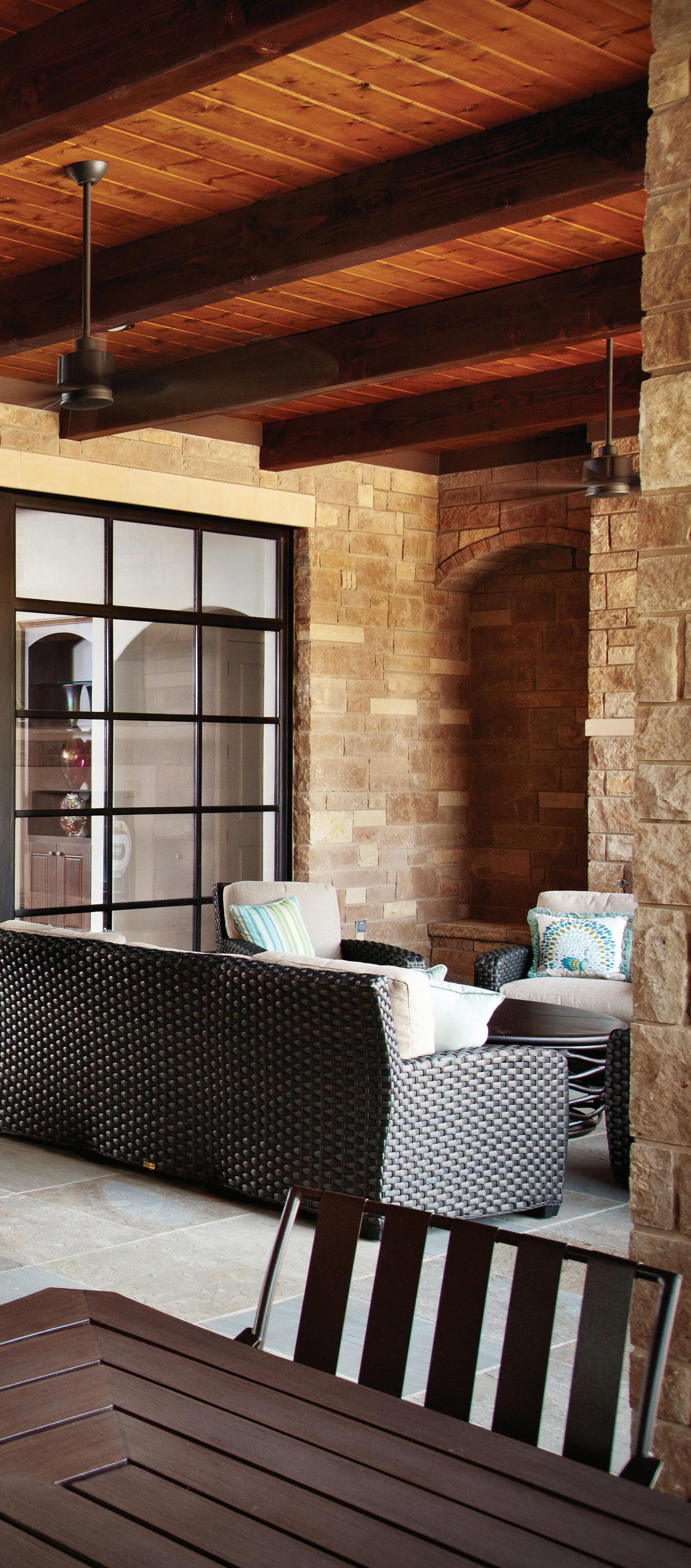


For this project, the team of specialists at Durango Doors installed a continuous wall with a combination of steel windows and doors using structural steel to connect the units together. By using steel and glass on the rear wall of the living area with minimal window and door profiles, the exterior patio is connected to the main living area, thus “Bringing the Outdoors In.”
Product specialists and project managers worked diligently to ensure every detail aligned with the client’s vision, delivering exceptional results. The biggest challenge was the engineering of the structural steel to make sure all units were secured properly. The main design aesthetic is the minimal profiles of the Millennium steel windows and doors. By using steel, the frame size around the glass is reduced, and the interior and exterior views are maximized
— more glass less structure. This was the first time the Durango Doors team installed floor to ceiling windows and doors and mulled the units together, connecting indoor to outdoor living areas, to give that grandiose look. Although this was the first continuous wall of thin profile Millennium steel windows and doors created by the team, they now frequently deliver the same custom service to other clients.




The Powers Project is distinguished not only by its scale but also by its intricate details. Clients selected features and materials to create a backyard that will be enjoyed for years to come, accommodating both their growing family and their desire for modern elegance. With features that appeal to both children and adults, the project shines with its custom acrylic wall surrounding the sunken outdoor kitchen. The 360-tiled spa, extended tanning ledge, and retaining wall are just a few of the custom features with exquisite details that elevate this backyard. At its heart is the custom straight-lined pool, a striking feature that sets the tone for the project. The extended tanning ledge invites lounging, perfect for summer gatherings, while the 360tiled spa provides ultimate relaxation. Complementing these elements is a beautifully
designed stucco cabana, an exquisite outdoor living structure that seamlessly connects to the acrylic wall, complete with a detachable seating area — ideal for enjoying hot Texas summer days or hosting gatherings. This project showcases Emerald Custom Pools’ creativity and dedication as a family-owned custom pool company. The clients had specific visions, and the Emerald team ensured every detail came to life. Committed to infusing creativity into each project, the Powers Project perfectly exemplifies Emerald’s mission to create outdoor sanctuaries for clients to enjoy for years to come.
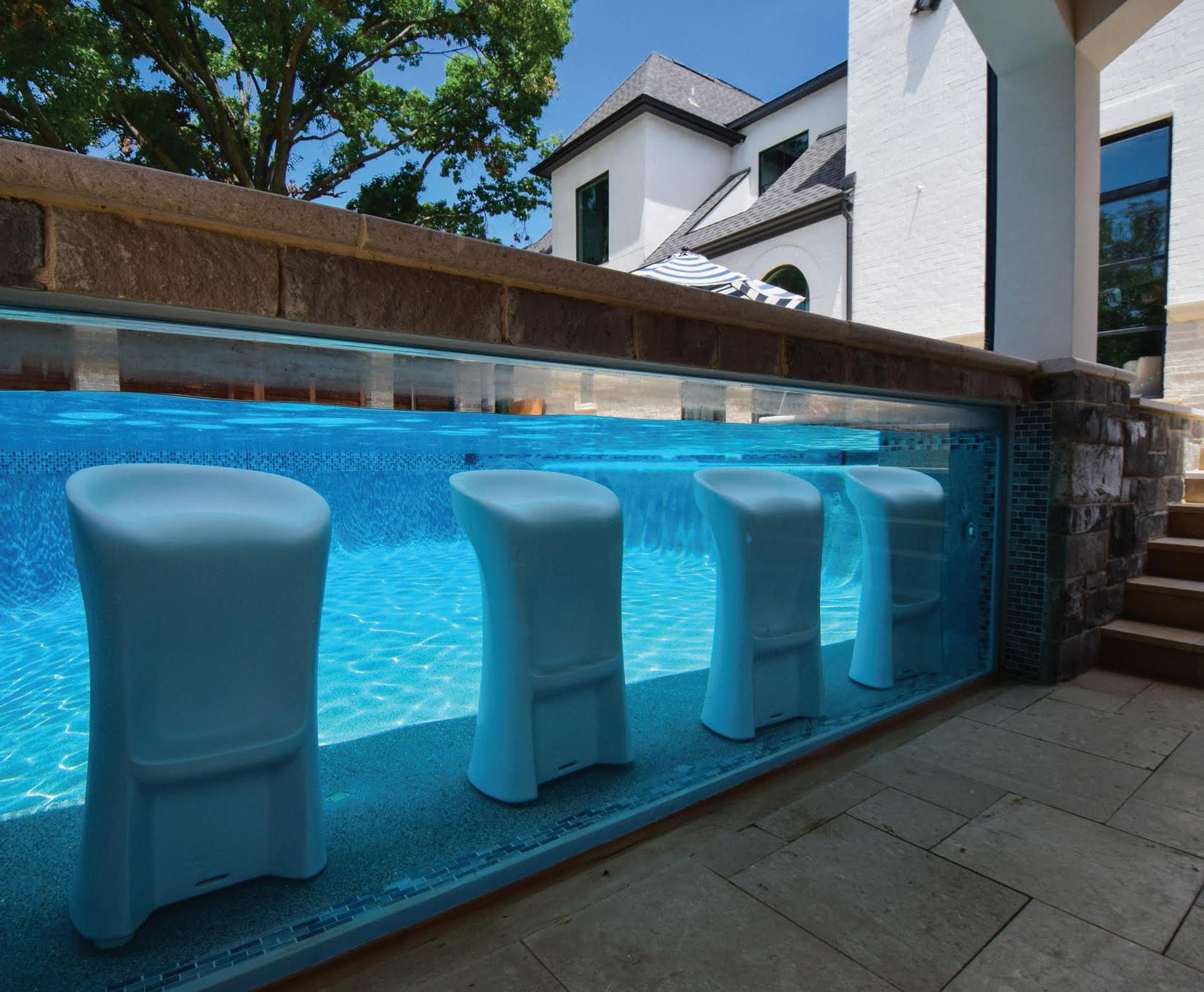
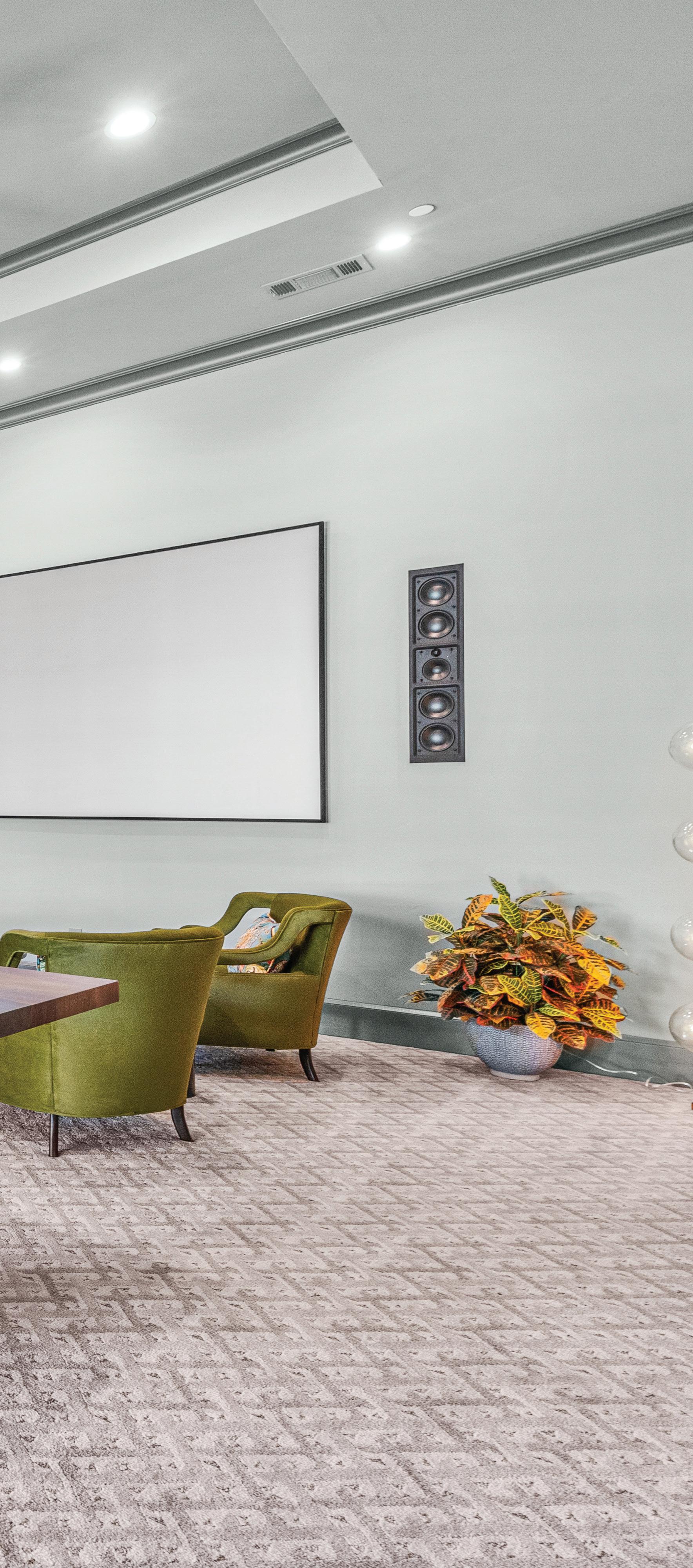
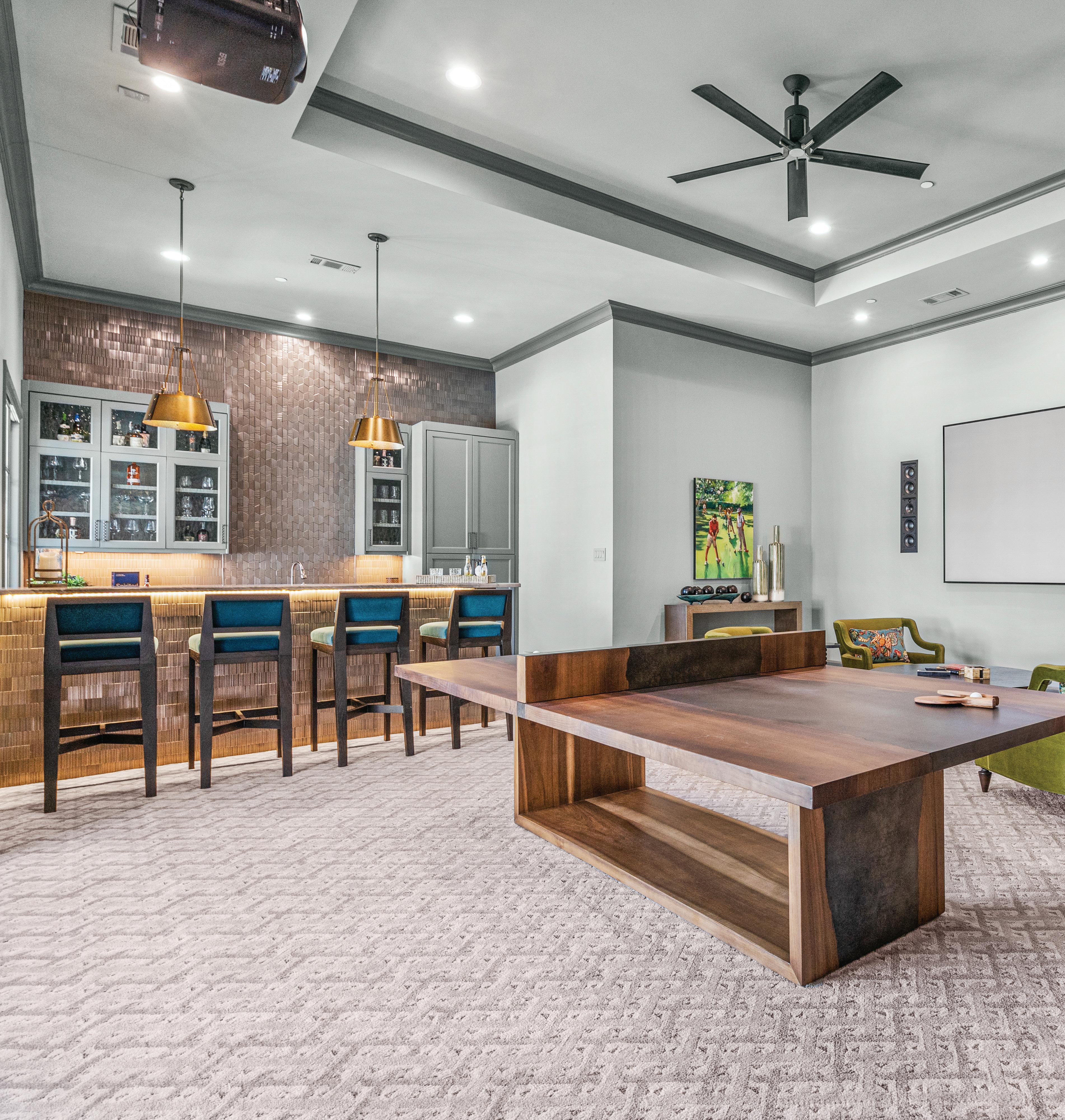

In 2023, The Otium Group embarked on a dream home project, infusing elegance and innovation into every corner of the residence through expert audio-video work. The team meticulously designed the media room and seamlessly integrated state-of-the-art smart home technology, featuring cutting-edge TVs, immersive speakers, and highquality projection screens. This project redefined modern living, creating a luxurious, tech-savvy haven for delighted clients, where entertainment and sophistication coalesce effortlessly. What sets this project apart and makes it truly unforgettable is their innovative approach, especially evident in the multiuse game room. Unlike other homes on the tour, they chose to showcase the speakers rather than conceal them, adding a distinctive touch. This room boasts incredible versatility, offering endless possibili -
ties for its use. What sets this project apart is its remarkable versatility within the multiuse media room, delivering a truly “wow” factor. Its ability to seamlessly adapt to various purposes and functions is truly amazing. The design philosophy driving this project can be summed up in two words: functional simplicity. The approach to this home encompasses not only the integration of cutting-edge audiovisual technology but also the seamless incorporation of smart lighting, all orchestrated through Control4 automation. This project epitomizes The Otium Group’s design ethos through its emphasis on functionality through simplicity. It stands out by decluttering the excessive elements commonly found in audio-video solutions from other companies and revolves around streamlining the user experience.




This exquisite home built by John Webb represents the perfect balance of modern luxury with comfortability in a beautiful space. Every room and detail in this home isn’t just a design, it’s a feeling and an experience, a modern approach to interior design with Mediterranean aesthetic. The master suite bathroom is the “wow factor” in the home with the master tub and twin showers. Being a Dream Street project, many subcontractors worked together simultaneously to complete the project on time. What makes this project unique is the tremendous amount of exposure and the ability to showcase our creativity, along with other craftsmen in the industry. ProServe Plumbing provides exceptional quality plumbing services with attention to detail. We want our clients to feel confident in selecting us and to know that we will provide them with the
same professional service exemplified in this Dream Street project. We have been in business for 20 years and have seen the evolution of design and functionality, culminating into the many custom homes you see today. We have forged our path throughout Fort Worth and continue to experience tremendous success because of the relationships we have built and maintained over the years.




The pastoral setting is the perfect backdrop for this exquisite home. The home itself is sophisticated yet welcoming. It maintains a curated quality without feeling “stuffy,” achieved by careful selection of the various surfaces for the home. Wood flooring in the common areas adds warmth, unique tiles add a little bling to the baths, and sumptuous carpets add softness in the bedrooms. Each bathroom has its own personality while still maintaining a cohesive feel. For example, the pool bath has a playful “bubble” glass mosaic in soft shades of blue covering the floor-to-ceiling feature wall. Even the homeowners’ pampered pooch has its own bath/shower with charming
wainscot tile on the walls. The bold tile selections contrast of color and texture accentuate the dramatic architecture of the master bathroom, adding a “wow” factor. The floor-to-ceiling Nero Marble material gives the barrel ceiling its punch. Vintage Floors installation experts did a masterful job installing the tile and creating the beautiful arch, the focal point of the room. The design aesthetic behind this project is casual elegance with a careful mixture of color and visual texture. This project showcases Vintage Floors’ commitment to clients in choosing the perfect material for their home to reflect the homeowners’ design and lifestyle.
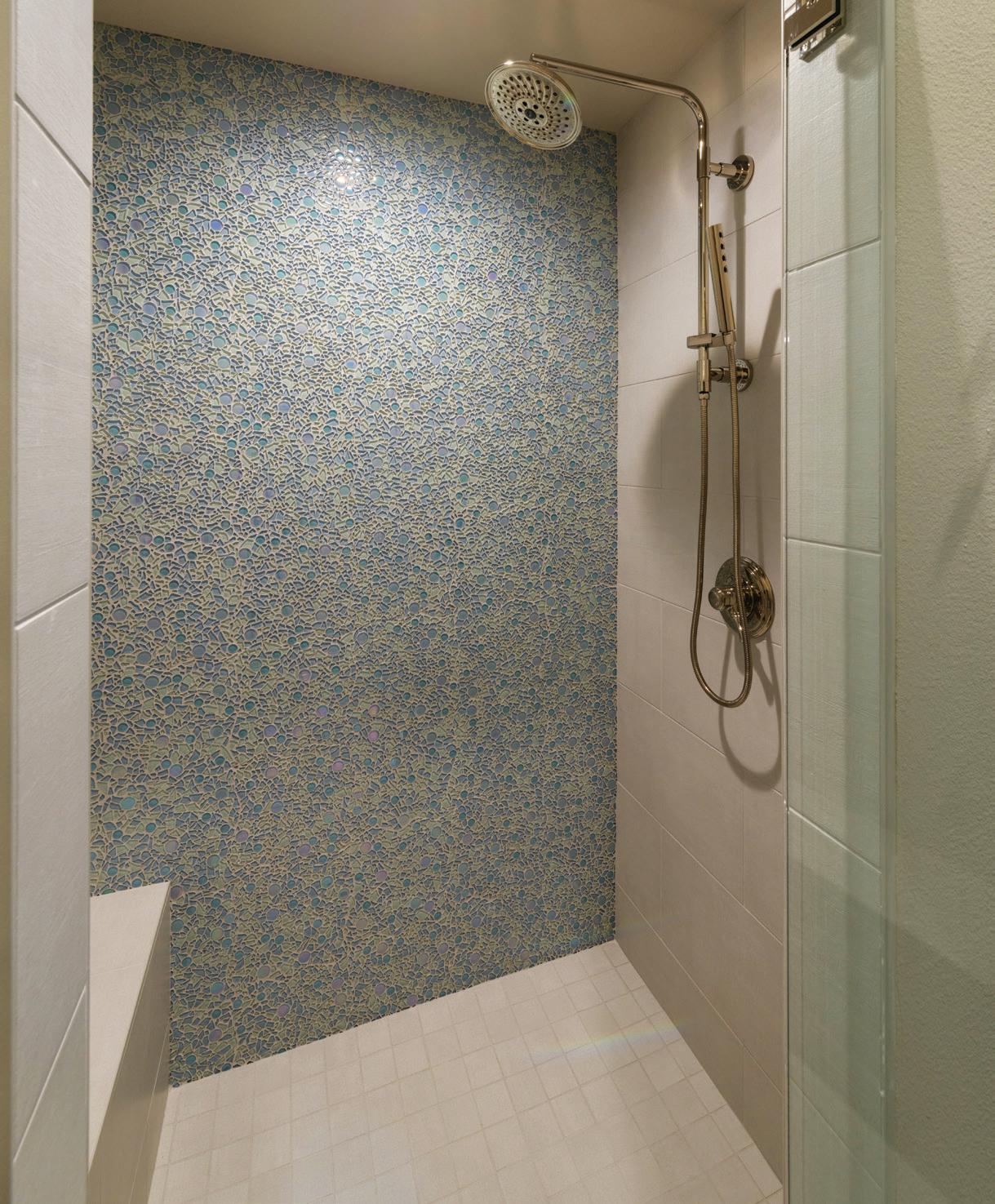


G. Interiors Studio & Design Center
Refined Country Living
In this modern farmhouse design, contemporary design principles harmonize with rustic charm. A palette of neutral tones is anchored by a slate blue foundation, complemented by plush textiles to create an atmosphere of serenity and ease. To infuse a hint of modern sophistication, touches of gold accents are strategically incorporated throughout the space, adding a dash of glamour without overwhelming the homeowners’ private collection of art and pottery collected on their travels. This modern flair seamlessly merges with the classic charm of country chic pieces, resulting in a captivating blend of contemporary and timeless elements. G. Interiors Studio & Designer Center prides itself in offering designs that are authentic to each client and unique to their individuality.


A transitional lake house with a view
This custom transitional home is overflowing with natural light and spectacular views over the water. The design features abundant sleeping quarters and boasts a family-friendly kitchen and scullery that any gourmet cook would love. Upstairs has more bedrooms, baths, and a fun multifunctional game room. The family room has views on both sides and an oversized wood-burning fireplace. The unique ceiling treatments, large view-filled windows, and flying stairwell all contribute to making this home unique. A large outdoor living area includes seating, a dining area, another large fireplace, and outdoor kitchen. Mixing transitional with some Tudor influences will ensure the home will stand the test of time. The flow and functionality of this design showcase Grand Home Designs’ style by highlighting its overall livability while also looking amazing.
Grand Home Designs 114
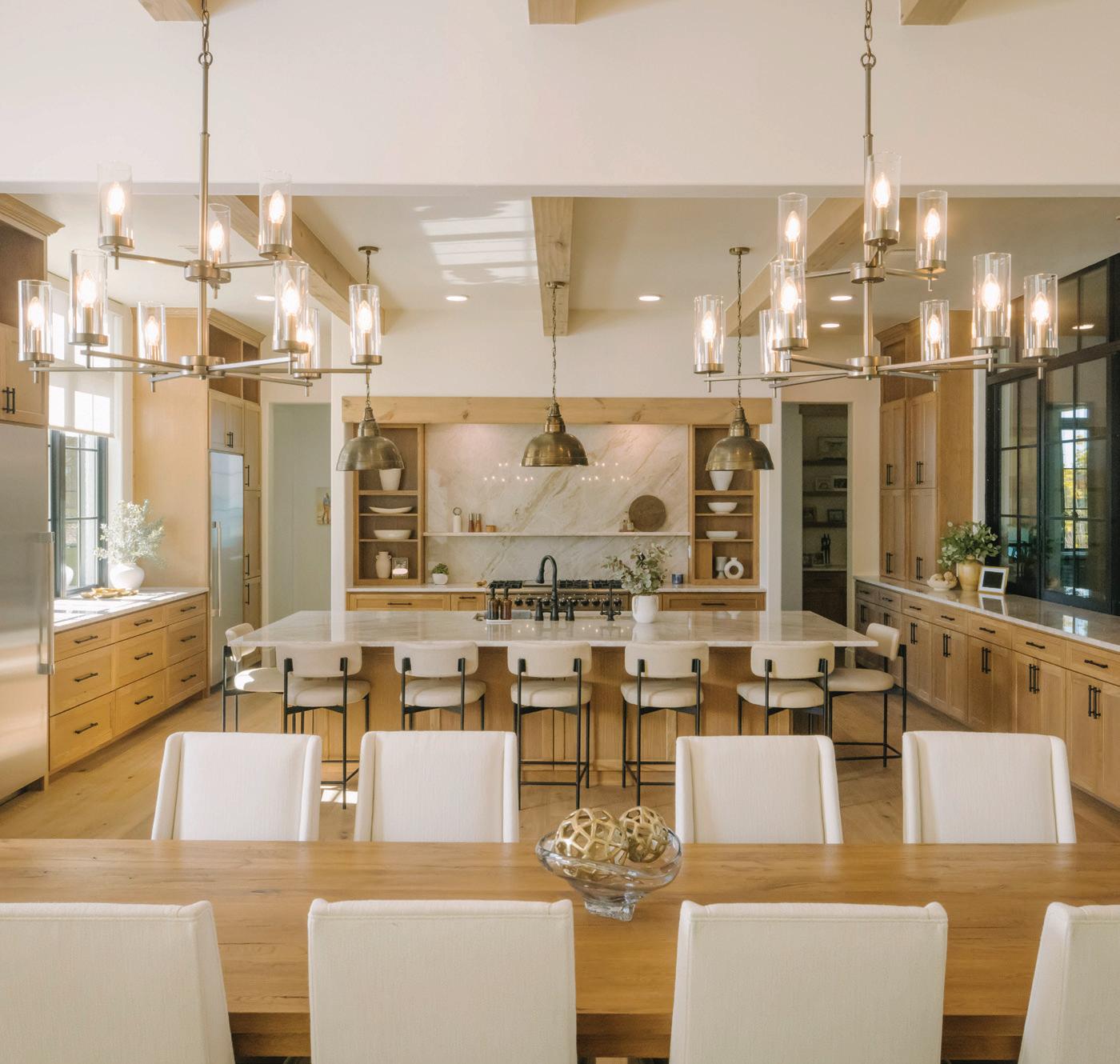


Bold in Bloom is a vibrant yet modern home, skillfully balancing lively hues with sleek design elements. Every room feels intentional, with the vibrancy of blues and pinks balanced by thoughtful use of form and light. Bold in Bloom is unique because of its blend of custom floral patterns with a minimalist, modern aesthetic. This interplay creates a home that feels expressive without sacrificing the sleek sophistication that modern design demands. The clean lines and sleek surfaces are enlivened by vibrant colors, creating a space that feels both elegant and playful. Susan Semmelmann’s keen eye for layering textures and patterns shows how she blends vibrancy with refined elegance. The way she uses lighting, especially the statement chandelier, demonstrates her talent for creating focal points that elevate a space while still maintaining harmony with the overall design.

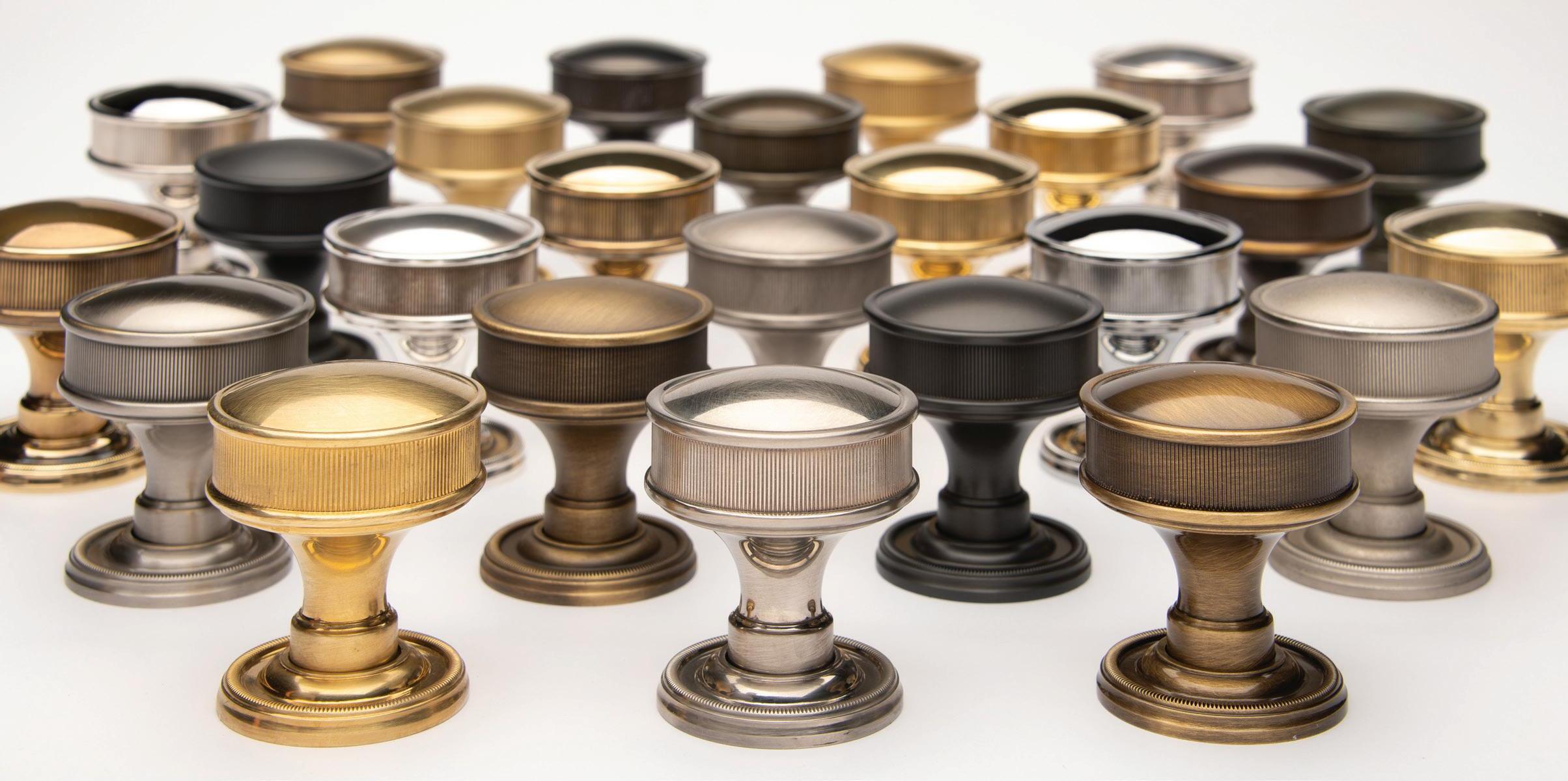


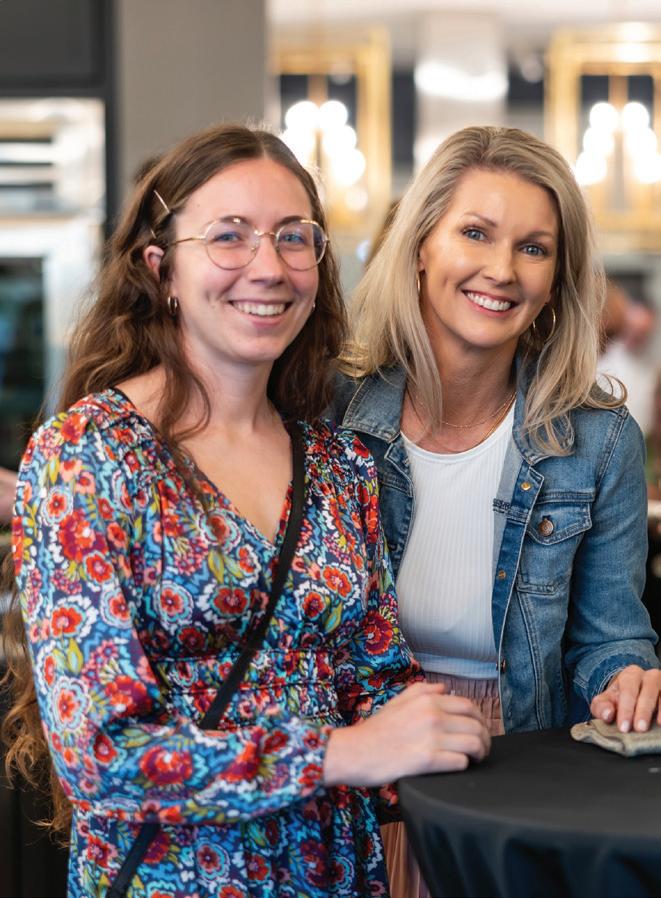
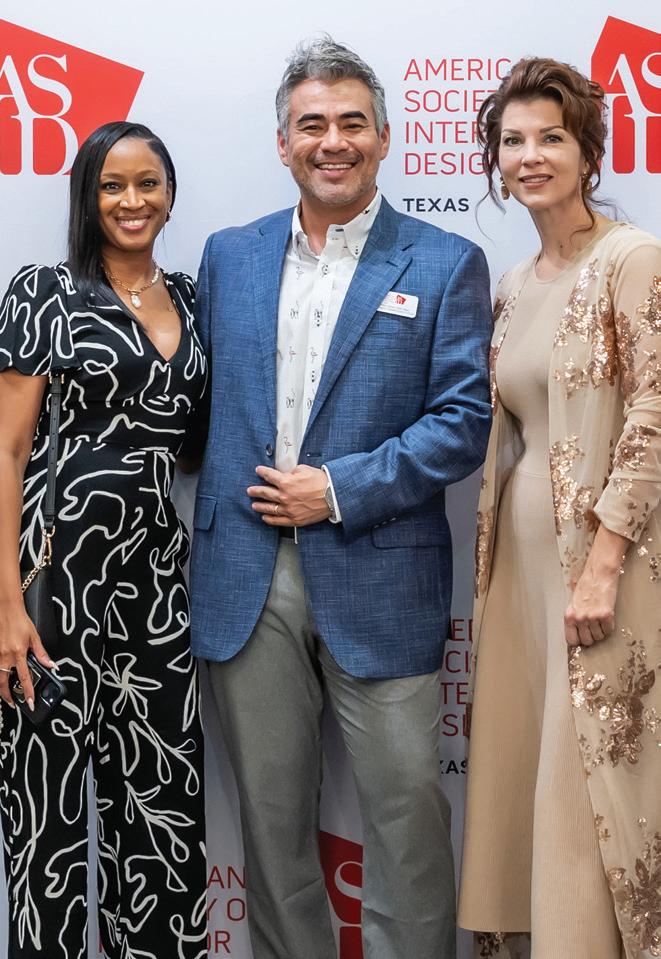
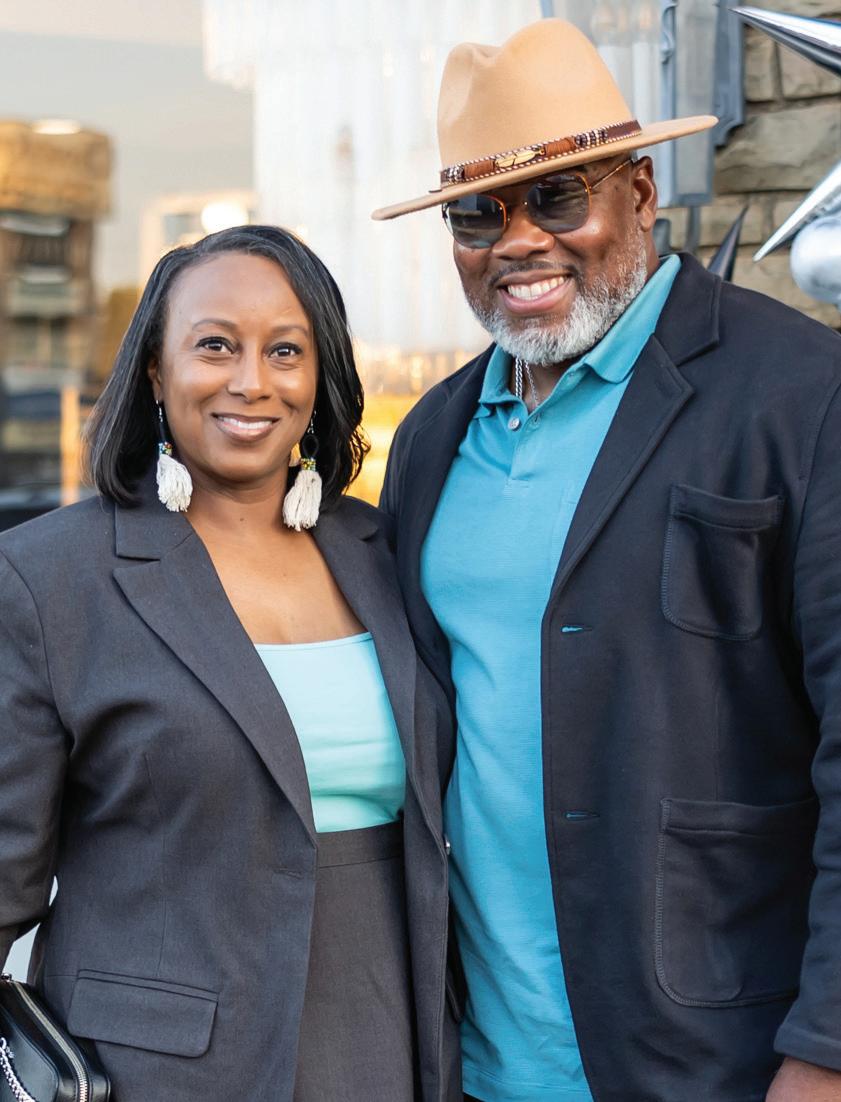
On Oct. 17, the American Society of Interior Designers (ASID), in partnership with Fort Worth Magazine, hosted its annual Shining Star Awards, recognizing the best-designed spaces of the year. The event took place at Ferguson Bath, Kitchen & Lighting Gallery, a stylish venue nestled in the heart of Fort Worth on 7th Street. Guests enjoyed a curated selection of hors d’oeuvres, a delightful signature cocktail, wine, and live music, as the evening brought together passionate home and design professionals eagerly awaiting the competition’s results.
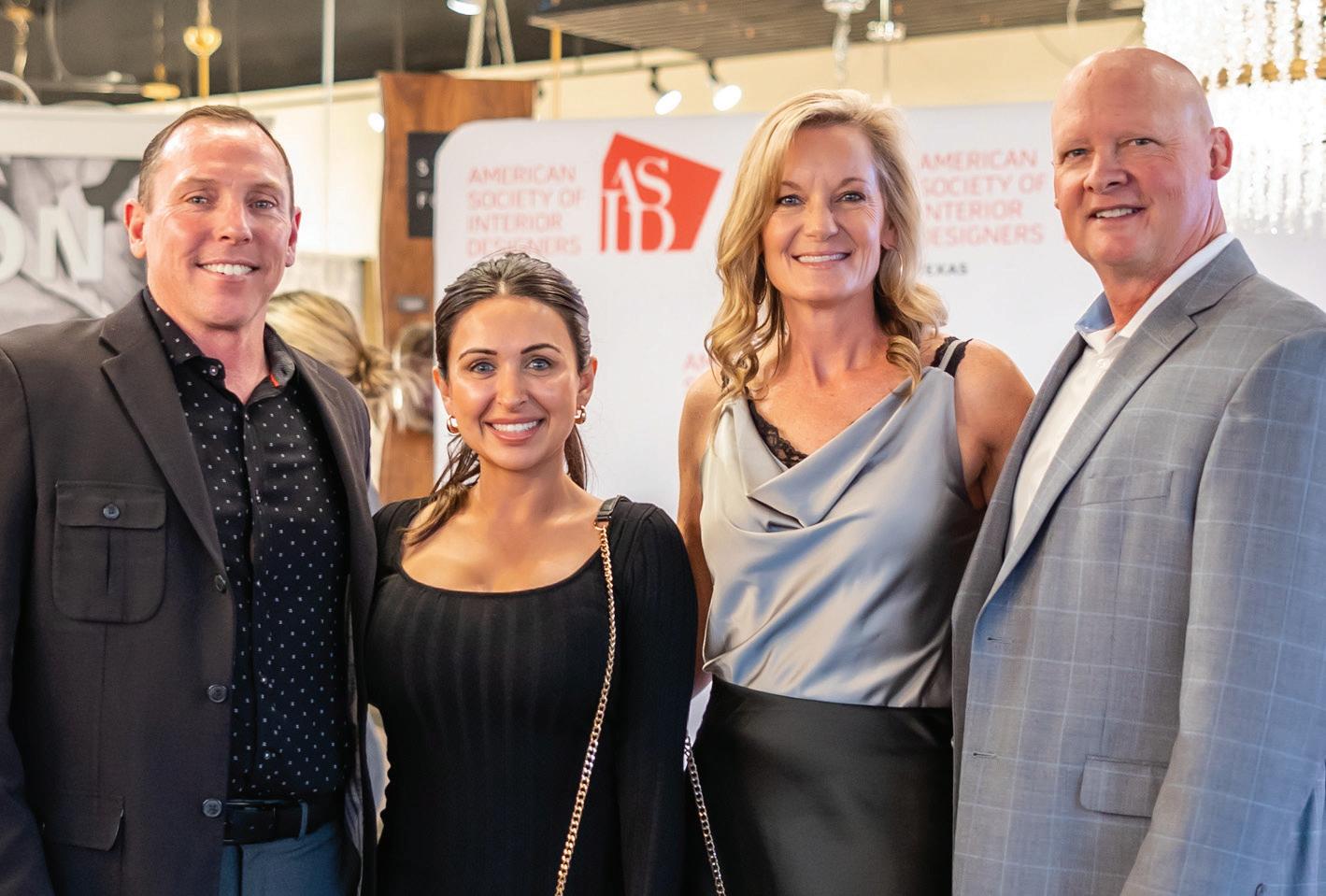






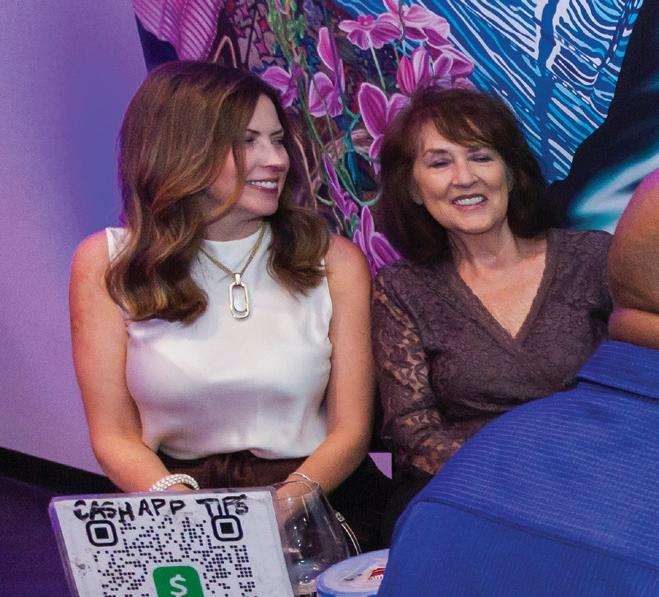
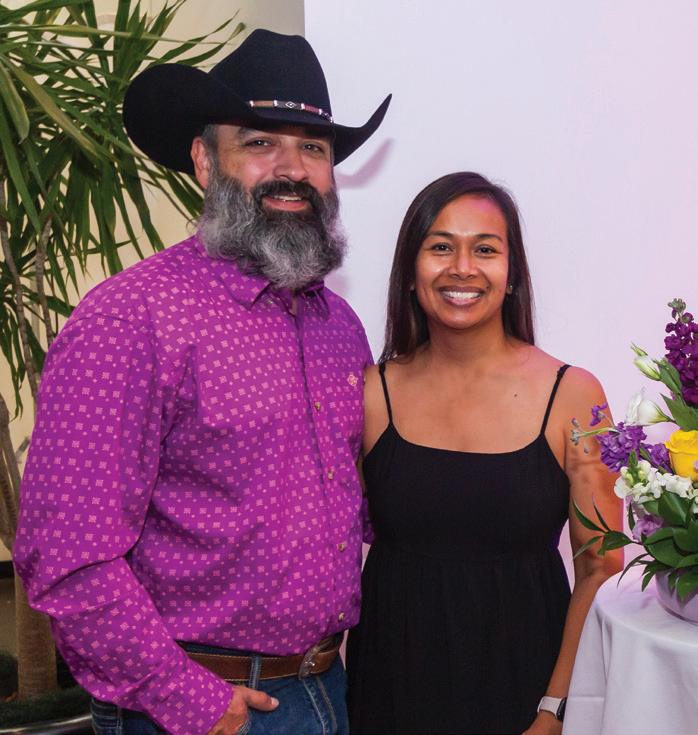
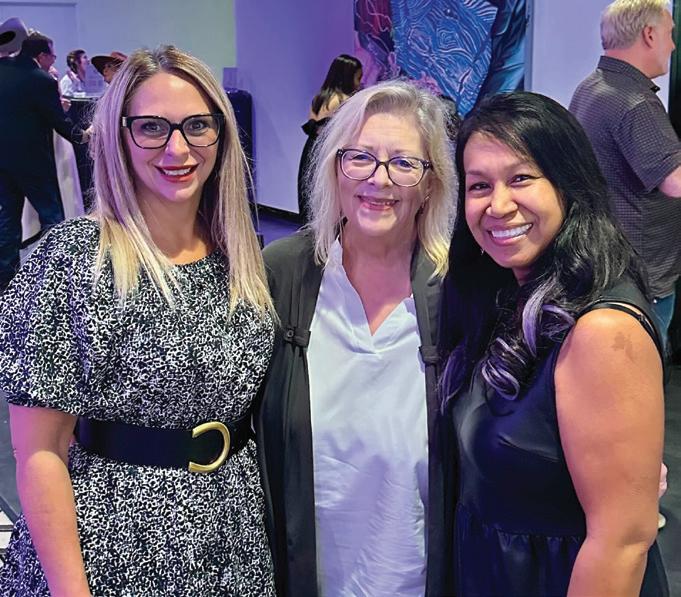
The VIP Bras for a Cause Calendar
Reveal is an exclusive event where bra makers, committee members, and top sponsors get the first glimpse of the 2025 calendar and unique bra designs. This highly anticipated occasion brings together the key contributors to the Bras for a Cause event, which supports Baylor Scott & White, Careity, and Cancer Care Services. Attendees enjoyed an intimate preview of the creative efforts that symbolize the fight against cancer, on Sept. 27, at 61 Osteria, while celebrating the collaboration and generosity of everyone involved.



$3,695,000
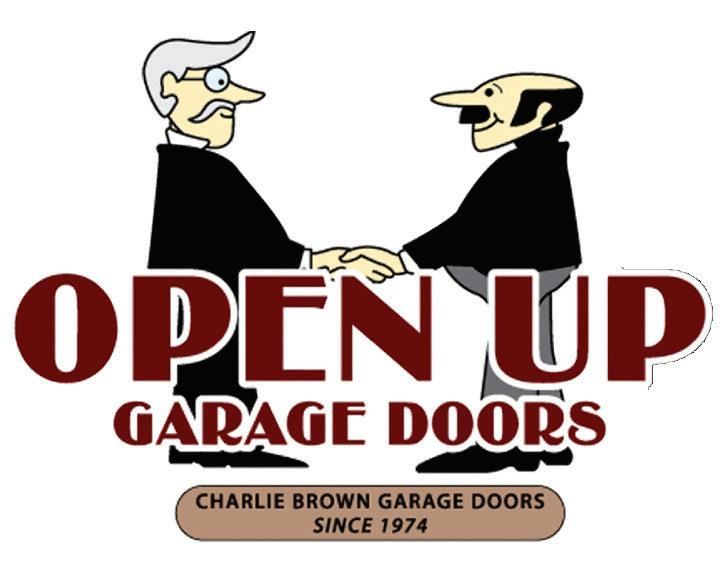
»
»
»
»


$2,550,000

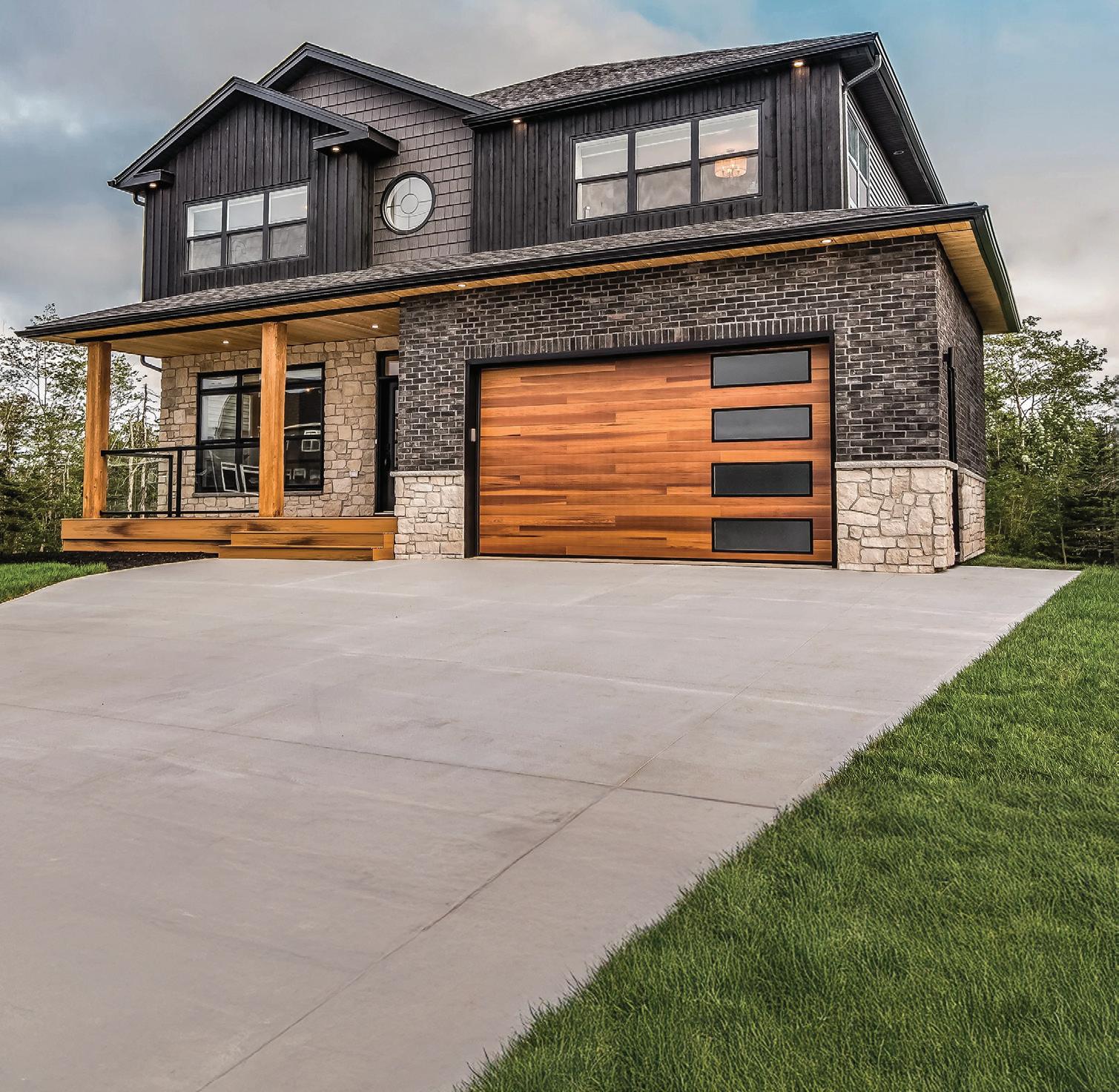

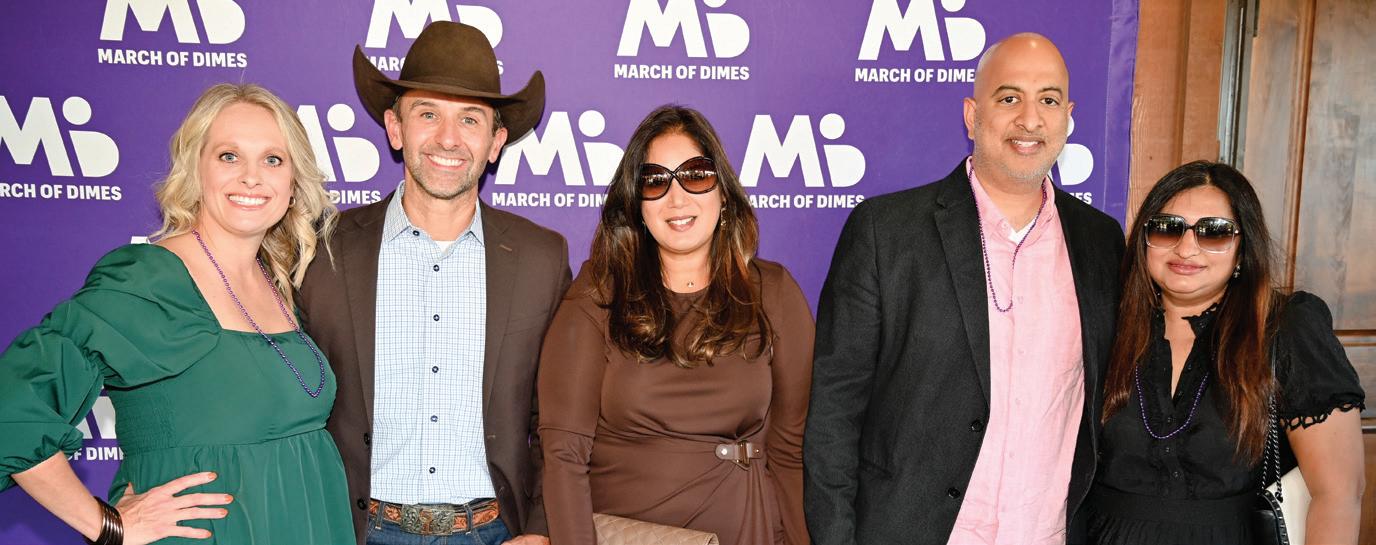

The March of Dimes Signature Chefs Auction on Sept. 25 combined fine dining with philanthropy, creating an evening that supports important research and programs to ensure healthier pregnancies and stronger babies. Guests enjoy signature dishes prepared by celebrated chefs while participating in a live auction featuring exclusive packages and experiences.

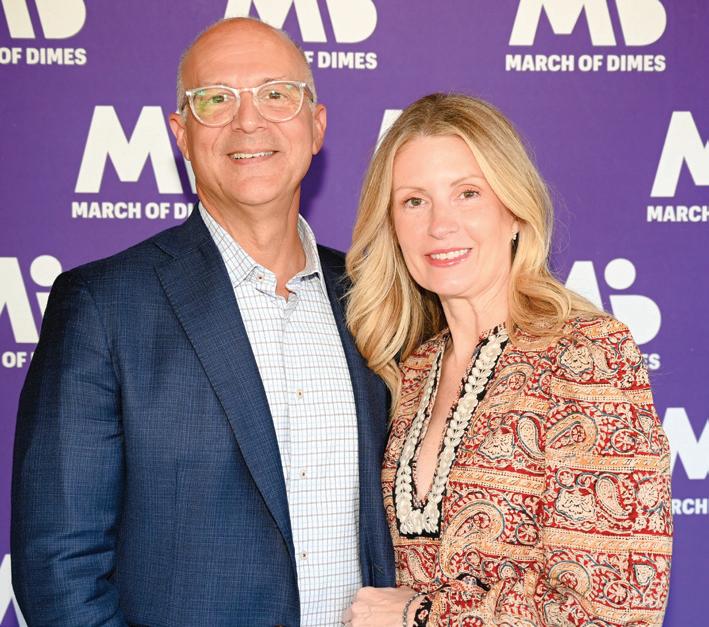
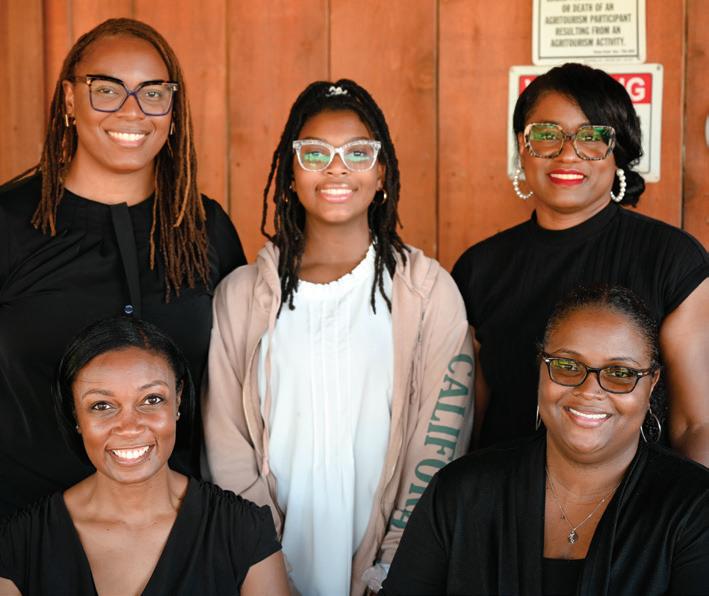


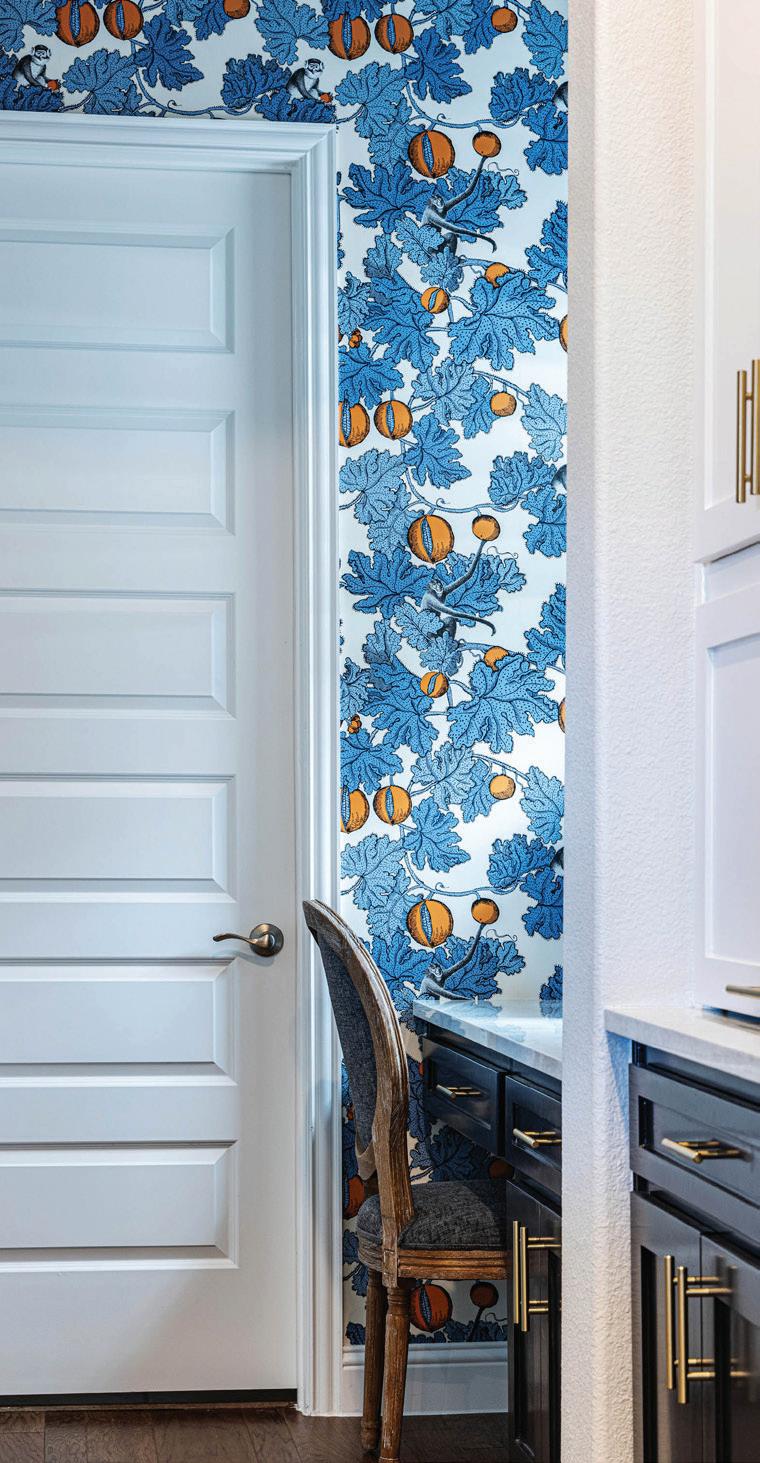
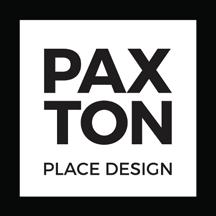


















































Philanthropy is one of the ways Fort Worth Magazine carries out its mission of celebrating Fort Worth and making it better.
During the past quarter of a century, Fort WorthMagazine has partnered with more than 225 different Tarrant County nonprofits, contributing over $16 million in cash and inkind donations.
Nov. 1
Wrangler and Wishes
Make-A-Wish
Omni Fort Worth
Nov. 1
An Artists’ Christmas Camp Fire
River Ranch
Stockyards
Nov. 1-4
18th Annual Lone Star Film Festival
Nov. 2
Hoot ‘n Holler ACH Child and Family Services River Ranch
Stockyards
Nov. 6
Education is a Girl’s Best Friend Foundation for the Young Women’s Leadership Academy
Grace
Nov. 7
Bring the Conversation to Light Luncheon
The Jordan Elizabeth Harris Foundation
Will Rogers Inn
Nov. 7
The Greatest Gift
Catalog Ever Annual Launch Party
Multiple Charities
The Welman Project
Nov. 8
IMPACT Dinner
Project 4031
Ashton Depot
Nov. 8
Bingo, Butterflies & Bubble Brunch a Wish with Wings Morningstar Activities Center
Nov. 12
National Philanthropy Day Luncheon
Association of Fundraising Professionals
Ridglea Country Club
Nov. 12
The Mayor’s International Dinner Fort Worth Sister Cities Fort Worth Convention Center
Nov. 14
Lights of Love Community Healthcare of Texas Western Towers
Nov. 16
Hope Gala
Community Storehouse
Charles Schwab
Nov. 17
Legends Concert Series
HSC Student Scholarships
McDavid Studio, Bass Performance Hall
Nov. 17
Crockpots for a Cause EmpathyHQ Hop Fusion
Nov. 22-Jan. 5 Lightscape Fort Worth Botanic Garden
PRESENTING SPONSOR Texas Oncology
MAIN STAGE SPONSOR
Higginbotham
MAIN ENTRANCE SPONSOR
The Dove Foundation by Stacey and Brian Dove
EXCHANGE AVE SUPPORTER
D&M Leasing Fort Worth | Stockyards Heritage Development Co.
Virginia & Tim Carter | Ronda & Walter Stucker
CATTLEPEN SUPPORTER
American Airlines | Cavender’s Boot City | Paul Dorman
TWO-STEP PARTNER
UT Southwestern Medical Center
PREMIUM TABLE SPONSOR
Andrews Distributing | Bank of Texas | Baylor Scott & White Fowlkes, Norman & Assoc. Landscape | Hire Up Sta ng
North Tarrant Surgical and Aesthetics | Ravnaas Family | Texas Health Resources
Tumbleweed Royalty | Wilks Development – Fort Worth Public Market
TABLE SPONSORS
Frost Bank | Texola | Bishop/Remualdo
Tonia Carr | Brandy Schwarz
SPECIAL GUESTS – 2024 VIPS
Darrell Hawkins | Blair & Andrew Ward
Mary Frances & Jim Wood and Jenny Crossland & Dr. Andre’ Marse, D.C. www.cowtownball.org
MEDIA SPONSORS
CBS Texas | Fort Worth Magazine
SPECIAL THANKS Inside Image Design Madison Sawyer, CBS Texas






































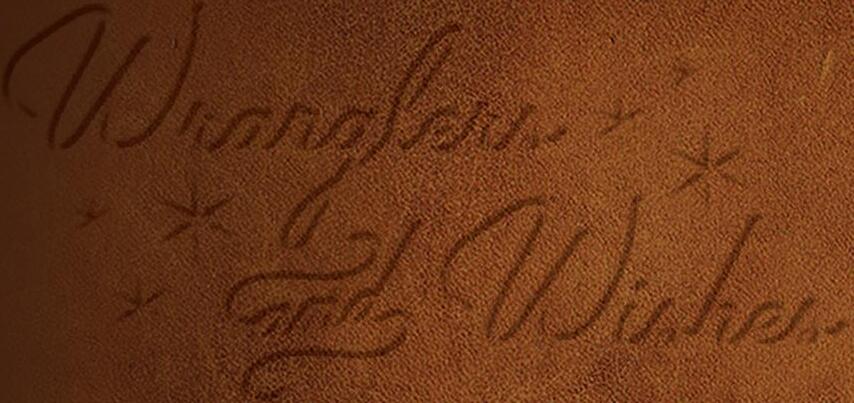







































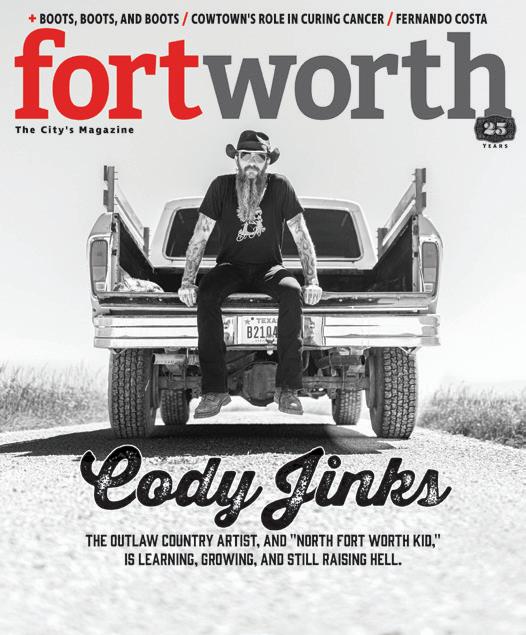
For over 25 years, we’ve had our ears to the ground, our eyes on the ball, and our fingers on the pulse of Fort Worth. This gives us an edge to deliver the city’s best lifestyle, business, and home content. Don’t miss out on anything Fort Worth. Subscribe now.


















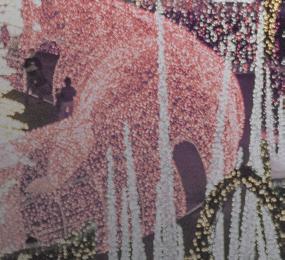








































An evening of cocktails, dinner, bidding, dancing and more! Proceeds will support the expansion of navigation services at the Joan Katz Cancer Resource Center at Baylor Scott & White All Saints Medical Center - Fort Worth. To learn more, scan the QR code or contact BTB@BSWHealth.org MAKE PLANS TO JOIN US FOR THE 14TH












OPTION 1
Scan to make a donation to any of our 26 local charities.
The Greatest Gift Catalog Ever and local charities are helping more than 280,000 Tarrant County neighbors with critical services like hunger and homelessness. We need your help. Please consider:
OPTION 2
Read about the charities and make a donation on the website, scan below.

OPTION 3
Venmo @Greatest-Gift-Catalog-Ever
Send $26 or more. Note preferred charity or leave blank to help them all.


Fall golden hour in Fort Worth is a sight to behold. Taken last year — at press, we have yet to have such a beautiful fall afternoon — by Darah Hubbard, this photo is a little bit of everything in downtown. In fact, one could use it for a Fort Worth-centric game of iSpy. From the Worthington to both, even if just barely, city center towers to Sundance Square Plaza and the very tip of the Tarrant County Courthouse, such a view can remind one of the incredible city we call home.
Get your photo on this page and win a $100 gift card to Fort Worth Camera. Just tag FortWorthMagazine (@fwtxmag) and Fort Worth Camera (@fwcamera) and use the hashtags #fwtxmag and #fwcamera on all your amazing Cowtown images.

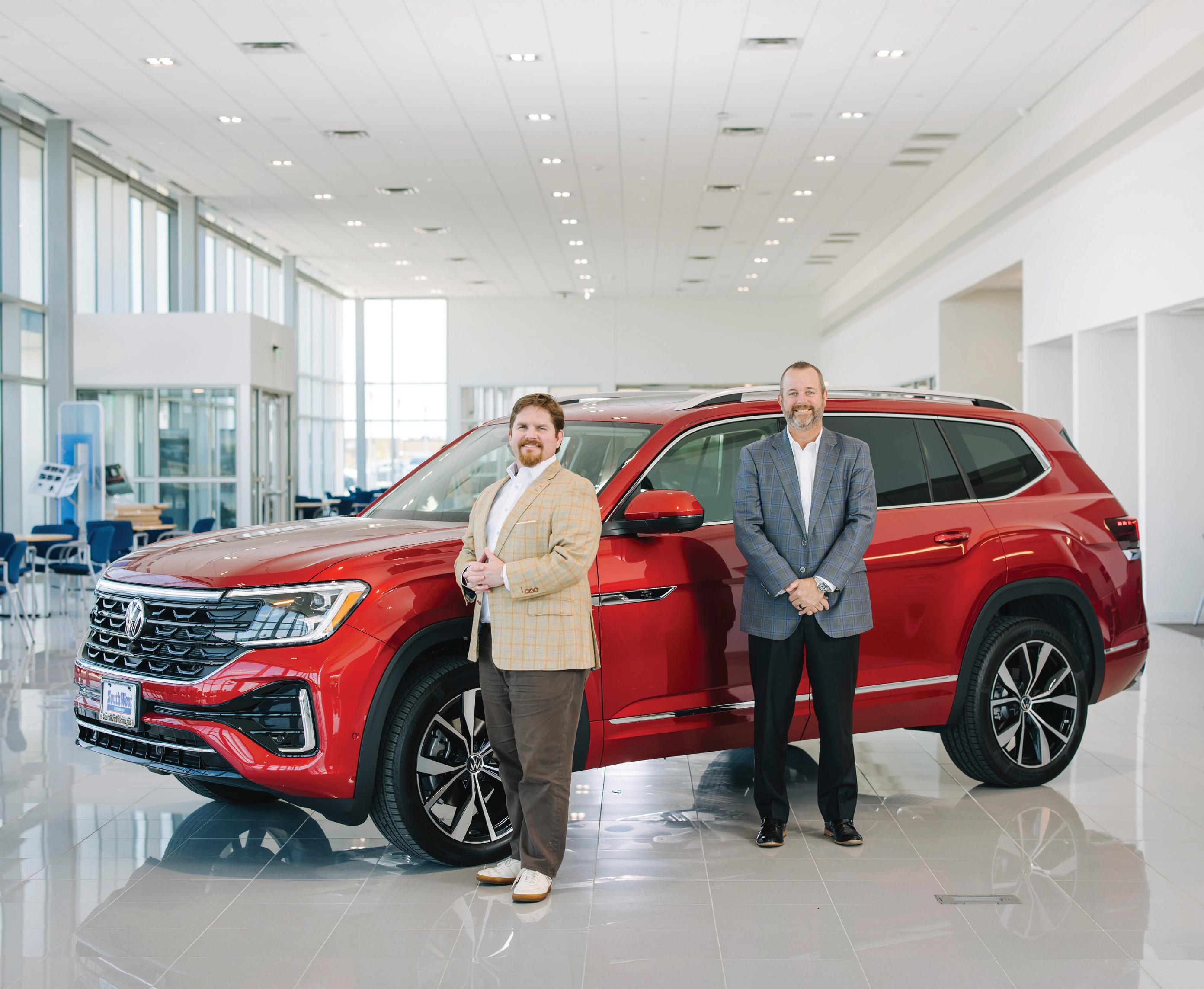




The day of the week determines what Moni Sagoo drives. Sagoo’s current fleet, all MercedesBenz vehicles from Park Place Motorcars Fort Worth, includes a China-blue 2024 Mercedes S63, a black 2024 Mercedes-Maybach S680, and a yellow 2024 Mercedes G63. “To get the most pleasure of driving all of these exquisite and special cars, I normally will drive each car for two days and then switch,” the Fort Worth resident says. Mercedes-Benz is his vehicle of choice for several compelling reasons: “Mercedes-Benz makes the most beautiful cars with a choice of special colors,” he says. “And the cars have advanced technology not found on other car brands.” It’s no wonder that the combination of luxurious interiors, exceptional comfort, and powerful performance keeps him coming back for more. “All of the cars are stunning and get
a lot of attention on the road,” he says. Sagoo’s nephew, Rajveer Sagoo, a TCU student, also gets lots of compliments on his 2024 Mercedes-AMG CLE53 coupe — definitely a head-turner with its sleek design and signature AMG grille.
“I have done business with Park Place Motorcars Fort Worth for more than 20 years, buying over 20 cars from them during that time period,” says Sagoo, pharmacist at Mira Vista Apothecary & Mercantile. “Park Place has impeccable service and a friendly staff. Plus, the ambiance of the dealership is always inviting and comfortable,” he says. “At Park Place they are experts in excellence because of the incredible buying experience they provide. They can complete the purchase within one hour after our car selections. That type of top-notch service is unheard of.”



